Backhousia angustifolia
Backhousia citriodora
Backhousia myrtifolia
Backhousia sciadophora
Baeckea diosmifolia
Baeckea frutescens
Baeckea imbricata
Baeckea linifolia
Baeckea utilis
Baloghia inophylla
Baloghia marmorata
Baloskion pallens
Baloskion stenocoleum
Baloskion tenuiculme
Baloskion tetraphyllum
Bambusa arnemica
Banksia aemulum
Banksia baxteri
Banksia blechnifolia
Banksia coccinea
Banksia cunninghamii
Banksia ericifolia
Banksia ericifolia subsp. macrantha
Banksia formosa
Banksia fraseri
Banksia ilicifolia
Banksia integrifolia subsp. compare
Banksia integrifolia subsp. integrifolia
Banksia integrifolia subsp. monticola
Banksia marginata
Banksia media
Banksia oblongifolia
Banksia paludosa
Banksia petiolaris
Banksia plagiocarpa
Banksia praemorsa
Banksia repens
Banksia robur
Banksia serrata
Banksia spinulosa subsp. collina
Banksia spinulosa subsp. hillii
Banksia spinulosa subsp. spinulosa
Banksia tenuis subsp. reptans
Banksia tenuis subsp. tenuis
Banksia undata subsp. splendens
Banksia undata subsp. undata
Barklya syringifolia
Barringtonia acutangula
Barringtonia asiatica
Barringtonia calyptrata
Bauera capitata
Bauera rubioides
Bauhinia binata
Bauhinia hookeri
Bauhinia malabarica
Bauhinia syringifolia
Backhousia angustifolia
Classification:
Class: Rosids
Order: Myrtales
Family: Myrtaceae
Genus: Is named in honour of James Backhouse; 1794-1869, who was an English nurseryman and botanist who first ventured to Tasmania. His interests included working with the poor, especially convicts, aboriginal welfare and Australian native flora.
Specie: From Angusta, which is Latin for narrow, and Folium, which is Latin for foliage. It usually refers leaves, which are narrow but not linear.
Sub specie:
Common Name: Curry Scented Myrtle.
Distribution:
Backhousia angustifolia is found south from Cairns to the upper Brisbane valley and Sundown National Park near Stanthorpe with only one record from New South Wales near Gravesend. It is rare throughout its natural range.
https://avh.ala.org.au/occurrences/search?taxa=backhousia+angustifolia+#tab_mapView
Habitat Aspect Climate:
Backhousia angustifolia prefer partial shade to dappled sun light. It grows in and adjacent to dry rainforests, sclerophyll forests or woodlands. The altitude ranges from 5 meters ASL to 760 meters ASL
The temperatures range from minus 4 degrees in July to 38 degrees in January.
The rainfall ranges from lows of 620mm to 2800mm average per annum.
Soil Requirements:
Backhousia angustifolia prefers deep, sandy loams, light fatty clays, medium clays or light silts to heavy silts. The soils are usually derived from decomposed brown basalts, black basalts, shales or metamorphic rocks. The soil’s pH ranges from 5pH to 6pH. It does not tolerate water logged soils. None saline soils to moderately saline soils are tolerated.
Height & Spread:
Wild Plants: 5m to 8m by 3m to 4m.
Characteristics:
Backhousia angustifolia grows as a single trunk tree to 8 meters but more often is multi trunked branching from near the ground. The trunk’s bark is mid grey to deep grey and deeply fissured on old trees. Branchlets or stems are finely fissured, pale grey to deep grey while juvenile branchlets are rough pale grey and olive green only at the apexes. The apexes are densely covered in short white pilose to puberulent hairs.
The elliptical to linear leaves are slightly falcate, glabrous and measure 20mm to 50mm in length by 3mm to 8mm in width. The petioles measure 1mm to 3mm in length. The bases are cuneate while the apexes are narrowing acute with pungent mucronate tip. The leaf margins are flat and entire. The discolourous leaves are a pale olive green on the upper lamina and slightly paler on the lower lamina. Juvenile leaves are a light bronze in colour and sparsely covered in short white pilose to puberulent hairs. The mid vein and lateral veins are indistinct but visible. There are 6 to 8 filiform stipules at the base of the petiole which measure 0.9 to 1mm in length. Oil dots are typically large on Backhousia angustifolia and emit a strong curry like scent when crushed hence its common name.
The inflorescences of Backhousia angustifolia are cymes born from the terminals. The peduncles and pedicels are glabrous. The peduncles measure 10mm to 30mm in length while the pedicels measure 1mm to 2mm in length. The 3 to 9 individual flowers measure 4mm to 5mm in diameter. The 5 white, orbicular sepals measure 1.5mm to 2mm in length by 2mm to 2.5mm in width. The 5 round petals measure 2mm to 2.5mm in length by 2mm to 2.5mm in width. The pale cream to creamy green hypanthium is ribbed and sparsely covered in white puberulent hairs. It measures 1.5mm to 2mm in length by 1.5mm to 2mm in diameter.
The numerous white stamens measure 4mm to 6mm in length.
The white style measures 2.5mm to 5mm in length while the ovary is glabrous. Flowering occurs from late October to early January.
The fruits of Backhousia angustifolia are globular capsule. The capsules measure 3mm in length by 2.5mm to 3mm in diameter. The pale green capsules turn a papery brown when ripe and contain several seeds. The calyx is persistent. The disc is marginally exserted when ripe. They remain on the tree for several months until they disintegrate or fall to the ground where they decompose. They disintegrate quicker in wet weather.
The linear rusty brown seeds measure 1.5mm in length by 1mm in diameter.
Wildlife:
Backhousia angustifolia is suitable for river bank erosion control but because of its slow initial growth, will need protection or support from other fast growing short lived specie like Acacia.
Backhousia angustifolia attracts numerous beetles and small butterflies when in flower. The native bees are also attracted to the flowers. Backhousia angustifolia’s trunk will support small orchids once the trees have gained sufficient height and the branches are of a suitable diameter.
Plants that we grew at Nana Glen were very popular with Blue wrens, Red back Wrens, red head Finch and Double bar finches over the years for nesting sites. This is probably because of the thick, rigid upright branch structure that suited them but was not easy from larger birds negotiate.
It is unknown whether the leaves have long term toxicity. However on the short term they have no side effects or symptoms when consumed in small amounts. I have used a few leaves placed between fish fillets when cooking to give a sweet mild aroma and taste to the fish. I have chewed the leaves over the past 20 years and admit it is a favourite spice and condiment of mine. This was a regular habit of mine as our first shrub was planted outside my bedroom window and between the house and the tractor shed.
Cultivation:
Backhousia angustifolia is not spectacularly beautiful small tree or tall narrow shrub but warrants a special place in the perfumed garden. It rarely exceeds 5 meters in cultivation and the leaves give of a pleasant curry aroma when mown over or brushed against. It looks its best as a plant which is blending into the bush rather than a specimen plant. Often branches that touch the ground will sucker and develop new trees some distance away. I have also known shrubs to root sucker some distance away from the parent trees. They can be planted close to buildings and underground services without any problems.
It can be regularly tip pruned to encourage a large bushy shrub or a large hedge row.
The leaves can be harvested for pot puree or crushed to emit a curry aniseed aroma throughout the home.
It makes excellent dense dense yet airy shrub which is ideal as a wildlife corridor for smaller birds.
Propagation:
Seeds:
Collecting seeds from mature trees is easy on garden specimens as they are held on the tree for a long period. The fresh seeds need to be pinched out of the capsules and then they can be sown directly into a seed raising mix. Cover them to a depth of 1mm. Seeds maybe erratic in germination but a strike rate of over 50mm is usually attained.
When the seedlings are 20mm to 30mm tall, prick them out and plant them into 50mm native tubes using a good quality mix.
Once the seedlings reach 100mm to 150mm in height plant them out into their permanent position. Mass plantings can be achieved with spacing of 3 meters to 4 meters for a hedge row.
Cuttings:
Use 50mm long tips when growing from Cuttings. The best time to take them is the middle of spring.
1 prepare the cutting mix by adding one third sharp clean river sand, one third peat and one third perlite. These ingredients are sterile,
2 Select good material from non diseased plants,
3 Select semi green stems for cuttings. Look for a stem with two or three nodes,
4 Place the cutting on a flat, hard surface, and make a clean slice through the middle of the lower node on an angle towards the base, with a sterilized sharp knife or razor blade. – This scarification of the node will increase the chances of roots emerging from this spot. Now remove all but one or two the leaves, leaving the apex leaves in tact. If the leaves are very large in proportion to the stem, cut off the apical halves.
5 Some plants root easily, but a rooting hormone can help others by stimulating the cutting into sending out new roots. Fill a saucer with water, and place some rooting hormone into another container like a bottle top. Dip the node end of the cutting into the water and then into the rooting hormone. Tap off any excess hormone,
6 Use a small dipple stick or old pencil to poke a hole into the soilless potting mix. Ensure the hole is slightly larger than the stem diameter and be careful not to wipe the rooting hormone off the cuttings base, place the cuttings in a pattern ensuring the cuttings are not touching each other,
7 I like to place the pots in Plastic bags to help maintain temperature and moisture. Place in a semi shaded place like under 50mm shade cloth.
8 When the cuttings have struck, open the bag to allow air circulation for a few days to a week,
9 Once hardened off remove the cuttings from the bag and allow to further hardening for a few more days,
10 Transplant into a good potting mix to grow
Layering:
Plants can also be renewed by layering. This is achieved by nicking a branch that is close to the ground and pegging it so that the nick is held just below the ground level ground level or wrapped in a black plastic bag with a seedling mix with 30mm perlite added. Once the roots have developed sever the branch and pot on as normal. Water and transfer to 50mm shade until the plant has re-established itself.
Fertilize using Seaweed, fish emulsion or organic chicken pellets soaked in water on an alternate basis. Fertilize every two months until the plants are established then twice annually in early September or March to maintain health, vitality and better flowering.
Further Comments from Readers:
“Hi reader, it seems you use The Bible of Botany a lot. That’s great as we have great pleasure in bringing it to you! It’s a little awkward for us to ask, but our first aim is to purchase land approximately 1,600 hectares to link several parcels of N.P. into one at The Pinnacles NSW Australia, but we need your help. We’re not salespeople. We’re amateur botanists who have dedicated over 30 years to saving the environment in a practical way. We depend on donations to reach our goal. If you donate just $5, the price of your coffee this Sunday, We can help to keep the planet alive in a real way and continue to bring you regular updates and features on Australian plants all in one Botanical Bible. Any support is greatly appreciated. Thank you.”
In the spirit of reconciliation we acknowledge the Bundjalung, Gumbaynggirr and Yaegl and all aboriginal nations throughout Australia and their connections to land, sea and community. We pay our respect to their Elders past, present and future for the pleasures we have gained.
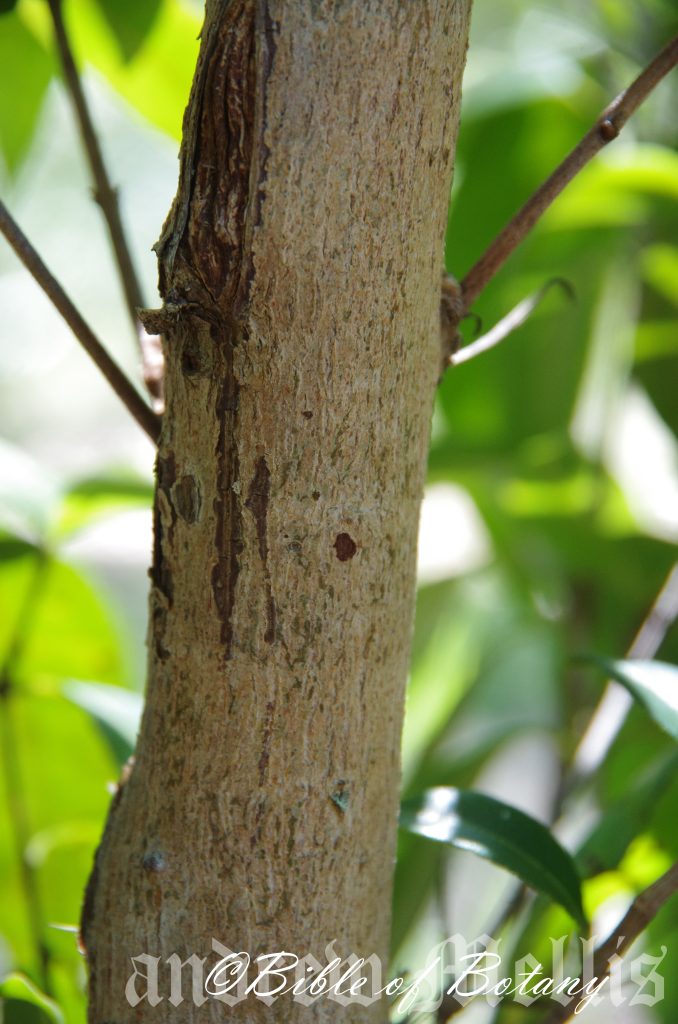
Author’s Garden The Pinnacles NSW
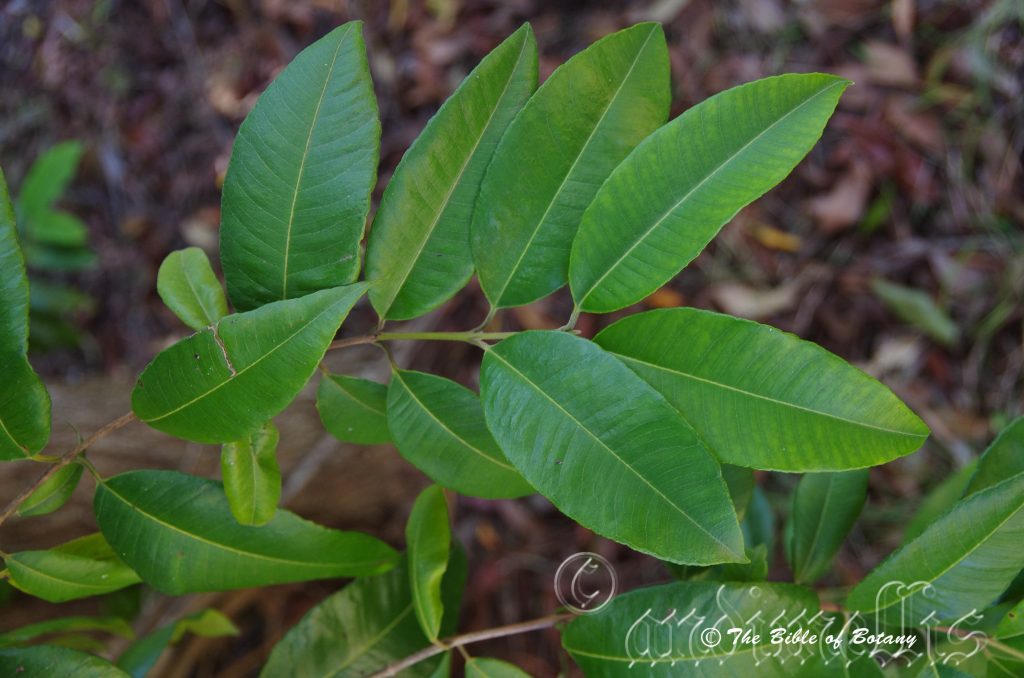
Nana Glen NSW

Nana Glen NSW

Nana Glen NSW
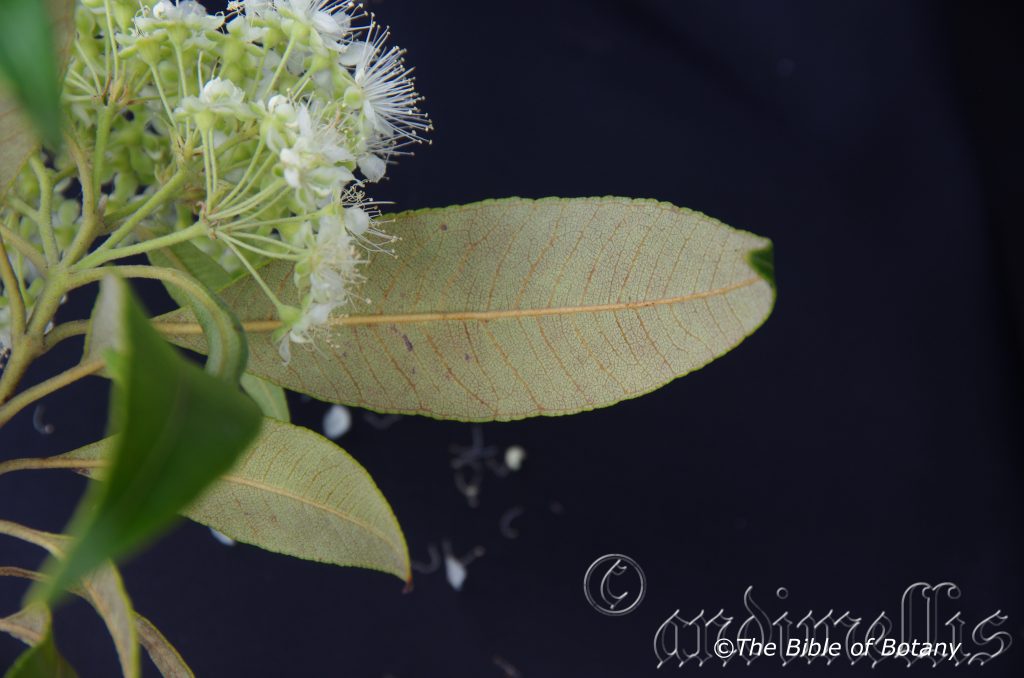
Grafton NSW
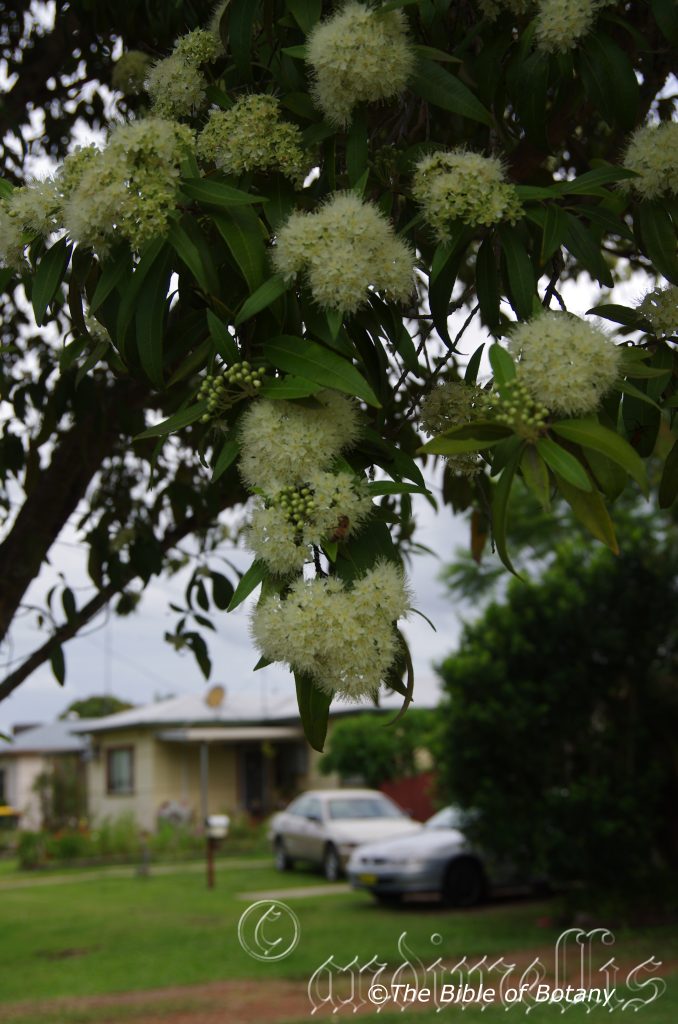
Grafton NSW
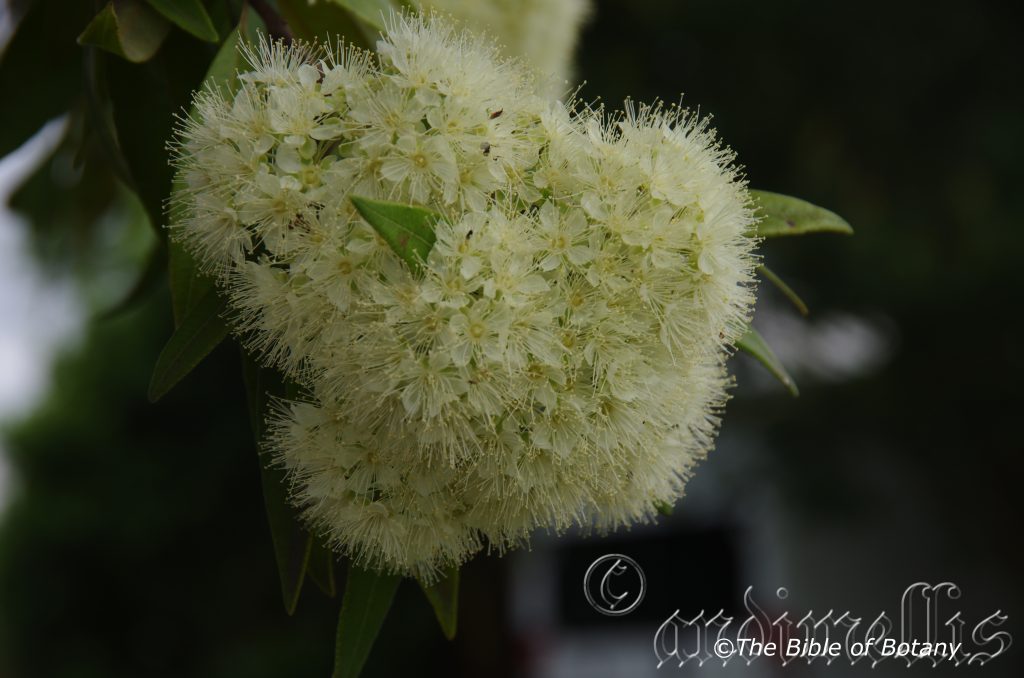
Grafton NSW
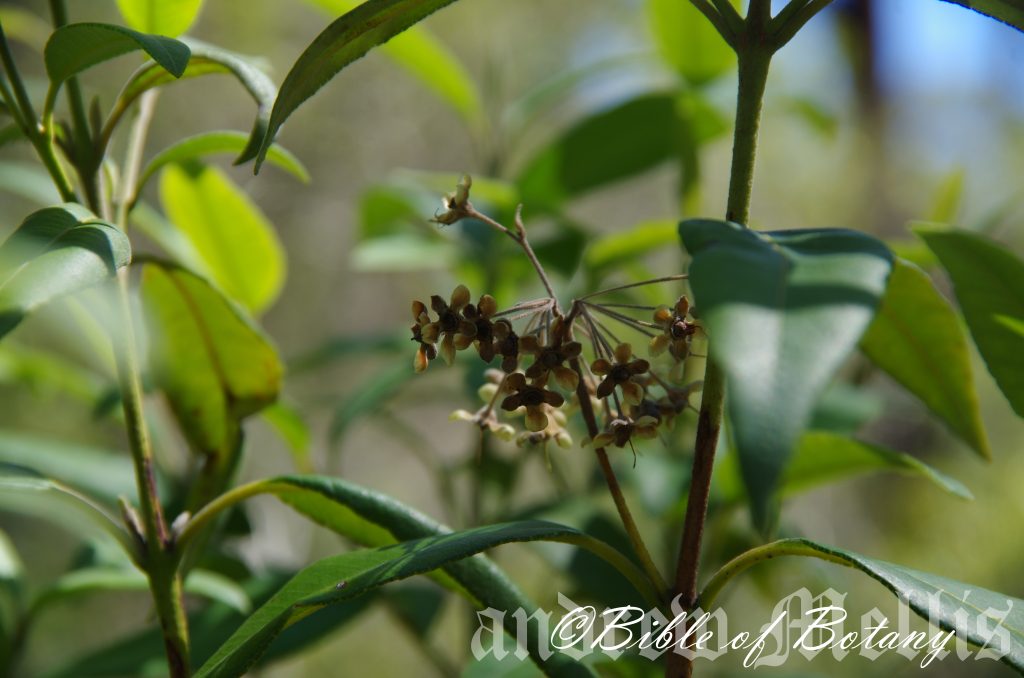
Author’s Garden The Pinnacles NSW
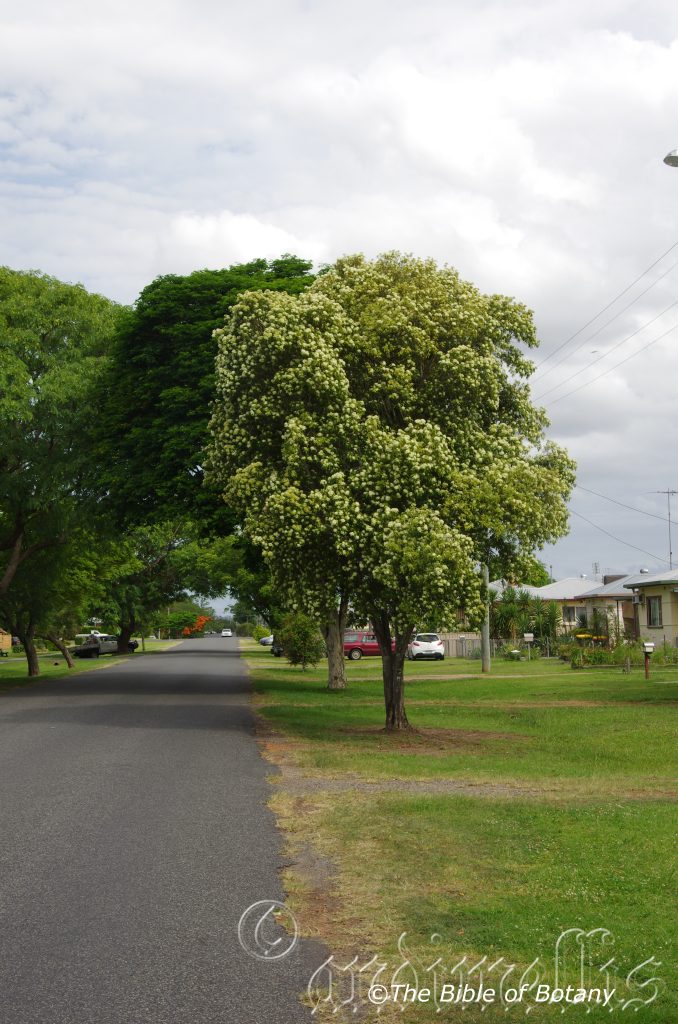
Grafton NSW
Backhousia citriodora
Classification:
Class: Rosids
Order: Myrtales
Family: Myrtaceae
Genus: Is named in honour of James Backhouse; 1794-1869, who was an English nurseryman and botanist who first ventured to Tasmania. His interests included working with the poor, especially convicts, aboriginal welfare and Australian native flora.
Specie: From Citrinus, which is Latinized from the old Anglo-French for yellow and later Citrinus, which is Latin for Citrus and Odor, which is Latin for an odour, smell or scent. It refers to plant’s leaves having a lemon scent.
Sub specie:
Common Name: Lemon Scented Myrtle.
Distribution:
Backhousia citriodora is found south from Cairns to north of Brisbane. It is found on and east of the Great Dividing Range.
https://avh.ala.org.au/occurrences/search?taxa=Backhousia+citriodora+#tab_mapView
Habitat Aspect Climate:
Backhousia citriodora prefers partial shade to dappled sun light. It grows in dry rainforests, moist subtropical rain forests or moist riparian forest. The altitude ranges from 5 meters ASL to 500 meters ASL
The temperatures range from 4 degrees in July to 34 degrees in January.
The rainfall ranges from lows of 850mm to 2800mm average per annum.
Soil Requirements:
Backhousia citriodora prefers deep, sandy loams, light fatty clays to medium clays. The soils are usually derived from decomposed brown basalts, black basalts, shales, metamorphic rocks or alluvial deposits. The soil’s pH ranges from 5pH to 6.5pH. It does not tolerate water logged soils but prefers even soil moisture throughout the year. None saline soils to moderately saline soils are tolerated.
Height & Spread:
Wild Plants: 15m to 21m by 5m to 8m.
Characteristics:
Backhousia citriodora grows as a single trunk tree to 21 meters in height with a dense canopy. The bark is grey finely fissured on older trees and usually has evidence of some lichen growth. Juvenile branchlets are green at first and covered in short white pilose to puberulent hairs.
The ovate to elliptical-lanceolate leaves of Backhousia citriodora are glabrous and measure 60mm to 100mm in length by 20mm to 40mm width. The petioles measure 6mm to 10mm in length. The bases are rounded to cuneate while the apexes are broadly acuminate. The discolourous leaves are pale blue-green, pale grey-green to mid green and glabrous on the upper laminas and paler on the lower laminas. The leaf margins have a slight undulation and a few very fine teeth. Young leaves are a pale bronze in colour and moderately to densely covered on short white pubescent or sericeous hairs. The mid vein and lateral veins are prominent on the lower lamina and visible from the upper lamina. The numerous oil dots are large.
The inflorescences of Backhousia citriodora are simple cymes born from the terminal leaf axis. The peduncles measure 22mm to 23mm in length. Individual flowers measure 15mm to 22mm in diameter. The 5 pale creamy–green sepals measure 1.5mm to 2.5mm in diameter. The 5 white, orbicular petals measure 4mm to 5mm in length by 4mm to 5mm diameter.
The numerous white stamens measure 7mm to10mm in length.
The style measures 6mm to 9mm in length while the ovary is glabrous. The flowers appear from early November to December.
The fruits of Backhousia citriodora are globular capsule. The capsules measure 4mm in length by 3.5mm to 4mm in diameter. The pale green capsules turn a papery brown when ripe and contain several seeds. The calyx is persistent. The disc is marginally exserted when ripe. They remain on the tree for several moths until they disintegrate or fall to the ground where they decompose. They disintegrate quicker in wet weather.
The linear rusty brown seeds measure 2mm in length by 1mm in diameter.
Wildlife:
Backhousia citriodora is suitable for river bank erosion control but because of its slow initial growth will need some protection or support from other fast growing short lived specie like Acacia.
Backhousia citriodora attracts numerous beetles and small butterflies when in flower. The native bees are also attracted to the flowers. Backhousia citriodora trunk supports small orchids and other small epiphytic plants like Pyrossia rupestre.
They have been the site of several birds’ nests over the years all of which were located after the young had fledged and flown the nest.
Cultivation:
Backhousia citriodora is a beautiful medium tree that looks great in dappled light with its green foliage and consistent heavy flowering every summer. Backhousia citriodora holds its branches almost to the ground when grown in the garden as a shrub even in full sun. In cultivation it will grow from 8 meters to 12 meters in height in height by 4 meters to 5 meters in diameter in diameter when grown as a multi trunk shrub in the open. The leaves give off a pleasant lemon aroma when mown over or crushed. It looks at its best as a specimen plant standing alone or in small groups of three in a park like setting.
Often branches that touch the ground will sucker and develop new trees some distance away. I have several trees that have sent up new trees from root suckers 10 meters from the original plant. This appears to be more prevalent where conditions are favourable and where the plants have been tip pruned early in life so that they grow as shrubs. TIt can be regularly tip pruned to encourage a large bushy shrub effect.
The leaves can be harvested for pot puree or crushed to emit a lemon scent throughout the home.
Backhousia citriodora make excellent pot plants for verandahs, courtyards and around swimming pools for several years due to their slow growth in their early stages.
Young leaves can be dried, away from direct sunlight or used fresh as a cooking substitute on fish. They can also be dried and used to replace lemon as a tea or used in salad dressings. Once the leaves are dried I place them into a blender and give them a quick twist in the blender to cut them up. I mean quick just on and off.
Propagation:
Seeds:
Collecting seeds from mature trees is easy on garden specimens as they are held on the tree for a long period. The fresh seeds need to be pinched out of the capsules and then they can be sown directly into a seed raising mix. Cover them to a depth of 3mm. Seeds maybe erratic in germination but a strike rate of over 50mm is usually attained.
When the seedlings are 20 to 30 mm tall, prick them out and plant them into 50mm native tubes using a good quality mix.
Fertilize using Seaweed, fish emulsion or organic chicken pellets soaked in water and apply the liquid on an alternate basis. Fertilize every month months.
Once the seedlings reach 100mm to 150mm in height plant them out into their permanent position. Mass plantings can be achieved with spacing of 5 meters to 6 meters for a rain forest look or 8 meters to 10 meters in a park situation.
Cuttings:
Use 50mm long tips when growing from Cuttings. The best time to take them is the middle of spring.
1 prepare the cutting mix by adding one third sharp clean river sand, one third peat and one third perlite. These ingredients are sterile,
2 Select good material from non diseased plants,
3 Select semi green stems for cuttings. Look for a stem with two or three nodes,
4 Place the cutting on a flat, hard surface, and make a clean slice through the middle of the lower node on an angle towards the base, with a sterilized sharp knife or razor blade. – This scarification of the node will increase the chances of roots emerging from this spot. Now remove all but one or two the leaves, leaving the apex leaves in tact. If the leaves are very large in proportion to the stem, cut off the apical halves.
5 Some plants root easily, but a rooting hormone can help others by stimulating the cutting into sending out new roots. Fill a saucer with water, and place some rooting hormone into another container like a bottle top. Dip the node end of the cutting into the water and then into the rooting hormone. Tap off any excess hormone,
6 Use a small dipple stick or old pencil to poke a hole into the soilless potting mix. Ensure the hole is slightly larger than the stem diameter and be careful not to wipe the rooting hormone off the cuttings base, place the cuttings in a pattern ensuring the cuttings are not touching each other,
7 I like to place the pots in Plastic bags to help maintain temperature and moisture. Place in a semi shaded place like under 50mm shade cloth.
8 When the cuttings have struck, open the bag to allow air circulation for a few days to a week,
9 Once hardened off remove the cuttings from the bag and allow to further hardening for a few more days,
10 Transplant into a good potting mix to grow
Layering:
Plants can also be renewed by layering. This is achieved by nicking a branch that is close to the ground and pegging it so that the nick is held just below the ground level ground level or wrapped in a black plastic bag with a seedling mix with 30mm perlite added. Once the roots have developed sever the branch and pot on as normal. Water and transfer to 50mm shade until the plant has re-established itself.
Fertilize using Seaweed, fish emulsion or organic chicken pellets soaked in water on an alternate basis. Fertilize every two months until the plants are established then twice annually in early September or March to maintain health, vitality and better flowering.
Further Comments from Readers:
“Hi reader, it seems you use The Bible of Botany a lot. That’s great as we have great pleasure in bringing it to you! It’s a little awkward for us to ask, but our first aim is to purchase land approximately 1,600 hectares to link several parcels of N.P. into one at The Pinnacles NSW Australia, but we need your help. We’re not salespeople. We’re amateur botanists who have dedicated over 30 years to saving the environment in a practical way. We depend on donations to reach our goal. If you donate just $5, the price of your coffee this Sunday, We can help to keep the planet alive in a real way and continue to bring you regular updates and features on Australian plants all in one Botanical Bible. Any support is greatly appreciated. Thank you.”
In the spirit of reconciliation we acknowledge the Bundjalung, Gumbaynggirr and Yaegl and all aboriginal nations throughout Australia and their connections to land, sea and community. We pay our respect to their Elders past, present and future for the pleasures we have gained.
Backhousia leptopetala
Classification:
Unranked: Eudicots
Unranked: Rosids
Order: Myrtales
Family: Myrtaceae
Genus: From Khoris, which is Ancient Greek for to separate and Karpós, which is Ancient Greek for a fruit. It refers to the fruits which appear to be disjunct along the flowering stems.
Specie: From Leptós, which is Ancient Greek for delicate, fine or slender and Petalon, which is Ancient Greek for a petal. It refers to petals, which are long and slender.
Sub specie:
Common Name: Brown Myrtle or Brush Turpentine.
Distribution:
Backhousia leptopetala is restricted to a narrow zone from the coast to the Great Dividing Range south from the Brisbane Valley in southern Queensland to Stanwell Park in central coastal New South Wales.
https://avh.ala.org.au/occurrences/search?taxa=Backhousia+leptopetala+#tab_mapView
Habitat Aspect Climate:
Backhousia leptopetala prefer full sun to light dappled shade. It grows on poorer soils adjacent to warm sub-tropical rainforests and littoral rainforest. It is found in moist riparian zones, dry riverine areas or s in depressions on ridge tops. The altitude ranges from 10 meters ASL to 250 meters ASL.
The temperatures range from minus 1 degree in August to 36 degrees in January.
The rainfall ranges from lows of 1000mm to an average of 1600mm annually.
Soil Requirements:
Backhousia leptopetala prefers to grow on sandy loams to rocky light clays or medium clays. The soils are derived from decomposed sandstone, shale or metamorphic rocks. The soils pH ranges from 4.5pH to 5.5pH. It does not tolerate water logged soils though the plants in riverine gullies may experience periodic inundations for short periods. Non saline soils to moderately saline soils are tolerated.
Height & Spread:
Wild Plants: 5m to 20m by 4m to 15m.
Characteristics:
Backhousia leptopetala will grow as a large shrub where soils are poor and environmental conditions are harsh but as a tree under normal conditions. The bark is rough to flaky, dark brown to greyish brown and furrowed on large specimens. The bark on the branches and branchlets are pale grey and glabrous. The juvenile, coppice and new growth are pale grass-green to grass-green with a pinkish to pinkish-red tinge and covered in rusty-red to rusty-orange tomentose hairs.
Backhousia leptopetala’s opposite leaves are ovate to elliptical and measure 58mm to 150mm in length by 16mm to 60mm in width. The petioles are pale grass-green to grass-green with a pinkish to pinkish-red tinge and covered in rusty-red to rusty-orange tomentose hairs and measure 3mm to 10mm in length. The bases are cuneate to round while the apexes are acuminate. The discolourous laminas are sea-green to a deep grass-green, glabrous and dull on the upper lamina while the lower lamina is much paler to greyish-white and sparsely to moderately covered in pale grey or pale rusty-red pubescent hairs. The laminas are flat, slightly to moderately undulating and decurve downwards near the apexes. The margins are minutely crenate and slightly recurved. The mid vein is strongly prominent on the lower laminas while the lateral veins are slightly prominent on the lower laminas. Both the mid vein and lateral veins visible from the upper laminas. Oil glands are numerous distinct and irregularly positioned and shaped.
The inflorescence of Backhousia leptopetala are born on peduncles from the leaf axils. The peduncles measure 15mm to 30mm in length while the individual flowers in the head are sessile. The cream petals are minute and are covered in rusty tomentose hairs.
The numerous cream stamens measure 4mm to 8mm in length.
The cream style measures 5mm to 10mm in length. The flowers appear from July to September.
Backhousia leptopetala fruits are ovoidal capsules. The green capsules are glabrous and turn reddish-brown when ripe and remain on the trees for a long period. The heads measure 10mm to 15mm in diameter. The individual capsules are free from each other and measure 2mm to 4mm in length. The style is persistent for an extended period on the ripe capsules.
Wildlife:
Backhousia leptopetala flowers are very popular among insectivorous birds and pollen eating flies, bees, and butterflies.
Cultivation:
Backhousia leptopetala would make very good accent tree in front of low set or two or three story commercial, industrial sheds or school buildings where they will break up hard rigid architectural lines and give warmth and breadth to a building. Their twisted to deeply furrowed trunks give character to any place where formal lines exist. In cultivation it will grow 10 meters to 15 meters in height by 8 meters to 12 meters in diameter. It can be cut back severely in its 4th or 5th year to promote a large bushy shrub where coppice growth, will predominate over a single trunk.
Try using them in a court yard where the only other feature is a large rock, stump or formal or informal frog or fish pond. Next to such features their trunks increase the informality of the entrance. I am surprised that it has never been used in commercial entrances and foyers to break the ice and give a feeling of business as usual but somehow make the business more relaxing.
It should be planted in a position where they can be viewed as a complete tree. TIt is best used in front of small areas of bush so their umbrella shape can be contrasted against those trees in the background. Close to paths or the house will lose this affect however if you want them where they can be viewed regularly place them centrally in the middle of an informal bed. It is ideal in medium to large rockeries or a vehicular turn around as the main feature plant. Here it is best planted as a single specimen to create strong dominant look or in small groups to give an expansive park scenario. If it is surrounded by shorter plants with fine foliage and multi-coloured flowers it will dominate at the center giving an expansive look to the bed especially when they are in flower. This is one plant that benefits from high exposure. Its smaller size and wide spread enables this to be achieved to great effect in larger gardens.
Propagation:
Seeds: It is easy to grow from fresh seeds. The seeds can be sown directly into trays using a fine porous mix. Place the trays in a warm position under 30mm shade and keep moist not wet. Seeds usually germinate in 10 to 30 days.
When the seedlings reach the three to four leaf stages, prick them out and plant them into 75mm native tubes using a good organic mix.
Once the seedlings reach 150mm to 200mm in height nip the tips out and plant them out into their permanent position.
Where mass plantings of Backhousia leptopetala are required, as a feature tree plant them at 8 meter to 20 meter centers or where dense hedges are required plant them at 6 meter to 8 meter centers. As hedges and screens go they will need regular pruning to maintain the multi stems or they may try to send a leading stem out.
Fertilize using Seaweed, fish emulsion or organic chicken pellets soaked in water on an alternate basis. Fertilize every two months until the plants are established then annually in early September or March to maintain health, vitality and better flowering.
Further Comments from Readers:
“Hi reader, it seems you use The Bible of Botany a lot. That’s great as we have great pleasure in bringing it to you! It’s a little awkward for us to ask, but our first aim is to purchase land approximately 1,600 hectares to link several parcels of N.P. into one at The Pinnacles NSW Australia, but we need your help. We’re not salespeople. We’re amateur botanists who have dedicated over 30 years to saving the environment in a practical way. We depend on donations to reach our goal. If you donate just $5, the price of your coffee this Sunday, We can help to keep the planet alive in a real way and continue to bring you regular updates and features on Australian plants all in one Botanical Bible. Any support is greatly appreciated. Thank you.”
In the spirit of reconciliation we acknowledge the Bundjalung, Gumbaynggirr and Yaegl and all aboriginal nations throughout Australia and their connections to land, sea and community. We pay our respect to their Elders past, present and future for the pleasures we have gained.
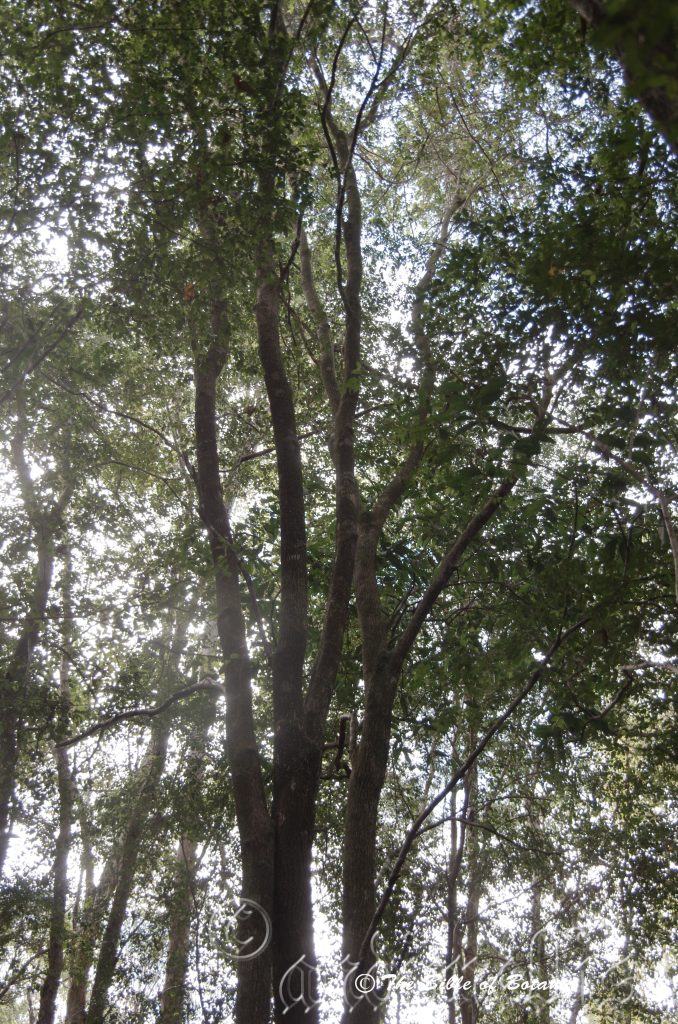
Nana Glen Qld.
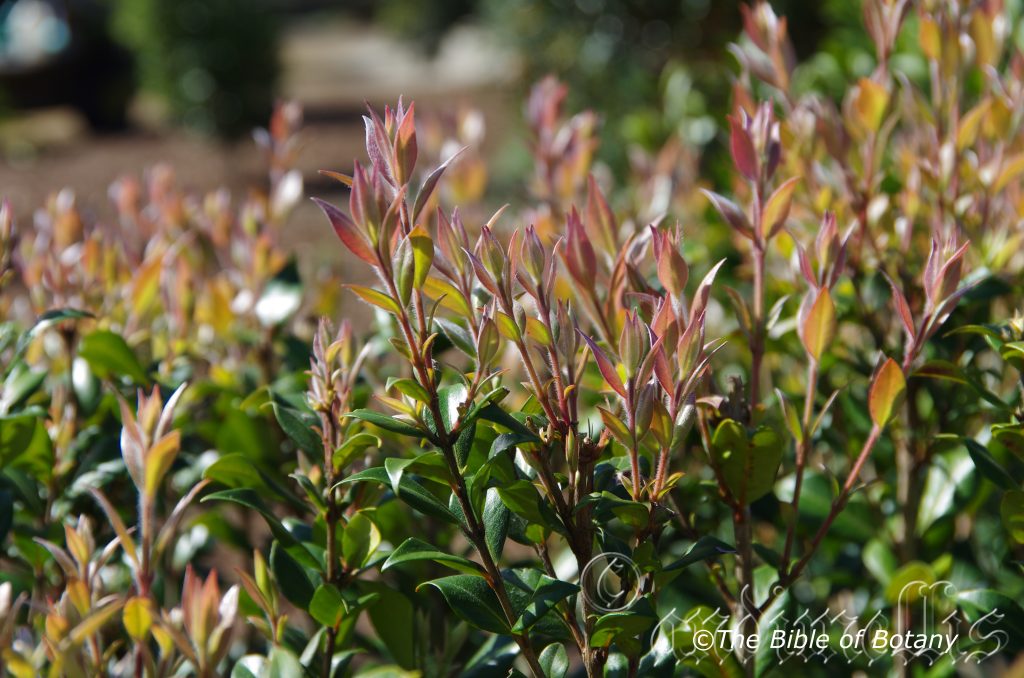
Rosser Gardens Gold Coast Qld.
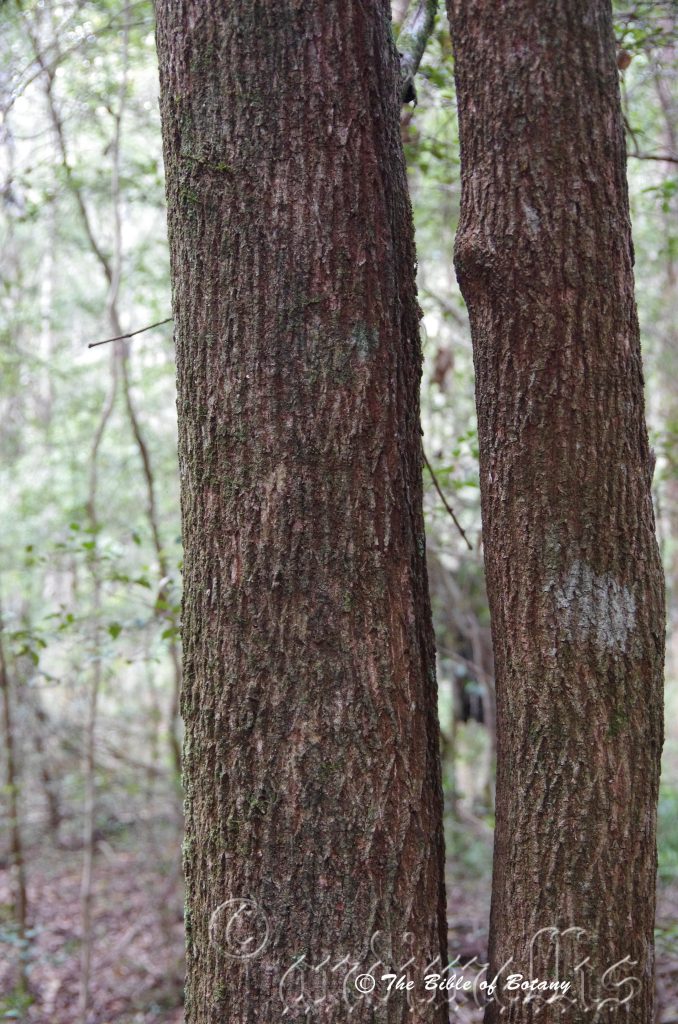
Nana Glen Qld.
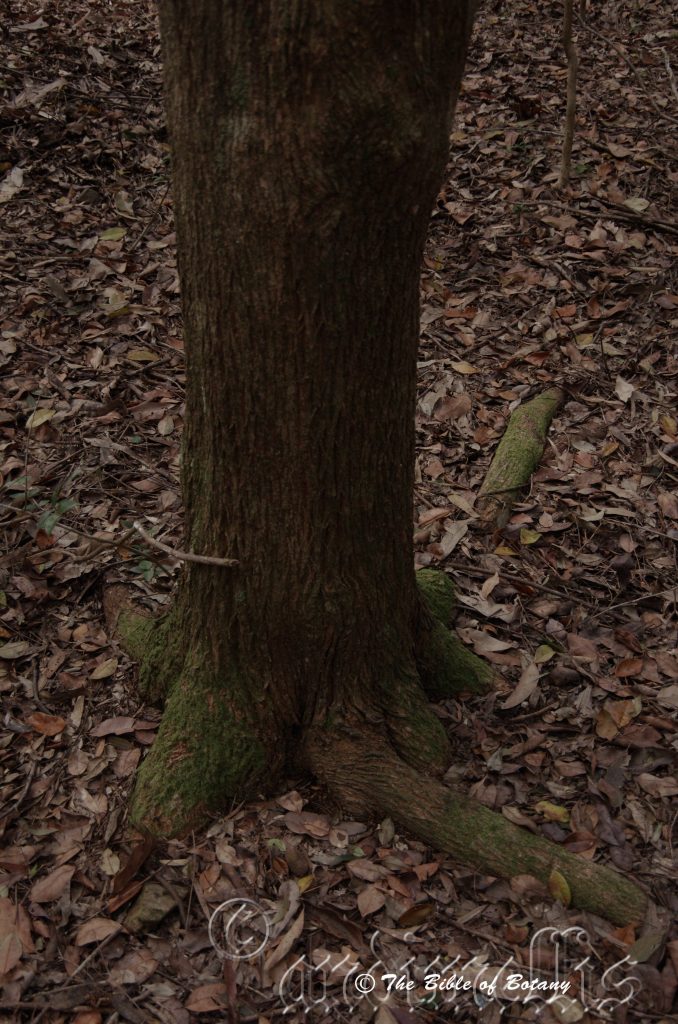
Nana Glen Qld.
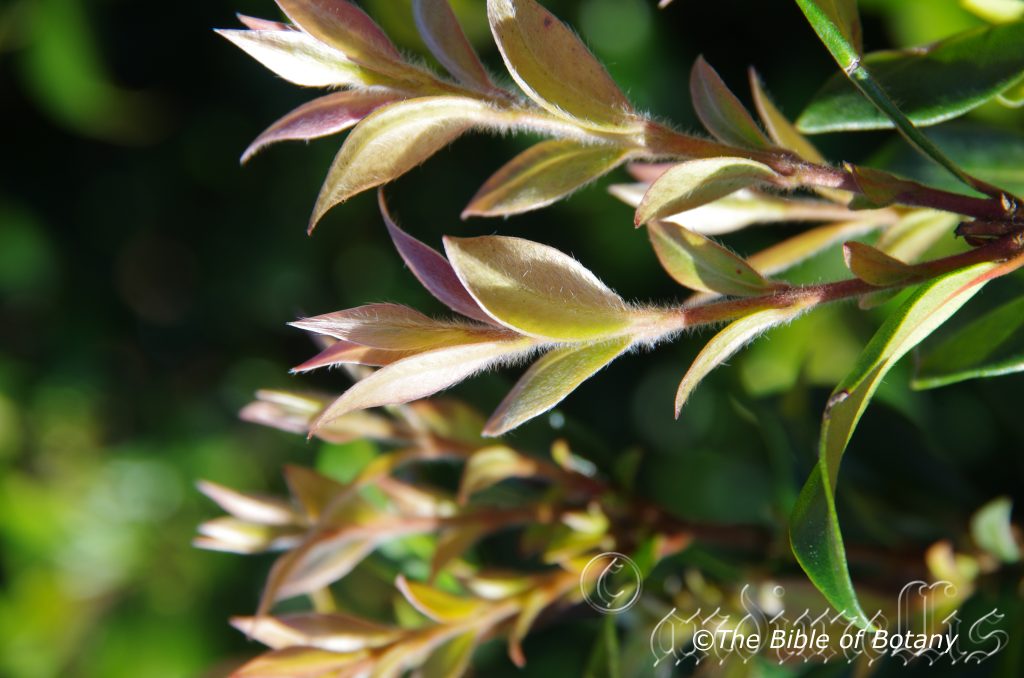
Rosser Gardens Gold Coast Qld.

Mount Cotton Qld.
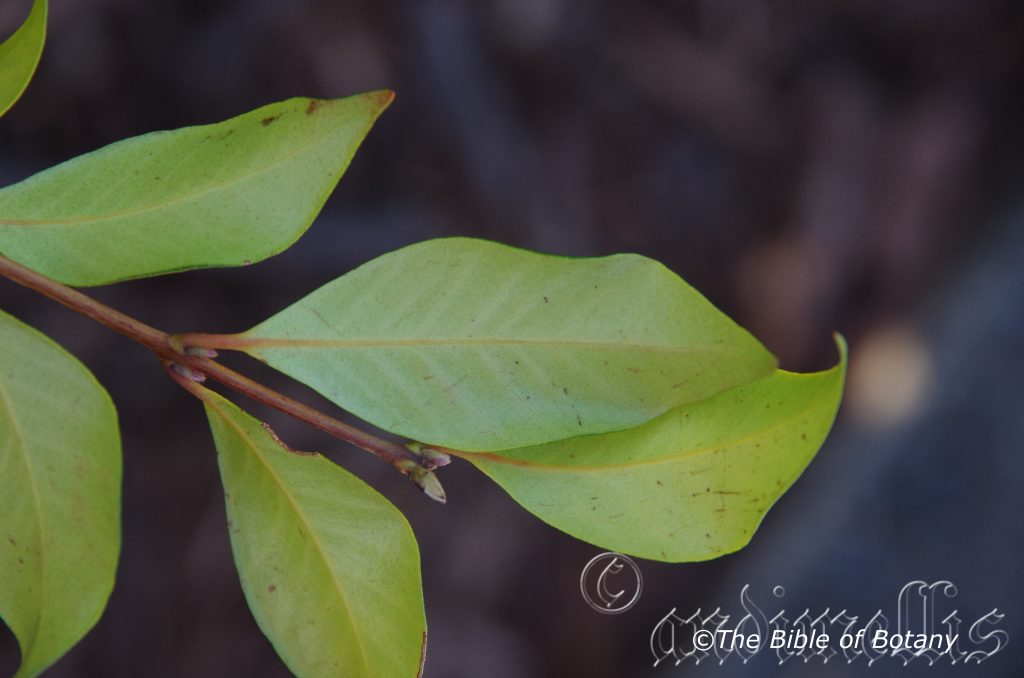
Rosser Gardens Gold Coast Qld.

Mount Cotton Qld.
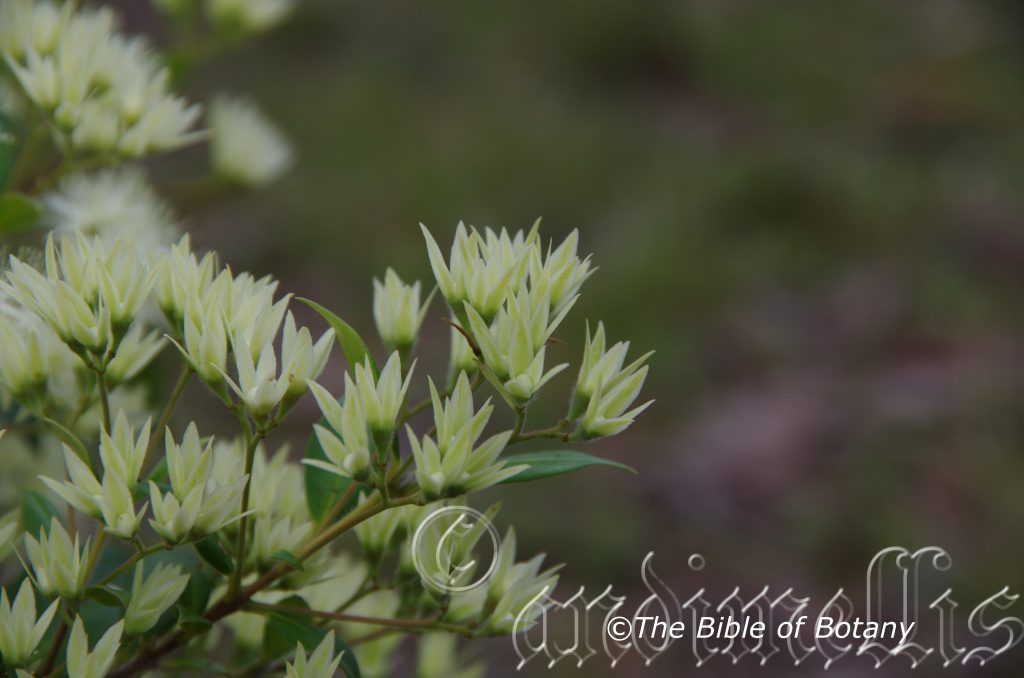
Author’s Garden The Pinnacles NSW
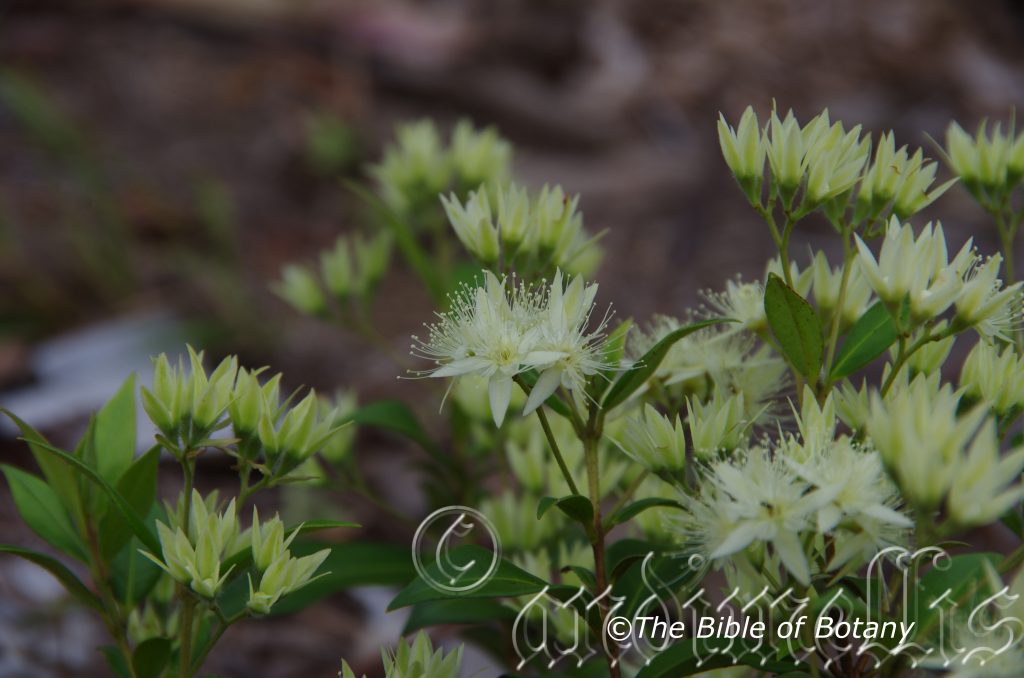
Author’s Garden The Pinnacles NSW
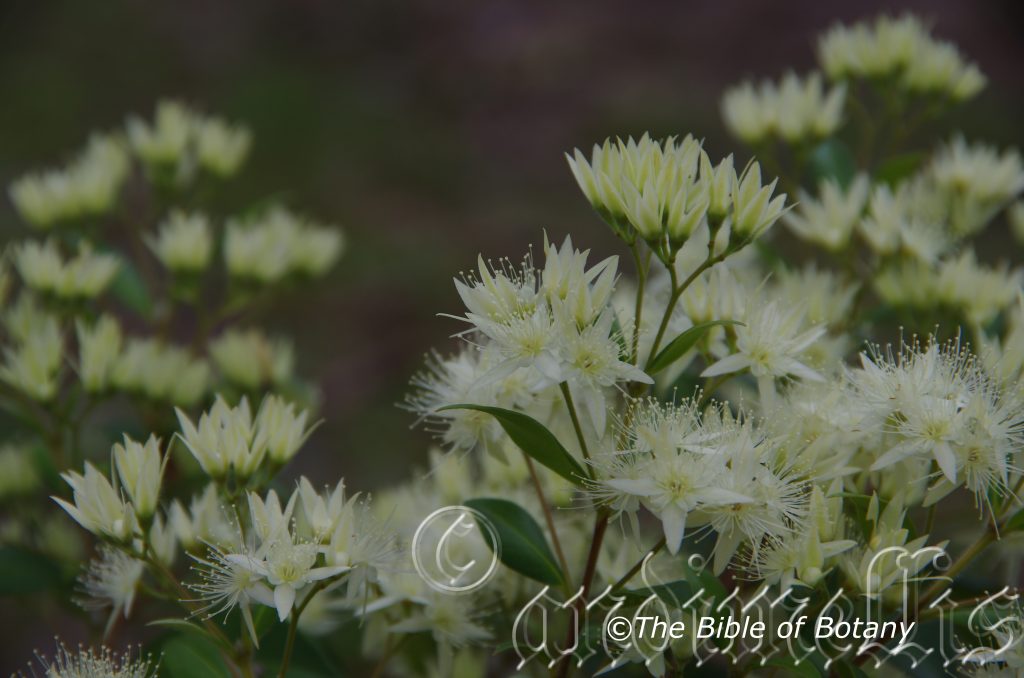
Author’s Garden The Pinnacles NSW
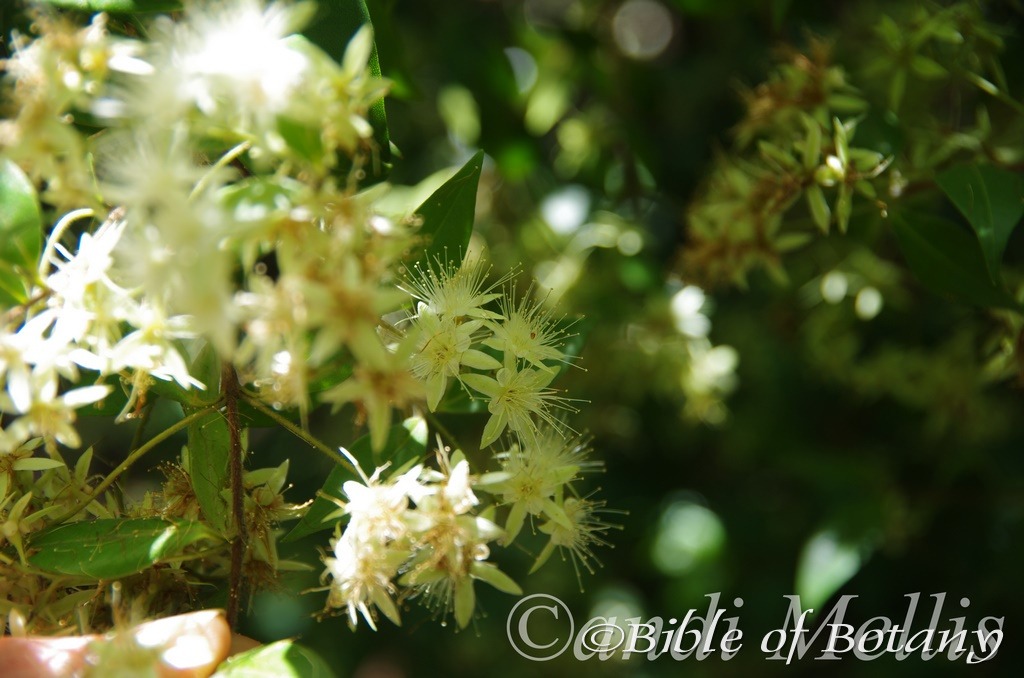
Author’s Garden The Pinnacles NSW
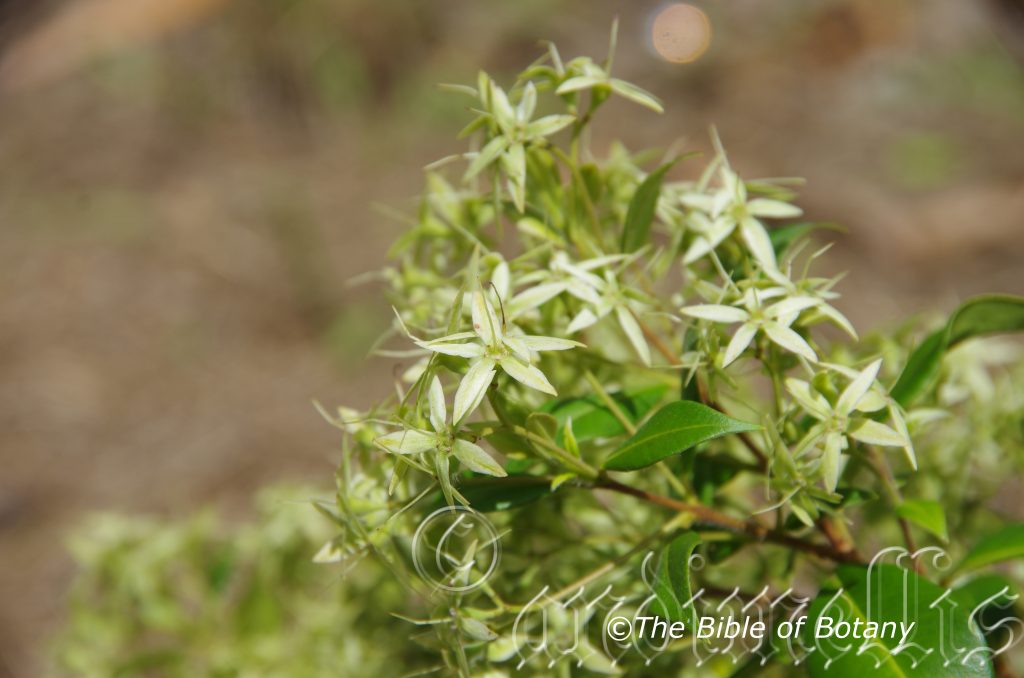
Author’s Garden The Pinnacles NSW

Rosser Gardens Gold Coast Qld.
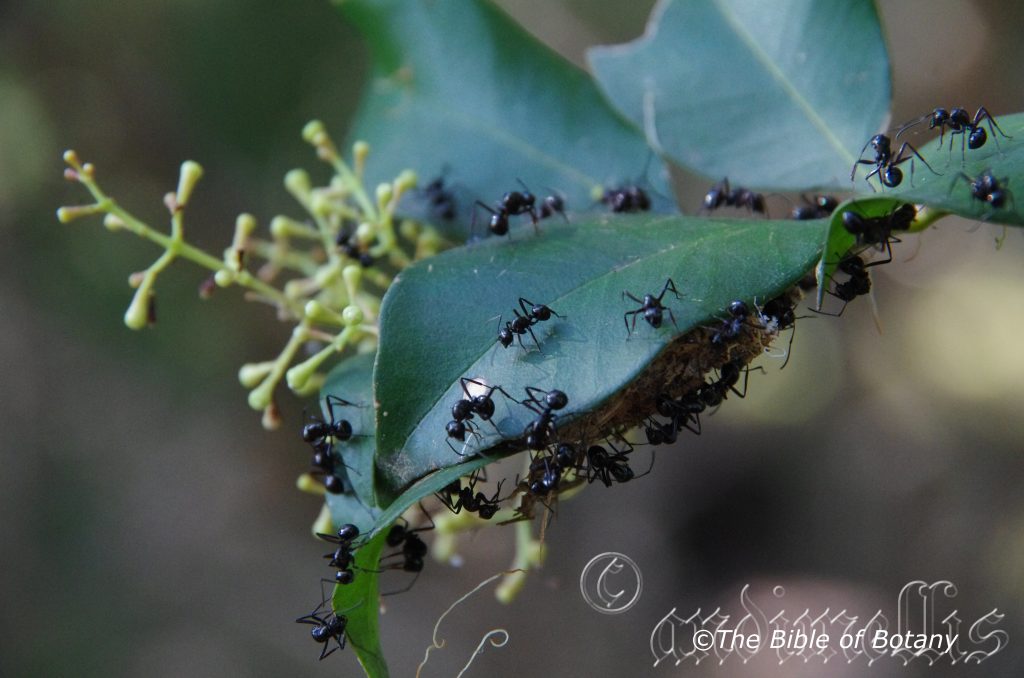
Author’s Garden The Pinnacles NSW
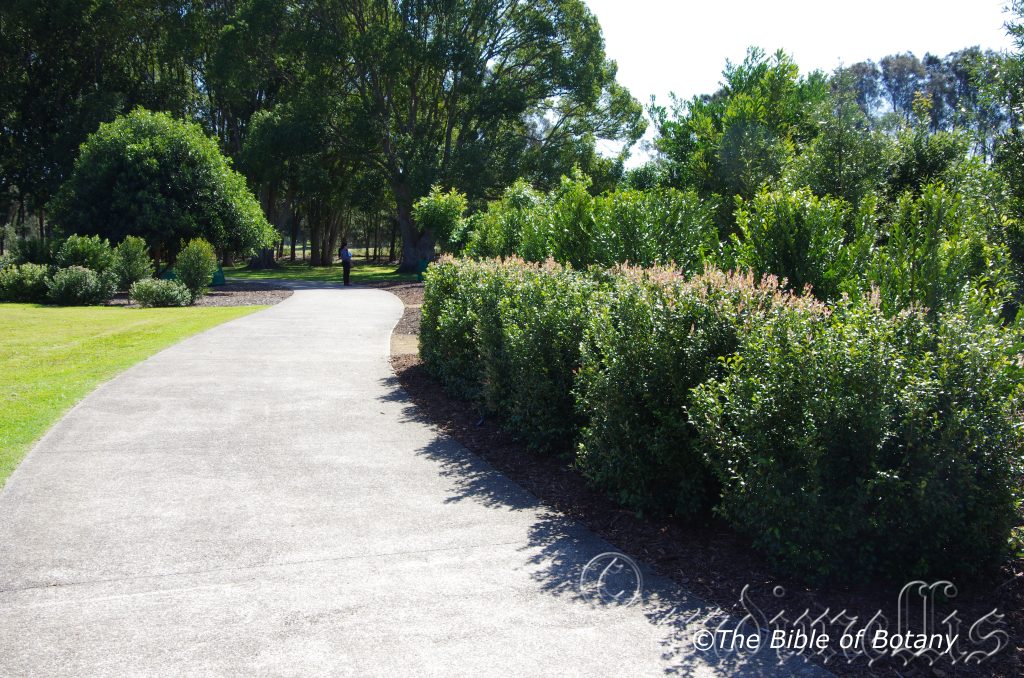
Rosser gardens Gold Coast Qld.
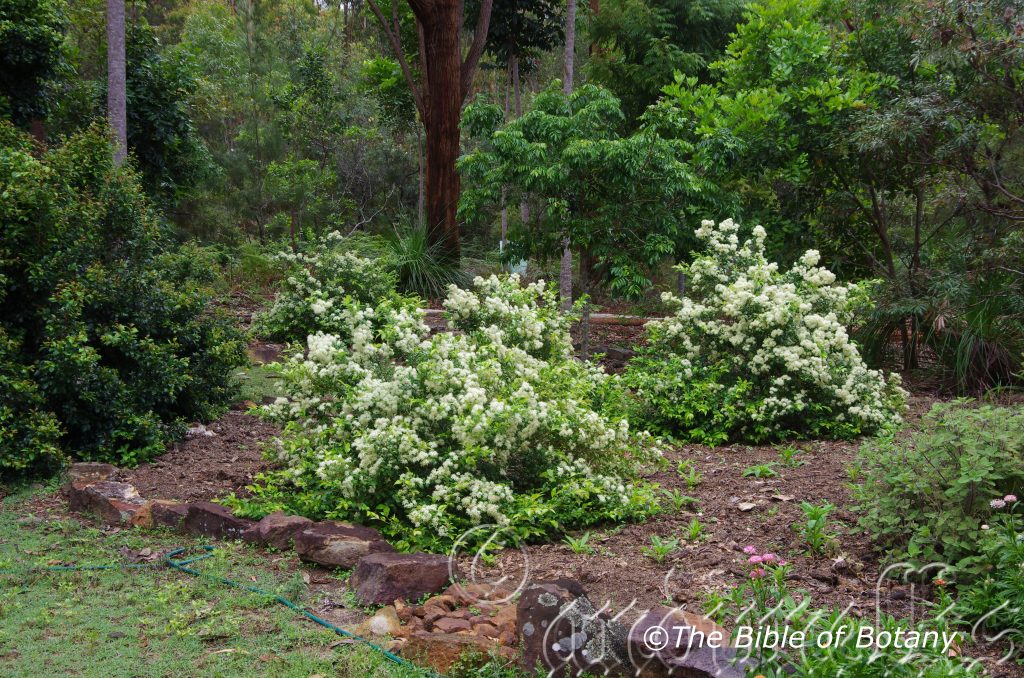
Author’s Garden The Pinnacles NSW
Backhousia myrtifolia
Classification:
Class: Rosids
Order: Myrtales
Family: Myrtaceae
Genus: Is named in honour of James Backhouse; 1794-1869, who was an English nurseryman and botanist who first ventured to Tasmania. His interests included working with the poor, especially convicts, aboriginal welfare and Australian native flora.
Specie: From Múrtos, which is Ancient Greek for bitter or later Myrtus, which is Latin for the European Myrtle genus and Folium, which is Latin for foliage. It refers to leaves, which are similar to the European myrtles.
Sub specie:
Common Name: Grey Myrtle.
Distribution:
Backhousia myrtifolia are found south from the Boyne River near Gladstone in central Queensland to Bega in southern New South Wales. It is found on the Western Slopes, on and east of the Great Dividing Range to the coast.
https://avh.ala.org.au/occurrences/search?taxa=Backhousia+myrtifolia+#tab_mapView
Habitat Aspect Climate:
Backhousia myrtifolia prefer full sun to dappled shade. It is found in riparian dry rainforests, in moist rainforest or moist Eucalyptus forests. The altitude ranges from 10 meters ASL to 980 meters ASL
The temperatures range from minus 2 degrees in August to 34 degrees in January.
The rainfall ranges from lows of 800mm to 1800mm average per annum.
Soil Requirements:
Backhousia myrtifolia prefers better quality sandy loams to medium clays often with rocky substrates and gravels. The soils are usually derived from decomposed brown basalts, black basalts or shale. The soil’s pH ranges from 4.5pH to 6.5pH. It does not tolerate water logged soils. None saline soils to moderately saline soils are tolerated.
Height & Spread:
Wild Plants: 15m to 25m by 5m to 8m.
Characteristics:
Backhousia myrtifolia can form dense forests along the creeks where it grows. It may grow as a single trunk tree to 25 meters or as multi trunked trees branching from near the ground to 15 meters. The bark is grey, finely flaky with some lichen growth on older trees. Juvenile branchlets are green and are covered in short white sericeous hairs.
The ovate to elliptical leaves of Backhousia myrtifolia measure 40mm to 75mm in length by 10mm to 35mm in width. The discolourous leaves are deep green, glabrous and semi glossy on the upper laminas while the lower laminas are paler and dull. The young and juvenile leaves are densely covered in white sericeous hairs. The bases are rounded to attenuate while the apexes are acuminate to narrow acuminate. Juvenile leaves are paler in colour and are covered in short white sericeous hairs. The mid vein is prominent on the lower lamina and is visible on the upper lamina. The margins are entire and flat or slightly recurved. Lateral veins are conspicuous with the intramarginal vein being close to the margin. Oil dots are typically large on Backhousia myrtifolia. The petioles measure 3mm to 6mm in length.
The inflorescences of Backhousia myrtifolia are cymes which are born from the upper leaf axils. The peduncles and pedicels are sparsely covered in white hirsute hairs. The peduncles measure 20mm to 35mm in length while the pedicels measure 4mm to 11mm in length. Individual flowers measure 15mm to 22mm in diameter. The hypanthium is densely covered in short white villous hairs. The white sepals measure 1mm to 2mm in diameter. The 5 petals are round at the apex, silky white and measure 2mm to 3mm length by 3mm in diameter.
The numerous white stamens measure 5mm to 7mm in length.
The white style measures 3mm to 5mm in length. Flowering occurs from December and is completed by January.
The fruits are papery capsules. The capsules measure 6mm to 7mm in length by 6mm in diameter. They turn pale brown on ripening and are distributed by the wind. The sepals are spreading and persistent acting like helicopter blades when they are released from the tree.
Wildlife:
Backhousia myrtifolia is suitable for river bank erosion control but because of its slow growth means it will need protection or support from other fast growing short lived specie like Acacia.
Backhousia myrtifolia attracts numerous beetles and small butterflies when in flower. The native bees, Trigona and Meliponini are also attracted to the flowers. Backhousia myrtifolia are great for attaching small orchids and other small epiphytic plants like Pyrrosia to the branches and trunks.
Cultivation:
It would make an good fire retardant large shrub or small tree.
* Fire retardant plants act as radiant heat screens and absorb more heat from an approaching fire without burning.
* Fire retardant trees are able to reduce wind speed near a house or out buildings.
* Fire retardant plants also trap embers and sparks carried by the wind.
* Fire retardant ground covers are able to catch burning embers without catching fire themselves, and also slow the travel of a fire through debris and litter on the ground.
This is a beautiful small tree that looks great in dappled light with its dark green foliage and consistent heavy flowering every summer. It looks especially good when grown as a multi stemmed tree, 5 to 6 stems; where it will reach 12 meters by 6 meters in the garden. The dense canopy gives good shade and the trunk is suitable for small epiphytic plants.
It looks particularly at home along gullies or seepage areas where it will thrive. They are a good start for a rainforest garden though they are slow growing at first.
In small gardens they will eventually attain a height of 6 meters to 7 meters by 4 meters to 5 meters as a multi trunk tree and not much bigger if grown as a single trunk tree in a rain forest. Once established they’re both frost tolerant and drought resistant.
They can be regularly tip pruned to encourage a large bushy shrub effect or trained in the early stages if a multi stemmed tree is required.
These trees make an excellent study for bonsai though they are slow from seed. The trunks are easily trained and will form the gnarled appearance early in life.
Propagation:
Seeds:
Collecting seeds from mature trees of Backhousia myrtifolia is not the easiest as they are wind dispersed and usually out of reach of most people. Seeds can be collected by placing a sheet at the base of a tree when seeds are falling from the trees. You should collect enough in a day for personal use. The fresh seeds can be sown directly into a seed raising mix with the sepals still attached covering them to a depth of 5mm. Seeds maybe erratic in germination but a strike rate of over 50mm should be attained.
When the seedlings are 20 to 30 mm tall, prick them out and plant them into 50mm native tubes using a good quality mix.
Once the seedlings reach 100mm to 150mm in height plant them out into their permanent position.
For mass plantings as a feature try planting them at 5 meter to 6 meter centers for single trunk trees and 6 meters to 8 meters for multi trunk trees and 2 meters for hedges.
Fertilize using Seaweed, fish emulsion or organic chicken pellets soaked in water on an alternate basis. Fertilize every two months until the plants are established then twice annually in early September or March to maintain health, vitality and better flowering and better quality fruit.
Further Comments from Readers:
“Hi reader, it seems you use The Bible of Botany a lot. That’s great as we have great pleasure in bringing it to you! It’s a little awkward for us to ask, but our first aim is to purchase land approximately 1,600 hectares to link several parcels of N.P. into one at The Pinnacles NSW Australia, but we need your help. We’re not salespeople. We’re amateur botanists who have dedicated over 30 years to saving the environment in a practical way. We depend on donations to reach our goal. If you donate just $5, the price of your coffee this Sunday, We can help to keep the planet alive in a real way and continue to bring you regular updates and features on Australian plants all in one Botanical Bible. Any support is greatly appreciated. Thank you.”
In the spirit of reconciliation we acknowledge the Bundjalung, Gumbaynggirr and Yaegl and all aboriginal nations throughout Australia and their connections to land, sea and community. We pay our respect to their Elders past, present and future for the pleasures we have gained.
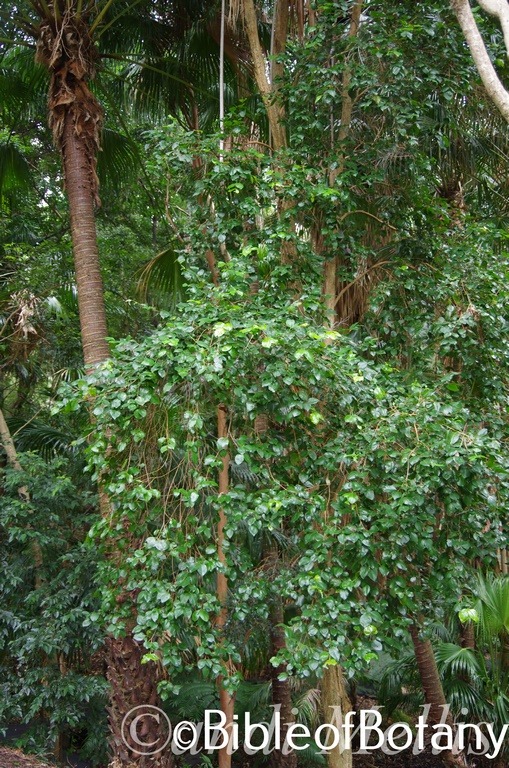

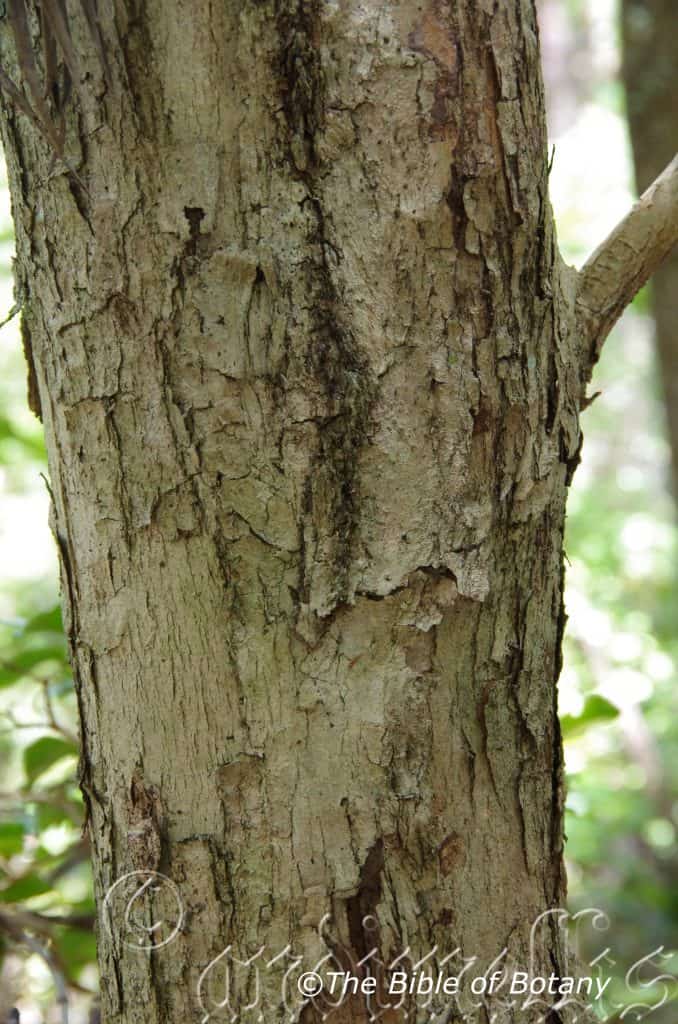
Coffs Harbour Botanic Gardens NSW
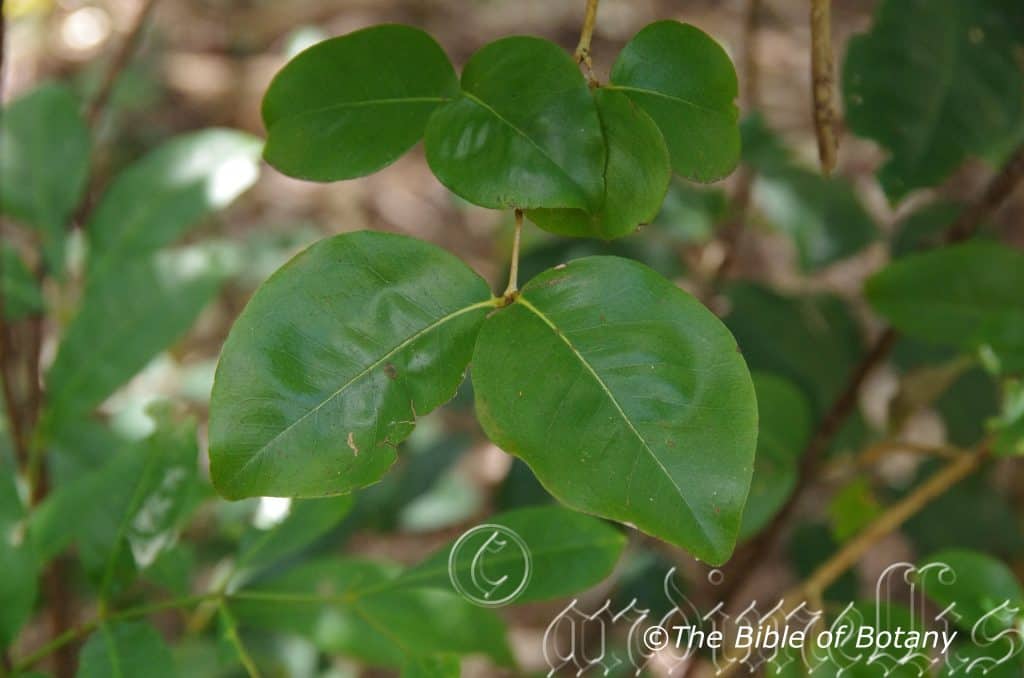
Coffs Harbour Botanic Gardens NSW
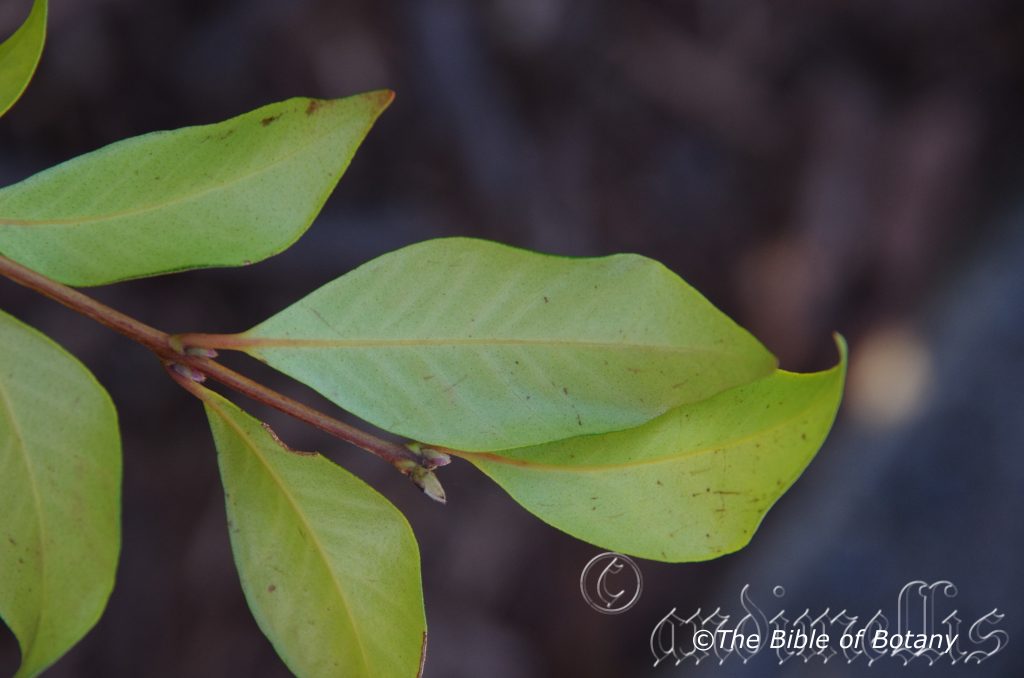
Coffs Harbour Botanic Gardens NSW
Backhousia sciadophora
Classification:
Class: Rosids
Order: Myrtales
Family: Myrtaceae
Genus: Is named in honour of James Backhouse; 1794-1869, who was an English nurseryman and botanist who first ventured to Tasmania. His interests included working with the poor, especially convicts, aboriginal welfare and Australian native flora.
Specie: From Skiadeion, which is Ancient Greek for an umbel, shade or an umbrella and Phóros, which is Ancient Greek for to carry or to bear. It refers to the dense foliage of the leaves creating a dense shade beneath the trees.
Sub specie:
Common Name: Shatter wood
Distribution:
Backhousia sciadophora is found south from Gympie in coastal south east Queensland to Foster in central coastal New South Wales. It is found on and east of the Great Dividing Rang to the coast.
https://avh.ala.org.au/occurrences/search?taxa=Backhousia+sciadophora+#tab_mapView
Habitat Aspect Climate:
Backhousia sciadophora prefer full sun to dappled shade. It is found on gentle slopes to steeper slopes in drier rainforests and on the margins of moist Eucalyptus forests. The altitude ranges from 25 meters ASL to 1150 meters ASL.
The temperatures range from minus 4 degrees in August to 38 degrees in January.
The rainfall ranges from lows of 700mm to 1500mm average per annum.
Soil Requirements:
Backhousia sciadophora prefers deep, sandy loams, light fatty clays, to medium clays. The soils are usually derived from decomposed granites, brown basalts or black basalts. The soil’s pH ranges from 4.5pH to 6.5pH. It does not tolerate water logged soils. None saline soils to moderately saline soils are tolerated.
Height & Spread:
Wild Plants: 20m to 30m by 8m to 16m.
Characteristics:
Backhousia sciadophora is a tall straight usually single trunk tree which flanges near the base. The bark is grey to grey-brown, finely flaky in almost tessellated patches. Young and juvenile branches and branchlets are green and glabrous or very sparsely covered in fine pale hirsute hairs.
The broad ovate to broad elliptical leaves of Backhousia sciadophora measure 30mm to 100mm in length by 20mm to 50mm in width. The petioles measure 3mm to 8mm in length. The bases are rounded while the apexes are narrow obtuse sometimes emarginated. The discolourous leaves are deep green, glossy and glabrous on the upper laminas while the lower laminas are paler and dull. The laminas are undulating and recurve upwards from the mid vein to the margins and decurve as they approached the apex. The oil dots are numerous, small and pellucid. The mid vein is prominent on the lower lamina and is visible on the upper lamina. Lateral veins are slightly prominent in the lower laminas and are faintly conspicuous on the upper laminas as are the intramarginal veins. The margins are entire. Young leaves are glossy grass-green and glabrous or sparsely covered in fine, short white hirsute hairs.
The inflorescences of Backhousia sciadophora are simple cymes which are born from the leaf axils. The peduncles and pedicels are glabrous. The peduncles measure 10mm to 45mm in length while the pedicels measure 10mm to 13mm in length. The cymes measure 40mm to 60mm in diameter while the individual flowers measure 13mm to 20mm in diameter. The hypanthium is glabrous and measures 2.5mm to 3.5mm in length by 2mm to 3mm in diameter. The white to creamy-white sepals measure 1mm to 2mm in diameter. The 5 creamy-white orbicular to broad spathulate petals are round at the apex and measure 2mm to 3mm length by 3mm in diameter.
The numerous stamens measure 6mm to 9mm in length.
The white to creamy-white style measures 4mm to 7mm in length. Flowering occurs from November to December.
Backhousia sciadophora fruits are papery capsules. The capsules measure 6mm to 9mm in length by 6mm to 8mm in diameter. The capsules turn pale brown on ripening and are distributed by the wind. The spreading sepals and style are persistent on the capsules with the sepals acting like helicopter blades when they are released from the tree.
Wildlife:
Backhousia sciadophora is suitable for erosion control on steeper slopes but will need support of faster growing specie in the early years.
Backhousia sciadophora attracts numerous beetles and small butterflies when in flower. The native bees are also attracted to the flowers. They are great for attaching orchids and epiphytic plants like Pyrrosia to the upper branches.
Cultivation:
Backhousia sciadophora is a beautiful small tree that looks great in dappled light with its dark green foliage and consistent heavy flowering every summer. It looks especially good when grown as a multi stemmed tree, 5 to 6 stems; where it will reach 12 meters by 6 meters in the garden in an open situation. Grown as single trunk tree they will grow from 12 meters to 25 meters by 7 meters to 12 meters when grown in the open. Once established they’re both frost hardy and drought resistant. The dense canopy gives excellent shade on dry slopes and would be worthwhile growing on the western slopes for this reason alone.
It looks particularly good along dry gullies where it is excellent for starting a dry rainforest. It is a good start for a rainforest garden though they are slow growing at first.
This tree makes an excellent study for bonsai despite its slow growth from seed. The trunks are easily trained and will form the gnarled appearance early in life.
Propagation:
Seeds:
Collecting seeds from mature trees of Backhousia sciadophora is not the easiest as they are wind dispersed and usually out of reach of most people. Seeds can be collected by placing a sheet at the base of a tree when seeds are falling from the trees. You should collect enough in a day for personal use. The fresh seeds can be sown directly into a seed raising mix with the sepals still attached covering them to a depth of 5mm. Seeds maybe erratic in germination but a strike rate of over 50mm should be attained.
When the seedlings are 20 to 30 mm tall, prick them out and plant them into 50mm native tubes using a good quality mix.
Once the seedlings reach 100mm to 150mm in height plant them out into their permanent position.
For mass plantings as a feature try planting them at 5 meter to 6 meter centers for single trunk trees and 6 meters to 8 meters for multi trunk trees and 2 meters for hedges.
Fertilize using Seaweed, fish emulsion or organic chicken pellets soaked in water on an alternate basis. Fertilize every two months until the plants are established then twice annually in early September or March to maintain health, vitality and better flowering and better quality fruit.
Further Comments from Readers:
“Hi reader, it seems you use The Bible of Botany a lot. That’s great as we have great pleasure in bringing it to you! It’s a little awkward for us to ask, but our first aim is to purchase land approximately 1,600 hectares to link several parcels of N.P. into one at The Pinnacles NSW Australia, but we need your help. We’re not salespeople. We’re amateur botanists who have dedicated over 30 years to saving the environment in a practical way. We depend on donations to reach our goal. If you donate just $5, the price of your coffee this Sunday, We can help to keep the planet alive in a real way and continue to bring you regular updates and features on Australian plants all in one Botanical Bible. Any support is greatly appreciated. Thank you.”
In the spirit of reconciliation we acknowledge the Bundjalung, Gumbaynggirr and Yaegl and all aboriginal nations throughout Australia and their connections to land, sea and community. We pay our respect to their Elders past, present and future for the pleasures we have gained.
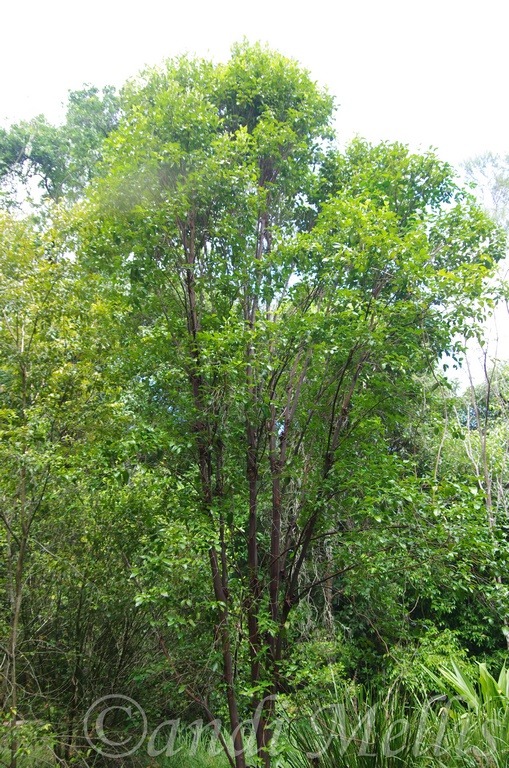
Lismore NSW
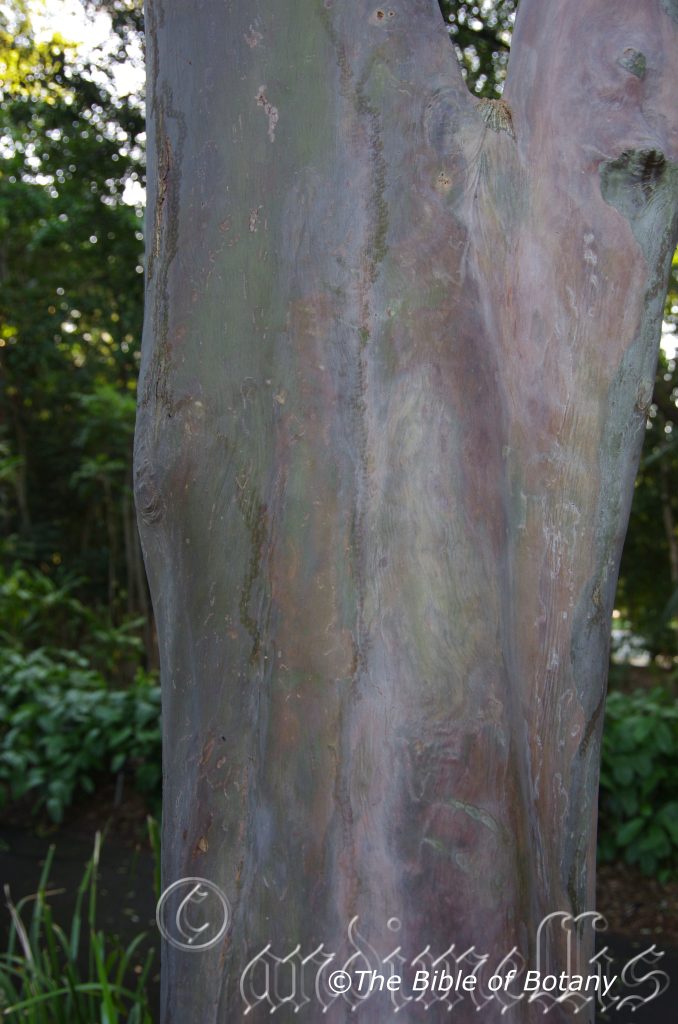
Mount Cootha Botanic Gardens Qld.
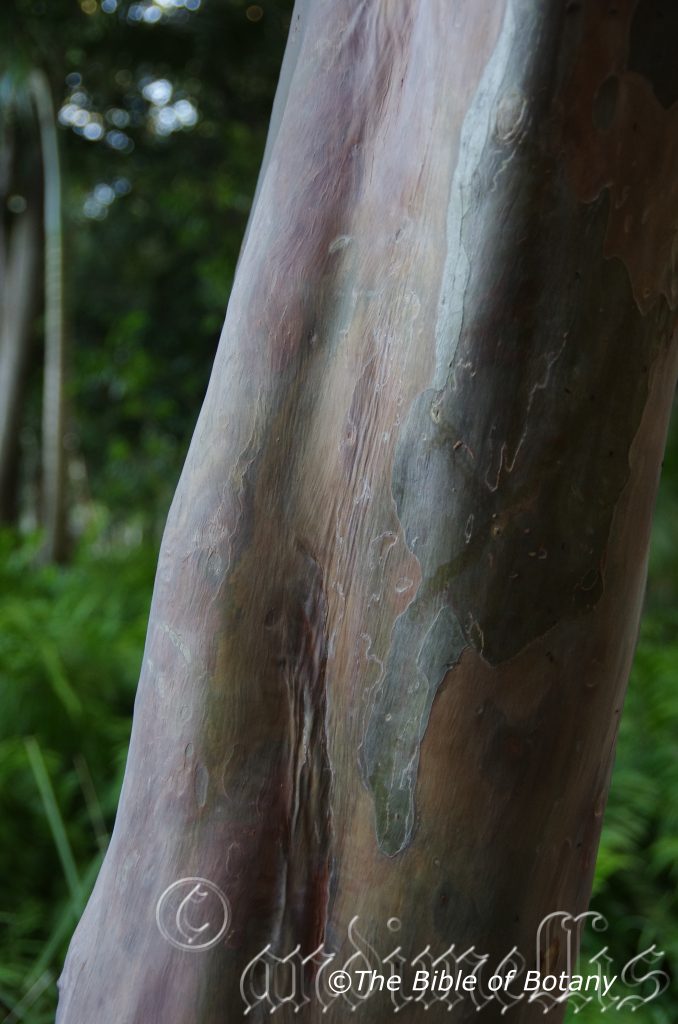
Mount Cootha Botanic Gardens Qld.
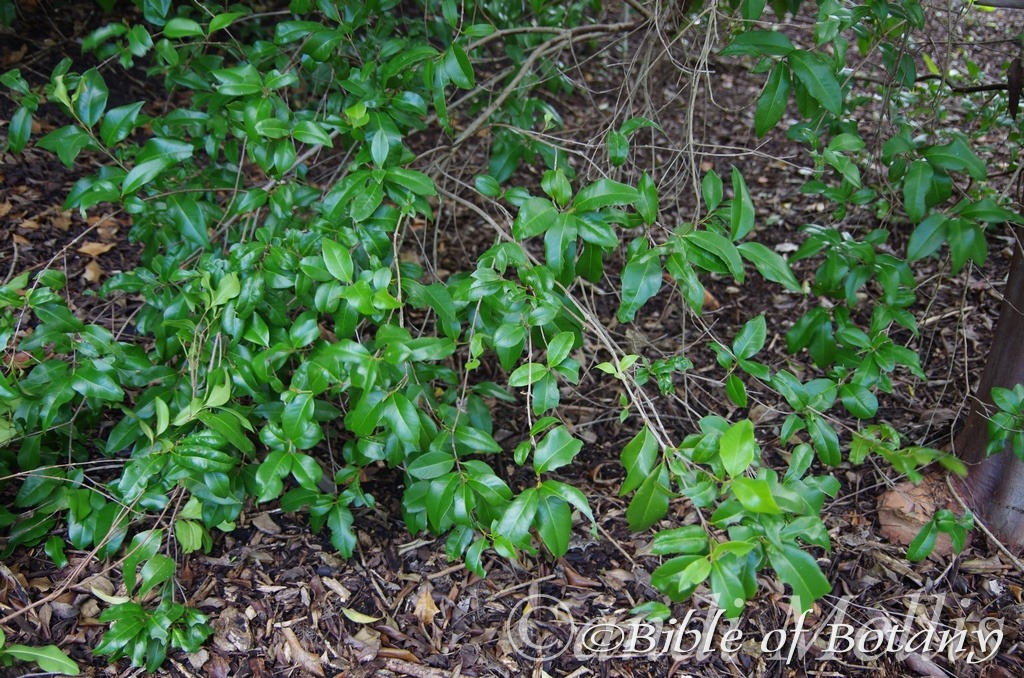
Lismore NSW
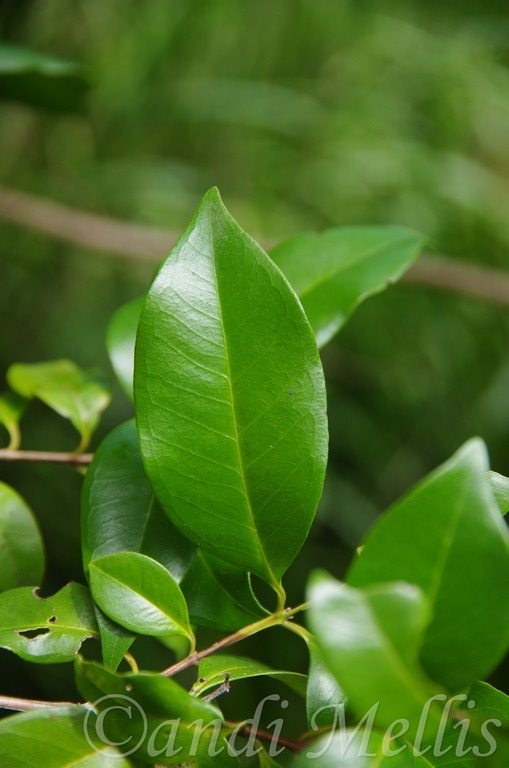
Lismore NSW
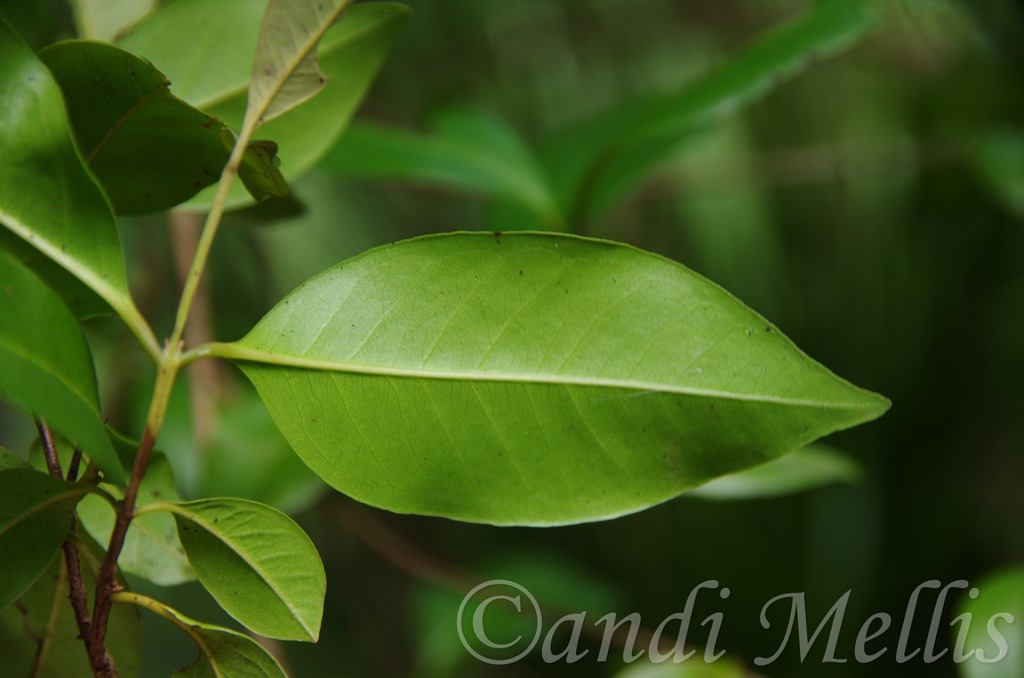
Lismore NSW
Backhousia subargentea
Classification:
Class: Rosids
Order: Myrtales
Family: Myrtaceae
Genus: Is named in honour of James Backhouse; 1794-1869, who was an English nurseryman and botanist who first ventured to Tasmania. His interests included working with the poor, especially convicts, aboriginal welfare and Australian native flora.
Specie: From Sub, which is Latin, for under, beneath or below and Argentea, which is Latin for silver or silvery. It refers to organs or structures usually the leaves, which have a somewhat silvery colour.
Sub specie:
Common Name: Shatter wood
Distribution:
Backhousia subargentea is found south from Rockhampton in coastal south east Queensland to Lismore on the north coast of New South Wales.
There are two disjunct populations further north around Mackay and Cairnes. It is found on and east of the Great Dividing Rang to the coast.
https://avh.ala.org.au/occurrences/search?taxa=Backhousia+subargentea+#tab_mapView
Habitat Aspect Climate:
Backhousia subargentea prefer full sun to dappled shade. It is found on gentle slopes to steeper slopes in drier rainforests and often forms dense thickets in its habitats. The altitude ranges from 25 meters ASL to 350 meters ASL.
The temperatures range from minus 4 degrees in August to 38 degrees in January.
The rainfall ranges from lows of 800mm to 3200mm average per annum.
Soil Requirements:
Backhousia subargentea prefers deep light fatty clays, to medium clays. The soils are usually derived from decomposed black basalts. The soil’s pH ranges from 5pH to 6.5pH. It does not tolerate water logged soils. None saline soils to moderately saline soils are tolerated.
Height & Spread:
Wild Plants: 5m to 8m by 3m to 6m.
Characteristics:
Backhousia subargentea is a small tree but more often a multi trunk large shrub with a smooth, orange to brown bark that sheds in thin scales. The young stems are mid green and moderately covered in rusty tomentose hairs.
The petioles measure 40mm to 80mm in length. The elliptic to ovate laminas 50mm to 110mm in length by 20mm to 40mm in width. The deep green upper lamina is glossy while the lower lamina is paler. The mid vein is prominent on the lower lamina and moderately to densely covered in rusty tomentose hairs.
The peduncles measure 4mm to 10mm in length. The tree lacks petals. The hypanthium is pale green while the cream stamens measure 2mm to 4mm in length. The short, stout style measures 1mm to 2mm in length.
The Infructescence measure 6mm to 8mm in diameter, while the individual fruits measure 2mm to 2.5mm in length and are fused at the base.
Wildlife:
Backhousia subargentea is suitable for erosion control on steeper slopes but will need support of faster growing specie in the early years.
Backhousia subargentea attracts numerous beetles and small butterflies when in flower. The native bees which include Trigona and Meliponini species are also attracted to the flowers. They are great for attaching orchids and epiphytic plants like Pyrrosia to the upper branches.
Cultivation:
Backhousia subargentea is a beautiful small tree that looks great in dappled light with its dark green foliage and consistent heavy flowering every summer. It looks especially good when grown as a multi stemmed large shrub with 5 to 6 stems, where it will reach 5 to meters by 6 meters in the garden in an open situation. Grown as single trunk tree it will grow from 8 meters to 10 meters by 6 meters to 7 meters when grown in the open. Once established it is drought resistant. The dense canopy gives excellent shade on dry slopes and would be worthwhile growing on the western side of a home for this reason alone.
It looks particularly good along dry gullies where it is excellent for starting a dry rainforest. It is a good starter for a rainforest garden though they are slow growing at first.
This tree would make an excellent bonsai specimen being slow from seed and having trunks and branches that are easily trained and will form the gnarled appearance early in life.
Propagation:
Seeds:
Collecting seeds from mature trees of Backhousia sciadophora is not the easiest as they are wind dispersed and usually out of reach of most people. Seeds can be collected by placing a sheet at the base of a tree when seeds are falling from the trees. You should collect enough in a day for personal use. The fresh seeds can be sown directly into a seed raising mix with the sepals still attached covering them to a depth of 5mm. Seeds maybe erratic in germination but a strike rate of over 50mm should be attained.
When the seedlings are 20 to 30 mm tall, prick them out and plant them into 50mm native tubes using a good quality mix.
Once the seedlings reach 100mm to 150mm in height plant them out into their permanent position.
For mass plantings as a feature try planting them at 5 meter to 6 meter centers for single trunk trees and 6 meters to 8 meters for multi trunk trees and 2 meters for hedges.
Fertilize using Seaweed, fish emulsion or organic chicken pellets soaked in water on an alternate basis. Fertilize every two months until the plants are established then twice annually in early September or March to maintain health, vitality and better flowering and better quality fruit.
Further Comments from Readers:
“Hi reader, it seems you use The Bible of Botany a lot. That’s great as we have great pleasure in bringing it to you! It’s a little awkward for us to ask, but our first aim is to purchase land approximately 1,600 hectares to link several parcels of N.P. into one at The Pinnacles NSW Australia, but we need your help. We’re not salespeople. We’re amateur botanists who have dedicated over 30 years to saving the environment in a practical way. We depend on donations to reach our goal. If you donate just $5, the price of your coffee this Sunday, We can help to keep the planet alive in a real way and continue to bring you regular updates and features on Australian plants all in one Botanical Bible. Any support is greatly appreciated. Thank you.”
In the spirit of reconciliation we acknowledge the Bundjalung, Gumbaynggirr and Yaegl and all aboriginal nations throughout Australia and their connections to land, sea and community. We pay our respect to their Elders past, present and future for the pleasures we have gained.

The Pinnacles NSW
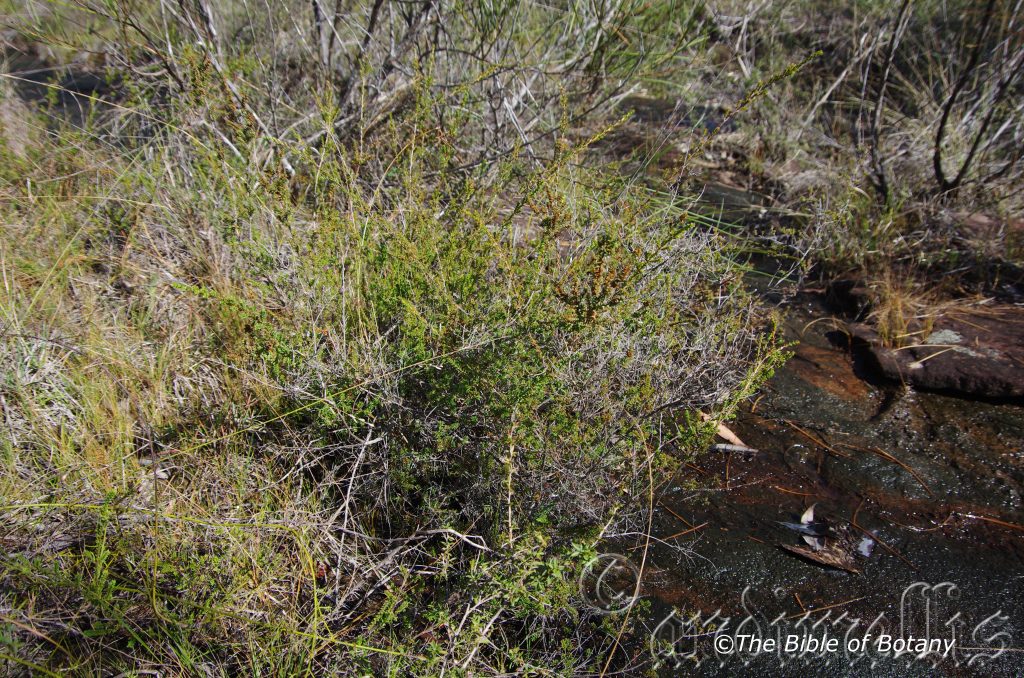
Fortis Creek National Park NSW
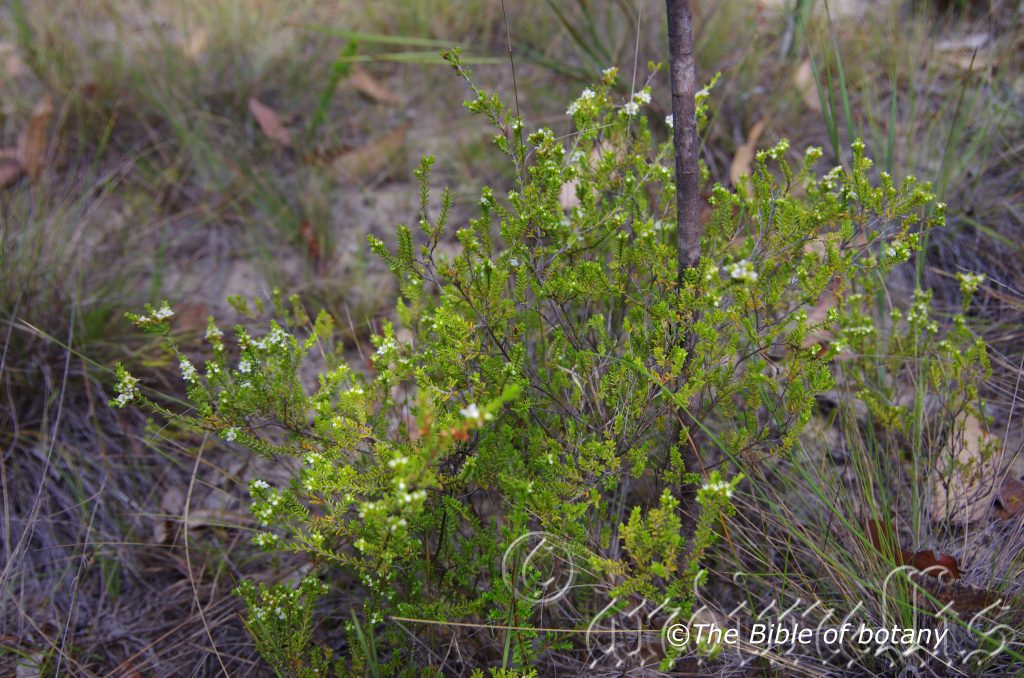
The Pinnacles NSW

The Pinnacles NSW
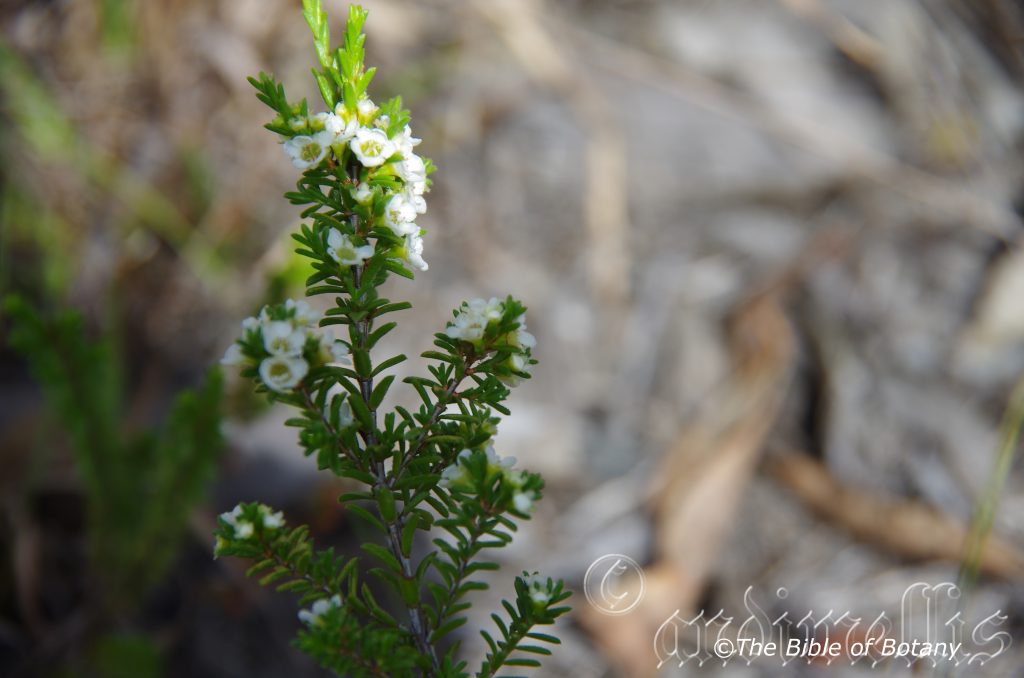
The Pinnacles NSW

The Pinnacles NSW

The Pinnacles NSW
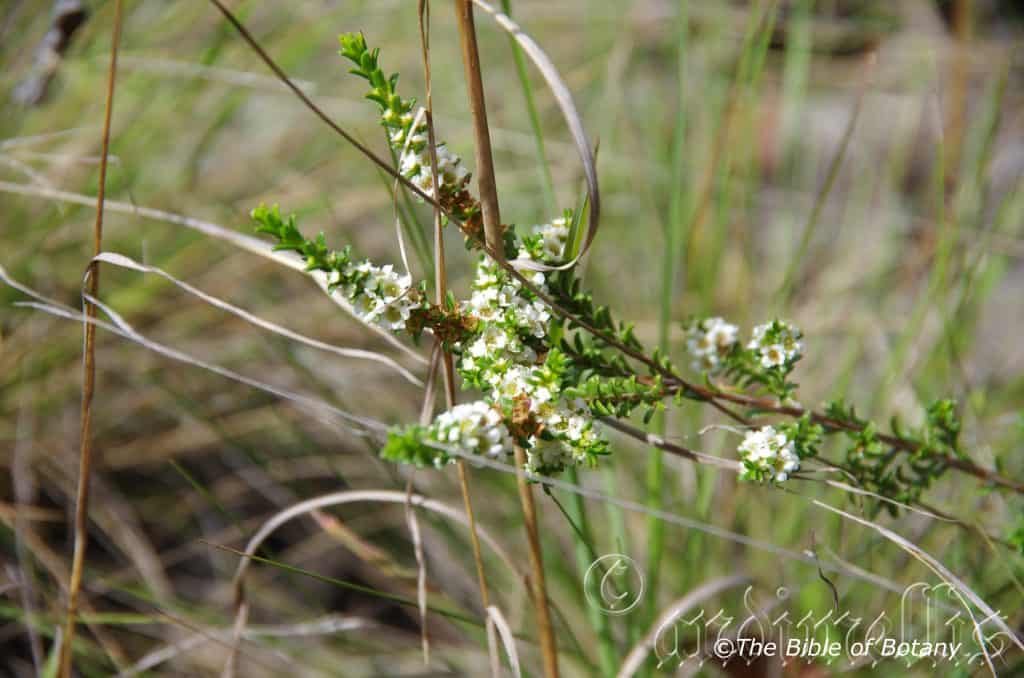
The Pinnacles NSW
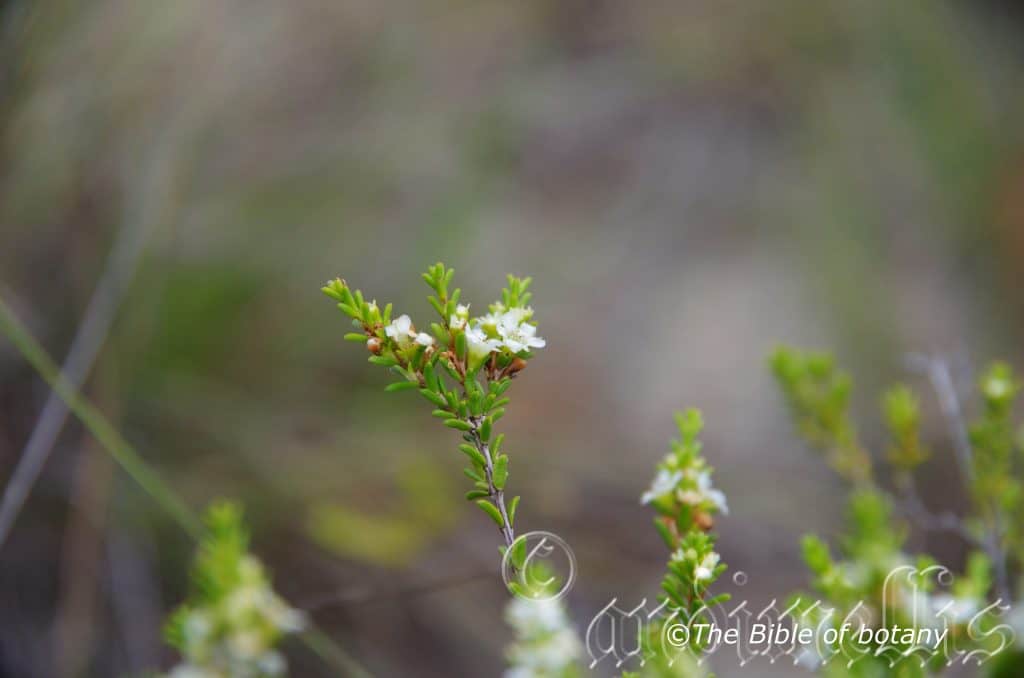
Fortis Creek National Park NSW
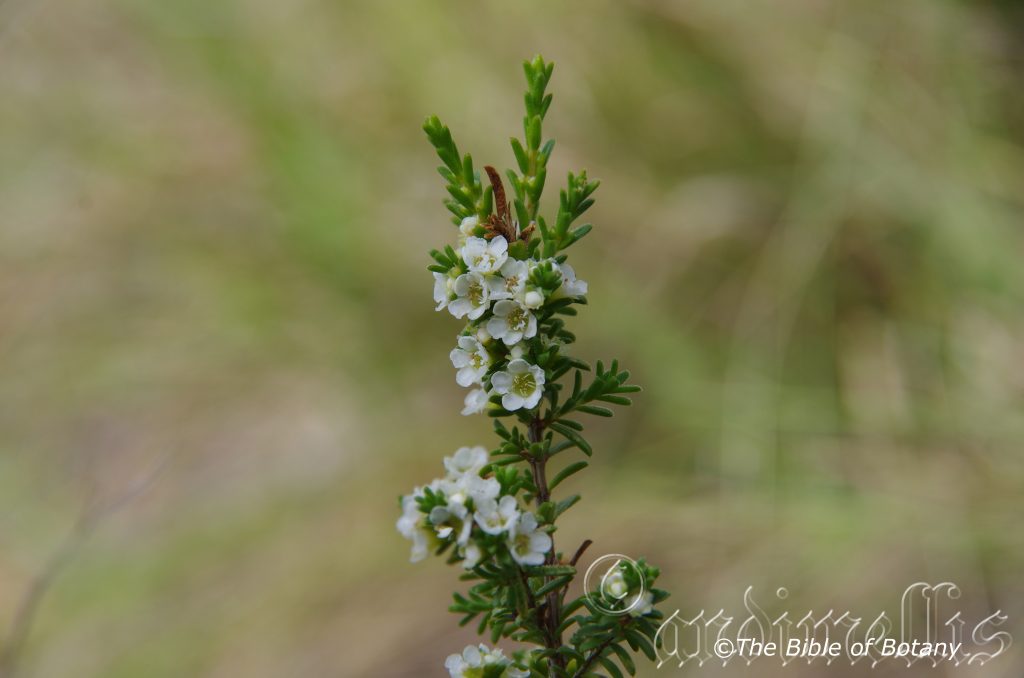
The Pinnacles NSW
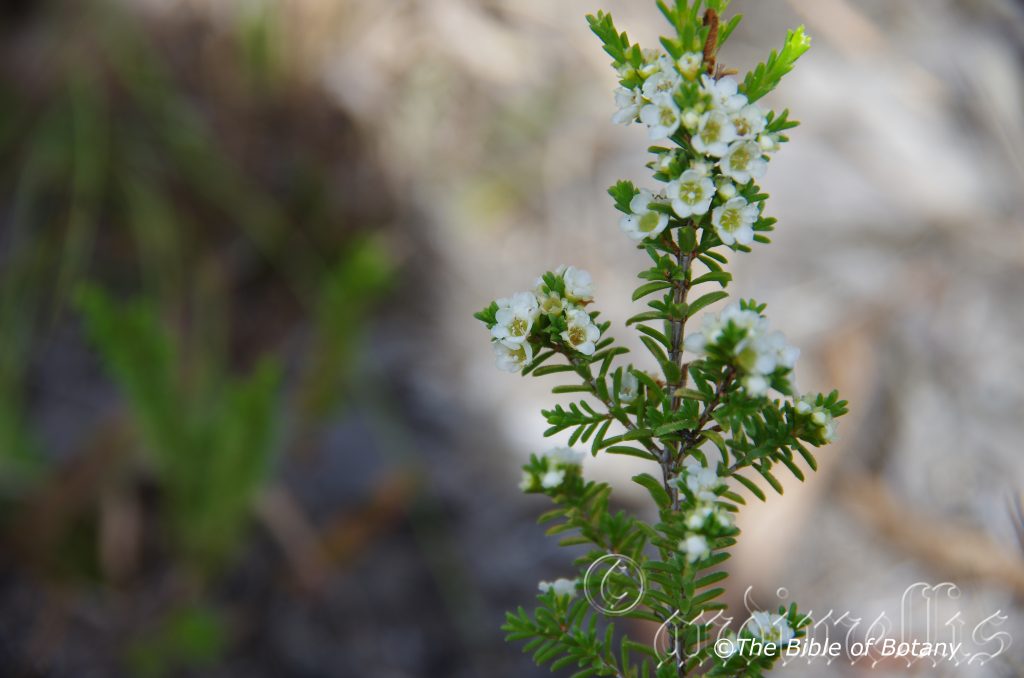
The Pinnacles NSW
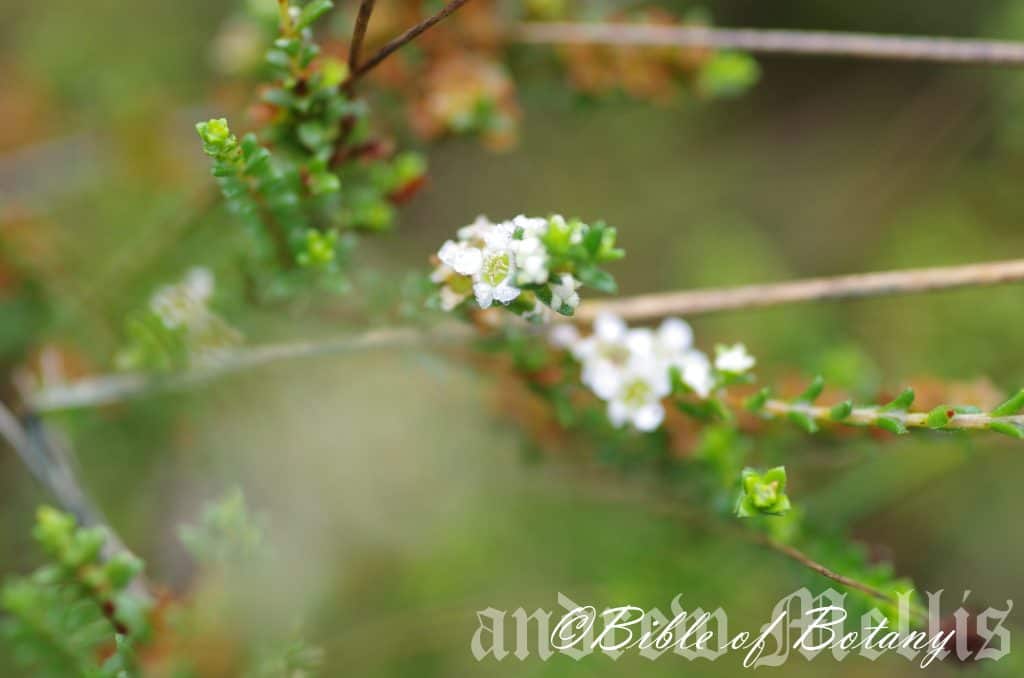
The Pinnacles NSW
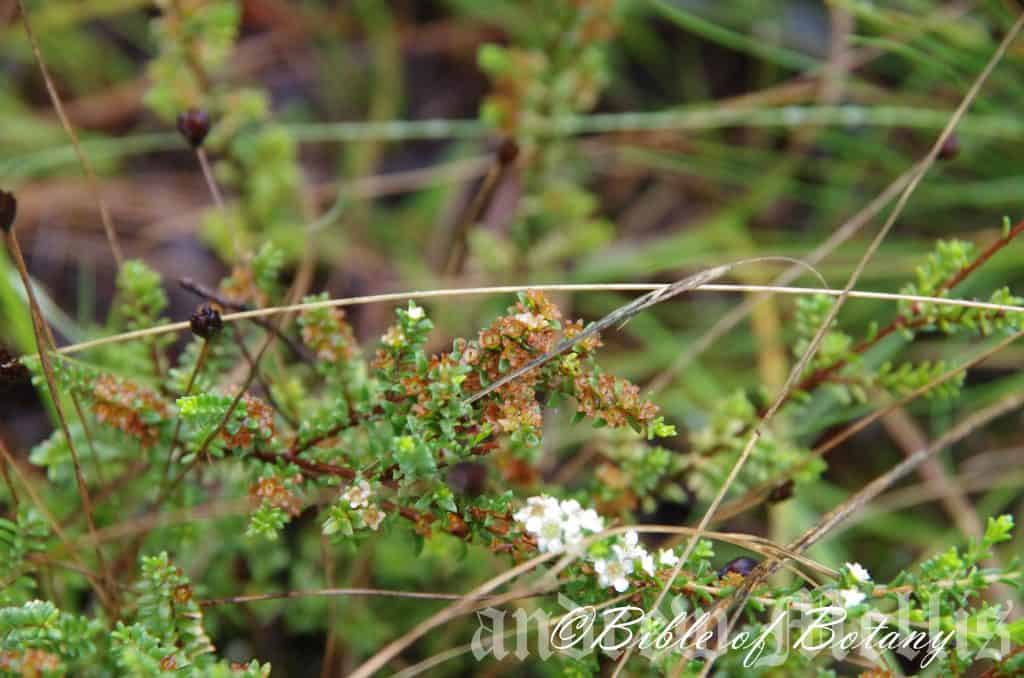
The Pinnacles NSW
Baeckea diosmifolia
Classification:
Unranked: Eudicots
Unranked: Rosids
Subclass: Magnoliidae
Order: Myrtales
Family: Myrtaceae
Tribe: Chamelaucieae
Genus: Named in honour of Carl Linneus’s best friend Dr. Abraham Baeck, 1717-1795, who was a Swedish naturalist and physician.
Specie:From Dîos, which is Ancient Greek for divine and Folium, which is Latin for a leaf. It refers to leaves, which have a divine fragrance similar to the European Diosma genus.
Sub specie:
Common Name: Fringed Baeckea.
Distribution:
Baeckea diosmifolia is found south from the Burnett River west of Bundaberg in south east Queensland to the Budawang Range in southern coastal New South Wales. It is found on and east of the Great Dividing Range.
https://avh.ala.org.au/occurrences/search?taxa=Baeckea+diosmifolia+#tab_mapView
Habitat Aspect Climate:
Baeckea diosmifolia prefer full sun. It is found on flats and plains in swampy marshes especially coastal wallum heaths and swampy heaths. The altitude ranges from 5 meters ASL to 750 meters ASL.
The temperatures range from minus 1 degree in August to 38 degrees in January.
The rainfall ranges from lows of 900mm to 1550mm average per annum. The rainfall is surprisingly consistent for a species that lives in marshy heaths with high water tables.
Soil Requirements:
Baeckea diosmifolia prefer coarse sands to sandy loams or peaty sands often with rocky substrates. The soils are usually derived from decomposed sandstones or accumulated peaty beach sands. The soil’s pH ranges from 4.5pH to 6.5pH. It tolerates seasonal water logged soils and seasonal high water tables. None saline soils to moderately saline soils are tolerated.
Height & Spread:
Wild Plants: 0.2m to 1m by 0.1m to 1m.
Characteristics:
Baeckea diosmifolia is a small bushy shrub. The fawn to grey-brown larger stems are sparsely flaky. Young and juvenile branches are reddish-brown tending reddish-olive green on the branchlets and are olive-green and glabrous near the apexes.
The opposite leaves are erect, broad ovate to oblong leaves of Baeckea diosmifolia measure 2mm to 6mm in length by 1mm to 2mm in width. The petioles measure 0mm to 0.6mm in length. The bases are attenuate while the apexes are obtuse or broadly acute often with a recurved tip. The concolourous leaves are deep green, glossy and glabrous. The laminas are flat on the upper laminas while the lower laminas are flat to convex. The oil dots are minute and numerous. The mid vein is not prominent on either lamina. The margins are entire or finely toothed or sparsely covered in what appears to be short hispid hairs. Young leaves are glossy grass-green.
The inflorescences of Baeckea diosmifolia are born singularly from the leaf axils. The pedicels are glabrous and measure 0.2mm to 0.6mm in length. The individual flowers measure 5mm to 6.5mm in diameter. The lanceolate to obovate bracteoles measure 1.5mm to 4mm in length. The glabrous hypanthium measures 3.5mm to 5.5mm in length by 3.5mm to 5.5mm in diameter. The white to creamy-green triangular, acute or orbicular sepals’ measure 1mm to 2mm in diameter. The 5 white orbicular petals measure 1.8mm to 2.4mm length by 1.8mm to 2.4mm in diameter.
The 8 white stamens are opposite the petals in a 1:2:1:2:2 formations on the rim of the hypanthium. They measure 0.8mm to 1mm in length. The basifixed anthers are pale fawn.
The pale translucent lime-green style is centrally positioned on the pale lime-green disc. The styles measure to 0.7mm in length. The pale lime green stigma measures 0.4mm in diameter. Flowering occurs from September to mid-January.
Baeckea diosmifolia fruits are coriaceous, cupular capsules. The capsules measure 1.5mm to 2mm in length by 1.5mm to 2mm in diameter. The lime-green capsules turn pale grey-brown on ripening. The sepals, petals and style are not persistent on the capsules. The minute reddish-brown seeds are triangular in shape.
Wildlife:
Baeckea diosmifolia is suitable for erosion control on wet sandy soils close to the coast.
It attracts numerous small beetles, pollen flies and small butterflies when in flower. Native bees are also attracted to the flowers.
Cultivation:
Baeckea diosmifolia is a beautiful shrub that looks great in full sun light with its deep green foliage and consistent heavy flowering every summer. It will grow from 1 meter to 1.5 meters in height by 1 meter to 1.5 meters in diameter when grown in the garden in an open sunny situation. Once established they’re moderately frost hardy and drought resistant though leaf drop will occur.
Baeckea diosmifolia would make outstanding contribution to a moist heath garden. Here it can be used as the taller growing plant scattered throughout the heath scene. When you design a flat heath garden which Baeckea diosmifolia is well suited don’t use contours to display the plants as heath lands are almost always flat or have a slight rise. Plants must be planted close together and be short so you can see over the tallest ones with the exception of one or two plants at the most. These will be feature plants. The idea is to achieve a feeling of expansive flatness. This can be achieved with using the Baeckea diosmifolia’s deep green ovate or oblong leaves and having them contrasting with finer pale green or soft grey to glaucous coloured foliage. Use a lot of procumbent plants like Carpobrotus edulis or Hibbertia specie. Mix them with other smaller shrubs so none of them dominate the scene but blend in to give a mosaic of foliage colours that you oversee. Here I immediately think of Actinotis helianthi or Grevillea thelemanniana for two great contrasting foliage.
Place it near old stumps and roots to make the stumps or roots look larger. Remember this plant can be rather large for this type of garden and grows much taller and wider in cultivation so be sparingly with the other plants when highlighting other features. A single shrub planted near a billabong with a few scattered herbs like Dampier specie, Leschenaultia specie or Hibbertia species would be far more effective than a crowded waterfall or cascade.
This shrub would make an ideal bonsai speciemen, as it is fast to establish from seed. The trunks and branches are flexible and will form the gnarled appearance early in life.
Propagation:
Seeds: Collecting seeds from mature trees of Baeckea diosmifolia is not the easiest as they are dispersed very quickly once ripe. Seeds can be collected by placing a sheet at the base of a tree when seeds are falling from the trees or placing brown paper bags around the ends of the branchlets as the capsules start turning brown. You should collect enough in a day for personal use. The fresh seeds can be sown directly into a seed raising mix with the sepals still attached covering them to a depth of 5mm. Seeds usually germinate quickly if fresh with a strike rate of over 80mm usually being attained.
When the seedlings are 20mm to 30mm tall, prick them out and plant them into 50mm native tubes using a good quality mix.
Once the seedlings reach 100mm to 150mm in height nip the tips out and plant them out into their permanent position.
For mass plantings for a feature plant them at 0.8 meters to 1 meter centers for hedges.
Cuttings: Use 100mm long softwood cuttings prepared from newly hardened material from the present season’s growth. Shoots are suitable for making softwood cuttings when they can be snapped easily when bent and when they still have a gradation of leaf size (oldest leaves are mature while newest leaves are still small).
1 prepare the cutting mix by adding one third sharp clean river sand, one third peat and one third perlite. These ingredients are sterile,
2 Select good material from non diseased plants,
3 Select semi green stems for cuttings. Look for a stem with two or three nodes,
4 Place the cutting on a flat, hard surface, and make a clean slice through the middle of the lower node on an angle towards the base, with a sterilized sharp knife or razor blade. – This scarification of the node will increase the chances of roots emerging from this spot. Now remove all but one or two the leaves, leaving the apex leaves in tact. If the leaves are very large in proportion to the stem, cut off the apical halves.
5 Some plants root easily, but a rooting hormone can help others by stimulating the cutting into sending out new roots. Fill a saucer with water, and place some rooting hormone into another container like a bottle top. Dip the node end of the cutting into the water and then into the rooting hormone. Tap off any excess hormone,
6 Use a small dipple stick or old pencil to poke a hole into the soilless potting mix. Ensure the hole is slightly larger than the stem diameter and be careful not to wipe the rooting hormone off the cuttings base, place the cuttings in a pattern ensuring the cuttings are not touching each other,
7 I like to place the pots in Plastic bags to help maintain temperature and moisture. Place in a semi shaded place like under 50mm shade cloth.
8 When the cuttings have struck, open the bag to allow air circulation for a few days to a week,
9 Once hardened off remove the cuttings from the bag and allow to further hardening for a few more days,
10 Transplant into a good.
Fertilize using Seaweed, fish emulsion or organic chicken pellets soaked in water on an alternate basis. Fertilize every two months until the plants are established then twice annually in early September or March to maintain health, vitality and better flowering and better quality fruit.
Further Comments from Readers:
“Hi reader, it seems you use The Bible of Botany a lot. That’s great as we have great pleasure in bringing it to you! It’s a little awkward for us to ask, but our first aim is to purchase land approximately 1,600 hectares to link several parcels of N.P. into one at The Pinnacles NSW Australia, but we need your help. We’re not salespeople. We’re amateur botanists who have dedicated over 30 years to saving the environment in a practical way. We depend on donations to reach our goal. If you donate just $5, the price of your coffee this Sunday, We can help to keep the planet alive in a real way and continue to bring you regular updates and features on Australian plants all in one Botanical Bible. Any support is greatly appreciated. Thank you.”
In the spirit of reconciliation we acknowledge the Bundjalung, Gumbaynggirr and Yaegl and all aboriginal nations throughout Australia and their connections to land, sea and community. We pay our respect to their Elders past, present and future for the pleasures we have gained.

Coffs Harbour Botanic Gardens NSW

Coffs Harbour Botanic Gardens NSW

Coffs Harbour Botanic Gardens NSW

Coffs Harbour Botanic Gardens NSW
Baeckea frutescens
Classification:
Unranked: Eudicots
Unranked: Rosids
Subclass: Magnoliidae
Order: Myrtales
Family: Myrtaceae
Tribe: Chamelaucieae
Genus: Named in honour of Carl Linneus’s best friend Dr. Abraham Baeck, 1717-1795, who was a Swedish naturalist and physician.
Specie: From Frutic?ns, which is Latin for a fruit. It refers to any capsule, follicle, berry, aggregate, drupe, pod, etc. that contains a seed or seeds. A typical fruit is made up of several parts including the Exocarpos, mesocarp, endocarp and seeds.
Sub specie:
Common Name:
Distribution:
Baeckea frutescens is found south from the Burnett River near Bundaberg in southern coastal Queensland to Foster in central coastal New South Wales. There are 3 disjunct populations on Cape York Peninsular to the Torres Straight Islands. It is found from the on the eastern side of the Great Dividing Range to the coast.
https://avh.ala.org.au/occurrences/search?taxa=Baeckea+frutescens+#tab_mapView
Habitat Aspect Climate:
Baeckea frutescens prefer full sun. It is found on flats and plains in swampy marshes especially coastal wallum heaths and swampy heaths. The altitude ranges from 5 meters ASL to 240 meters ASL
The temperatures range from 1 degree in August to 38 degrees in January.
The rainfall ranges from lows of 900mm to 1550mm average per annum. The rainfall is surprisingly consistent for a species that lives in marshy heaths with high water tables.
Soil Requirements:
Baeckea frutescens prefer coarse sands to sandy loams or peaty sands often with rocky substrates. The soils are usually derived from decomposed sandstones or accumulated peaty beach sands. The soil’s pH ranges from 4.5pH to 6.5pH. It tolerates seasonal water logged soils and seasonal high water tables. None saline soils to moderately saline soils are tolerated.
Height & Spread:
Wild Plants: 1m to 1m by 1m to 1m.
Characteristics:
Baeckea frutescens is a small bushy shrub with pendant stems. The fawn to grey-brown larger stems is sparsely flaky. Young and juvenile branches are pinkish-brown tending pinkish-olive green on the branchlets and are pale olive-green and glabrous near the apexes.
The opposite leaves are often clustered on short auxiliary shoots near the apexes are erect and linear. The leaves of Baeckea frutescens measure 4mm to 10mm in length by 0.5mm to 1mm in width. The petioles measure 0.6mm to 1.2mm in length. The bases are attenuate while the apexes are acute. The mid vein is not prominent on either lamina. The concolourous leaves are mid green, semi glossy to dull and glabrous. The laminas are concave on the upper laminas while the lower laminas are flat. The oil dots are minute and numerous. The margins are entire. Young leaves are glossy grass-green.
The inflorescences of Baeckea frutescens are born singularly from the leaf axils. The pedicels are glabrous and measure 1mm to 2mm in length. The individual flowers measure 5mm to 6.5mm in diameter. The glabrous hypanthium measures 3.5mm to 5mm in length by 3.5mm to 5mm in diameter. The 5 creamy-green orbicular sepals measure 1mm to 2mm in diameter. The 5 white orbicular petals measure 1.4mm to 1.8mm length by 1.4mm to 1.8mm in diameter.
The 7 to 13 white stamens are opposite the petals usually in a 1:2:1:2:1 or 2:3:2:3:3 formations on the rim of the hypanthium. They measure 0.5mm to 0.7mm in length. The basifixed anthers are pale fawn.
The pale translucent lime-green style is centrally positioned in a hollow in the pale lemon lime-green disc. The styles measure to 1mm in length. The pale lemon lime green stigma measures 0.3mm in diameter. Flowering occurs from September to November.
Baeckea frutescens fruits are coriaceous, cupular capsules. The capsules measure 1.5mm to 2mm in length by 1.5mm to 2mm in diameter. The lime-green capsules turn pale grey-brown on ripening. The sepals, petals and style are not persistent on the capsules.
Wildlife:
Baeckea frutescens is suitable for erosion control on wet sandy soils close to the coast.
It attracts numerous small beetles, pollen flies and small butterflies when in flower. Native bees are also attracted to the flowers.
Cultivation:
Baeckea frutescens is a beautiful shrub that looks great in full sun light with its bright green foliage and consistent heavy flowering every summer. It will grow from 0.8 meter to 1.2 meters in height by 0.8 meter to 1.2 meters in diameter when grown in the garden in an open sunny situation. Once established they’re moderately frost hardy and drought resistant though leaf drop will occur.
It would make outstanding contribution to a moist heath garden. Here they can be used as the taller growing plant scattered throughout the heath scene. When you design a flat heath garden which Baeckea frutescens is well suited don’t use contours to display the plants as heath lands are almost always flat or have a slight rise. Plants must be planted close together and be short so you can see over the tallest ones with the exception of one or two plants at the most. These will be feature plants. The idea is to achieve a feeling of expansive flatness. This can be achieved with using the Baeckea frutescence’s grass-green linear leaves and having them contrasting with larger deeper green or soft grey to glaucous coloured foliage. Use a lot of procumbent plants like Carpobrotus edulis or Dampier sylvestris for brilliant colour. Mix them with other smaller shrubs so none of them dominate the scene but blend in to give a mosaic of foliage colours that you oversee. Actinotis helianthi or Anigozanthos flavida dwarf forms both have great contrasting foliage and flowers.
Place them near old stumps and roots to make the stumps or roots look larger. Remember this plant can be rather large for this type of garden and grows much taller and wider in cultivation so be sparingly with the other plants when highlighting other features. A single shrub planted near a medium frog or fish pond with a few scattered herbs like Dampier specie, Leschenaultia specie or a Hibbertia species or two well positioned Anigozanthos specie would be far more effective than a crowded waterfall or cascade.
Propagation:
Seeds: Collecting seeds from mature trees of Baeckea frutescens is not the easiest as they are dispersed very quickly once ripe. Seeds can be collected by placing a sheet at the base of a tree when seeds are falling from the trees or placing brown paper bags around the ends of the branchlets as the capsules start turning brown. You should collect enough in a day for personal use. The fresh seeds can be sown directly into a seed raising mix with the sepals still attached covering them to a depth of 5mm. Seeds usually germinate quickly if fresh with a strike rate of over 80mm usually being attained.
When the seedlings are 20mm to 30mm tall, prick them out and plant them into 50mm native tubes using a good quality mix.
Once the seedlings reach 100mm to 150mm in height nip the tips out and plant them out into their permanent position.
For mass plantings for a feature plant them at 0.8 meters to 1 meter centers for hedges.
Cuttings: Use 100mm long softwood cuttings prepared from newly hardened material from the present season’s growth. Shoots are suitable for making softwood cuttings when they can be snapped easily when bent and when they still have a gradation of leaf size (oldest leaves are mature while newest leaves are still small).
1 prepare the cutting mix by adding one third sharp clean river sand, one third peat and one third perlite. These ingredients are sterile,
2 Select good material from non diseased plants,
3 Select semi green stems for cuttings. Look for a stem with two or three nodes,
4 Place the cutting on a flat, hard surface, and make a clean slice through the middle of the lower node on an angle towards the base, with a sterilized sharp knife or razor blade. – This scarification of the node will increase the chances of roots emerging from this spot. Now remove all but one or two the leaves, leaving the apex leaves in tact. If the leaves are very large in proportion to the stem, cut off the apical halves.
5 Some plants root easily, but a rooting hormone can help others by stimulating the cutting into sending out new roots. Fill a saucer with water, and place some rooting hormone into another container like a bottle top. Dip the node end of the cutting into the water and then into the rooting hormone. Tap off any excess hormone,
6 Use a small dipple stick or old pencil to poke a hole into the soilless potting mix. Ensure the hole is slightly larger than the stem diameter and be careful not to wipe the rooting hormone off the cuttings base, place the cuttings in a pattern ensuring the cuttings are not touching each other,
7 I like to place the pots in Plastic bags to help maintain temperature and moisture. Place in a semi shaded place like under 50mm shade cloth.
8 When the cuttings have struck, open the bag to allow air circulation for a few days to a week,
9 Once hardened off remove the cuttings from the bag and allow to further hardening for a few more days,
10 Transplant into a good.
Fertilize using Seaweed, fish emulsion or organic chicken pellets soaked in water on an alternate basis. Fertilize every two months until the plants are established then twice annually in early September or March to maintain health, vitality and better flowering and better quality fruit.
Further Comments from Readers:
“Hi reader, it seems you use The Bible of Botany a lot. That’s great as we have great pleasure in bringing it to you! It’s a little awkward for us to ask, but our first aim is to purchase land approximately 1,600 hectares to link several parcels of N.P. into one at The Pinnacles NSW Australia, but we need your help. We’re not salespeople. We’re amateur botanists who have dedicated over 30 years to saving the environment in a practical way. We depend on donations to reach our goal. If you donate just $5, the price of your coffee this Sunday, We can help to keep the planet alive in a real way and continue to bring you regular updates and features on Australian plants all in one Botanical Bible. Any support is greatly appreciated. Thank you.” In the spirit of reconciliation we acknowledge the Bundjalung, Gumbaynggirr and Yaegl and all aboriginal nations throughout Australia and their connections to land, sea and community. We pay our respect to their Elders past, present and future for the pleasures we have gained.

Yuraigir National Park NSW
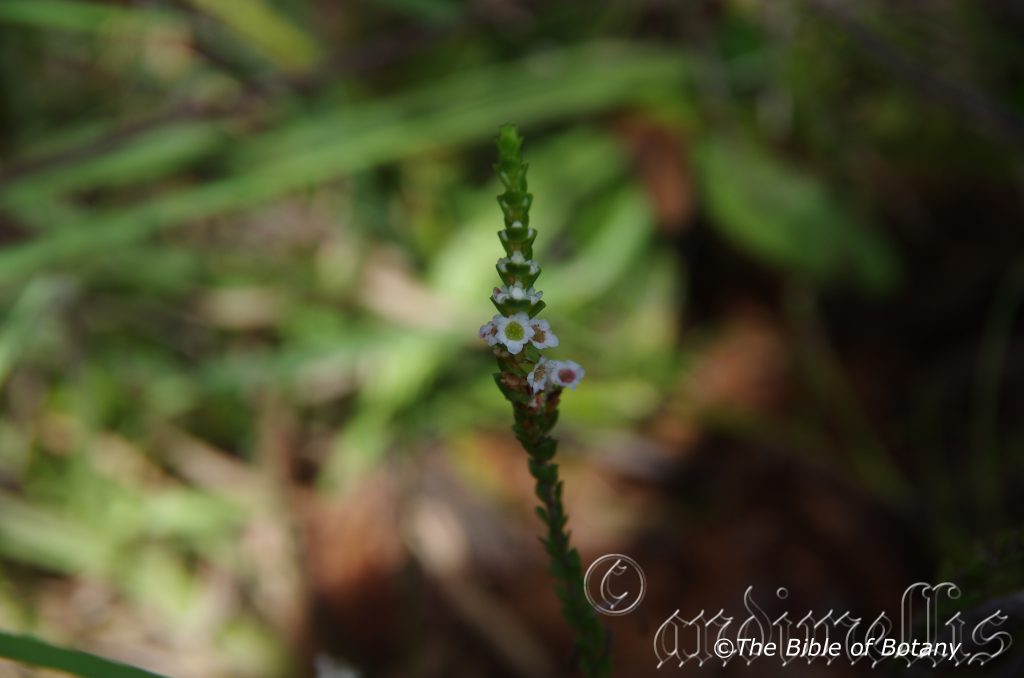
Yuraigir National Park NSW
Baeckea imbricata
Classification:
Unranked: Eudicots
Unranked: Rosids
Subclass: Magnoliidae
Order: Myrtales
Family: Myrtaceae
Tribe: Chamelaucieae
Genus: Named in honour of Carl Linneus’s best friend Dr. Abraham Baeck, 1717-1795, who was a Swedish naturalist and physician.
Specie:From Imbric?tum, which is Latin for shaped like a tile. It refers to an organ, which overlaps another organ or series of organs, which resemble laid roof tiles or fish scales. Both margins of a petal overlap the adjacent petal compared to contort where one margin overlaps the adjacent petal.
Sub specie:
Common Name: Heath Myrtle.
Distribution:
Baeckea imbricata is found south from the Burnett River near Gympie in south eastern Queensland to Bawley Point in southern coastal New South Wales. It is found on and east of the Great Dividing Range to the coast and in the Blue Mountains.
https://avh.ala.org.au/occurrences/search?taxa=Baeckea+imbricata+#tab_mapView
Habitat Aspect Climate:
Baeckea imbricata prefer full sun. It is found on flats and plains in swampy marshes especially coastal wallum heaths and swampy heaths. The altitude ranges from 5 meters ASL to 250 meters ASL
The temperatures range from 1 degree in August to 38 degrees in January.
The rainfall ranges from lows of 900mm to 1550mm average per annum. The rainfall is surprisingly consistent for a species that lives in marshy heaths with high water tables.
Soil Requirements:
Baeckea imbricate prefer coarse sands to sandy loams or peaty sands often with rocky substrates. The soils are usually derived from decomposed sandstones or accumulated peaty beach sands. The soil’s pH ranges from 4.5pH to 6.5pH. It tolerates seasonal water logged soils and seasonal high water tables. None saline soils to moderately saline soils are tolerated.
Height & Spread:
Wild Plants: 1m to 1m by 0.6m to 0.8m.
Characteristics:
Baeckea imbricata is a small bushy shrub with pendant stems. The fawn to grey-brown larger stems is sparsely flaky and covered with the old leaf scars behind the lower leaves. Young and juvenile branches are pinkish-brown tending pinkish-olive green to pale green near the apexes on the younger stems while the new shoots are pale lime-green and red or purple-red and glabrous.
The opposite tightly packed leaves of Backea imbricata are on short auxiliary shoots near the apexes or along the stems. The leaves are orbicular to broadly ovate. The leaves of Baeckea imbricata measure 3mm to 6mm in length by 2.5mm to 5.5mm in width. The petioles measure 0.4mm to 0.6mm in length. The bases are cuneate while the apexes are obtuse often with a short recurved tip. The discolourous leaves are mid green, semi glossy and glabrous on the upper laminas while the lower laminas are slightly paler and dull. The laminas are flat to curve upwards from the midvein to the margins. The oil dots are minute and numerous. The mid vein is slightly prominent on the lower lamina. The margins are entire to finely tooth. Young leaves are glossy grass-green.
The inflorescences of Baeckea imbricata are born singularly from the leaf axils. The pedicels are glabrous and measure 0.5mm to 1mm in length. The individual flowers measure 5mm to 8mm in diameter. The bracteoles ovate to lanceolate bracteoles measure 1.5mm to 2.5mm in length. The glabrous lime-green to pinkish-green hypanthia is deeper pink around the margins and measure 4mm to 4.5mm in length by 4mm to 4.5mm in diameter. The 5 pinkish-white to white triangular to orbicular sepals measure 1.5mm to 2mm in diameter. The 5 white to pale pink orbicular petals measure 1.5mm to 2.2mm length by 1.5mm to 2.2mm in diameter.
The 5 to 7 white stamens are opposite the petals usually in a 1:2:1:1:1 or 1:1:2:1:1 formations on the rim of the hypanthia. They measure 0.3mm to 0.5mm in length. The basifixed anthers are white.
The pale pinkish-yellow style is centrally positioned in the pale lemon to pinkish-yellow disc. The style measures 0.8mm to 1mm in length. The white to pale creamy white stigma measures 0.2mm in diameter. Flowering occurs from October to early March.
Baeckea imbricata fruits are coriaceous, cupular capsules. The capsules measure 2mm to 2.2mm in length by 2mm to 2.2mm in diameter. The lime-green capsules turn pale grey-brown on ripening. The sepals, petals and style are not persistent on the capsules. The minute reddish-brown seeds are angular.
Wildlife:
Baeckea imbricata is suitable for erosion control on wet sandy soils close to the coast.
It is another good plant for attracting numerous small beetles, pollen flies and small butterflies when in flower. Native bees are also attracted to the flowers.
Cultivation:
Baeckea imbricata is a beautiful shrub that looks great in full sun light with its deep green foliage and consistent heavy flowering every summer. It will grow from 0.8 meter to 1.2 meters in height by 0.6 meter to 0.8 meters in diameter when grown in the garden in an open sunny situation. Once established they’re moderately frost hardy and drought resistant though leaf drop will occur.
Baeckea imbricata would make outstanding contribution to a moist heath garden. Here it can be used as the taller growing plant scattered throughout the heath scene. When you design a flat heath garden which Baeckea imbricata is well suited don’t use contours to display the plants as heath lands are almost always flat or have a slight rise. Plants must be planted close together and be short so you can see over the tallest ones with the exception of one or two plants at the most. These will be feature plants. The idea is to achieve a feeling of expansive flatness. This can be achieved with using Baeckea imbricata’s grass-green linear leaves and having them contrasting with larger deeper green or soft grey to glaucous coloured foliage. Use a lot of procumbent plants like Carpobrotus edulis or Dampier sylvestris for brilliant colour. Mix them with other smaller shrubs so none of them dominate the scene but blend in to give a mosaic of foliage colours that you oversee. Actinotis helianthi or Anigozanthos flavida dwarf forms both have great contrasting foliage and flowers.
Place it near old stumps and roots to make the stumps or roots look larger. Remember this plant can be rather large for this type of garden and grows much taller and wider in cultivation so be sparingly with the other plants when highlighting other features. A single shrub planted near a medium frog or fish pond with a few scattered herbs like Dampier specie, Leschenaultia specie or a Hibertia species or two well positioned Anigozanthos specie would be far more effective than a crowded waterfall or cascade.
Propagation:
Seeds: Collecting seeds from mature shrubs is not the easiest as they are dispersed very quickly once ripe. Seeds can be collected by placing a sheet at the base of a tree when seeds are falling from the trees or placing brown paper bags around the ends of the branchlets as the capsules start turning brown. You should collect enough in a day for personal use. The fresh seeds can be sown directly into a seed raising mix with the sepals still attached covering them to a depth of 5mm. Seeds usually germinate quickly if fresh with a strike rate of over 80mm usually being attained.
When the seedlings are 20mm to 30mm tall, prick them out and plant them into 50mm native tubes using a good quality mix.
Once the seedlings reach 100mm to 150mm in height nip the tips out and plant them out into their permanent position.
For mass plantings for a featured low hedge try 0.5 meters to 0.8 meters centers.
Cuttings: Use 100mm long softwood cuttings prepared from newly hardened material from the present season’s growth. Shoots are suitable for making softwood cuttings when they can be snapped easily when bent and when they still have a gradation of leaf size (oldest leaves are mature while newest leaves are still small).
Use 100mm long softwood cuttings prepared from newly hardened material from the present season’s growth. Shoots are suitable for making softwood cuttings when they can be snapped easily when bent and when they still have a gradation of leaf size (oldest leaves are mature while newest leaves are still small).
1 prepare the cutting mix by adding one third sharp clean river sand, one third peat and one third perlite. These ingredients are sterile,
2 Select good material from non diseased plants,
3 Select semi green stems for cuttings. Look for a stem with two or three nodes,
4 Place the cutting on a flat, hard surface, and make a clean slice through the middle of the lower node on an angle towards the base, with a sterilized sharp knife or razor blade. – This scarification of the node will increase the chances of roots emerging from this spot. Now remove all but one or two the leaves, leaving the apex leaves in tact. If the leaves are very large in proportion to the stem, cut off the apical halves.
5 Some plants root easily, but a rooting hormone can help others by stimulating the cutting into sending out new roots. Fill a saucer with water, and place some rooting hormone into another container like a bottle top. Dip the node end of the cutting into the water and then into the rooting hormone. Tap off any excess hormone,
6 Use a small dipple stick or old pencil to poke a hole into the soilless potting mix. Ensure the hole is slightly larger than the stem diameter and be careful not to wipe the rooting hormone off the cuttings base, place the cuttings in a pattern ensuring the cuttings are not touching each other,
7 I like to place the pots in Plastic bags to help maintain temperature and moisture. Place in a semi shaded place like under 50mm shade cloth.
8 When the cuttings have struck, open the bag to allow air circulation for a few days to a week,
9 Once hardened off remove the cuttings from the bag and allow further hardening for a few more days,
10 Transplant into a good quality potting mix that is moisture retentive.
Fertilize using Seaweed, fish emulsion or organic chicken pellets soaked in water on an alternate basis. Fertilize every two months until the plants are established then twice annually in early September or March to maintain health, vitality and better flowering and better quality fruit.
Once established then twice annually in early September or March to maintain health, vitality and better flowering and better quality fruit.
Further Comments from Readers:
“Hi reader, it seems you use The Bible of Botany a lot. That’s great as we have great pleasure in bringing it to you! It’s a little awkward for us to ask, but our first aim is to purchase land approximately 1,600 hectares to link several parcels of N.P. into one at The Pinnacles NSW Australia, but we need your help. We’re not salespeople. We’re amateur botanists who have dedicated over 30 years to saving the environment in a practical way. We depend on donations to reach our goal. If you donate just $5, the price of your coffee this Sunday, We can help to keep the planet alive in a real way and continue to bring you regular updates and features on Australian plants all in one Botanical Bible. Any support is greatly appreciated. Thank you.”
In the spirit of reconciliation we acknowledge the Bundjalung, Gumbaynggirr and Yaegl and all aboriginal nations throughout Australia and their connections to land, sea and community. We pay our respect to their Elders past, present and future for the pleasures we have gained.
Baeckea linifolia
Classification:
Unranked: Eudicots
Unranked: Rosids
Subclass: Magnoliidae
Order: Myrtales
Family: Myrtaceae
Tribe: Chamelaucieae
Genus: Named in honour of Carl Linneus’s best friend Dr. Abraham Baeck, 1717-1795, who was a Swedish naturalist and physician.
Specie: From Linum, which is Latin for flax and Folium, which is Latin for foliage. It refers to leaves or labellum on orchids, which resemble the leaf of the flax or a tongue.
Sub specie:
Common Name: Weeping Baeckea.
Distribution:
Baeckea linifolia is found south from Tewantin in southern coastal Queensland to Mallacoota in coastal northern Victoria. It is found on the eastern slopes of the Great Dividing Range to the coast and in the Blue Mountains.
https://avh.ala.org.au/occurrences/search?taxa=Baeckea+linifolia+#tab_mapView
Habitat Aspect Climate:
Baeckea linifolia prefer full sun to dappled light. It is found on flats and hills in wet sites particularly near waterfalls and streams. The altitude ranges from 5 meters ASL to 400 meters ASL
The temperatures range from minus 2 degree in August to 38 degrees in January.
The rainfall ranges from lows of 750mm to 2000mm average per annum.
Soil Requirements:
Baeckea linifolia prefers deep coarse sands, fine sands, and sandy loams to light fatty clays. The soils are usually derived from decomposed sandstones or accumulated peaty beach sands. The soil’s pH ranges from 4.5pH to 6.5pH. It does not tolerate water logged soils. None saline soils to moderately saline soils are tolerated.
Height & Spread:
Wild Plants: 1m to 1.6m by 1.2m to 1.5m.
Characteristics:
Baeckea linifolia is a small bushy shrub with pendant stems. The fawn to grey-brown larger stems is sparsely flaky. Young and juvenile branches are pinkish-brown tending pinkish-olive green to pale green near the apexes on the younger stems while the new shoots are pale lime-green and red or purple-red and glabrous.
The opposite, tightly packed leaves of Baeckea linifolia are more wide spreading along the stems on this species than other Baeckea. The leaves are linear or occasionally more or less terete. The leaves of Baeckea linifolia measure 6mm to 20mm in length by 0.5mm to 1mm in width. The petioles measure 0.5mm to 1mm in length. The bases are tapered while the apexes are acute. The concolourous leaves are mid grass-green to deep grass-green, semi glossy and glabrous. The laminas are flat to curve upwards from the midvein to the margins. The oil dots are minute and numerous. The mid vein is slightly prominent on the lower lamina and faintly visible from the upper lamina. The margins are entire. Young leaves are glossy grass-green.
The inflorescences of Baeckea linifolia are born singularly from the leaf axils. The pedicels are glabrous and measure 1.5mm to 2mm in length. The individual flowers measure 8mm to 12mm in diameter. The caduceus, ovate to lanceolate bracteoles measure 2.5mm to 3mm in length. The glabrous grass-green hypanthia measure 5mm to 6.5mm in length by 5mm to 6.5mm in diameter. The 5 pale pink to mid pink caduceus sepals are broadly triangular and measure 0.3mm to 0.5mm by 1.2mm to 1.6mm in width. The 5 white orbicular to broadly ovate petals measure 1.5mm to 2.5mm length by 1.5mm to 2.2mm in diameter.
The 8 to 15 white stamens are opposite the petals. The only formations I have seen around Grafton are 3:3:3:1:1 and 3:3:3:3:3 on the rim of the hypanthia. They measure 0.3mm to 0.5mm in length. The basifixed anthers are white.
The white to pale lime-green style is centrally positioned in the white, pale lemon, pale pinkish-yellow deepening with age disc. The style measures 0.4mm to 0.5mm in length. The white to pale creamy white stigma measures 0.2mm in diameter. Flowering occurs from late November to late January.
Baechea linifolia fruits are coriaceous, cupular capsules. The capsules measure 2mm to 3mm in length by 2mm to 3mm in diameter. The lime-green capsules turn maroon-red on ripening. The sepals, petals and style are not persistent on the capsules. The minute reddish-brown seeds are angular.
Wildlife:
Baeckea linifolia is suitable for erosion control on wet sandy soils close to the coast.
It is beneficial for attracting numerous small beetles, pollen flies and small butterflies when in flower. Native bees are also attracted to the flowers.
Cultivation:
Baeckea linifolia like all the plants of the genus is a beautiful shrub that looks great in full sun light with its deep green foliage and consistent heavy flowering every summer. It will grow from 1.8 meter to 2.6 meters in height by 0.8 meter to 2 meters in diameter when grown in the garden in an open sunny situation. Once established they’re moderately frost hardy and drought resistant though leaf drop will occur. Once moisture is returned to the soil the plants recover very quickly.
Baeckea linifolia would make outstanding contribution to a large moist heath garden. Here they can be used as the taller growing plant scattered throughout the heath scene. When you design a flat heath garden which Baeckea linifolia is well suited don’t use contours to display the plants as heath lands are almost always flat or have a slight rise. Plants must be planted close together and be short so you can see over the tallest ones with the exception of one or two plants at the most. These will be feature plants. The idea is to achieve a feeling of expansive flatness. This can be achieved with using the Baeckea linifolia’s grass-green linear leaves and having them contrasting with larger deeper green or soft grey to glaucous coloured foliage. Use a lot of procumbent plants like Carpobrotus edulis or Dampier sylvestris for brilliant colour. Mix them with other smaller shrubs so none of them dominate the scene but blend in to give a mosaic of foliage colours that you oversee. Actinotis helianthi or Anigozanthos flavida dwarf forms both have great contrasting foliage and flowers.
Remember this plant can be rather large for this type of garden and grows much taller and wider in cultivation so be sparingly with the other plants when highlighting other features. A single shrub planted near a medium frog or fish pond with a few scattered herbs like Dampier specie, Leschenaultia specie or a Hibertia species or two well positioned Anigozanthos specie would be far more effective than a crowded waterfall or cascade.
They are ideal when positioned near old stumps and roots to make the stumps or roots look larger especially when grown as a single trunk small tree. The fine foliage does not make it a strong plant for breaking up hard lines so plant them close so close observations are encouraged. Three, four or five planted as small trees in a small lawn garden bed or in the lawn will make a strong impact at close range.
This shrub would make a good bonsai subjects as it is fast to establish from seed. The trunks and branches are flexible and would be easily trained giving a gnarled appearance early in life.
Propagation:
Seeds: Collecting seeds from mature shrubs is not the easiest as they are dispersed very quickly once ripe. Seeds can be collected by placing a sheet at the base of a tree when seeds are falling from the trees or placing brown paper bags around the ends of the branchlets as the capsules start turning brown. You should collect enough in a day for personal use. The fresh seeds can be sown directly into a seed raising mix with the sepals still attached covering them to a depth of 5mm. Seeds usually germinate quickly if fresh with a strike rate of over 80mm usually being attained.
When the seedlings are 20mm to 30mm tall, prick them out and plant them into 50mm native tubes using a good quality mix.
Once the seedlings reach 100mm to 150mm in height nip the tips out and plant them out into their permanent position.
For mass plantings for a feature hedge try planting them at 0.8 meters to 1 meter centers.
Fertilize using Seaweed, fish emulsion or organic chicken pellets soaked in water on an alternate basis. Fertilize every two months until the plants are established then twice annually in early September or March to maintain health, vitality and better flowering and better quality fruit.
Cuttings: Use 100mm long softwood cuttings prepared from newly hardened material from the present season’s growth. Shoots are suitable for making softwood cuttings when they can be snapped easily when bent and when they still have a gradation of leaf size (oldest leaves are mature while newest leaves are still small).
Use 100mm long softwood cuttings prepared from newly hardened material from the present season’s growth. Shoots are suitable for making softwood cuttings when they can be snapped easily when bent and when they still have a gradation of leaf size (oldest leaves are mature while newest leaves are still small).
1 prepare the cutting mix by adding one third sharp clean river sand, one third peat and one third perlite. These ingredients are sterile,
2 Select good material from non diseased plants,
3 Select semi green stems for cuttings. Look for a stem with two or three nodes,
4 Place the cutting on a flat, hard surface, and make a clean slice through the middle of the lower node on an angle towards the base, with a sterilized sharp knife or razor blade. – This scarification of the node will increase the chances of roots emerging from this spot. Now remove all but one or two the leaves, leaving the apex leaves in tact. If the leaves are very large in proportion to the stem, cut off the apical halves.
5 Some plants root easily, but a rooting hormone can help others by stimulating the cutting into sending out new roots. Fill a saucer with water, and place some rooting hormone into another container like a bottle top. Dip the node end of the cutting into the water and then into the rooting hormone. Tap off any excess hormone,
6 Use a small dipple stick or old pencil to poke a hole into the soilless potting mix. Ensure the hole is slightly larger than the stem diameter and be careful not to wipe the rooting hormone off the cuttings base, place the cuttings in a pattern ensuring the cuttings are not touching each other,
7 I like to place the pots in Plastic bags to help maintain temperature and moisture. Place in a semi shaded place like under 50mm shade cloth.
8 When the cuttings have struck, open the bag to allow air circulation for a few days to a week,
9 Once hardened off remove the cuttings from the bag and allow to further hardening for a few more days,
10 Transplant into a good.
Fertilize using Seaweed, fish emulsion or organic chicken pellets soaked in water on an alternate basis. Fertilize every two months until the plants are established then twice annually in early September or March to maintain health, vitality and better flowering and better quality fruit.
e established then twice annually in early September or March to maintain health, vitality and better flowering and better quality fruit.
Further Comments from Readers:
“Hi reader, it seems you use The Bible of Botany a lot. That’s great as we have great pleasure in bringing it to you! It’s a little awkward for us to ask, but our first aim is to purchase land approximately 1,600 hectares to link several parcels of N.P. into one at The Pinnacles NSW Australia, but we need your help. We’re not salespeople. We’re amateur botanists who have dedicated over 30 years to saving the environment in a practical way. We depend on donations to reach our goal. If you donate just $5, the price of your coffee this Sunday, We can help to keep the planet alive in a real way and continue to bring you regular updates and features on Australian plants all in one Botanical Bible. Any support is greatly appreciated. Thank you.”
In the spirit of reconciliation we acknowledge the Bundjalung, Gumbaynggirr and Yaegl and all aboriginal nations throughout Australia and their connections to land, sea and community. We pay our respect to their Elders past, present and future for the pleasures we have gained.
Baeckea utilis
Classification:
Unranked: Eudicots
Unranked: Rosids
Subclass: Magnoliidae
Order: Myrtales
Family: Myrtaceae
Tribe: Chamelaucieae
Genus: Named in honour of Carl Linneus’s best friend Dr. Abraham Baeck, 1717-1795, who was a Swedish naturalist and physician.
Specie: From Utilis, which is Latin for to be useful. Its reference is unclear.
Sub specie:
Common Name: Mountain Baeckea.
Distribution:
Baeckea utilis is found south from Dorrigo in northern New South Wales to the Yarra Ranges National Park in southern Victoria. It is found on the Great Dividing Range.
https://avh.ala.org.au/occurrences/search?taxa=Baeckea+utilis+#tab_mapView
Habitat Aspect Climate:
Baeckea utilis prefer full sun to dappled sunlight. They are found wet mountainous heaths, mountainous depressions and drainage lines in schlerophyll forests and alpine heaths. The altitude ranges from 450 meters ASL to 1600 meters ASL
The temperatures range from minus 8 degree in August to 32 degrees in January.
The rainfall ranges from lows of 600mm to 2000mm average per annum.
Soil Requirements:
Baeckea utilis prefers deep, coarse sands, sandy loams to light fatty clays. The soils are usually derived from decomposed granites. The soil’s pH ranges from 5pH to 6pH. It tolerates water logged soils and high water tables. None saline soils to moderately saline soils are tolerated.
Height & Spread:
Wild Plants: 2m to 3m by 2m to 2.5m.
Characteristics:
Baeckea utilis is a small bushy shrub with pendant stems. The stems are often square in cross section. The deep brown-grey to burgundy-grey larger stems is glabrous to sparsely flaky. Young and juvenile branches are pinkish-green tending pinkish-olive green or pale green-brown near the apexes on the younger stems while the new shoots are pale lime-green tinged red or pink and glabrous.
The opposite leaves of Baeckea utilis are elliptical to oblanceolate and measure 4mm to 9mm in length by 1mm to 3mm in width. The petioles measure 1mm to 2mm in length. The bases are rounded attenuate while the apexes are obtuse-acute. The concolourous leaves are mid grass-green to deep grass-green, semi glossy and glabrous or faintly resinous. The laminas are flat or recurve slightly upwards from the midvein to the margins and decurve from the petioles to the apexes. The oil dots are minute and numerous. The mid vein is broad and slightly prominent on the lower lamina and faintly visible from the upper lamina. The margins are entire. Young leaves are glossy grass-green.
The inflorescences of Baeckea utilis are born singularly from the leaf axils. The mid green pedicels are glabrous and measure 2mm to 3mm in length. The individual flowers measure 8mm to 12mm in diameter. The glabrous mid green hypanthia measure 4.5mm to 6mm in length by 5mm to 7mm in diameter. The 5 white sepals are broadly ovate to broadly oblong and measure 0.5mm to 0.7mm by 0.6mm to 0.8mm in width. The 5 white orbicular to broadly ovate petals measure 1.5mm to 2mm length by 1.5mm to 2.2mm in diameter.
The 7 to 8 white stamens are opposite the petals. The stamens are arranged in 1:1:2:1:2 or 2:2:1:2:1 formations on the rim of the hypanthium. They measure 0.4mm to 0.6mm in length. The basifixed anthers are white.
The pale lime-green style turns deep purple-pink following anthesis and is centrally positioned in the pale lime-green disc which turns deep purple pink following anthesis. The style measures 0.4mm to 0.6mm in length. The white to pale creamy white stigma measures 0.2mm in diameter. Flowering occurs from late November to late January.
Baeckea utilis fruits are coriaceous, cupular capsules. The capsules measure 2mm to 2.5mm in length by 2mm to 2.5mm in diameter. The lime-green capsules turn maroon-red on ripening. The sepals, petals and style are not persistent on the capsules. The minute reddish-brown seeds are angular.
Wildlife:
Baeckea utilis is suitable for erosion control on wet sandy soils particularly in alpine and sub-alpine areas.
Baeckea utilis attracts numerous small beetles, pollen flies and small butterflies when in flower. Native bees including Trigona and meliponini are also attracted to the flowers.
Cultivation:
Baeckea utilis is a beautiful shrub that looks great in full sun light with its deep green foliage and consistent heavy flowering every summer in cold temperate to temperate gardens. It will grow from 2.5 meter to 3.6 meters in height by 2 meter to 2.5 meters in diameter when grown in the garden in an open sunny situation. Once established they’re very frost hardy and drought tolerant though leaf drop will occur. Once moisture is returned to the soil the plants recover very quickly.
Baeckea utilis would make an outstanding contribution to a large moist alpine heath garden. Here it can be used as the taller growing plant scattered throughout the heath scene. When you design a flat heath garden which it is well suited so don’t use contours to display the plants as heath lands are almost always flat or have a slight rise. Plants must be planted close together and be short so you can see over the tallest ones with the exception of one or two plants at the most. These will be feature plants and that is where Baeckea utilis stand out as the single trunk tree in such a landscape or wide spreading low shrub. The idea is to achieve a feeling of expansive flatness. This can be achieved with using the Baeckea utilis’s grass-green linear leaves and having them contrasting with larger deeper green or soft grey to glaucous coloured foliage. Use a lot of procumbent plants below Baeckea utilis when they are grown as a tree like Chenopodium erosum, Xerochrysum subundulam, Microseris lanceolata and Pentachondra pumila for brilliant colour. Mix them with other smaller shrubs so none of them dominate the scene but blend in to give a mosaic of foliage colours that you oversee. Stylidium armeria and Wahlenbergia ceracea (Waxy Bluebell) have great contrasting foliage and flowers.
Remember this plant can be rather large for this type of garden and grows much taller and wider in cultivation so plant it sparingly when highlighting other features. A single tree planted near a medium frog or fish pond with a few scattered herbs at lower altitudes like Dampier specie, Leschenaultia specie or a Hibertia species or two well positioned Anigozanthos specie would be far more effective than a crowded waterfall or cascade.
It is ideal when positioned near old stumps and roots to make the stumps or roots look larger especially when grown as a single trunk small tree. The fine foliage does not make it a strong plant for breaking up hard lines so plant them close so close observations are encouraged. Three, four or five planted as small trees in a small lawn garden bed or surrounded by Scleranthus biflorus or Scleranthus fasciculatus will make a strong impact at close range.
This shrub like all Baeckea specie would make a good bonsai subject as it is fast to establish from seed. The trunks and branches flexible and easily trained forming the gnarled trunk early in life.
Propagation:
Seeds: Collecting seeds from mature shrubs is not the easiest as they are dispersed very quickly once ripe. Seeds can be collected by placing a sheet at the base of a tree when seeds are falling from the trees or placing brown paper bags around the ends of the branchlets as the capsules start turning brown. You should collect enough in a day for personal use. The fresh seeds can be sown directly into a seed raising mix with the sepals still attached covering them to a depth of 5mm. Seeds usually germinate quickly if fresh with a strike rate of over 80mm usually being attained.
When the seedlings are 20mm to 30mm tall, prick them out and plant them into 50mm native tubes using a good quality mix.
Once the seedlings reach 100mm to 150mm in height nip the tips out and plant them out into their permanent position.
For mass plantings for a feature hedge use 0.8 meters to 1 meter centers.
Fertilize using Seaweed, fish emulsion or organic chicken pellets soaked in water on an alternate basis. Fertilize every two months until the plants are established then twice annually in early September or March to maintain health, vitality and better flowering and better quality fruit.
Cuttings: Use 100mm long softwood cuttings prepared from newly hardened material from the present season’s growth. Shoots are suitable for making softwood cuttings when they can be snapped easily when bent and when they still have a gradation of leaf size (oldest leaves are mature while newest leaves are still small).
Use 100mm long softwood cuttings prepared from newly hardened material from the present season’s growth. Shoots are suitable for making softwood cuttings when they can be snapped easily when bent and when they still have a gradation of leaf size (oldest leaves are mature while newest leaves are still small).
1 prepare the cutting mix by adding one third sharp clean river sand, one third peat and one third perlite. These ingredients are sterile,
2 Select good material from non diseased plants,
3 Select semi green stems for cuttings. Look for a stem with two or three nodes,
4 Place the cutting on a flat, hard surface, and make a clean slice through the middle of the lower node on an angle towards the base, with a sterilized sharp knife or razor blade. – This scarification of the node will increase the chances of roots emerging from this spot. Now remove all but one or two the leaves, leaving the apex leaves in tact. If the leaves are very large in proportion to the stem, cut off the apical halves.
5 Some plants root easily, but a rooting hormone can help others by stimulating the cutting into sending out new roots. Fill a saucer with water, and place some rooting hormone into another container like a bottle top. Dip the node end of the cutting into the water and then into the rooting hormone. Tap off any excess hormone,
6 Use a small dipple stick or old pencil to poke a hole into the soilless potting mix. Ensure the hole is slightly larger than the stem diameter and be careful not to wipe the rooting hormone off the cuttings base, place the cuttings in a pattern ensuring the cuttings are not touching each other,
7 I like to place the pots in Plastic bags to help maintain temperature and moisture. Place in a semi shaded place like under 50mm shade cloth.
8 When the cuttings have struck, open the bag to allow air circulation for a few days to a week,
9 Once hardened off remove the cuttings from the bag and allow to further hardening for a few more days,
10 Transplant into a good quality moisture retentive potting mix.
Fertilize using Seaweed, fish emulsion or organic chicken pellets soaked in water on an alternate basis. Fertilize every two months until the plants are established then twice annually in early September or March to maintain health, vitality and better flowering and better quality fruit.
Further Comments from Readers:
“Hi reader, it seems you use The Bible of Botany a lot. That’s great as we have great pleasure in bringing it to you! It’s a little awkward for us to ask, but our first aim is to purchase land approximately 1,600 hectares to link several parcels of N.P. into one at The Pinnacles NSW Australia, but we need your help. We’re not salespeople. We’re amateur botanists who have dedicated over 30 years to saving the environment in a practical way. We depend on donations to reach our goal. If you donate just $5, the price of your coffee this Sunday, We can help to keep the planet alive in a real way and continue to bring you regular updates and features on Australian plants all in one Botanical Bible. Any support is greatly appreciated. Thank you.”
In the spirit of reconciliation we acknowledge the Bundjalung, Gumbaynggirr and Yaegl and all aboriginal nations throughout Australia and their connections to land, sea and community. We pay our respect to their Elders past, present and future for the pleasures we have gained.
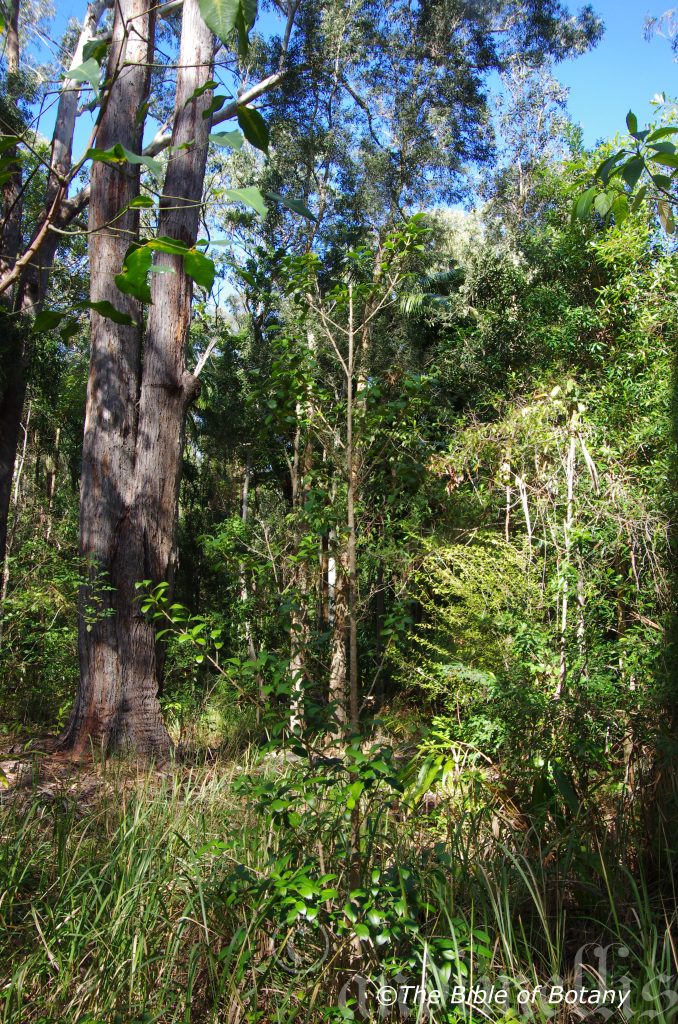
Coffs Harbour Botanic Gardens NSW

Coffs Harbour Botanic Gardens NSW

Coffs Harbour Botanic Gardens NSW

Coffs Harbour Botanic Gardens NSW
Baloghia inophylla
Classification:
Unranked: Eudicots
Unranked: Rosids
Order: Malphighiales
Family: Euphorbiaceae
Genus: Is probably named in honour of Dr. Joseph Balogh who studied the plants of Romania and Transylvania.
Specie:From In, which is Greek/Latin for in or into and Phullon/Phýllon, which is Ancient Greek for a leaf. It refers to a leaves, phyllodes or fronds, which have a very distinct features as in the thick leaves.
Sub specie:
Common Name: Ivory Birch or Brush Bloodwood.
Distribution:
Baloghia inophylla are found south from Cowen on Cape York Peninsular in far north Queensland to Tilba Tilba in southern coastal New South Wales. There is also an isolated population on Lord Howell Island. It is mainly found on and east of the Great Dividing Range to the coast.
https://avh.ala.org.au/occurrences/search?taxa=Baloghia+inophylla+#tab_mapView
Habitat Aspect Climate:
Baloghia inophylla prefer full sun to dappled shade. It is found on gentle slopes to steeper slopes in most types of dry, warm rainforests to moist warm rainforests or on the margins of moist Eucalyptus forests which are adjacent to rainforests. The altitude ranges from 250 meters ASL to 900 meters ASL
The temperatures range from minus 2 degrees in August to 38 degrees in January.
The rainfall ranges from lows of 850mm to 2000mm average per annum.
Soil Requirements:
Baloghia inophylla prefers better quality deep, light fatty clays to medium clays. The soils are usually derived from decomposed brown basalts, black basalts, shales or metamorphic rocks. The soil’s pH ranges from 5pH to 7pH. It does not tolerate water logged soils. None saline soils to moderately saline soils are tolerated.
Height & Spread:
Wild Plants: 15m to 25m by 8m to 15m.
Characteristics:
Baloghia iinophylla is a tall straight usually single trunk tree which flanges near the base on older specimens. The bark is pale grey to mid grey and glabrous. Young and juvenile branches and branchlets are mid green to deep green and glabrous. The bark exudes a clear watery liquid which turns scarlet to blood-red when damaged.
The oblong of broad oblanceolate opposite leaves of Baloghia inophylla measure 50mm to 150mm in length by 20mm to 60mm in width. The petioles measure 5mm to 10mm in length. The bases are slightly oblique and broadly cuneate while the apexes are broadly acuminate. The discolourous leaves are deep green, glossy and glabrous on the upper laminas while the lower laminas are paler and semi glossy. The laminas are flat to slightly recurve upwards from the mid vein to the margins. The mid vein is strongly prominent while the lateral veins are slightly prominent on the lower lamina and are visible on the upper lamina. The margins are entire and decurve close to the margin. The two scale leaves are pink externally and white internally and often leave a scar around the stems. There are two glands about 3mm above the base. Young leaves are glossy grass-green and glabrous.
The inflorescences of Baloghia inophylla are terminal racemes with the male and female flowers being born on separate racemes. The rachises, peduncles and pedicels are mid green and glabrous. The rachises measures 10mm to 15mm while the peduncles measure 30mm to 45mm in length while the pedicels measure 6mm to 18mm in length. The racemes measure 50mm to 70mm in diameter while the individual flowers measure 13mm to 20mm in diameter. The white, conical corolla is glabrous and measures 6mm to 8mm in length by 6mm to 8mm in diameter at the throat. The 5 pink to reddish-green triangular sepals are covered in white pulverulent hairs internally and measure 4mm to 6mm in length. The 5 white to creamy-white oblong petals have an obtuse apex and measure 10mm to 15mm length by 5mm to 7mm in width.
The numerous white to cream stamens measure 3mm to 5mm in length.
The pinkish-fawn ovaries are short and thick. The 3 pale creamy-green styles have bi lobed stigmas which are half the length of the pistil. The pistils measure 5mm to 7mm in length. The sweetly scented flowers occur from June to December.
Baloghia inophylla fruits are ovoidal, coriaceous capsules. The capsules have three distinct ribs with three fainter ribs and measure 9mm to 12mm in length by 12mm to 18mm in diameter. The green capsules turn purple-green, purple then brown on ripening. The petals are persistent at the base of the capsules while the style is persistent on each apex segment of the capsule.
The three seeds are deep grey with white striations and markings and are sparsely covered in pale brown hirsute hairs. The flattened ovoidal seeds measure 7mm to 8mm in length by 6mm to 7mm in width and 5mm to 6mm in breadth.
Wildlife:
Baloghia inophylla is suitable for erosion control in riparian zones and moist gallery forests.
Baloghia inophylla attracts numerous beetles and small butterflies when in flower. The native bees are also attracted to the flowers.
It is great for attaching orchids and epiphytic plants like Pyrrosia to the lower and upper branches.
Cultivation:
It would make an good fire retardant medium tree.
* Fire retardant plants act as radiant heat screens and absorb more heat from an approaching fire without burning.
* Fire retardant trees are able reduce wind speed near a house or out buildings.
* Fire retardant also trap embers and sparks carried by the wind.
* Fire retardant ground covers are able to catch burning embers without catching fire themselves, and also slow the travel of a fire through debris and litter on the ground.
Baloghia inophylla is a beautiful small tree that looks great in dappled light with its dark green foliage and consistent flowering every winter. It looks especially good when grown as a rainforest starter tree where it will reach 12 meters to 16 meters in height by 6 meters to 9 meters in diameter in the garden when grown in an open situation. Once established it is moderately frost hardy to temperatures down to minus 4 degrees centigrede. The dense canopy gives excellent shade on moist slopes and would be worthwhile growing on the western slopes for this reason alone if adequate moisture can be guaranteed.
It looks particularly good along moist gullies where it is excellent for starting a moist rainforest.
The trees would make very good accent trees in front of low set school buildings where they will break up hard rigid architectural lines and give warmth and breadth to a building with cooling shade in the summer time. In front of buildings if given balance especially where it could be grown in curves or along meandering pathways or between buildings to take away starkness that is often created.
Try using it in a larger court yard where the only other feature is a large rock, stump or formal or informal frog or fish pond. Next to such features their large leaves and sweetly scented flowers will gain plenty of attention without being overpowering. I am surprised that it has never been used in commercial entrances and foyers to break the ice and give a feeling of business as usual but somehow make the business more relaxing.
Propagation:
Seeds:
Collecting seeds from mature trees of Baloghia inophylla is easy as they are heavy and will drop below the trees or can be harvested from the trees as the capsules begin to split. The fresh seeds can be sown directly into a seed raising mix and covered to a depth of 5mm. Seeds maybe erratic in germination but a strike rate of over 80mm should be attained.
Alternatively the seeds can be sown directly into the 50mm native tubes.
When the seedlings are 20 to 30 mm tall, prick them out and plant them into 50mm native tubes using a good quality mix.
Once the seedlings reach 100mm to 150mm in height plant them out into their permanent position.
Baloghia inophylla is very versatile when it comes to landscaping the garden and can be planting at 5 meter to 6 meter centers for single trunk trees and 6 meters to 8 meters for multi trunk trees for various park scenes or at 2 meter centers for hedges.
Fertilize using Seaweed, fish emulsion or organic chicken pellets soaked in water on an alternate basis. Fertilize every two months until the plants are established then twice annually in early September or March to maintain health, vitality and better flowering and better quality fruit.
Further Comments from Readers:
“Hi reader, it seems you use The Bible of Botany a lot. That’s great as we have great pleasure in bringing it to you! It’s a little awkward for us to ask, but our first aim is to purchase land approximately 1,600 hectares to link several parcels of N.P. into one at The Pinnacles NSW Australia, but we need your help. We’re not salespeople. We’re amateur botanists who have dedicated over 30 years to saving the environment in a practical way. We depend on donations to reach our goal. If you donate just $5, the price of your coffee this Sunday, We can help to keep the planet alive in a real way and continue to bring you regular updates and features on Australian plants all in one Botanical Bible. Any support is greatly appreciated. Thank you.”
In the spirit of reconciliation we acknowledge the Bundjalung, Gumbaynggirr and Yaegl and all aboriginal nations throughout Australia and their connections to land, sea and community. We pay our respect to their Elders past, present and future for the pleasures we have gained.
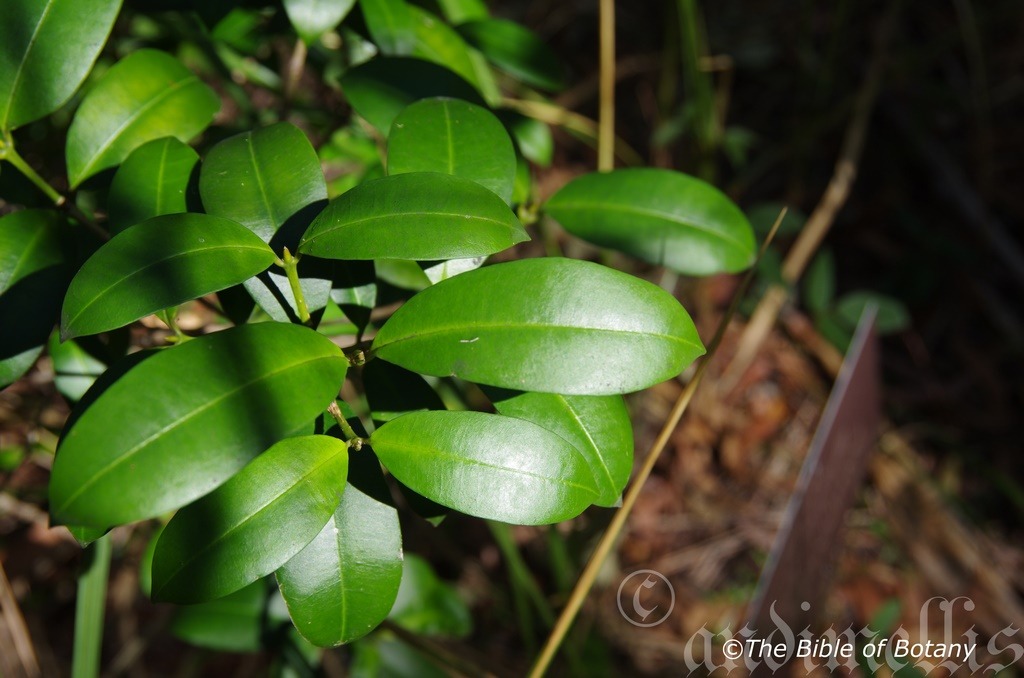
Coffs Harbour Botanic Gardens NSW

Coffs Harbour Botanic Gardens NSW
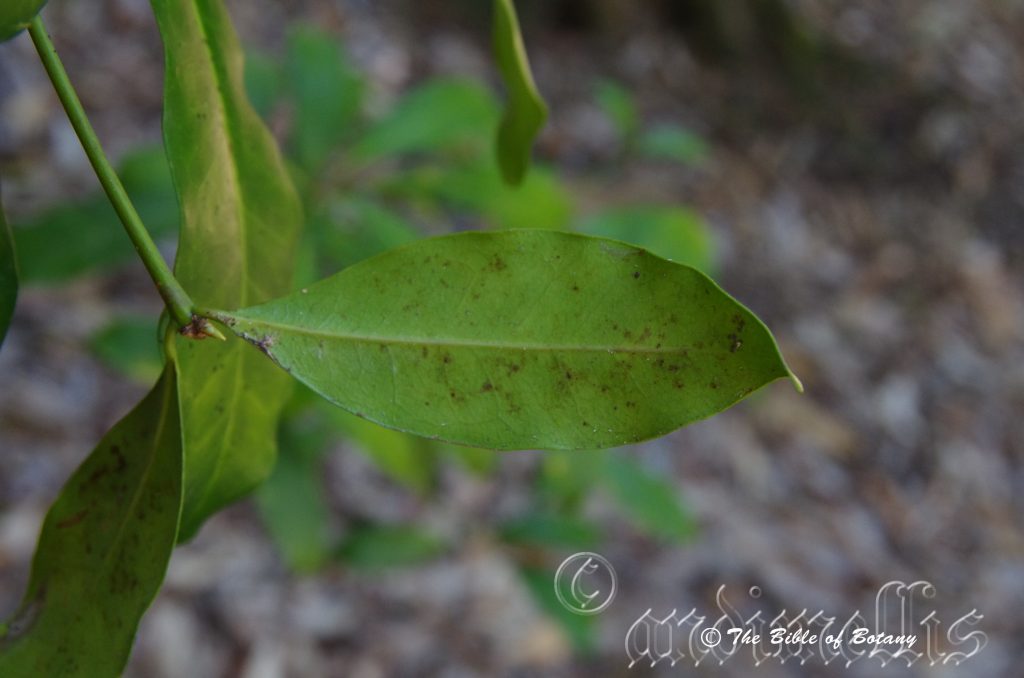
Coffs Harbour Botanic Gardens NSW
Baloghia marmorata
Classification:
Unranked: Eudicots
Unranked: Rosids
Order: Malphighiales
Family: Euphorbiaceae
Genus: Is probably named in honour of Dr. Joseph Balogh who studied the plants of Romania and Transylvania.
Specie: From Marmor?ta which is Ancient Greek or Marmor which is Latin for a calcite stone or rocks. It often refers to the seeds appearing like marbles.
Sub specie:
Common Name: Marbled Baloghia or Jointed Baloghia.
Distribution:
Baloghia marmorata is found several disjunct populations from Wide Bay in south eastern Queensland to Lismore in north eastern New South Wales. It is found on the lower levels of the Great Dividing Range.
https://avh.ala.org.au/occurrences/search?taxa=Baloghia+marmorata+#tab_mapView
Habitat Aspect Climate:
Baloghia marmorata prefer full sun to dappled shade. It is found on gentle slopes to steeper slopes in better type warm subtropical rainforests. The altitude ranges from 50 meters ASL to 400 meters ASL
The temperatures range from minus 2 degrees in August to 38 degrees in January.
The rainfall ranges from lows of 900mm to 2000mm average per annum.
Soil Requirements:
Baloghia marmorata prefers better quality deep, light fatty clays to medium clays. The soils are derived from decomposed black basalts. The soil’s pH ranges from 6pH to 7pH. It does not tolerate water logged soils. None saline soils to moderately saline soils are tolerated.
Height & Spread:
Wild Plants:15m to 25m by 8m to 15m.
Characteristics:
Baloghia marmorata is a tall straight usually single trunk tree which flanges near the base on older specimens. The bark is pale grey to grey and glabrous. Young and juvenile branches and branchlets are mid green to deep green and are covered in scale leaves. These are numerous and leave clusters of small scars on the stems at irregular intervals. The bark exudes a clear watery liquid which turns scarlet to blood-red when damaged.
The alternate or opposite oblong of broad oblanceolate leaves of Baloghia marmorata measure 80mm to 150mm in length by 20mm to 50mm in width. The green petioles are glabrous and measure 15mm to 50mm in length. The bases are tapering to cuneate while the apexes are tapering obtuse. The discolourous leaves are deep green, glossy and glabrous on the upper laminas while the lower laminas are paler and dull to semi glossy. The laminas recurve slightly upwards from the mid vein to the margins and decurve downwards near the apex. The mid vein is prominent while the lateral veins are faintly to slightly prominent on the lower lamina and are visible on the upper lamina. The margins are entire but decurve strongly close to the margin.
The inflorescences of Baloghia marmorata are simple, terminal cymes from lateral shoots. The plants are dioecious with the male and female flowers forming on separate cymes. The shoots are leafless except for 2 elliptical leaf like bracts below the cyme. The shoots measure 100mm to 150mm in length. The bracts with petiole measure 5mm in length while the bracts measure 30mm to 50mm in length. The smaller inflorescences bracts measure 6mm to 7mm in length. The rachises and pedicels are white and glabrous. The rachis measures 5mm to 10mm in length while the pedicels measure 10mm to 13mm in length. The white, narrow lanceolate petals are glabrous and measures 5mm to 6mm in length. The disc is carmine red.
The 50 odd white, filiform stamens measure 5mm to 7mm in length while the anthers are pale lemon-yellow. The yellowish female flowers have a trilobed stigma. The faint but sweetly scented flowers appear from late June to September.
Baloghia marmorata fruits are ovoidal, coriaceous capsules. The capsules have three distinct ribs with three fainter ribs and measure 15mm to 20mm in length by 15mm to 20mm in diameter. The green capsules turn brownish on ripening. The bracts are persistent at the base of the capsules while the style is persistent on each apex segment of the capsule.
Only a single seed matures in each capsule which is deep reddish-brown to red-brown with white markings.
Wildlife:
Baloghia marmorata is suitable for erosion control in riparian zones and moist gallery forests.
It is a good tree for attaching orchids and epiphytic plants like the various Pyrrosia species to the lower and upper branches.
Cultivation:
It would make an good fire retardant medium to tall tree.
* Fire retardant plants act as radiant heat screens and absorb more heat from an approaching fire without burning.
* Fire retardant trees are able reduce wind speed near a house or out buildings.
* Fire retardant also trap embers and sparks carried by the wind.
* Fire retardant ground covers are able to catch burning embers without catching fire themselves, and also slow the travel of a fire through debris and litter on the ground.
Baloghia marmorata is a beautiful small tree that looks great in dappled light with its dark green foliage and consistent flowering every winter. It looks especially good when grown as a small rainforest starter tree where it will reach 10 meters to 15 meters in height by 6 meters to 9 meters in diameter in the garden when grown in an open situation. Once established they’re moderately frost hardy to temperatures down to minus 2. The dense canopy gives excellent shade on moist slopes and would be worthwhile growing on the western slopes for this reason alone if adequate moisture can be guaranteed.
This tree would make very good accent trees in front of low set school buildings where they will break up hard rigid architectural lines and give warmth and breadth to a building with cooling shade in the summer time. In front of buildings they give balance especially where they could be grown in curves or along meandering pathways or between buildings to take away starkness that is often created.
Try using them in a larger court yard where the only other feature is a large rock, stump or formal or informal frog or fish pond. Next to such features their large leaves and sweetly scented flowers will gain plenty of attention without being overpowering. I am surprised that they have never been used in commercial entrances and foyers to break the ice and give a feeling of business as usual but somehow make the business more relaxing.
Propagation:
Seeds:
Collecting seeds from mature trees of Baloghia marmorata is easy as they are heavy and will drop below the trees or can be harvested from the trees as the capsules begin to split. The fresh seeds can be sown directly into a seed raising mix and covered to a depth of 5mm. Seeds maybe erratic in germination but a strike rate of over 80mm should be attained.
Alternatively the seeds can be sown directly into the 50mm native tubes.
When the seedlings are 20mm to 30mm tall, prick them out and plant them into 50mm native tubes using a good quality mix.
Once the seedlings reach 100mm to 150mm in height plant them out into their permanent position.
It is versatile when it comes to landscaping the garden and can be planting at 5 meter to 6 meter centers for single trunk trees and 6 meters to 10 meters for multi trunk trees for various park scenes or at 2 meter centers for hedges.
Fertilize using Seaweed, fish emulsion or organic chicken pellets soaked in water on an alternate basis. Fertilize every two months until the plants are established then twice annually in early September or March to maintain health, vitality and better flowering and better quality fruit.
Further Comments from Readers:
“Hi reader, it seems you use The Bible of Botany a lot. That’s great as we have great pleasure in bringing it to you! It’s a little awkward for us to ask, but our first aim is to purchase land approximately 1,600 hectares to link several parcels of N.P. into one at The Pinnacles NSW Australia, but we need your help. We’re not salespeople. We’re amateur botanists who have dedicated over 30 years to saving the environment in a practical way. We depend on donations to reach our goal. If you donate just $5, the price of your coffee this Sunday, We can help to keep the planet alive in a real way and continue to bring you regular updates and features on Australian plants all in one Botanical Bible. Any support is greatly appreciated. Thank you.”
In the spirit of reconciliation we acknowledge the Bundjalung, Gumbaynggirr and Yaegl and all aboriginal nations throughout Australia and their connections to land, sea and community. We pay our respect to their Elders past, present and future for the pleasures we have gained.

Lake Innes Nature Reserve NSW
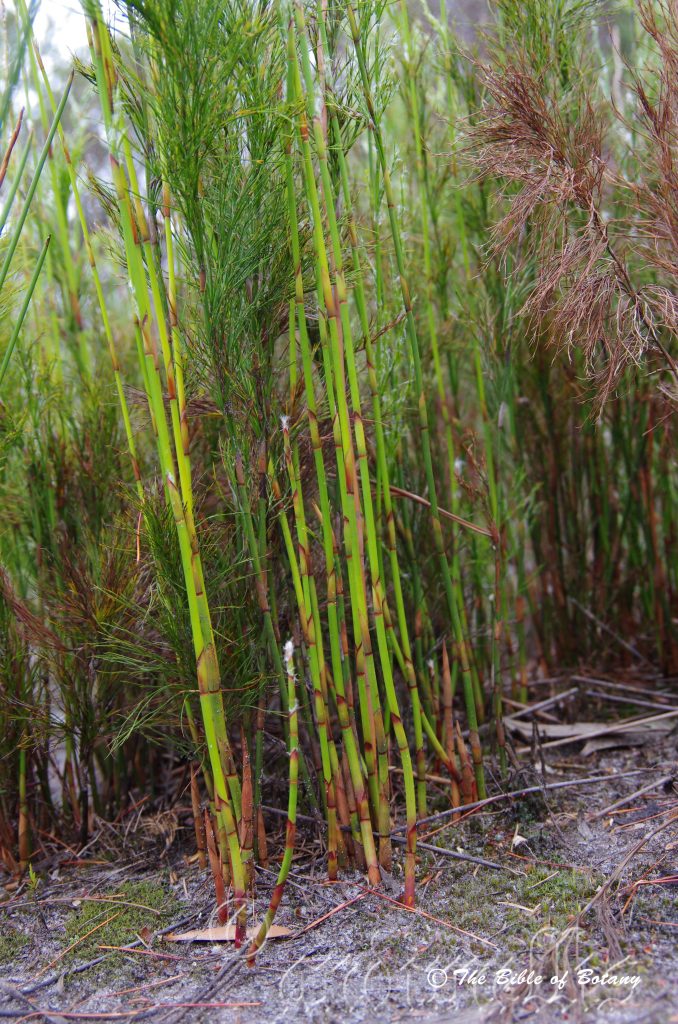
Lake Innes Nature Reserve NSW

Lake Innes Nature Reserve NSW
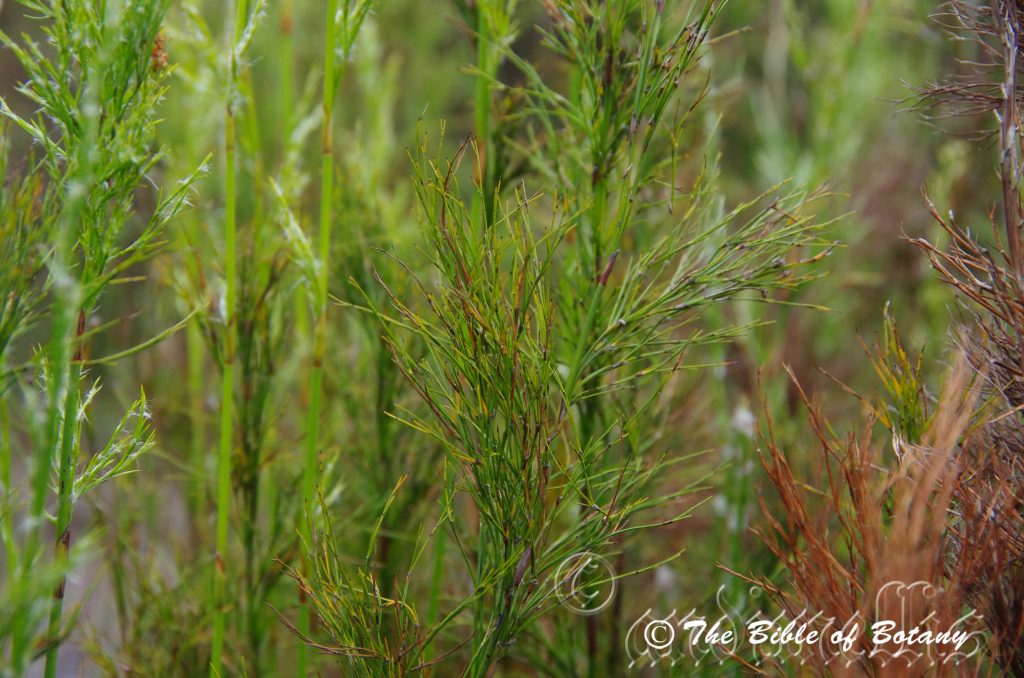
Lake Innes Nature Reserve NSW
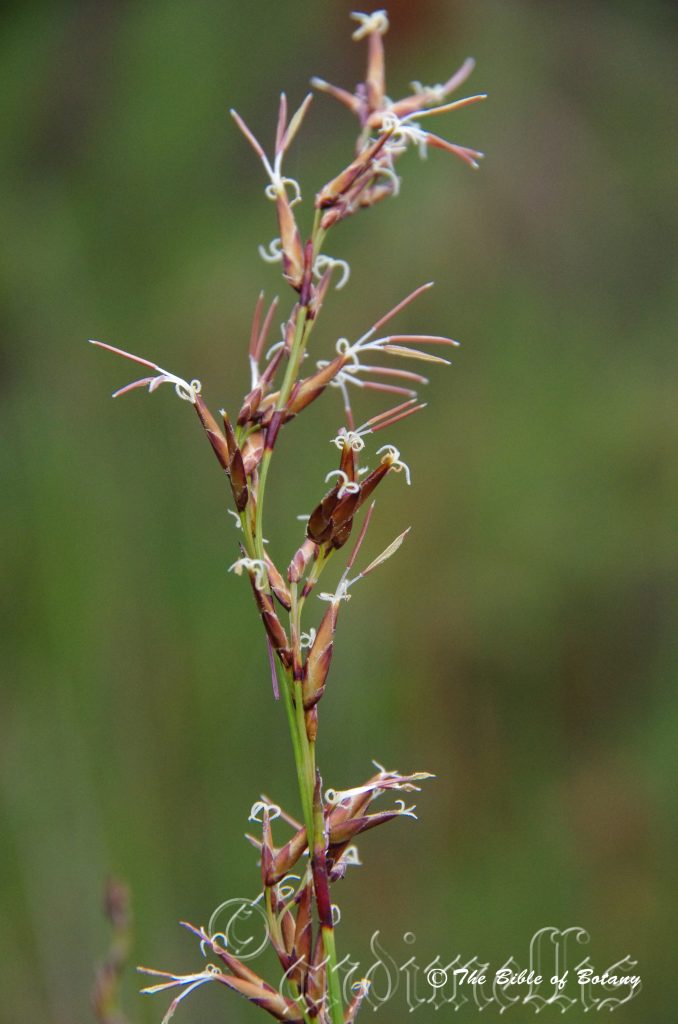
Lake Innes Nature Reserve NSW

Lake Innes Nature Reserve NSW
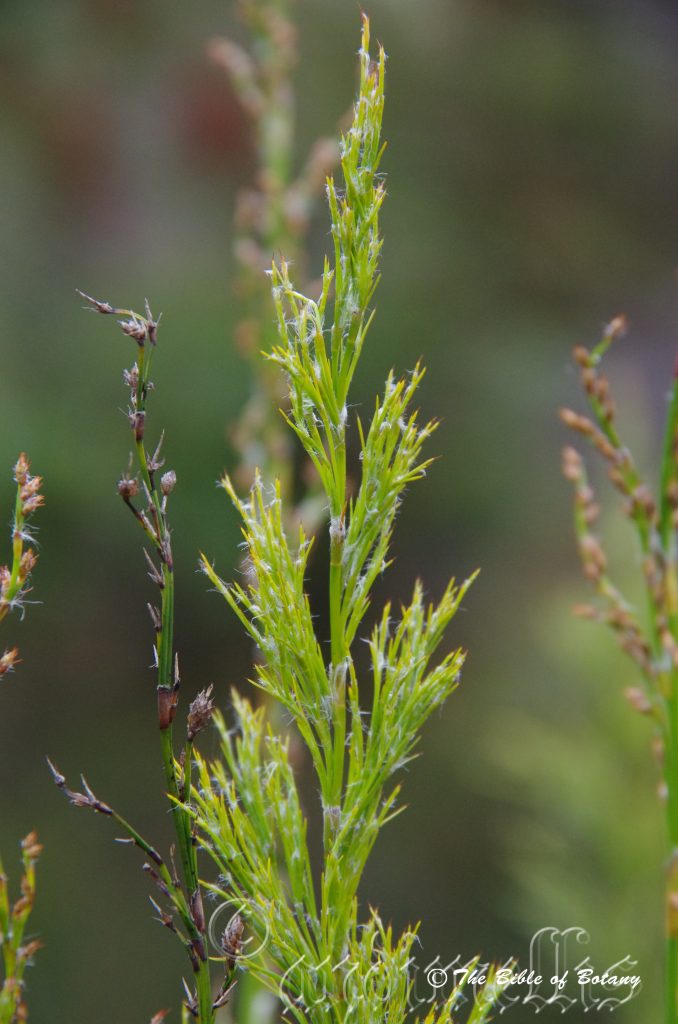
Lake Innes Nature Reserve NSW
Baloskion pallens
Classification:
Unranked: Monocots
Unranked: Commelinids
Order: Poales
Family: Restionaceae
Genus: From Baloskion which is Ancient Greek for deliberately mangled or twisted. It refers to stems or culms which are twisted or distorted.
Specie: From Pall?ns, which is Greek or Pallidum, which is Latin for blanching or deficient or waning in colour. It refers to structures or organs, which are pale in colour.
Sub specie:
Common Name:
Distribution:
Baloskion pallens is found south the Byfield National Park in coastal central Queensland to Richmond in central coastal New South Wales. It is mainly found along the coastal strip except for several disjunct populations found in the Carnarvon Gorge National Park and between Dunkai to Bookookoorara State Forest.
https://avh.ala.org.au/occurrences/search?taxa=Baloskion+pallens+#tab_mapView
Habitat Aspect Climate:
Baloskion pallens prefer full sun. It is found on flats and plains in swampy marshes especially coastal wallum heaths and coastal swampy heaths. The altitude ranges from 4 meters ASL to 400 meters ASL
The temperatures range from minus 2 degrees in August to 38 degrees in January.
The rainfall ranges from lows of 900mm to 2000mm average per annum.
Soil Requirements:
Baloskion pallens prefers deep, coarse sands, fine sands, and sandy loams to light fatty clays. The soils are usually derived from decomposed sandstones, granites or accumulated peaty beach sands. The soil’s pH ranges from 4.5pH to 6pH. It tolerates seasonal water logged soils and high water tables. None saline soils to moderately saline soils are tolerated.
Height & Spread:
Wild Plants: 0.6m to 1m by 0.2m to 0.3m.
Characteristics:
Baloskion pallens is a dioecious perennial herb with a short creeping rhizome. The tall straight, erect stems are mid green to bright grass-green with a reddish-brown sheath surrounding the nodes.
The leaves of Baloskion pallens are absent and are reduced to erect, tightly appressed sheaths at the nodes. The culms are erect and measure 500mm to 1000mm in length by 1.8mm to 2.8mm diameter. The pinkish brown, reddish brown, purple-red sheaths are glabrous and measure 12mm to 22mm in length. The bases are clasping while the apexes are acute. The margins are entire and glabrous.
The inflorescences of Baloskion pallens’ are racemes born from the nodes. The glumes measure 2.5mm to 4mm in length. The oblong glumes have a caudate apex and are usually glabrous but may have a few long white hairs on the margins.
The spikelets mostly crowded together on the branches or at the nodes of the inflorescences. The exposed section of the pedicels measure 3.5mm to 5mm in length. The apex of the subtending bracts is reflexed due to contact with the lower spikelets. The 10 to 60 green to maroon-red spikelets are sessile to very shortly pedicillate. They are branched twice and measure 200mm to 250mm in length. The individual spikelets are globose to ovate and measure 5.5mm to 7mm in length.
The male flowers have 6 tepals, 3 stamens and a minute pistillate.
The female flowers have 4 tepals, 2 staminodes and a well-developed pistil. Flowering occurs throughout the year.
Wildlife:
Baloskion pallens is suitable for erosion control around lagoons, billabongs and wallums.
The plants make excellent refuge habitat for frogs and small birds.
Cultivation:
Baloskion pallens is a dwarf bamboo like plant that should be more widely grown especially in landscaping projects where the soils are of a sandy texture. In cultivation they will grow 1 meter to 1.6 meters in height by 300mm to 600mm in diameter when grown in a sunny open situation. It must be grown in full sun or bright dappled light to maintain dense healthy plants.
It is most suitable for use around sunny swimming pools, courtyards, and rockeries or adjacent to natural bush gardens. Mass plantings of 5 or more plants even in small areas; really do the plants justification especially when they are in flower. Medium fish or frog ponds will benefit from Baloskion pallens vertical growth and coloured bands.
Cut flowers last for long periods indoors and they can be used in dried arrangements to great effect. I have also tried on few occasions to have the flowers of Baloskion pallens introduced to the floral trade without success.
If it is placed around a pool, courtyards or other confined spaces then plant them in small groups or scatter plant them for a more informal natural look against walls to help soften them. Using rocks and small boulders can make the pool or any water feature appear like an oasis. The leaves and flowers can make a great start for the larger heath or desert setting. Be careful not to over plant as they will look out of place and weedy.
If companion plants are sought then the choice of plants to use either side is limited only by size of the area to be landscaped and the size of the other plants as they should be no more than 250mm in height to draw attention to Baloskion pallens.
Baloskion pallens would make an outstanding contribution to a moist heath garden. Here it can be used as the vertical growth, scattered throughout a horizontal heath scene. When you design a flat heath garden which Baloskion pallens is well suited so don’t use contours to display the plants as heath lands are almost always flat or have a slight rise. Plant them near the edge or too the side so that the banded markings on the stems are in full view as this is their main attribute to the landscape. Mixed, contrasting foliage like Actinotis helianthi and a small prostrate Grevillea specie or Hibertia linearis can be dynamic and spectacular.
Propagation:
Seeds:
Collecting seeds from mature plants of Baloskion pallensis not the easiest as they are wind dispersed and usually difficult to ascertain when they are fully ripe. The fresh seeds can be sown directly into a seed raising mix with the sepals still attached covering them to a depth of 5mm. Seeds maybe erratic in germination but a strike rate of over 50mm should be attained.
When the seedlings are 20mm to 30mm tall, prick them out and plant them into 50mm native tubes using a good quality mix.
Once the seedlings reach 100mm to 150mm in height plant them out into their permanent position.
Fertilize using Seaweed, fish emulsion or organic chicken pellets soaked in water on an alternate basis. Fertilize every two months until the plants are established then twice annually in early September or March to maintain health, vitality and better flowering and better quality fruit.
Division:
When growing from divisions remove the plant from the soil and just cut it into 3 or 4 equal parts, first down the middle then halve those sections again. Remove unwanted dead material and any old small clumps that look weak. Plants can be divided further but ensure each division has a several strong shoots and healthy roots attached to the tuff. Replant ensuring the soil is at the same level as before. Water and fertilize. New shoots will appear within two weeks.
If it is to be mass planted as features try them at 1.5 meter to 3 meter centers. Do not over crowd the plants or the desired affect will be destroyed.
Further Comments from Readers:
“Hi reader, it seems you use The Bible of Botany a lot. That’s great as we have great pleasure in bringing it to you! It’s a little awkward for us to ask, but our first aim is to purchase land approximately 1,600 hectares to link several parcels of N.P. into one at The Pinnacles NSW Australia, but we need your help. We’re not salespeople. We’re amateur botanists who have dedicated over 30 years to saving the environment in a practical way. We depend on donations to reach our goal. If you donate just $5, the price of your coffee this Sunday, We can help to keep the planet alive in a real way and continue to bring you regular updates and features on Australian plants all in one Botanical Bible. Any support is greatly appreciated. Thank you.”
In the spirit of reconciliation we acknowledge the Bundjalung, Gumbaynggirr and Yaegl and all aboriginal nations throughout Australia and their connections to land, sea and community. We pay our respect to their Elders past, present and future for the pleasures we have gained.
Baloskion stenocoleum
Classification:
Unranked: Monocots
Unranked: Commelinids
Order: Poales
Family: Restionaceae
Genus: From Baloskion which is Ancient Greek for deliberately mangled or twisted. It refers to stems or culms which are twisted or distorted.
Specie: From Stenos, which is Ancient Greek for narrow and Koleos, which is Ancient Greek for a sheath or sheath covering. It refers to the leaf sheaths on the stems, which are short and tightly fixed.
Sub specie:
Common Name:
Distribution:
Baloskion stenocoleum is found south Stanthorpe in far south eastern Queensland to Gloucester Tops in central eastern New South Wales. It is mainly found on the Great Dividing Range at higher altitudes. It is particularly common and at their best around Ebor and the Cathedral Rocks National Park.
https://avh.ala.org.au/occurrences/search?taxa=Baloskion+stenocoleum+#tab_mapView
Habitat Aspect Climate:
Baloskion stenocoleum prefer full sun. It is found on flats and plains in swampy marshes and moist heaths. The altitude ranges from 150 meters ASL to 1350 meters ASL
The temperatures range from minus 2 degrees in August to 38 degrees in January.
The rainfall ranges from lows of 700mm to 2000mm average per annum.
Soil Requirements:
Baloskion stenocoleum prefers deep, coarse sands, fine sands, and sandy loams to light fatty clays. The soils are usually derived from decomposed granites or at times sandstones. The soil’s pH ranges from 5pH to 6pH. It tolerates seasonal water logged soils and high water tables. None saline soils to slightly saline soils are tolerated.
Height & Spread:
Wild Plants: 0.6m to 1.5m by 0.2m to 0.5m.
Characteristics:
Baloskion stenocoleum is a dioecious perennial herb with a short, black creeping rhizome which measure 4mm to 8mm in diameter. The tall straight, erect stems are mid green to bright deep green with a reddish-brown sheath surrounding the nodes.
The leaves of Baloskion stenocoleumare absent and are reduced to erect, tightly erect, appressed sheaths at the nodes. The culms are erect and measure 600mm to 1500mm in length by 1mm to 3mm diameter. The paper brown to pale reddish-brown sheaths are glabrous and measure 15mm to 40mm in length. The bases are clasping while the apexes are acute. The margins are entire and glabrous or rarely covered in short, fawn ciliate hairs.
The inflorescences of Baloskion stenocoleum are narrow racemes born from the nodes. The glumes measure 2.5mm to 3.5mm in length. The oblong glumes have a caudate apex with the sterile glumes having short fawn ciliate hairs while the fertile glumes margins are very sparsely covered with short, fawn ciliate hairs on the margins.
The spikelets mostly crowded together on the branches or at the nodes of the inflorescences. The spikelets are carried on short filiform pedicels along the raceme. The free section of the lowest subtending bracts are lanceolate to narrow-lanceolate, appressed and do not encircle the spikelets.
There are 5 to 15 ovate male spikelets on a raceme. They measure 5.5mm to 8mm in length by 6mm to 8mm in diameter. The 3 stamens are creamy yellow while the pistillate is minute.
There are 5 to 10 ovoid to elliptical female spikelets on a raceme. They measure 6mm to 10mm in length by 4.5mm to 10mm in diameter. There are 4 tepals and 2 staminodes on the individual spikelets. Flowering occurs throughout the year.
Wildlife:
Baloskion stenocoleum is suitable for erosion control around lagoons, billabongs and marshes.
The plants make excellent habitat refuges for frogs and small birds.
Cultivation:
Baloskion stenocoleum is a dwarf bamboo like plant that should be more widely grown especially in landscaping projects where the soils are of a sandy texture. In cultivation it will grow 1 meter to 1.6 meters in height by 300mm to 600mm in diameter when grown in the open. It must be grown in full sun or bright dappled light to maintain dense healthy plants.
It is most suitable for use around sunny swimming pools, courtyards, and rockeries or adjacent to natural bush gardens. Mass plantings of 5 or more plants even in small areas; really do the plants justification especially when they are in flower. Medium to large fish or frog ponds will benefit from Baloskion stenocoleum vertical growth and coloured bands.
Cut flowers last for long periods indoors and it would also be suitable for dried arrangements to great effect. I have also tried on few occasions to have the flowers of Baloskion stenocoleum introduced to the floral trade without success.
If it is placed around a pool, courtyards or other confined spaces then plant them in small groups or scatter plant them for a more informal natural look against walls to help soften them. Using rocks and small boulders can make the pool or any water feature appear like an oasis. The leaves and flowers can make a great start for the larger heath or desert setting. Be careful not to over plant as they will look out of place and weedy.
If companion plants are sought then the choice of plants to use either side is limited only by size of the area to be landscaped and the size of the other plants as they should be no more than 250mm in height to draw attention to Baloskion stenocoleum.
Baloskion stenocoleum would make outstanding contribution to a moist heath garden. Here it can be used as the vertical growth, scattered throughout the heath scene. When you design a flat heath garden which Baloskion pallens is well suited so don’t use contours to display the plants as heath lands are almost always flat or have a slight rise. Plant them near the edge or too the side so that the banded markings on the stems are in full view as this is their main attribute to the landscape. Mixed, contrasting foliage like Actinotis helianthi and a small prostrate Grevillea specie or Hibertia linearis can be dynamic and spectacular.
Propagation:
Seeds:
Collecting seeds from mature plants of Baloskion stenocoleum is not the easiest as they are wind dispersed and usually difficult to ascertain when they are fully ripe. The fresh seeds can be sown directly into a seed raising mix with the sepals still attached covering them to a depth of 5mm. Seeds maybe erratic in germination but a strike rate of over 50mm should be attained.
When the seedlings are 20mm to 30mm tall, prick them out and plant them into 50mm native tubes using a good quality mix.
Once the seedlings reach 100mm to 150mm in height plant them out into their permanent position.
Fertilize using Seaweed, fish emulsion or organic chicken pellets soaked in water on an alternate basis. Fertilize every two months until the plants are established then twice annually in early September or March to maintain health, vitality and better flowering and better quality fruit.
Division:
When reproducing from divisions water thoroughly the day before. Remove the plant by digging outside the rootball.
Wash excess soil from the ball and cut it into 3 or 4 equal equal sections, first down the middle then halve those sections again. Remove unwanted dead material and any old small clumps that look weak.
Plants can be divided further but ensure each division has several strong shoots and healthy roots attached to the tuff.
Replant ensuring the soil is at the same level as before. Water and fertilize. New shoots will appear within two weeks.
If it is to be mass planted as features try them at 1.5 meter to 3 meter centers. Do not over crowd the plants or the desired affect will be destroyed.
Further Comments from Readers:
“Hi reader, it seems you use The Bible of Botany a lot. That’s great as we have great pleasure in bringing it to you! It’s a little awkward for us to ask, but our first aim is to purchase land approximately 1,600 hectares to link several parcels of N.P. into one at The Pinnacles NSW Australia, but we need your help. We’re not salespeople. We’re amateur botanists who have dedicated over 30 years to saving the environment in a practical way. We depend on donations to reach our goal. If you donate just $5, the price of your coffee this Sunday, We can help to keep the planet alive in a real way and continue to bring you regular updates and features on Australian plants all in one Botanical Bible. Any support is greatly appreciated. Thank you.”
In the spirit of reconciliation we acknowledge the Bundjalung, Gumbaynggirr and Yaegl and all aboriginal nations throughout Australia and their connections to land, sea and community. We pay our respect to their Elders past, present and future for the pleasures we have gained.
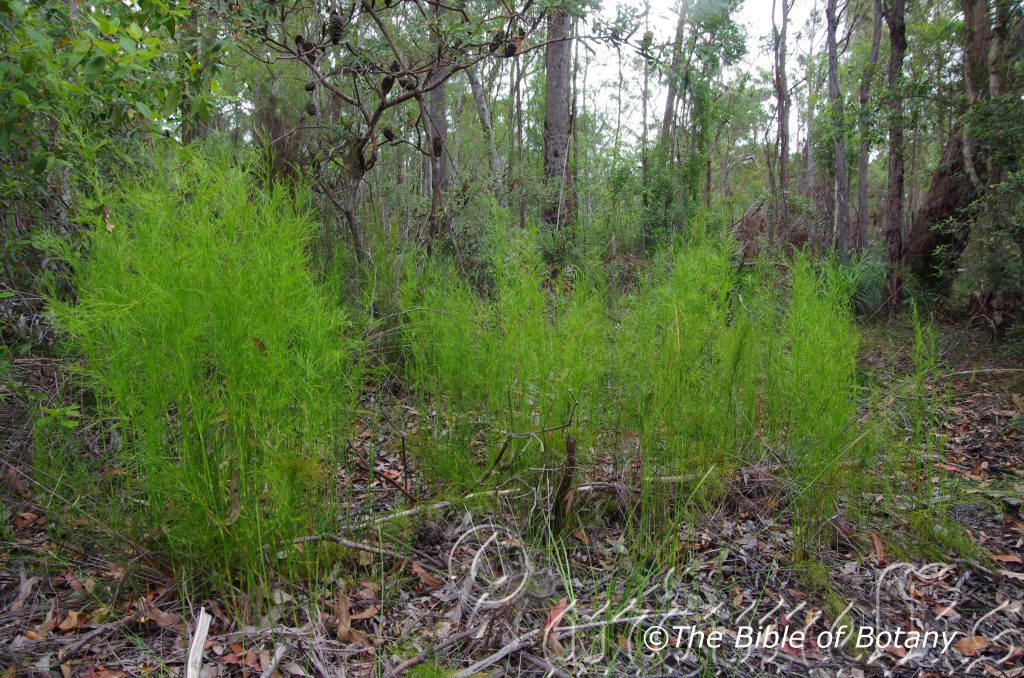
Author’s Garden The Pinnacles NSW

Author’s Garden The Pinnacles NSW
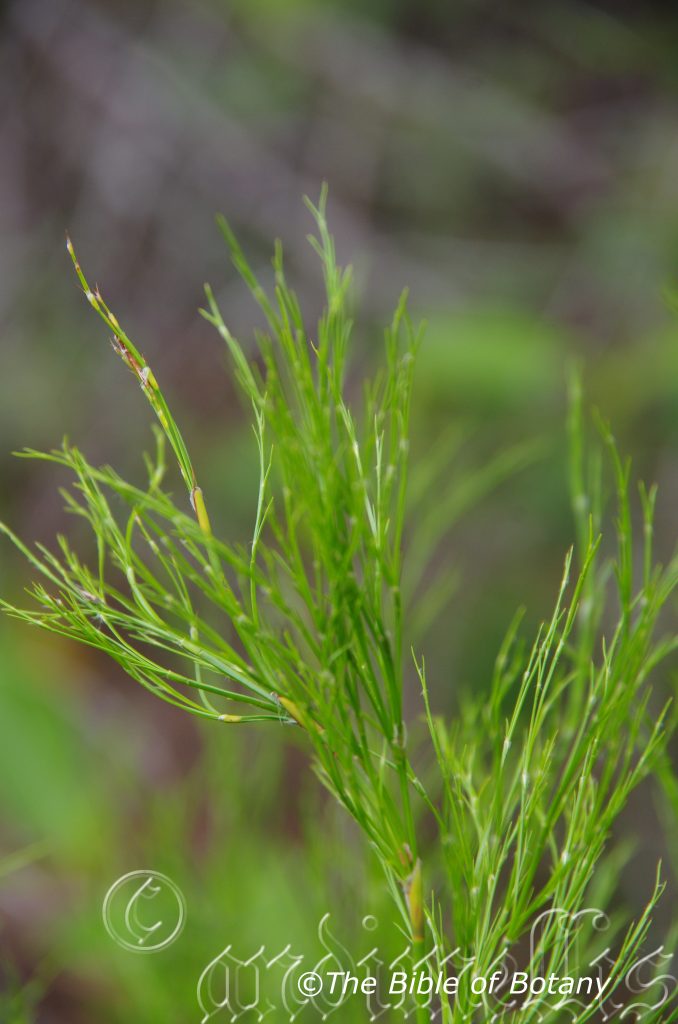
Author’s Garden The Pinnacles NSW
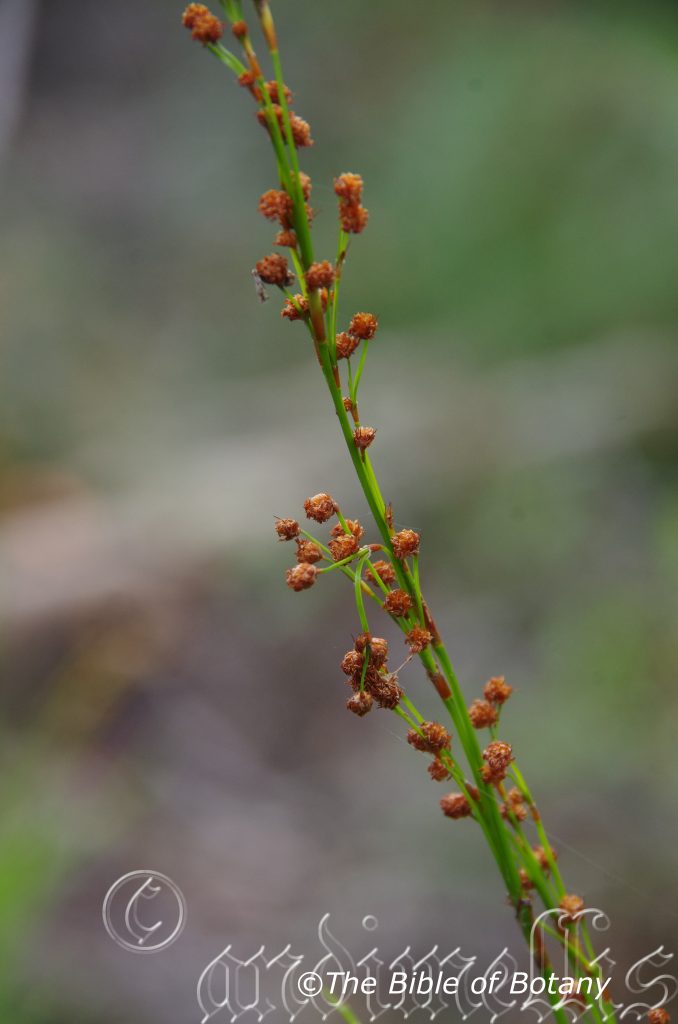
Author’s Garden The Pinnacles NSW
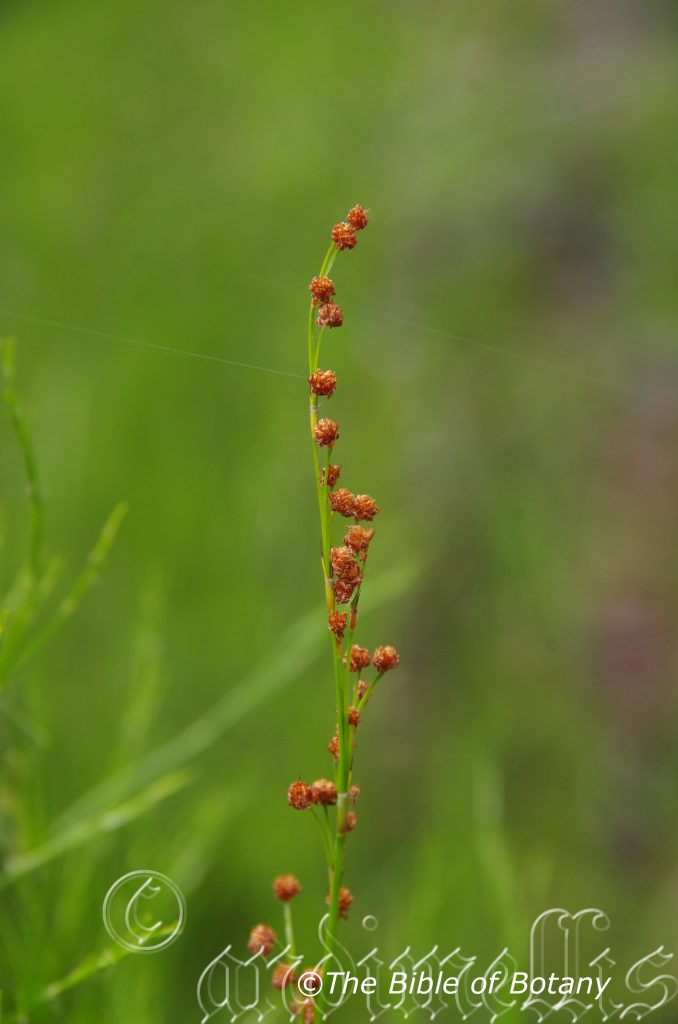
Author’s Garden The Pinnacles NSW
Baloskion tenuiculme
Classification:
Unranked: Monocots
Unranked: Commelinids
Order: Poales
Family: Restionaceae
Subfamily:
Genus: From Baloskion which is Ancient Greek for deliberately mangled or twisted. It refers to stems or culms which are twisted or distorted.
Specie: From Tenui, which is Latin for slender and fine and Culmus, which is Latin for a hollow grass stem. It refers to stems, which are slender and hollow as found on many grasses and reeds.
Sub specie:
Common Name:
Distribution:
Baloskion tenuiculme is found south from Eurimbula National Park in central coastal Queensland to Red Rock between Coffs Harbour and Grafton on the north coast of New South Wales. It is found along the coast strip.
https://avh.ala.org.au/occurrences/search?taxa=Baloskion+tenuiculme+#tab_mapView
Habitat Aspect Climate:
Baloskion tenuiculme prefer full sun. It is found on flats and plains in swampy marshes and moist heaths. The altitude ranges from 5 meters ASL to 130 meters ASL
The temperatures range from 2 degrees in August to 38 degrees in January.
The rainfall ranges from lows of 1000mm to 2000mm average per annum.
Soil Requirements:
Baloskion tenuiculme prefers deep, coarse sands, fine sands, and sandy loams to light fatty clays. The soils are usually derived from decomposed accumulated peaty beach sands or at times decomposed granites. The soil’s pH ranges from 5pH to 6pH. It tolerates seasonal water logged soils and high water tables. None saline soils to slightly saline soils are tolerated.
Height & Spread:
Wild Plants: 0.2m to 0.4m by 0.2m to 0.25m.
Characteristics:
Baloskion tenuiculme is a dioecious perennial tufted herb with a short, black creeping rhizome which measure 2mm to 4mm in diameter. The tall straight, erect stems are mid green to bright deep green with a reddish-brown sheath surrounding the nodes.
The linear to subulate leaves of Baloskion tenuiculme are divaricate. The blue-green to grey-green leaves measure 14mm to 21mm in length. The slender culms are erect and measure 150mm to 400mm in length by 0.6mm to 0.8mm diameter. The paper brown to pale reddish-brown appressed sheaths are glabrous but have a few short, white hirsute hairs at the apex. The sheaths measure 6.5mm to 11mm in length. The bases are clasping while the apexes are acute. The margins are entire and glabrous with a few short, white hirsute hairs at the apex.
The inflorescences of Baloskion tenuiculme are born singularly, in short loose racemes or both from the terminals. The racemes measure 10mm to 40mm in length.
The globose male spikelets have 15 to 45 individual flowers and measure 4mm to 6.5mm in length by 4mm to 6mm in diameter. There are 6 tepals and 3 creamy yellow stamens while the pistillate is minute.
The globose female spikelets have 5 to 18 individual flowers and measure 4.5mm to 7mm in length by 4mm to 6mm in diameter. There are 4 tepals and 2 creamy yellow stamens while the pistil is being well developed. Flowering occurs throughout the warmer months.
Wildlife:
Baloskion tenuiculme is suitable for erosion control around lagoons, billabongs and marshes.
The plants make excellent habitat refuges for small frogs.
Cultivation:
Baloskion tenuiculme is a dwarf bamboo like plant that should be more widely grown especially in landscaping projects where the soils are of a sandy texture and plenty of moisture is available. In cultivation they will grow 240mm to 450mm in height by 150mm to 250mm in diameter when grown in the open. It must be grown in full sun or bright dappled light to maintain dense healthy plants.
It is most suitable for use around sunny swimming pools, courtyards, and rockeries or adjacent to natural bush gardens. Mass plantings of 5 or more plants even in small areas; really do the plants justification especially when they are in flower. Small to medium fish or frog ponds will benefit from Baloskion tenuiculme vertical growth.
If it is placed around a pool, courtyards or other confined spaces then plant them in small groups or scatter plant them for a more informal natural look against walls to help soften them. Using rocks and small boulders can make the pool or any water feature appear like an oasis and look much larger with this species due to its smaller size. The vertical habit can make a great start for the smaller heath garden. Be careful not to over plant as they will look out of place and weedy.
If companion plants are sought then the choice of plants to use is limited only by size of the area to be landscaped, your imagination and the size of the other plants as they should be no more than 150mm in height to draw attention to Baloskion tenuiculme and the horizontal effect of the other plants.
Baloskion tenuiculme would make outstanding contribution to a moist miniature heath garden. Here they can be used as the vertical growth, scattered throughout the heath scene. When you design a flat miniature heath garden which Baloskion tenuiculme is well suited so don’t use contours to display the plants as heath lands are almost always flat or have a slight rise. Plant them near the edge and scatter them through the bed. Mixed, contrasting foliage like Dampier ovalifolia, Dampier stricta, Isotoma axillaris, Leschenaultia Formosa, Hibertia linearis, Hibbertia ovalifolia, Scaevola aemula or Scaevola abide with some of the dwarf forms of Helichrysum specie will be dynamic and spectacular.
Propagation:
Seeds:
Collecting seeds from mature plants of Baloskion tenuiculme is not the easiest as they are wind dispersed and usually difficult to ascertain when they are fully ripe. The fresh seeds can be sown directly into a seed raising mix with the sepals still attached covering them to a depth of 5mm. Seeds maybe erratic in germination but a strike rate of over 50mm should be attained.
When the seedlings are 20 to 30mm tall, prick them out and plant them into 50mm native tubes using a good quality mix.
Once the seedlings reach 100mm to 150mm in height plant them out into their permanent position.
Fertilize using Seaweed, fish emulsion or organic chicken pellets soaked in water on an alternate basis. Fertilize every two months until the plants are established then twice annually in early September or March to maintain health, vitality and better flowering and better quality fruit.
Division:
When growing from divisions remove the plant from the soil and just cut it into 3 or 4 equal parts, first down the middle then halve those sections again. Remove unwanted dead material and any old small clumps that look weak. Plants can be divided further but ensure each division has a several strong shoots and healthy roots attached to the tuff. Replant ensuring the soil is at the same level as before. Water and fertilize. New shoots will appear within two weeks.
If they are to be mass planted as features try them at 1.5 meter to 3 meter centers. Do not over crowd the plants or the desired affect will be destroyed.
Further Comments from Readers:
“Hi reader, it seems you use The Bible of Botany a lot. That’s great as we have great pleasure in bringing it to you! It’s a little awkward for us to ask, but our first aim is to purchase land approximately 1,600 hectares to link several parcels of N.P. into one at The Pinnacles NSW Australia, but we need your help. We’re not salespeople. We’re amateur botanists who have dedicated over 30 years to saving the environment in a practical way. We depend on donations to reach our goal. If you donate just $5, the price of your coffee this Sunday, We can help to keep the planet alive in a real way and continue to bring you regular updates and features on Australian plants all in one Botanical Bible. Any support is greatly appreciated. Thank you.”
In the spirit of reconciliation we acknowledge the Bundjalung, Gumbaynggirr and Yaegl and all aboriginal nations throughout Australia and their connections to land, sea and community. We pay our respect to their Elders past, present and future for the pleasures we have gained.
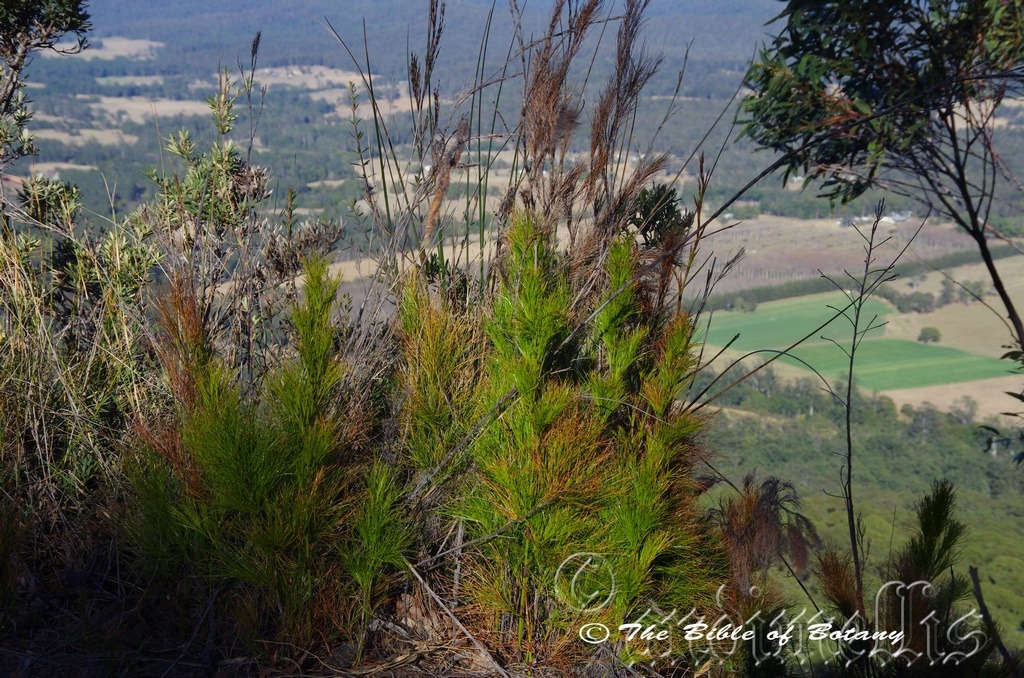
Glenreagh Cliffs NSW
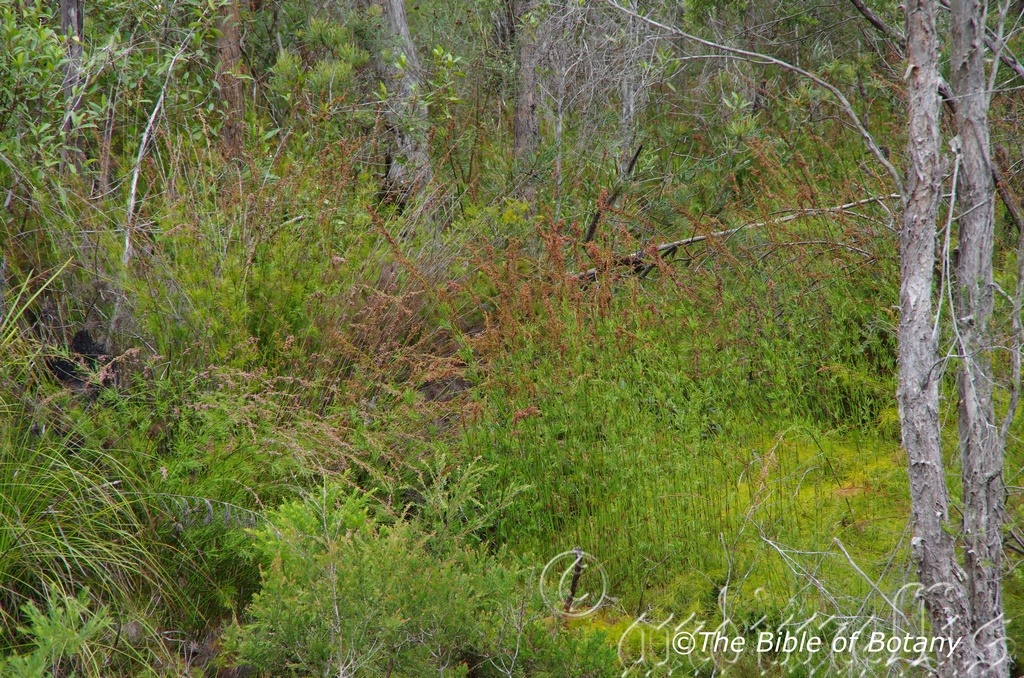
The Pinnacles NSW
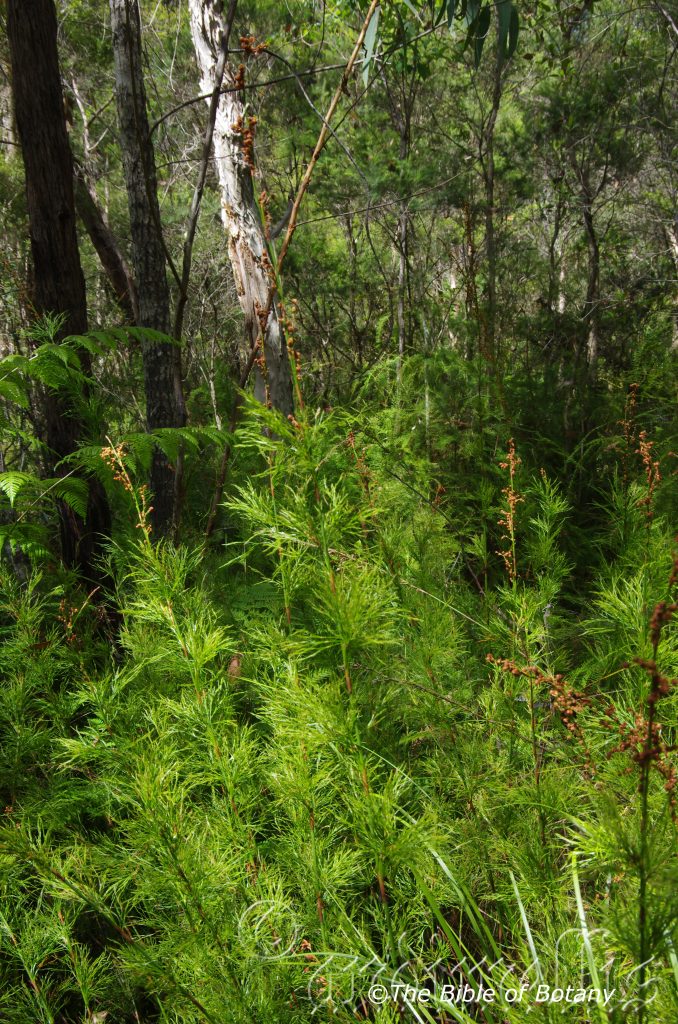
The Pinnacles NSW
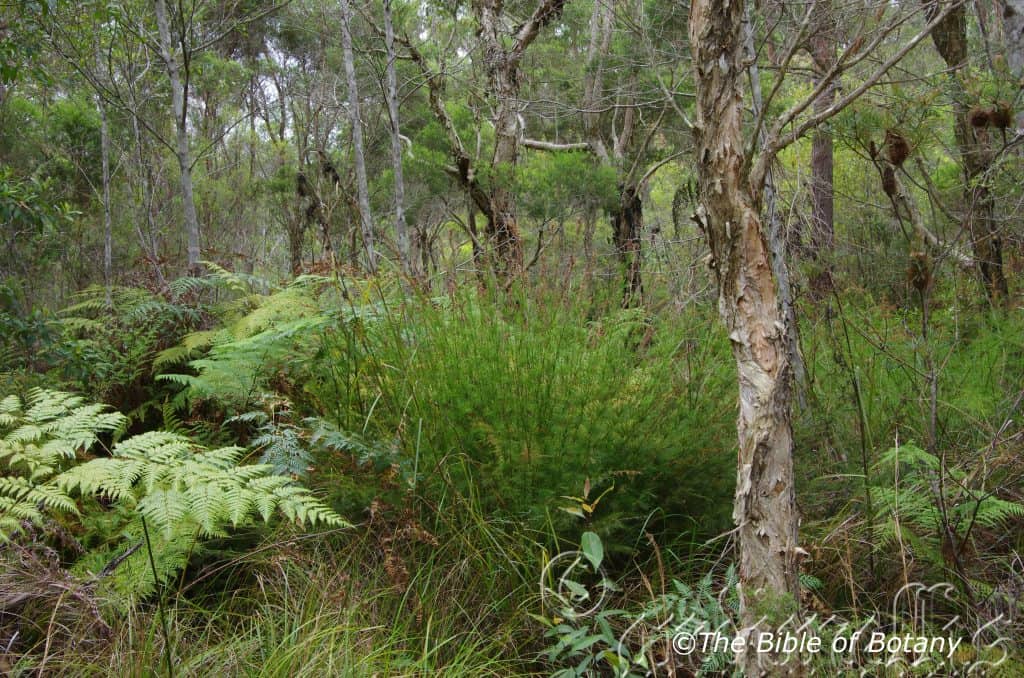
The Pinnacles NSW
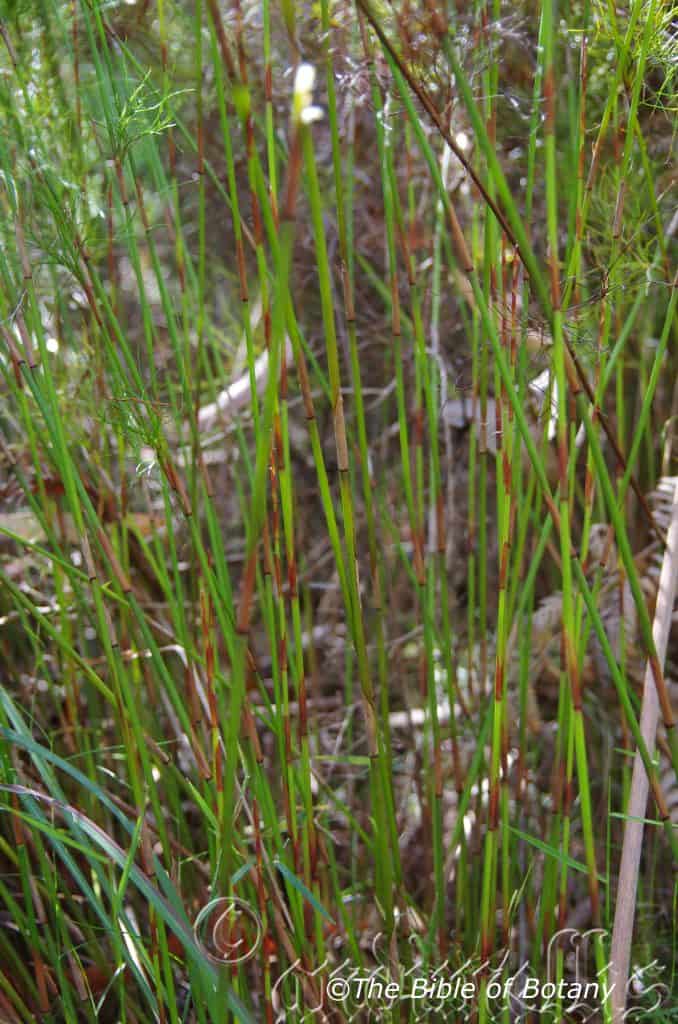
The Pinnacles NSW
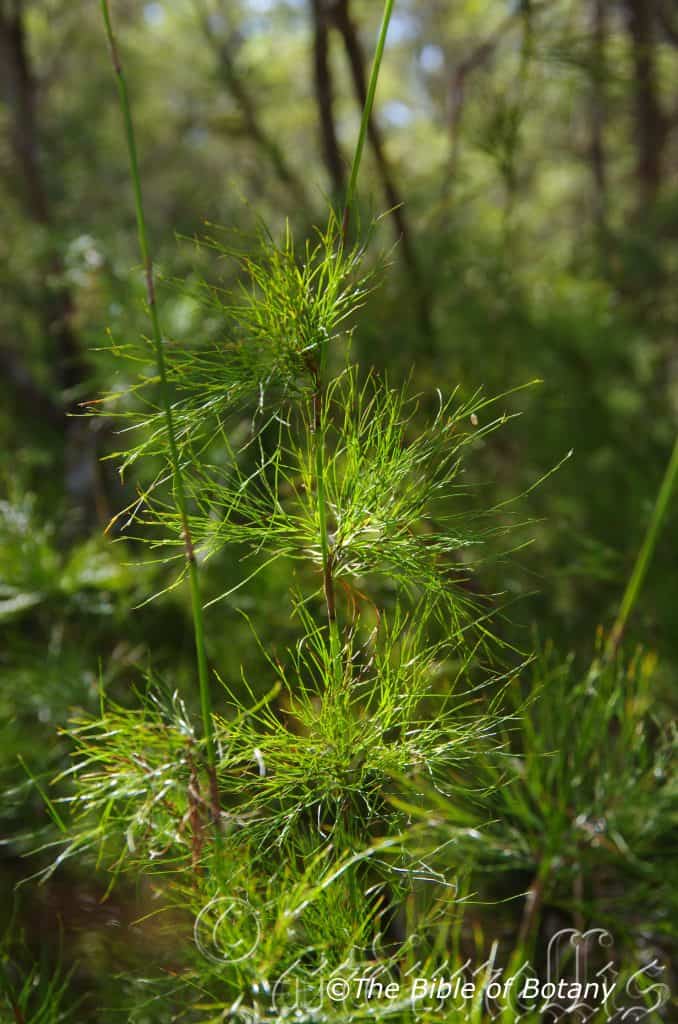
The Pinnacles NSW
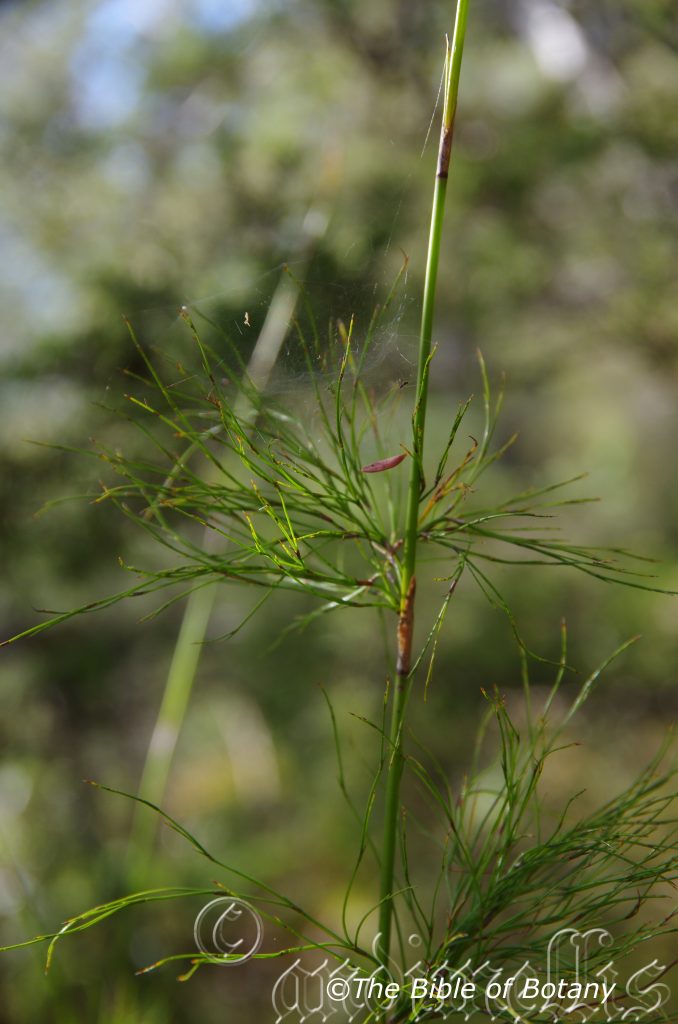
The Pinnacles NSW
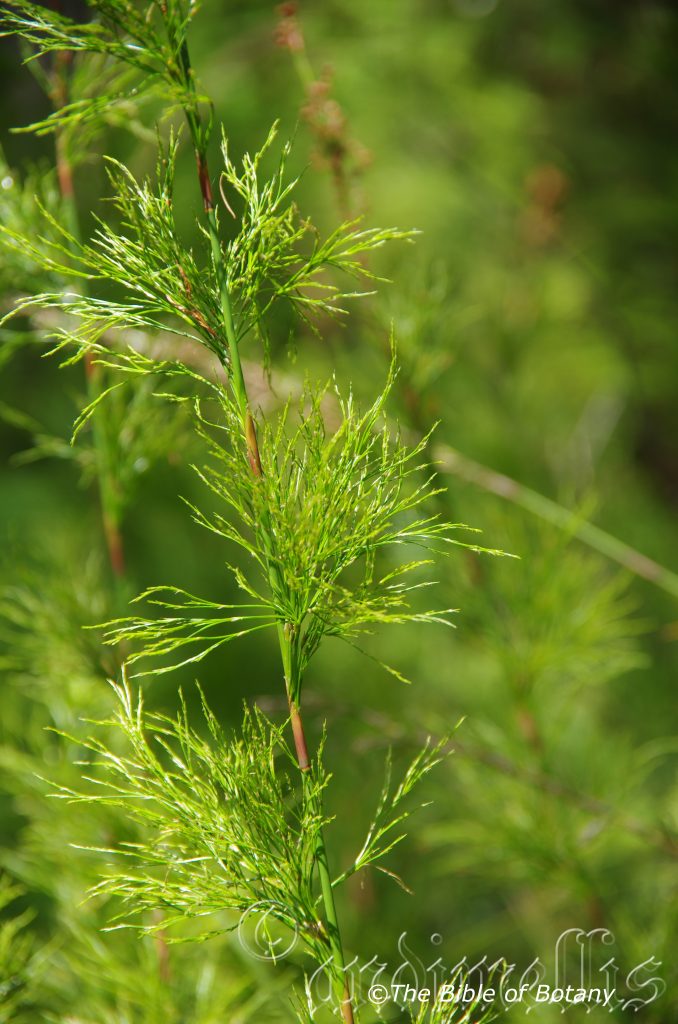
The Pinnacles NSW
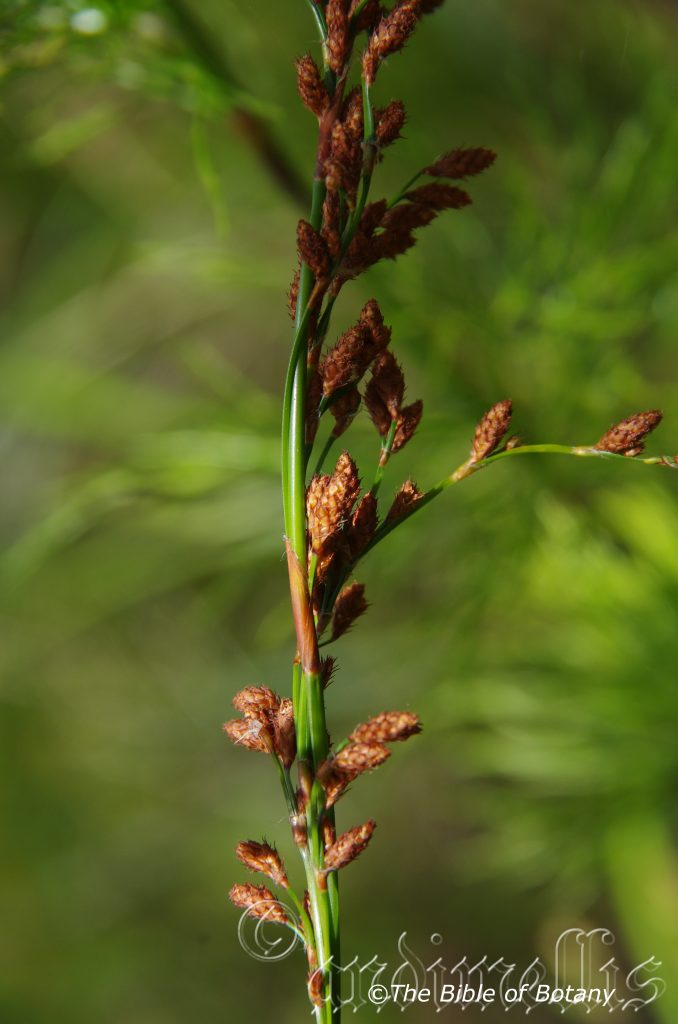
The Pinnacles NSW
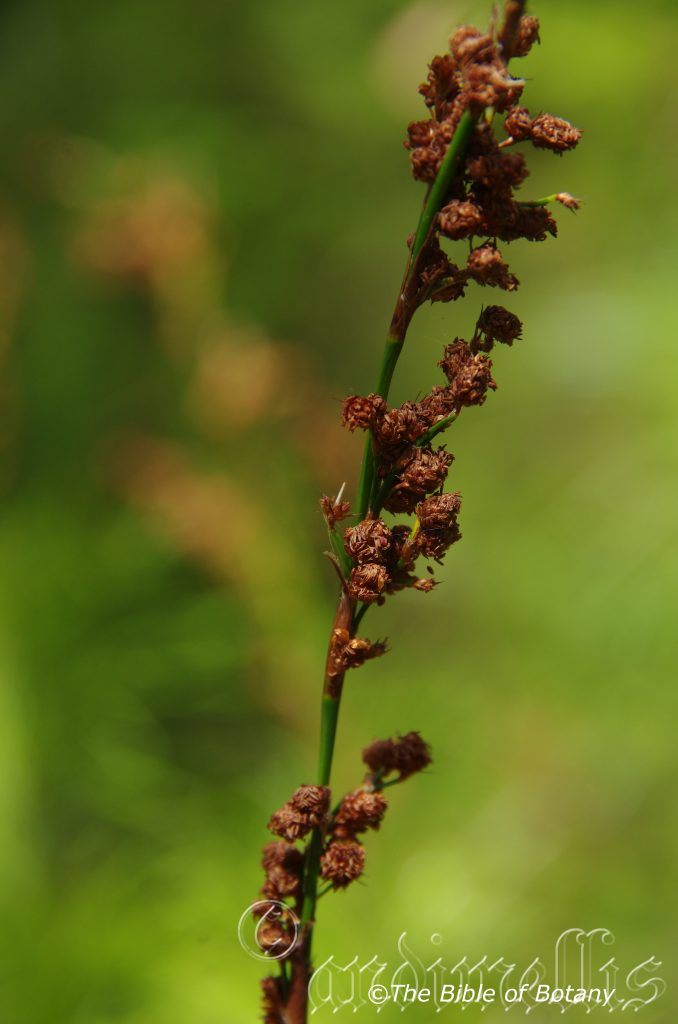
The Pinnacles NSW
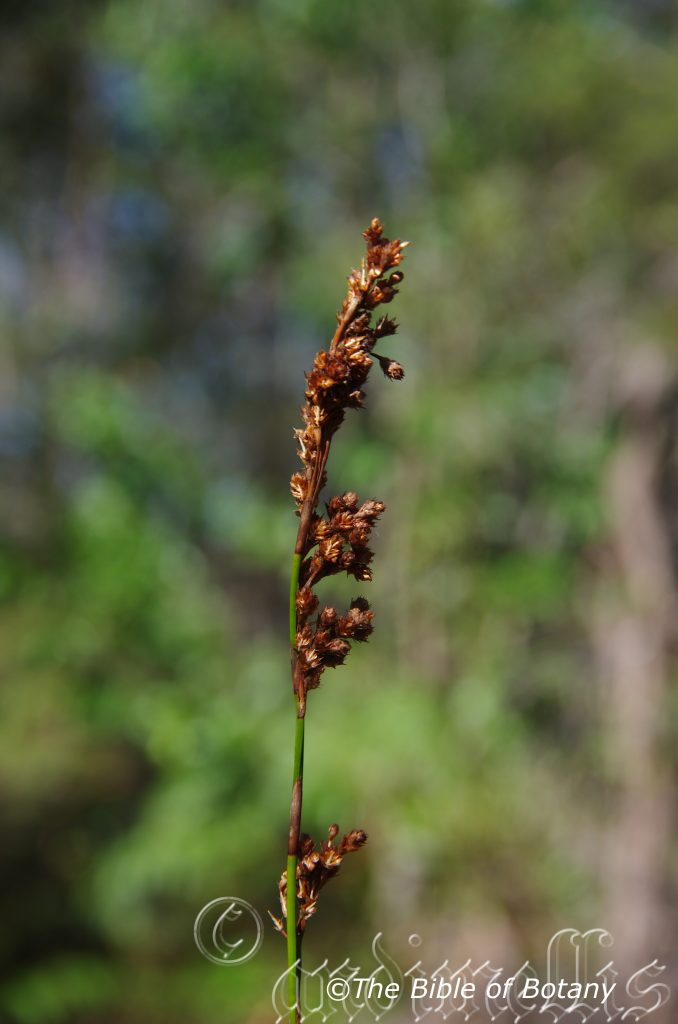
The Pinnacles NSW
Baloskion tetraphyllum
Classification:
Unranked: Monocots
Unranked: Commelinids
Order: Poales
Family: Restionaceae
Genus: From Baloskion which is Ancient Greek for deliberately mangled or twisted. It refers to stems or culms which are twisted or distorted.
Specie: From Tetra, which is Ancient Greek for four and Phullon/Phýllon, which is Ancient Greek for a leaf. It refers to leaves, which have a square cross section.
Sub specie: Baloskion tetraphyllum subsp. meiostachyum. From Meí?sis/Meió?, which is Ancient Greek or Meio, which is Modern Latin for to lessen (The uncountable, cytology of a cell division of a diploid cell into four haploid cells, which develop to produce gametes) and Stákh?s/Stákhus, which is Ancient Greek for an ear of grain or later a spike. It refers to seeds which in a figure of speech whereby something is made to seem smaller or less important than it actually is.
Sub specie: Baloskion tetraphyllum subsp. tetraphyllum. From Tetra, which is Ancient Greek for four and Phullon/Phýllon, which is Ancient Greek for a leaf. It refers to leaves, which have a square cross section.
Common Name: Plume Rush or Australian Reed.
Distribution:
Baloskion tetraphyllum subsp. meiostachyum is found in coastal districts south from Fraser Island in central coastal Queensland to Milton in southern New South Wales. There are several disjunct populations including near Eden in the south of New South Wales, the Byfield National Park north of Rockhampton, Starcke National Park north of Cooktown, Cape Grafton to the tip of Cape York Peninsular and the Warrego River in Queensland.
Baloskion tetraphyllum subsp. tetraphyllum is found southwards along the coast from southern New South Wales through to Mornington Peninsular in southern Victoria and west in several disjunct populations from near Apollo Bay through to east of Port Campbell, The Grampians, Portland to Mount Richmond National Park in Victoria and west of Mount Gambia and around Lake Albert in South Australia.
There are two disjunct populations in New South Wales one near Bathurst and the other north of Grafton between Stockman’s Creek and the Pinnacles.
In Tasmania it is found on King Island and Three Hummock Island and down the west coast of mainland Tasmania. It is also found in scattered populations in warmer areas throughout the eastern half of Tasmania.
https://avh.ala.org.au/occurrences/search?taxa=Baloskion+tetraphyllum#tab_mapView
Habitat Aspect Climate:
Baloskion tetraphyllum prefer full sun. It is found on flats and plains in wet swampy marshes particularly those associated within coastal heaths. The altitude ranges from 5 meters ASL to 770 meters ASL
The temperatures range from minus 6 degrees in August to 42 degrees in January.
The rainfall ranges from lows of 900mm to 2000mm average per annum.
Soil Requirements:
Baloskion tetraphyllum prefers deep coarse sands, fine sands, sandy loams, light fatty clays, medium clays or light silts to heavy silts. The soils are usually derived from accumulated peaty beach sands or decomposed granites. The soil’s pH ranges from 4.5pH to 6.5pH. It tolerates seasonal water logged soils and high water tables. None saline soils to moderately saline soils are tolerated.
Height & Spread:
Wild Plants: 1m to 1.6m by 0.4m to 1m.
Characteristics:
Baloskion tetraphyllum are dioecious perennial tufted herbs with short, thick, black creeping rhizomes which measure 6mm to 10mm in diameter. The tall straight, erect stems are mid grass-green with pale brown sheaths surrounding the nodes.
The linear leaves of Baloskion tetraphyllum are erect. The lime-green to bright grass-green leaves measure 2mm to 15mm in length. The culms have numerous sterile branches which are finely whirled and divided laterally. The slender blue-green to grass-green culms are erect and measure 500mm to 1600mm in length by 2mm to 6mm diameter. The paper brown to pale reddish-brown appressed sheaths are glabrous. The sheaths measure 15mm to 30mm in length. The bases are clasping while the apexes are acute. The margins are entire and glabrous with a few short, white hirsute hairs at the apex.
The inflorescences of Baloskion tetraphyllum are born singularly, in short loose racemes or both from the terminals. The racemes measure 10mm to 40mm in length.
The inflorescences of Baloskion tetraphyllum subsp. tetraphyllum have 15 to 200 spikelets. The male spikelets measure 4mm to 7mm in length while the glumes measure 2.8mm to 3.7mm in length.
The female spikelets measure 8mm to 10mm in length while the glumes measure 4.5mm to 6mm in length.
The inflorescences of Baloskion tetraphyllum subsp. meiostachyum have 200 to 450 spikelets. The male spikelets measure 2.5mm to 3.6mm in length while the glumes measure 1mm to 2mm in length.
The female spikelets measure 3.5mm to 6mm in length while the glumes measure 2.5mm to 3.3mm in length. Flowers occur from April to October.
Wildlife:
Baloskion tetraphyllum is suitable for erosion control around lagoons, billabongs and marshes.
The plants make excellent habitat refuges for frogs and small birds.
Cultivation:
Baloskion tetraphyllum is a dwarf bamboo like plant that should be more widely grown especially in landscaping projects where the soils have a sandy texture and plenty of moisture is available. In cultivation it will grow 1.2 meters to 1.6 meters in height by 700mm to 1 meter in diameter when grown in a sunny open position in the garden. It must be grown in full sun or bright dappled light with plenty of ground moisture to maintain dense healthy plants.
It is most suitable for use around sunny swimming pools, courtyards, and rockeries or adjacent to natural bush gardens. Mass plantings of 5 or more plants even in small areas; really do the plants justification especially when they are in flower. Medium to large fish or frog ponds will benefit from Baloskion tetraphyllum vertical growth.
If it is placed sparingly around a pool, courtyards or other confined spaces then they will not only highlight the other features but will look very formal whereas scatter planted it will look more natural. Use it against walls or other solid objects to help soften them. Using large rocks and boulders can make the pool or any water feature appear like an oasis and look much larger with this species but you will need to plant them to the rear because of their taller size. Be careful not to over plant as they will look out of place and weedy.
If companion plants are sought then the choice of plants to use is limited only by size of the area to be landscaped, your imagination and the size of the other plants as they should be no more than 1.2 meters or much taller at 2 meters in height to draw attention to Baloskion tetraphyllum and the horizontal effect of the other plants. Planted in a pattern of short, tall, short and tall will exasperated the vertical horizontal pattern as well and be very formal yet naturally relaxing.
Only use Baloskion tetraphyllum flat ground as the vertical habit of growth will be totally lost on steep land and this type of ground dries out far too quickly with moisture almost impossible to maintain. Plant them near the edge and scatter them to the rear for the greatest affect. Mixed, contrasting foliage like those found on Actinotis helianthi, Grevillea laurifolia or Hibertia scandens will secure a dynamic and spectacular look and plenty of comments.
Propagation:
Seeds:
Collecting seeds from mature plants of Baloskion tetraphyllum is not the easiest as they are wind dispersed and usually difficult to ascertain when they are fully ripe. The fresh seeds can be sown directly into a seed raising mix with the sepals still attached covering them to a depth of 5mm. Seeds maybe erratic in germination but a strike rate of over 50mm should be attained.
When the seedlings are 20 to 30mm tall, prick them out and plant them into 50mm native tubes using a good quality mix.
Once the seedlings reach 100mm to 150mm in height plant them out into their permanent position.
Fertilize using Seaweed, fish emulsion or organic chicken pellets soaked in water on an alternate basis. Fertilize every two months until the plants are established then twice annually in early September or March to maintain health, vitality and better flowering and better quality fruit.
Division:
When reproducing from divisions water thoroughly the day before. Remove the plant by digging outside the root ball.
Wash excess soil from the ball and cut it into 3 or 4 equal equal sections, first down the middle then halve those sections again. Remove unwanted dead material and any old small clumps that look weak.
Plants can be divided further but ensure each division has a several strong shoots and healthy roots attached to the tuff.
Replant ensuring the soil is at the same level as before. Water and fertilize. New shoots will appear within two weeks.
If it is to be mass planted as features try them at 1.5 meter to 3 meter centers. Do not over crowd the plants or the desired affect will be destroyed.
Further Comments from Readers:
“Hi reader, it seems you use The Bible of Botany a lot. That’s great as we have great pleasure in bringing it to you! It’s a little awkward for us to ask, but our first aim is to purchase land approximately 1,600 hectares to link several parcels of N.P. into one at The Pinnacles NSW Australia, but we need your help. We’re not salespeople. We’re amateur botanists who have dedicated over 30 years to saving the environment in a practical way. We depend on donations to reach our goal. If you donate just $5, the price of your coffee this Sunday, We can help to keep the planet alive in a real way and continue to bring you regular updates and features on Australian plants all in one Botanical Bible. Any support is greatly appreciated. Thank you.”
In the spirit of reconciliation we acknowledge the Bundjalung, Gumbaynggirr and Yaegl and all aboriginal nations throughout Australia and their connections to land, sea and community. We pay our respect to their Elders past, present and future for the pleasures we have gained.
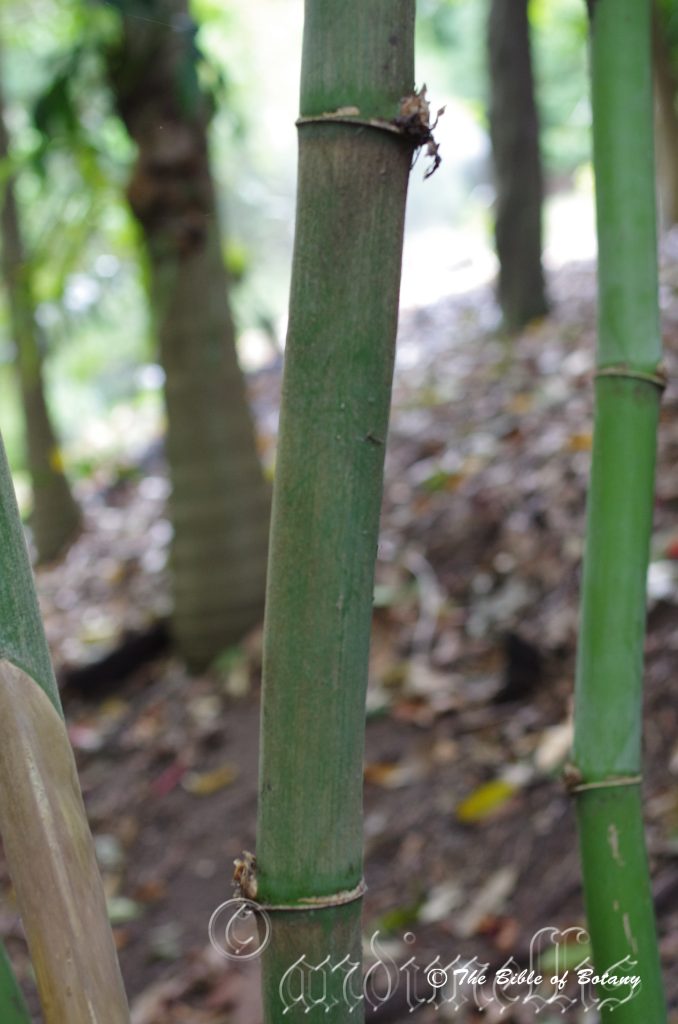
Indigenous Gardens Capalaba Qld.
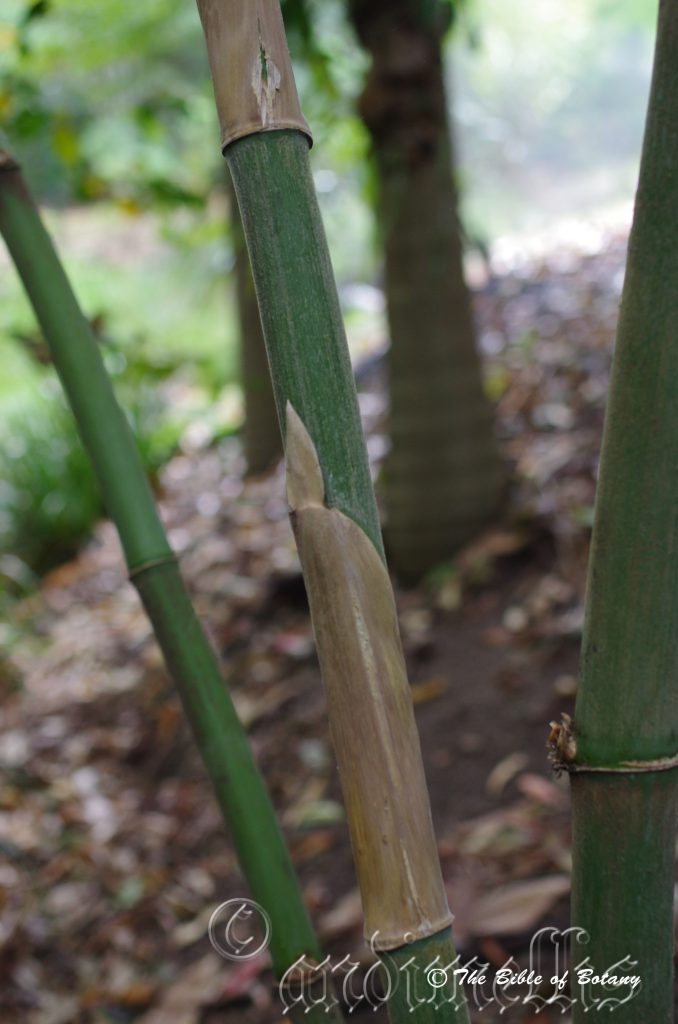
Indigenous Gardens Capalaba Qld.
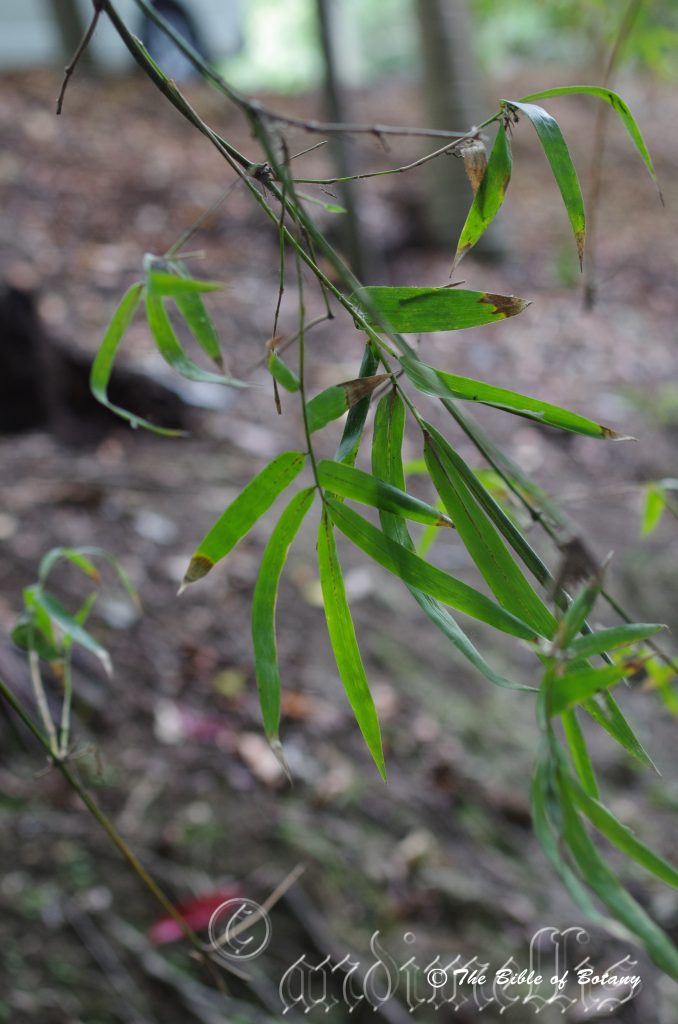
Indigenous Gardens Capalaba Qld.
Bambusa arnhemica
Classification:
Unranked: Monocots
Unranked: Commelinids
Order: Poales
Family: Poaceae
Genus: From Bambu, which is Latinized from the Malay word for bambu or bamboo. It refers to plants, which belong to the classic bamboo family.
Specie: From Arnhemica, which is Latinized for the vernacular aboriginal word for Arnhem Land. It refers to plants, which were first discovered from Arnhem Land.
Sub specie:
Common Name: Native Bamboo
Distribution:
Bambusa arnhemica are found from near East Darwin to Kakadu National Park in the north, south to Nitmiluk National Park.
https://avh.ala.org.au/occurrences/search?taxa=Bambusa+arnhemica+#tab_mapView
Habitat Aspect Climate:
Bambusa arnhemica prefer full sun to dappled shade. It is found on alluvial flats and in riparian zones that are flood prone and fire sheltered zones. It is common in vine forests and monsoonal forests. The altitude ranges from 5 meters ASL to 300 meters ASL.
The temperatures range from 8 degrees in August to 43 degrees in January.
The rainfall ranges from lows of 1200mm to 1650mm average per annum.
Soil Requirements:
Bambusa arnhemica prefers sandy loams, light fatty clays, medium clays or light silts to heavy silts. The soils are usually derived from decomposed sandstones metamorphic rocks. The soil’s pH ranges from 5pH to 7pH. It tolerates seasonal water logged soils. None saline soils to moderately saline soils are tolerated.
Height & Spread:
Wild Plants: 6m to 15m by 8m to 10m.
Characteristics:
Bambusa arnhemica new shoots have a very distinctive pale to creamy lime green colour and are covered in prophyllate sheath like leaves. It is a long-lived semelparous flowering bamboo. The roots are pachymorphic forming a clump bamboo.
The caespitose, linear, lanceolate or oblong leaves of Bambusa arnhemica are cauline with 3 to 7 per branch. They measure 80mm to 200mm in length by 7mm to 18mm in width. The discolourous leaves are grass-green to mid blue-green and glabrous on the upper laminas while the lower laminas are slightly paler and dull. The laminas are flat and decurve downwards from the base as they approached the apex. The bases are truncate while the apexes are acuminate. The mid vein is prominent on the lower lamina and is visible on the upper lamina. The parallel veins are not prominent but are clearly visible from both laminas. The margins are entire. The bases have a petiole like sheath that connects the blade to the sheath. They measure 1mm to 2mm in length. Young leaves are grass-green and glabrous.
The leaf sheaths are glabrous and the sheath auricles are absent. The ligules are an eciliate membrane and measure 1 mm in length.
The woody cculms measure 6 meters to 15 meters in length by 65mm to 85mm in diameter. The deep green to sea-green culms is without nodal roots while the internodes are terete, hard and thin-walled. The lateral branches are dendroid; arising from lower culms. Culm sheaths are deciduous and measure 150mm to 200mm in length by 60mm to 85mm in width. They are strongly convex at the apex without auricles. The culm sheath’s ligules measure 3mm to 4mm in height and is finely dentate. The culm sheath blades are narrowly ovate and measure 50mm in length.
The inflorescences of Bambusa arnhemica are bractiferous in clusters produced from the nodes, in disorganised tufts. The maxillary buds are at the base of spikelets and are glumaceous with subtending bracts. They are prophyllate below lateral spikelets and leafless between the branches and measure 600mm to 800mm in length overall.
The spikelets comprise of 7 to10 fertile florets with diminishing florets at the apex. The spikelets are linear or lanceolate and are compressed laterally. They measure 15mm to 40mm in length and disintegrate once they mature.
The ovate lower glumes measure 2mm to 3mm in length. The ovate upper glumes measure 3mm to 5mm length. Both the lower and upper glumes apexes are acute.
The fertile, 7 veined ovate lemmas measure 6mm to 8 mm in length while the sterile lemmas resembling but are smaller and do not develop.
The male spikelets have 3 lodicules and 6 anthers.
The female spikelets have 3 lodicules with the style dividing into 2 or 3.
It is a a long-lived, gregarious, semelparous flowering bamboo, which means all plants will flower at the same time and die shortly after seed dispersal.
Wildlife:
Bambusa arnhemica is suitable for erosion control on steeper slopes in riparian zones especially if the sites are subject to periodic flooding with swift currents.
Bambusa arnhemica’s new shoots are edible and are often damaged by native rats. They also harbour the native mouse (Notomys aquilo) and the fawn antechinus (Antechinus bellus).
The culms are very hard and suitable for flooring and pole work.
Cultivation:
Bambusa arnhemica is a beautiful open type clumping bamboo for larger gardens. It will grow from 12 meters to 15 meters in height by 12 meters to 15 meters in diameter when grown in the open. Once established it can tolerate light frosts and is moderately drought resistant but does far better where good soil moisture is retained for most of the year.
It looks particularly good along moist gullies where it is excellent for starting a rainforest.
This bamboo is a good tub specimen and can be divided into 3 to 6 new plants every few years once established.
On larger blocks it is a very good fire retardant species for along boundaries.
Propagation:
Seeds:
Collecting seeds from Bambusa arnhemica is very unreliable as flowering because of its semelparous flowering, nature so division remains the only genuine method of reproduction.
Division:
When reproducing from divisions water thoroughly the day before. Remove the plant by digging outside the rootball.
Wash excess soil from the ball and cut it into 3 or 4 equal equal sections, first down the middle then halve those sections again. Remove unwanted dead material and any old small clumps that look weak.
Plants can be divided further but ensure each division has a several strong shoots and healthy roots attached to the tuff.
Replant ensuring the soil is at the same level as before. Water and fertilize. New shoots will appear within two weeks.
If it is to be mass planted as features try them at 1.5 meter to 3 meter centers. Do not over crowd the plants or the desired affect will be destroyed.
Fertilize using Seaweed, fish emulsion or organic chicken pellets soaked in water on an alternate basis. Fertilize every two months until the plants are established then twice annually in early September or March to maintain health, vitality and better flowering and better quality fruit.
Further Comments from Readers:
“Hi reader, it seems you use The Bible of Botany a lot. That’s great as we have great pleasure in bringing it to you! It’s a little awkward for us to ask, but our first aim is to purchase land approximately 1,600 hectares to link several parcels of N.P. into one at The Pinnacles NSW Australia, but we need your help. We’re not salespeople. We’re amateur botanists who have dedicated over 30 years to saving the environment in a practical way. We depend on donations to reach our goal. If you donate just $5, the price of your coffee this Sunday, We can help to keep the planet alive in a real way and continue to bring you regular updates and features on Australian plants all in one Botanical Bible. Any support is greatly appreciated. Thank you.”
In the spirit of reconciliation we acknowledge the Bundjalung, Gumbaynggirr and Yaegl and all aboriginal nations throughout Australia and their connections to land, sea and community. We pay our respect to their Elders past, present and future for the pleasures we have gained.
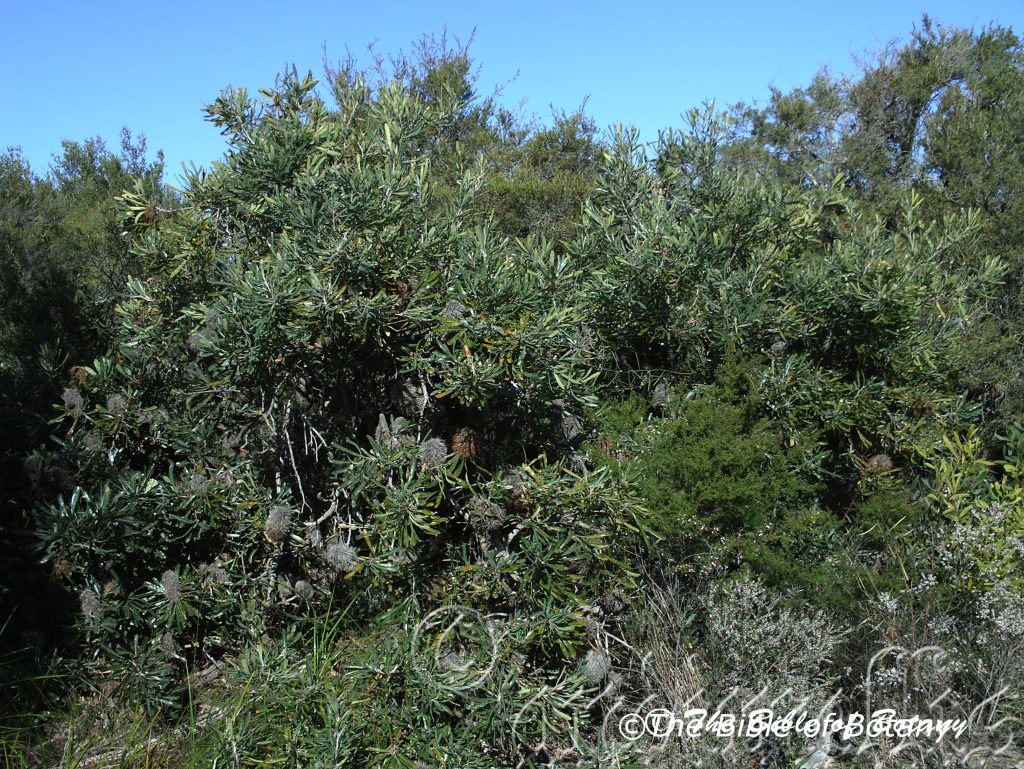
Lake Innes National Park NSW
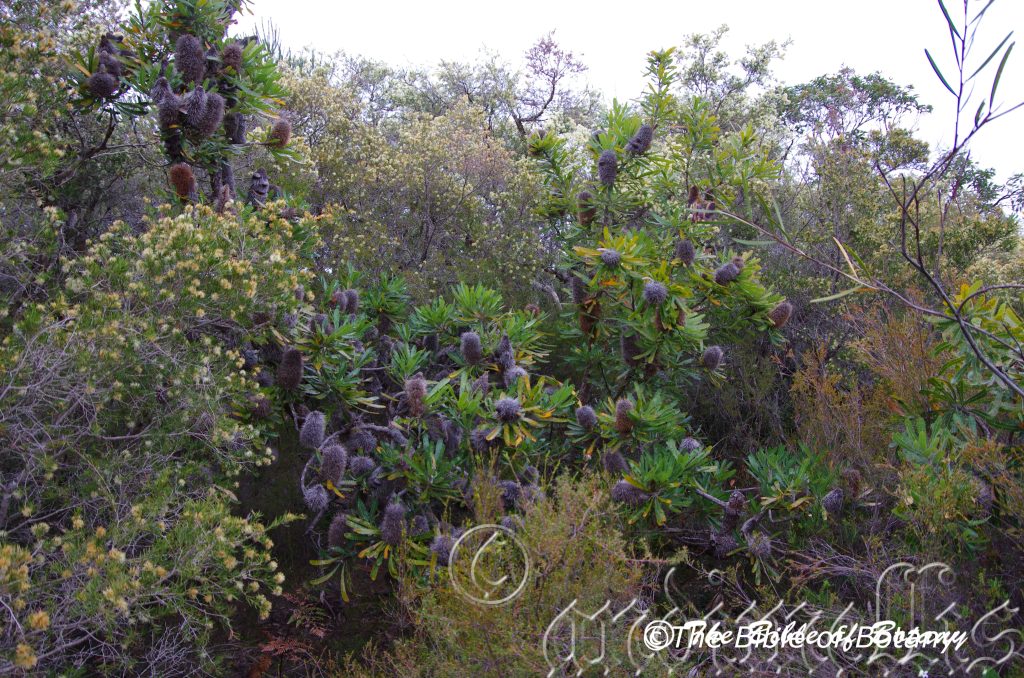
Lake Innes National Park NSW

Southport Qld.
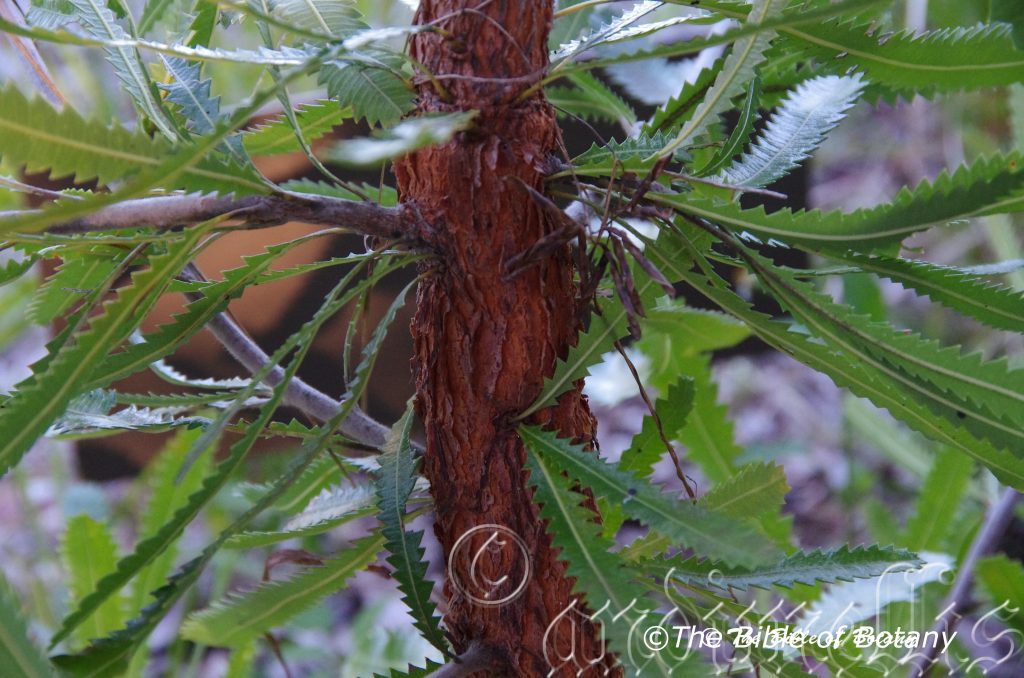
Coffs Harbour NSW
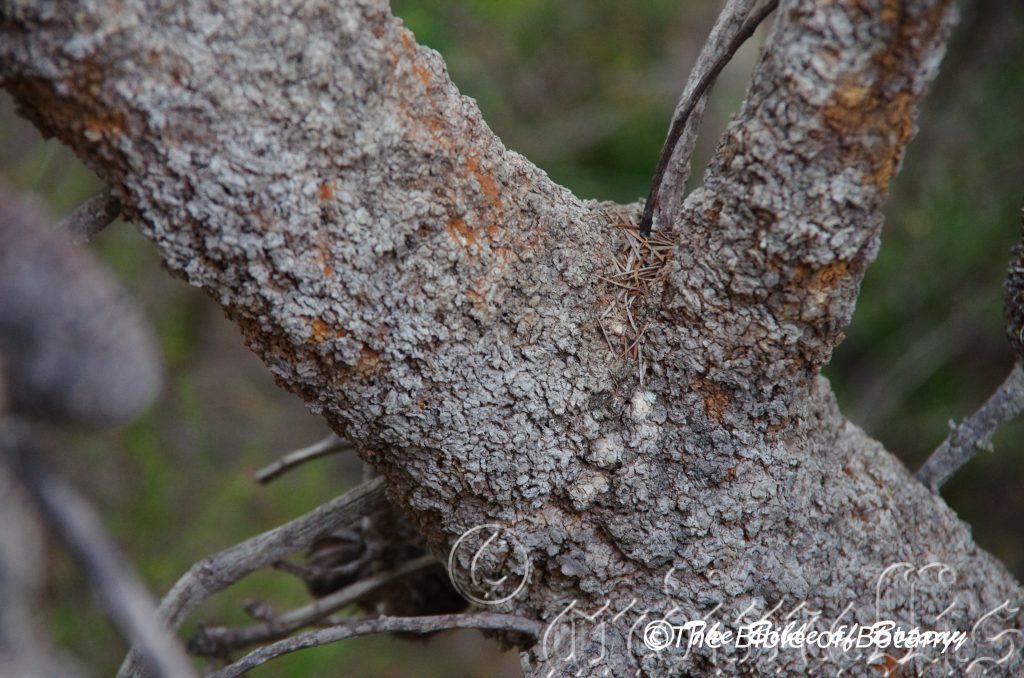
Lake Innes National Park NSW

Lake Innes National Park NSW

Lake Innes National Park NSW
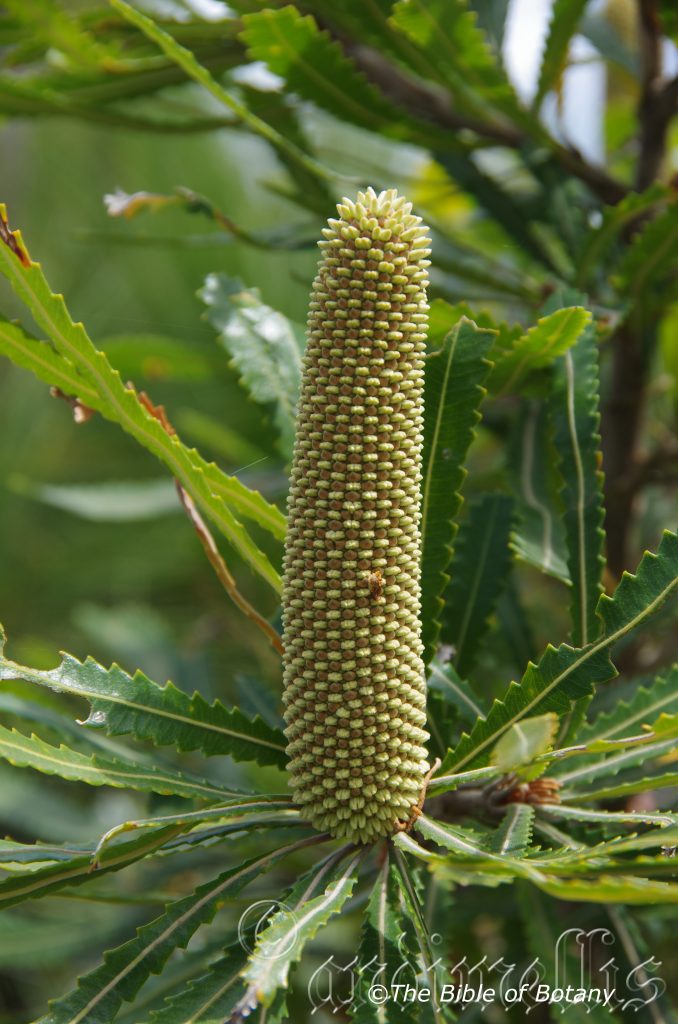
Boorkoom Yuraigir National Park NSW

Southport Qld.
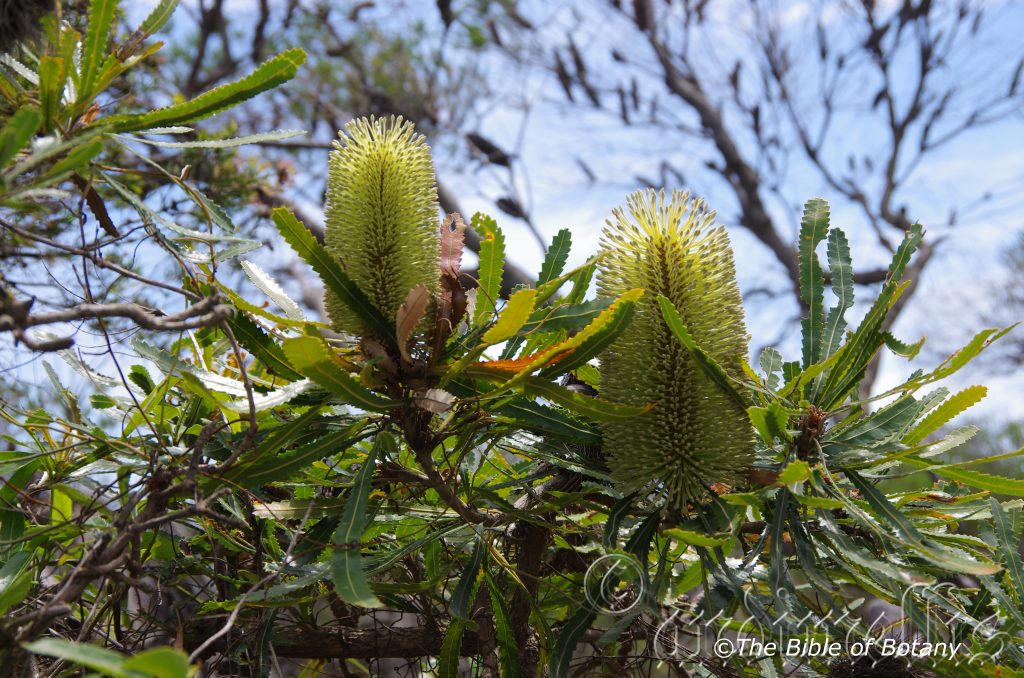
Boorkoom Yuraigir National Park NSW

Coffs Harbour NSW
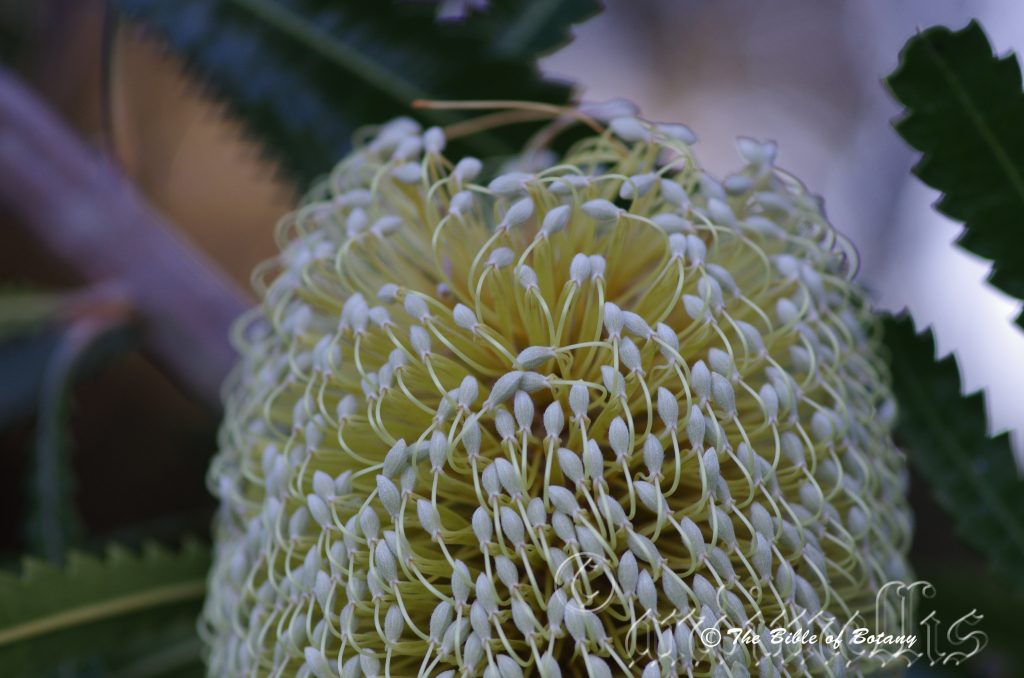
Coffs Harbour NSW

Coffs Harbour NSW

Coffs Harbour NSW

Coffs Harbour NSW
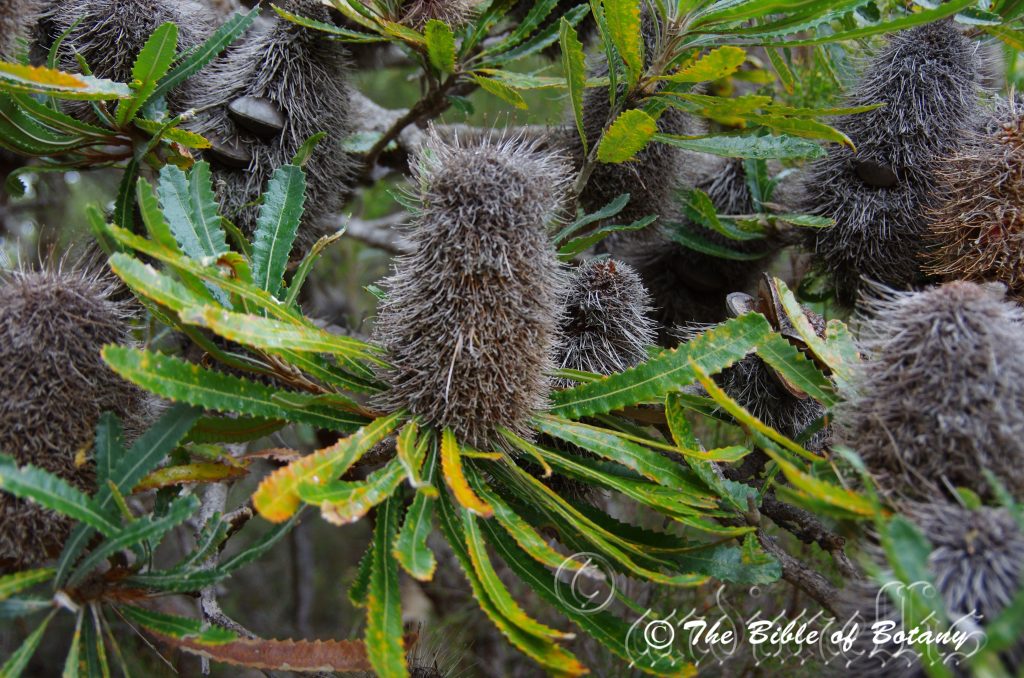
Lake Innes National Park NSW
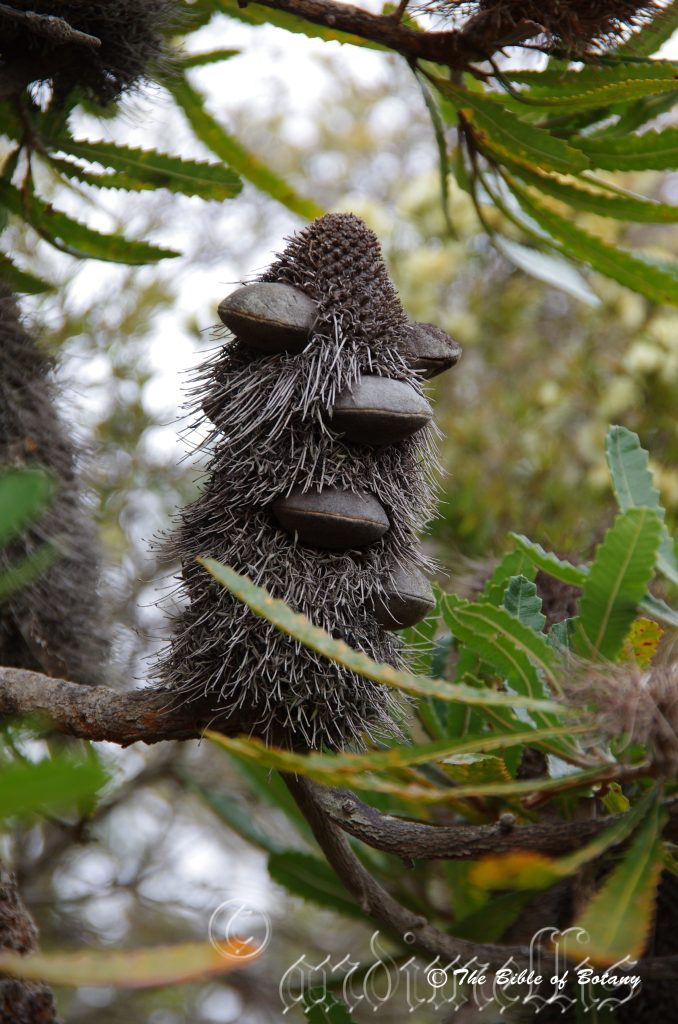
Lake Innes National Park NSW
Banksia aemulum
Class: Eudicots
Classification:
Order: Proteales
Family: Proteacea
Genus: Is named in honour of Sir Joseph Banks; 1743-1820, who was an English Naturalist and patron of botany who travelled with Captain Cook on the Endeavour to explore and study the plants of the east coast of Australia.
Specie: From Aemulus, which is Latin for emulative or to compete with. It refers to plants, which resemble another species or genus.
Common Name: Wallum Banksia.
The aboriginal name for the plant is Wallum while in the Gumbaynggirr Aboriginal language it is known as Wurindaga.
Distribution:
Banksia aemula is found naturally in coastal wallums and heaths south from Bundaberg in southern coastal Queensland to Sydney in New South Wales. It is only found on the coastal strip.
https://avh.ala.org.au/occurrences/search?taxa=Banksia+aemula+#tab_mapView
Habitat Aspect Climate:
Banksia aemula prefer full sun to dappled shade. They are found in open woodlands, dry sclerophyll forests, coastal wallums and coastal heaths. The altitude ranges from 5 meters ASL to 60 meters ASL
The temperatures range from -2 degrees in July to 34 degrees in January.
The rainfall ranges from lows of 700mm to an average of 1600mm annually.
Soil Requirements:
Banksia aemula prefers deep, coarse sands, fine sands, and sandy loams to light fatty clays or light silts. The soils are derived from accumulated peaty beach sands or at times alluvial deposits. The soil’s pH ranges from 4.5pH to 6.5pH. It does not tolerate waterlogged soils. None saline soils to very saline soils are tolerated as are salt laden winds.
Height & Spread:
Wild Plants: 4m to 8m by 4m to 8m.
Characteristics:
Banksia aemula is a beautiful large shrub or small tree which is suitable for regeneration projects. The bark is grey to a red-brown warty and can be friable between the fingers. Branchlets are mid grey and rough. The branchlets are grey and densely covered in grey or rusty tomentose hairs.
Banksia aemula alternate, narrow obovate to oblong leaves measure 40mm to 200mm in length by 5mm to 30mm in width. The petioles measure 2mm to 6mm in length. The base is attenuate while the apex is truncate with a mucronate point. The discolourous leaves are deep sea green on the upper lamina and silvery white on the lower lamina and are covered in rusty, caduceus tomentose hairs when young. The leaf margins are prominently and regularly toothed. The mid vein is prominent on the lower lamina and distinctly visible on the upper lamina being white.
Conflorescences measure 60mm to 200mm in length while, the perianths measure 35mm to 45mm in length. They are pale yellow to a creamy-green in colour. The style is slightly curved persistent and turns honey coloured after fertilization. Flowering occurs from March to June however some flowers occur throughout the year.
The fruits of Banksia aemula are follicles along a central cone. There are 5 to 25 follicles on a cone. The cones measure 120mm to 160mm in length by 120mm in diameter. The elliptical follicles measure 20mm to 25mm in length by 16mm to 20mm in width.
Wildlife:
Banksia aemula attracts all the different specie of honeyeaters, particularly those migrating birds which rely on flowering plants during their migration from March to April.
The flowers were picked and shaken or dipped in water to release the nectar by aborigines.
Cultivation:
Banksia aemula is really beautiful when grown as a large shrub. Three plants planted close together make a great feature when planted in the middle of the lawn as a center piece especially if one is allowed to grow as a tree. If the block slopes downwards from the viewing area then the above formation is particularly striking and bird attractive. In cultivation the plants will grow 6 meters to 9 meters in height by 4 meters to 5 meters in diameter as a tree or can be trained to produce several branches from near the ground as a shrub where they will grow 4 meters to 5 meters in height by 4 meters to 5 meters in diameter.
Banksia aemula is ideal as a wind break in exposed coastal situations whether they are wet or dry as it is tolerant to salt laden winds and very drought tolerant. They also can be used for an unusual hedge or bird corridor on sandy soils.
It makes a great starter plant for sandy coastal gardens. The large deep blue-green leaves with white reverse, compliment the bright green leaves of other starter plants like Acacia sophorae or Acacia longifolia. The flowering seasons are at the opposite end of the season so extend the colour period in the garden. In fact they would be a very strong complementary contrast if the prostrate or smaller Acacias were to flower at the same time or in a different season. In a bush scene they are best scattered through the bush to give patches of colour to attract the viewers’ attention rather than having a mass planting.
Plant them at 5 meter to 6 meter centers with smaller large red flowering Grevillea like Grevillea banksii or below with Grevillea laurifolia. A Christmas spectacular was created near Coffs Harbour using Banksia aemula inter planted with Ceratopetalum gummiferum.
Propagation:
Seeds:
Seeds can be removed easily by placing the cones in a brown paper bag and leaving them in the car for 7 to 10 days. Another method is to place them in the oven after the evening meal has been prepared, with the oven off but while it is still hot. The cones will open up after a day or two. Shake to remove the seeds or pull them out with tweezers.
Sow fresh seed directly into a seed raising mix in early spring covering them with 5mm of the mix. Keep moist not wet. When the seedlings are 25mm to 40mm tall, prick them out and plant them into 50mm native tubes using a good organic mix.
Fertilize using Seaweed or fish emulsion on an alternate basis. Fertilize every two months until the plants are established then twice annually in early September or March to maintain health, vitality and better flowering and better quality fruit. Do not use synthetic fertilizers on Banksias as they usually contain phosphorous which is toxic to most Proteacea.
Once the seedlings reach 150mm to 200mm in height plant them out into their permanent position. For mass plantings of features hedges or screens plant at 4 meter centers.
Further Comments from Readers:
“Hi reader, it seems you use The Bible of Botany a lot. That’s great as we have great pleasure in bringing it to you! It’s a little awkward for us to ask, but our first aim is to purchase land approximately 1,600 hectares to link several parcels of N.P. into one at The Pinnacles NSW Australia, but we need your help. We’re not salespeople. We’re amateur botanists who have dedicated over 30 years to saving the environment in a practical way. We depend on donations to reach our goal. If you donate just $5, the price of your coffee this Sunday, We can help to keep the planet alive in a real way and continue to bring you regular updates and features on Australian plants all in one Botanical Bible. Any support is greatly appreciated. Thank you.”
In the spirit of reconciliation we acknowledge the Bundjalung, Gumbaynggirr and Yaegl and all aboriginal nations throughout Australia and their connections to land, sea and community. We pay our respect to their Elders past, present and future for the pleasures we have gained.
Banksia baxteri
Classification:
Class: Eudicots
Order: Proteales
Family: Proteaceae
Genus:Is named in honour of Sir Joseph Banks; 1743-1820, who was an English Naturalist and patron of botany who travelled with Captain Cook on the Endeavour to explore and study the plants of the east coast of Australia.
Specie: Is named in honour of Named for William Baxter; 17.. -1836 who was a British gardener and plant collector and the first person sent professionally to collect seeds in Western Australia for commercial purposes.
Common Name: Baxter’s Banksia.
Distribution:
Banksia baxteri is found along the coast and sand plains of the south west corner of Western Australia between the Oldfield River near Albany and the Stirling Range near Esperance.
https://avh.ala.org.au/occurrences/search?taxa=Banksia+baxteri+#tab_mapView
Habitat Aspect Climate:
Banksia baxteri grows in full sun. It grows in coastal heaths to sand plains behind the coastal dunes. The altitude ranges from 5 meters ASL to 150 meters ASL
The temperatures range from 2 degrees in July to 36 degrees in January.
The rainfall ranges from lows of 400mm to an average of 1000mm.
Soil Requirements:
Banksia baxteri prefers deep, coarse sands, fine sands, and sandy loams to light fatty clays. The soils are usually derived from decomposed sandstones granites or accumulated beach sands. The soil’s pH ranges from 5pH to 6.5pH. It does not tolerate water logged soils. None saline soils to very saline soils are tolerated as are salt laden winds.
Height & Spread:
Wild Plants: 2m to 4m by 2m to 4m
Characteristics:
The bark on the trunk is grey slightly fissured or tessellated. Juvenile branchlets are pale blue-green and covered in long white pilose to villous hairs. This Banksia does not form a lignotuber.
Banksia baxteri alternate, narrow obovate to oblong leaves measure 80mm to 120mm in length by 40mm to 50mm in diameter. The petioles measure 2mm to 6mm in length. The bases are truncate while the apexes are truncate with the mid vein extending past the apex. The discolourous laminas are pale to mid grey-green on the upper lamina while the lower lamina is glaucous green below with rusty tomentose hairs along the mid vein. The leaf margins are deeply triangularly lobed to the mid rib.
The conflorescences of Banksia baxteri are hemispherical and measure 35mm to 40mm in length by 80mm to 85mm in diameter. The perianths are pale yellow to a creamy green in colour opening from the centre outwards and darken with age. The style is slightly curved persistent and turning honey coloured after fertilization. Flowering occurs from August to September however some flowers again in occur December and January in favourable seasons.
The cones have 3 to 7 follicles and measure 20mm to 25mm in length by 30mm to 45mm in width. The elliptical follicles measure 8mm to 10mm long by 4mm to 6mm high.
Wildlife:
Banksia baxteri attracts all the different specie of small to medium size honeyeaters. The flowers were picked and shaken or dipped in water to release the nectar by aborigines.
Banksia baxteri is a beautiful small to medium shrub which is suitable for regeneration projects on sandy sites due to its low branching habit close to the ground.
Cultivation:
Banksia baxteri is a beautiful Banksia when grown as a medium shrub. Three plants planted close together make a great feature when planted in the middle of a rockery as a centerpiece or two on one side and the third on the other side further out to give balance to the bed. If the block slopes downwards from the viewing area then the viewer is partaking in a very beautiful and unusual view which is particularly pleasing to the eye with its large unusually shaped leaves. This is emphasized further when the plants are covered in the masses of hemispherical flowers. If they are planted on the upward slope then Banksia baxteri will look taller and grander but needs smaller red flowering plants in the for ground to achieve this image. Many of the Grevillea specie will suffice perfectly.
Banksia baxteri can also be used as a windbreak in coastal areas on the west coast and south coast at least as far east as Adelaide. Because it is tolerant to salt laden winds it can be used on seafront landscapes as well as homes on headlands and behind the frontal dunes or along estuaries. They also can be used for an unusual hedge or bird corridor on sandy soils. Under cultivation it will grow 2 meters to 3 meters in height by 2 meters to 3 meters in diameter when grown in the open.
The nectar laden flowers attract a myriad of honeyeaters even out of season when there may only be two or three flowers on a shrub.
Propagation:
Seeds:
Banksia baxteri seeds can be removed easily by placing the cones in a brown paper bag and leaving them in the car for7 to 10 days. Another method is to place them in the oven after the evening meal has been prepared, with the oven off but while it is still hot. The cones will open up after a day or two. Shake to remove the seeds or pull them out with tweezers.
Sow fresh seed directly into a seed raising mix in early spring covering them with 5mm of the mix. Keep moist not wet. When the seedlings are 25mm to 40mm tall, prick them out and plant them into 50mm native tubes using a good organic mix.
Fertilize using Seaweed or fish emulsion on an alternate basis. Fertilize every two months until the plants are established then twice annually in early September or March to maintain health, vitality and better flowering and better quality fruit. Do not use synthetic fertilizers on Banksias as they usually contain high levels of phosphorous and calcium which are toxic to most Proteaceae.
Once the seedlings reach 150mm to 200mm in height plant them out into their permanent position. For mass plantings of features hedges or screens plant at 2.5 meter centers.
Further Comments from Readers:
“Hi reader, it seems you use The Bible of Botany a lot. That’s great as we have great pleasure in bringing it to you! It’s a little awkward for us to ask, but our first aim is to purchase land approximately 1,600 hectares to link several parcels of N.P. into one at The Pinnacles NSW Australia, but we need your help. We’re not salespeople. We’re amateur botanists who have dedicated over 30 years to saving the environment in a practical way. We depend on donations to reach our goal. If you donate just $5, the price of your coffee this Sunday, We can help to keep the planet alive in a real way and continue to bring you regular updates and features on Australian plants all in one Botanical Bible. Any support is greatly appreciated. Thank you.” In the spirit of reconciliation we acknowledge the Bundjalung, Gumbaynggirr and Yaegl and all aboriginal nations throughout Australia and their connections to land, sea and community. We pay our respect to their Elders past, present and future for the pleasures we have gained.
Banksia blechnifolia
Classification:
Class: Eudicots
Order: Proteales
Family: Proteaceae
Genus: Is named in honour of Sir Joseph Banks; 1743-1820, who was an English Naturalist and patron of botany who travelled with Captain Cook on the Endeavour to explore and study the plants of the east coast of Australia.
Specie: From Blockhon, which is Ancient Greek for the ancient name given to fishbone ferns and Folium, which is Latin for foliage. It refers to plants, which have foliage that resembles the Blechnum genus.
Common Name:
Distribution:
Banksia blechnifolia is found along the coast in the south western corner of Western Australia from east of the Oldfield River near Albany and the Stirling Range near Esperance.
https://avh.ala.org.au/occurrences/search?taxa=Banksia+blechnifolia+#tab_mapView
Habitat Aspect Climate:
Banksia blechnifolia grows in full sun in a wide variety of aspects from being adjacent to coastal heath land to sand plains behind the frontal and back dunes. The altitude ranges from 5 meters ASL to 20 meters ASL
The temperatures range from lows of 2 degree in August to 36 degrees in January.
The rainfall is from lows of 300mm to an average of 1000mm.
Soil Requirements:
Banksia blechnifolia prefers deep, yellow or brown, fine sands, sandy loams to light fatty clays. The soils are usually derived from decomposed lateritic sandstones or accumulated beach sands often mixed with laterites. The soil’s pH ranges from 5pH to 6pH. It does not tolerate water logged soils. None saline soils to very saline soils are tolerated as are salt laden winds.
Height & Spread:
Wild Plants:250mm to 350mm by 1800mm to 2000mm.
Characteristics:
Banksia blechnifolia trunk is grey-brown and scabrous. The stems are pink-brown and slightly scurfy while the juvenile branchlets are densely covered in velutinous to sericeous hairs. This Banksia does not grow a lignotuber.
The alternate, narrow oblong leaves of Banksia blechnifolia measure 250mm to 350mm in length by 50mm to 65mm in width. The petioles measure 50mm to 65mm in length and are pale yellow-brown. The bases are truncate while the apex is truncate on one side of the main vein. The mid vein continues past the apex of the laminas to form a short point. The discolourous laminas are deep grey-green to deep sea green on the upper laminas while the lower laminas are deep grey-green to deep sea green and densely covered in glaucous spots leaving longitudinal lines which are glabrous. The mid vein is prominent on the lower lamina and densely covered in long rusty-red or golden brown tomentose hairs and is clearly visible from the upper lamina. The leaf margins are deeply, narrowly triangularly lobed almost to the mid rib. The alternate lobes are hastate where they contact the center rib and the adjoining lobe.
The conflorescences are cylindrical to conical when opening and measure 85mm to 125mm in length by 40mm to 55mm in diameter. The perianths measure 15mm to 20mm in length. The styles are red, pink cream or orange brown in colour, opening from the bottom to the top and fade with age. The style curves towards the apex and is persistent, turning a deep honey colour after fertilization. Flowering occurs from September to November however some flowers occur through to the end of December.
The cones measure 70mm to 100mm in length by 32mm to 42mm in width and have 3 to 7 follicles. The oblong follicles measure 10mm to 12mm in length by 6mm to 8mm high.
Wildlife:
Banksia blechnifolia attracts different specie of ants during September and November when in flower. To shake the flowers sees hundreds of honey ants scrambling for cover.
Cultivation:
Banksia blechnifolia is a classically interesting and beautiful slow growing Banksia that is idea for sandy rockeries. Three to five plants planted close together or scatter them throughout the rockery, raised garden beds or amongst boulders to make great features. This is especially the case when mixed with other small annuals or prostrate ground covers with small fine leaves to contrast the long deep greens here. Because of their size and leaf shape most small plants make a pleasing contrast.
Banksia blechnifolia are magnificent plants that are worthwhile growing if you have sandy to sandy loam soils and live in south west of Western Australia or along the southern coast line to as far east as Adelaide. It reaches its full potential of in just 3 or 4 years and will continue to grow slowly thereafter. In cultivation it will grow from 300mm to 400mm in height by 1.5 meters in diameter.
It is best used adjacent to small areas of bush close to paths or the house so their magnificent flowers can be viewed regularly. It is great in medium size rockeries as the main ground cover. Here they can be scatter planted with Helichrysum species and other annuals or the occasional small shrub to give height. If it is surrounded by other low growing plants with fine foliage and cream or white flowers they will dominate at the center giving an expansive look to the bed especially when they are in flower. Use bright yellow flowering plants that flower when the Banksia is dormant as they will contrast strongly against the deep green foliage.
This is one plant that benefits highly from being planted amongst boulders as the only other feature making the boulders look larger and more impressive.
Six or more scattered back from a bend with small shrubs between will become a very strong focal point when in flower highlighting the shrubs at the same time. They will gain a lot of attention whether you are coming or going because of the fresh clean look of the foliage even in the driest of times. To the rear, use fine leaf taller plants. Plants with white, deep red or deep purple flowers can be used in both the mid ground and background. This will lead the viewer’s eyes directly to the yellow flowers and rusty tomentose buds and branchlets for a longer period in the foreground.
Ensure that the whole plant or at least most of it is on display from most sections of the garden as the flowers are a real bonus.
When it is in flower these plants will catch your attention and the viewer will be transfixed on the display rather than watching the path.
Flowers appear from the third year from seed. The nectar laden flowers attract a myriad of honeyeaters despite the fact that the flowers are at ground level so beware of cat problems when you are planting them.
For mass plantings along a long formal driveway plant them at 1800mm centers with either leschenaultia formosum in a narrow bed or Anigozanthos flavida if the garden bed is larger. Plant the kangaroo paws more to the back to give proper balance.
Propagation:
Seeds:
Banksia blechnifolia seeds can be removed easily by placing the cones in a brown paper bag and leaving them in the car for 7 to 10 days. Another method is to place them in the oven after the evening meal has been prepared, with the oven off but while it is still hot. The cones will open up after a day or two. Shake to remove the seeds or pull them out with tweezers.
Sow fresh seed directly into a seed raising mix in early spring covering them with 5mm of the mix. Keep moist not wet. When the seedlings are 25mm to 40mm tall, prick them out and plant them into 50mm native tubes using a good organic mix.
Fertilize using Seaweed or fish emulsion on an alternate basis. Fertilize every two months until the plants are established then twice annually in early September or March to maintain health, vitality and better flowering and better quality fruit.
Do not use synthetic fertilizers on Banksia specie as they usually contain high levels of phosphorous and calcium which are toxic to most Proteacea.
Once the seedlings reach 150mm to 200mm in height plant them out into their permanent position.
Further Comments from Readers:
“Hi reader, it seems you use The Bible of Botany a lot. That’s great as we have great pleasure in bringing it to you! It’s a little awkward for us to ask, but our first aim is to purchase land approximately 1,600 hectares to link several parcels of N.P. into one at The Pinnacles NSW Australia, but we need your help. We’re not salespeople. We’re amateur botanists who have dedicated over 30 years to saving the environment in a practical way. We depend on donations to reach our goal. If you donate just $5, the price of your coffee this Sunday, We can help to keep the planet alive in a real way and continue to bring you regular updates and features on Australian plants all in one Botanical Bible. Any support is greatly appreciated. Thank you.” In the spirit of reconciliation we acknowledge the Bundjalung, Gumbaynggirr and Yaegl and all aboriginal nations throughout Australia and their connections to land, sea and community. We pay our respect to their Elders past, present and future for the pleasures we have gained.
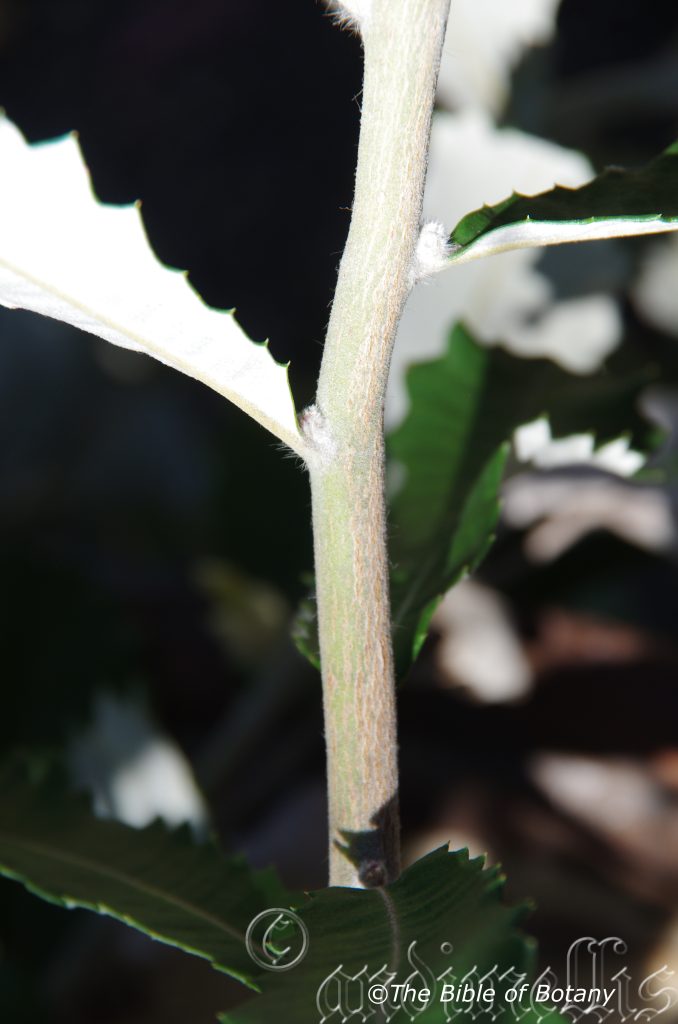
National Botanic Gardens Canberra ACT.
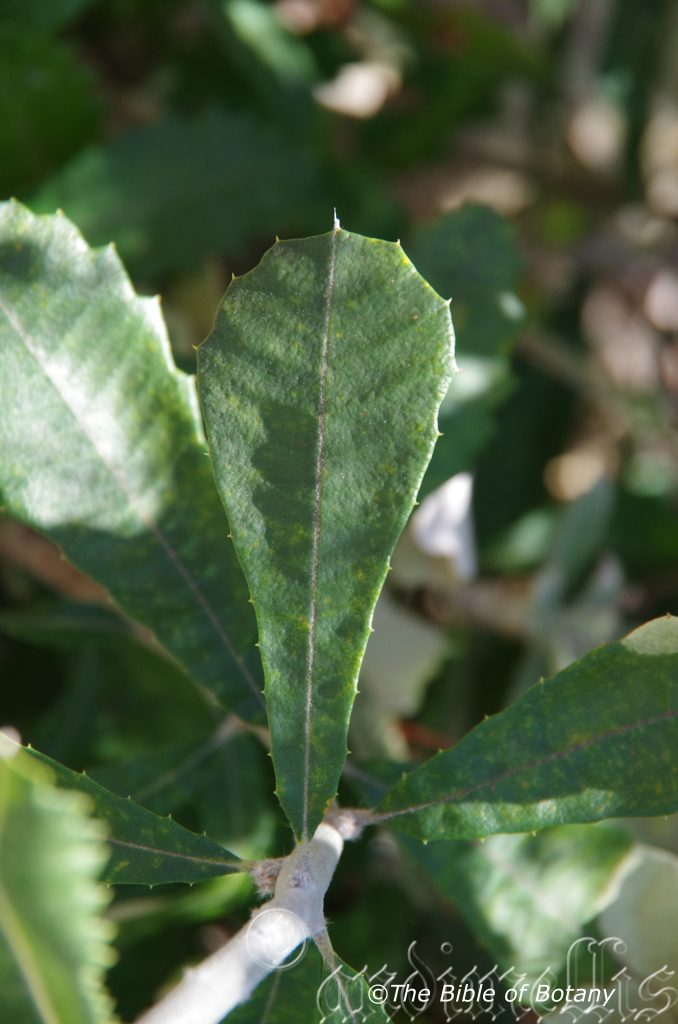
National Botanic Gardens Canberra ACT.
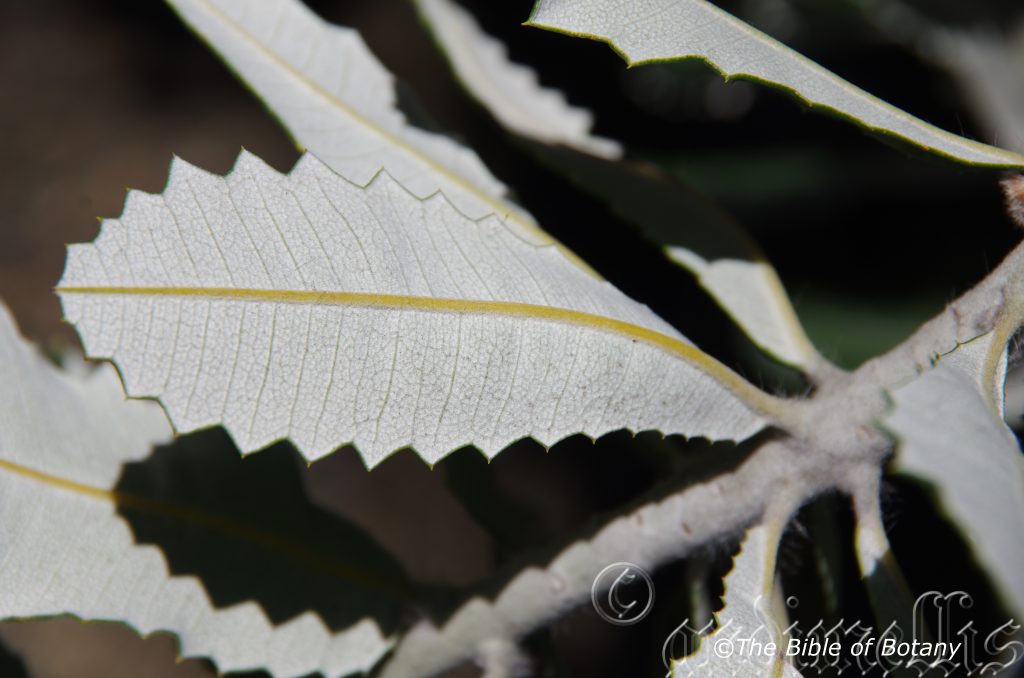
National Botanic Gardens Canberra ACT.
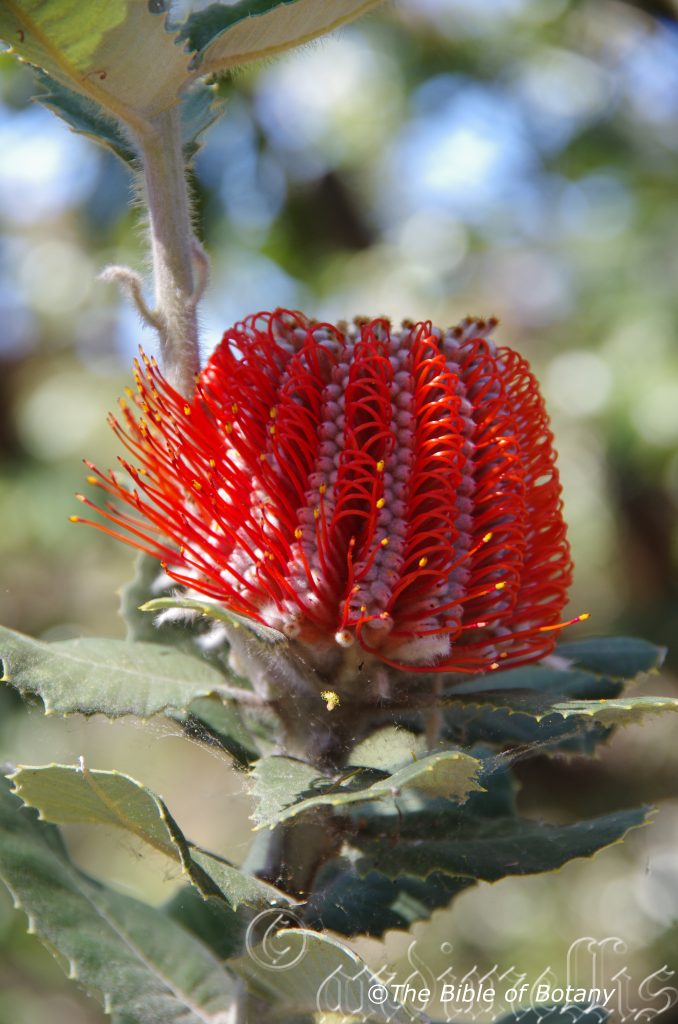
National Botanic Gardens Canberra ACT.
Banksia coccinea
Classification:
Class: Eudicots
Order: Proteales
Family: Proteaceae
Genus: Is named in honour of Sir Joseph Banks; 1743-1820, who was an English Naturalist and patron of botany who travelled with Captain Cook on the Endeavour to explore and study the plants of the east coast of Australia.
Specie: From Coccineus, which is Latin for scarlet red. It refers to plants, which have scarlet-red markings on the trunk or scarlet red buds or flowers.
Sub Specie:
Common Name: Scarlet Banksia.
Distribution:
Banksia coccinea is found along the coast and coastal ranges bounded by Denmark to Stokes National Park and the Sterling Range in the north of south western Western Australia.
https://avh.ala.org.au/occurrences/search?taxa=Banksia+coccinea+#tab_mapView
Habitat Aspect Climate:
Banksia coccinea prefers full sun or light dappled shade. It grows in dry sclerophyll forest and woodland, particularly on slopes and ridges. The altitude ranges from 2 meters ASL to 40 meters ASL
The temperatures range from lows of 2 degrees in August to 38 degrees in January.
The rainfall is from lows of 400mm to an annual average of 600mm.
Soil Requirements:
Banksia coccinea prefers skeletal sands, light fatty clays or deep sands to deep light fatty clays. The soils are usually derived from accumulated sands or at times decomposed granites. The soil’s pH ranges from 5pH to 7pH. It tolerates seasonal water logged soils or seasonal high water tables. None saline soils to moderately saline soils are tolerated.
Height & Spread:
Wild Plants:1.2m to 4.5m by 1m to 3.5m.
Characteristics:
Banksia coccinea is a striking small tree to large shrub with a grey-brown glabrous to tessellated bark. Branchlets are glabrous. Juvenile branchlets are pale pinkish grey to mid pink and densely covered in whitish hirsute hairs. A lignotuber is absent with Banksia coccinea.
The alternate cordate to obcordate leaves on Banksia coccinea measure 30mm to 95mm in length by 20mm to 70mm width. The petioles measure 3mm to 5mm long. The bases are broad tapering while the apexes are truncate with or without a mucronate tip. The margins are sparsely dentate with 1mm to 4mm teeth. The discolourous leaves are deep grey-green to sea-green and moderately covered in white pubescent hairs on the upper lamina of juvenile plants becoming glabrous with age. The lower lamina is much paler to and covered in white pubescent hairs especially along the mid vein. The mid vein is prominent on the lower lamina and is clearly visible on the upper lamina being whitish while the lateral veins are slightly prominent and faintly visible from the upper lamina.
The conflorescences of Banksia coccinea appear from the one to two year old stems. The squat, roughly cylindrical flowers measure 30mm to 60mm in height by 80mm to 100mm in diameter. There are up to 300, averaging 286 individual perianths on a head that measure 30mm to 33mm in length.
The scarlet-red, blood-red, orange or at times pink style has a prominent hook below the stigma. The style measures 40mm to 48mm in length. Anthesis is acropetal, meaning the flowers open from the base along the spike to the apex. The flowers of this Banksia arise in a vertical pattern whereas the case in most Banksia in a spiral pattern around the spike’s axis. Flowering occurs from early May to December with the odd flower persisting to late January. Flowering peaks in July to August.
The cones measure 60mm to 80mm in length by 40mm to 50mm in width. There are 10 to 20 follicles on a cone which are usually concentrated on the lower half. The follicles measure 6mm to 8mm in length by 1mm to 2mm in height and 2mm to 3mm in width. They open immediately after fire or when the branch or plant dies.
The long, black seed is composed of a flat cuneate wedge-shaped seed body which measures 5mm to 7mm in length by 4mm to 7mm in width plus the papery wing.
Wildlife:
Banksia Banksia coccinea attracts most medium to large honeyeaters when in flower.
Cultivation:
Banksia coccinea is a classically interesting and beautiful fast growing Banksia spp. that is idea for rockeries with light sandy soils. A single plant, planted at the center of a rockery, raised garden bed or amongst boulders to make a great feature especially when grown as a shrub. This is especially the case when mixed with other small annuals or prostrate ground covers with small finer or broad leaves to contrast the long deep greens here. Because of their size and leaf shape most small plants make a pleasing contrast. Banksia coccinea is truly a very desirable garden plant because of its dramatic and spectacular flowers.
However, it readily succumbs to the root rot fungus Phytophthora cinnamomi, which flourishes in areas of summer rainfall and humidity like on the east coast. Thus, cultivation of this plant is near to impossible on the east coast especially from Sydney northwards along the coast.
If it can be grown the terminal flowers are magnificent for cut flower arrangements and plantations of suitable forms of the species for the cut flower trade have been established in southern Western Australia.
It reaches its full potential in just 3 or 4 years and will continue to grow slowly thereafter. In cultivation it will grow from 3 meters to 5 meters in height by 2 meters to 3.5 meters in diameter.
Six or more scattered or mixed with Banksia oblongifolia back from a bend with smaller shrubs between will become a very strong focal point and extend the long flowering period of both species. When it is in flower and mixed with shrubs which have red, pink or white flowers at the same time the sight can be very impressive but use plants which have small flowers rather than large flowers as it would be too overpowering.
To the rear, use large leafy taller growing plants. Again use plants with white, pink or lilac flowers for the best displays. This will lead the viewer’s eyes directly to the yellow flowers and rusty tomentose buds and branchlets for a longer period in the foreground.
Ensure that the whole plant or at least most of it is on display from most sections of the garden as the flowers are a real bonus.
When they are in flower these plants will catch your attention and the viewer will be transfixed on the display rather than watching the path.
Propagation:
Seeds:
Banksia coccinea seeds can be removed easily by placing the cones in a brown paper bag and leaving them in the car for 7 to 10 days. Another method is to place them in the oven after the evening meal has been prepared, with the oven off but while it is still hot. The cones will open up after a day or two. Shake to remove the seeds or pull them out with tweezers.
Sow fresh seed directly into a seed raising mix in early spring covering them with 5mm of the mix. Keep moist not wet. When the seedlings are 25mm to 40mm tall, prick them out and plant them into 50mm native tubes using a good organic mix.
Fertilize using Seaweed or fish emulsion on an alternate basis. Fertilize every two months until the plants are established then twice annually in early September or March to maintain health, vitality and better flowering and better quality fruit. Do not use synthetic fertilizers on Banksias as they usually contain high levels of phosphorous and calcium which are toxic to most Proteaceae.
Once the seedlings reach 150mm to 200mm in height plant them out into their permanent position.
Further Comments from Readers:
“Hi reader, it seems you use The Bible of Botany a lot. That’s great as we have great pleasure in bringing it to you! It’s a little awkward for us to ask, but our first aim is to purchase land approximately 1,600 hectares to link several parcels of N.P. into one at The Pinnacles NSW Australia, but we need your help. We’re not salespeople. We’re amateur botanists who have dedicated over 30 years to saving the environment in a practical way. We depend on donations to reach our goal. If you donate just $5, the price of your coffee this Sunday, We can help to keep the planet alive in a real way and continue to bring you regular updates and features on Australian plants all in one Botanical Bible. Any support is greatly appreciated. Thank you.”
In the spirit of reconciliation we acknowledge the Bundjalung, Gumbaynggirr and Yaegl and all aboriginal nations throughout Australia and their connections to land, sea and community. We pay our respect to their Elders past, present and future for the pleasures we have gained.
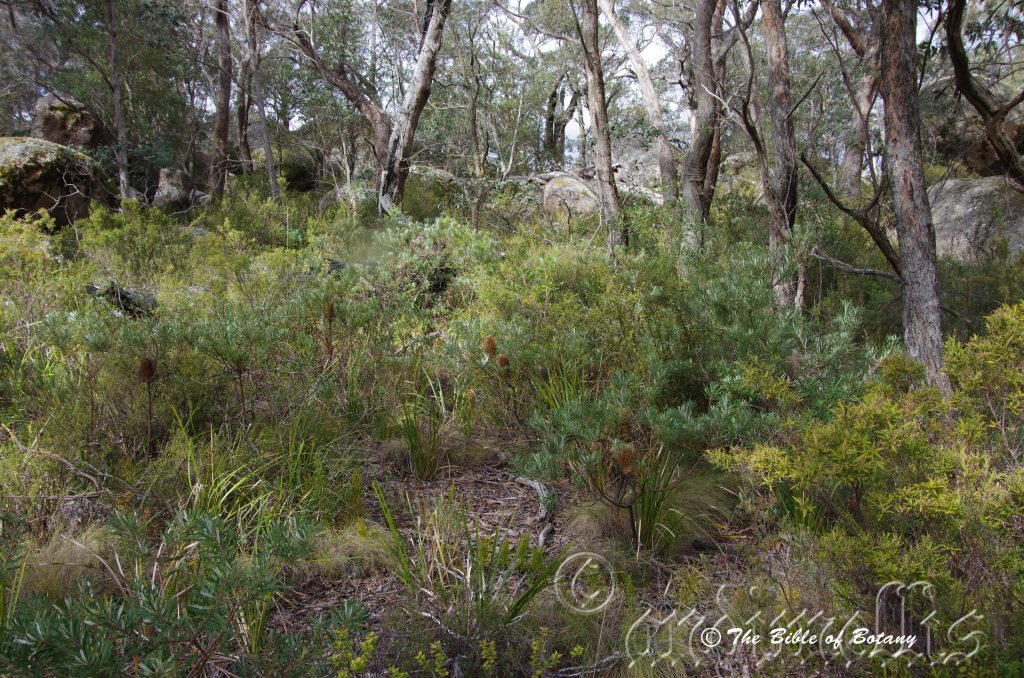
Cathedral Rocks National Park Ebor NSW
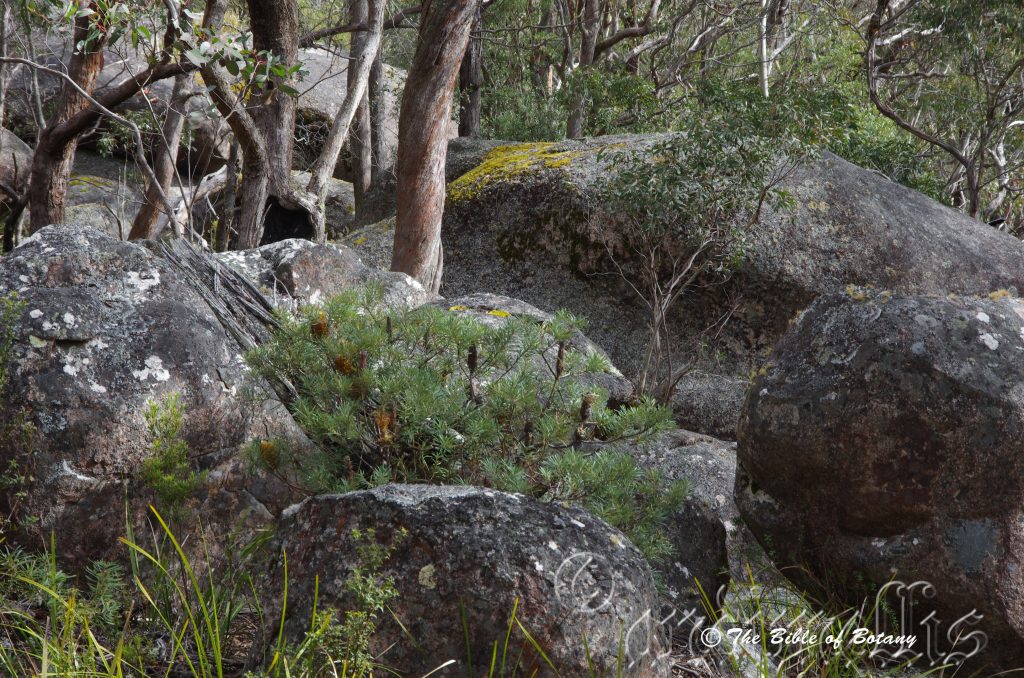
Cathedral Rocks National Park Ebor NSW
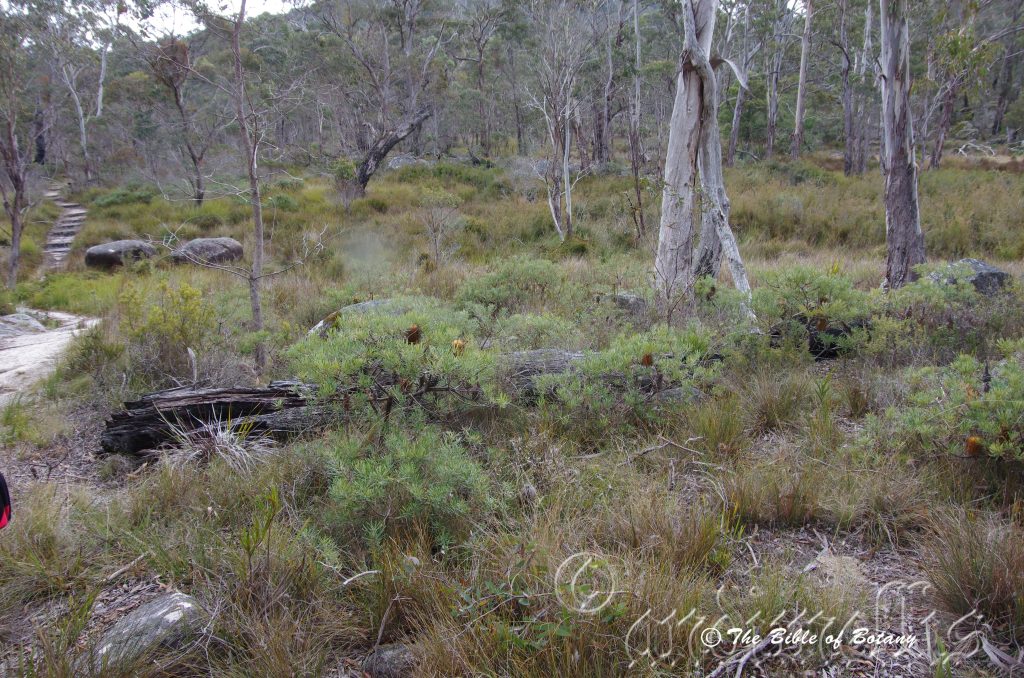
Cathedral Rocks National Park Ebor NSW

Cathedral Rocks National Park Ebor NSW

Cathedral Rocks National Park Ebor NSW
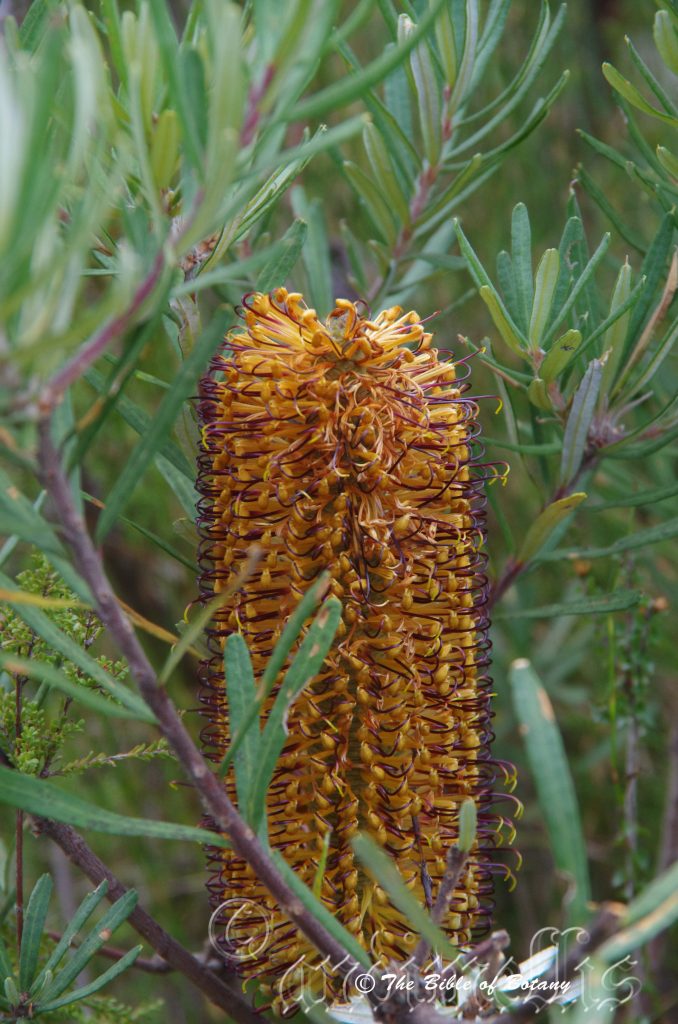
Cathedral Rocks National Park Ebor NSW
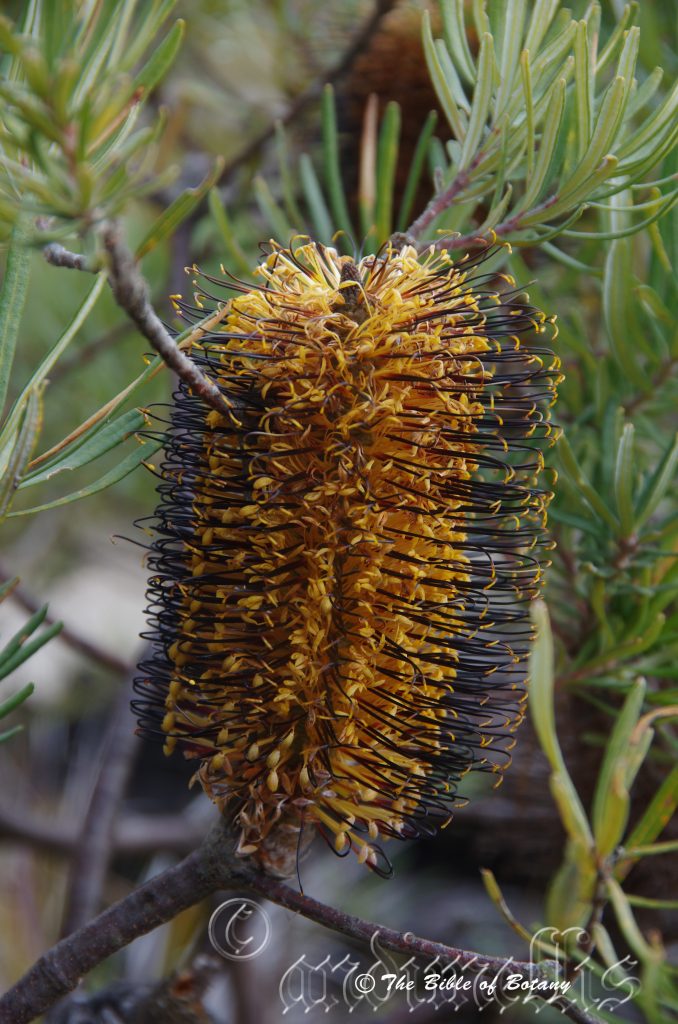
Cathedral Rocks National Park Ebor NSW
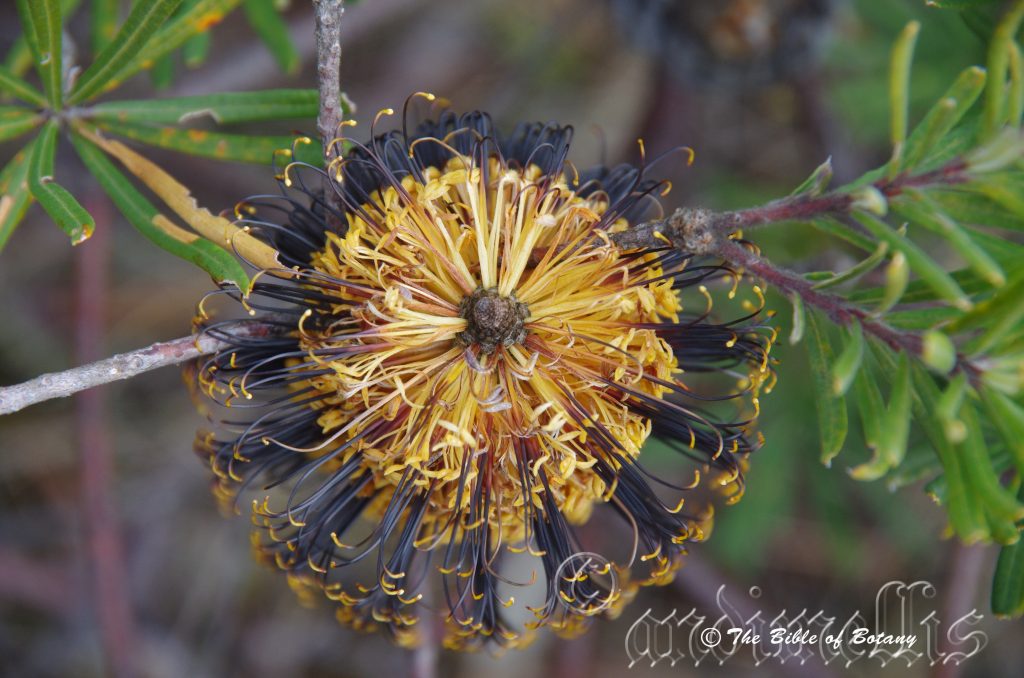
Cathedral Rocks National Park Ebor NSW

Cathedral Rocks National Park Ebor NSW

Cathedral Rocks National Park Ebor NSW
Banksia cunninghamii
Classification:
Class: Eudicots
Order: Proteales
Family: Proteaceae
Genus: Is named in honour of Sir Joseph Banks; 1743-1820, who was an English Naturalist and patron of botany who travelled with Captain Cook on the Endeavour to explore and study the plants of the east coast of Australia.
Specie: Is named in honour of Allan Cunningham; 1791-1839, who was an Australian explorer, botanist and collector of plants.
Sub Specie: Some sources record Banksia cunninghamii as Banksia spinulosa sub sp. cunninghamii.
Common Name:
Distribution:
Banksia cunninghamii is found along the coast and on the ranges south from the Macpherson Ranges in south east Queensland to Melbourne in southern Victoria.
https://avh.ala.org.au/occurrences/search?taxa=Banksia+cunninghamii+#tab_mapView
Habitat Aspect Climate:
Banksia cunninghamii prefers full sun or light dappled shade. It grows in dry sclerophyll forest and woodland, particularly on slopes and ridges. The altitude ranges from 200 meters ASL to 900 meters ASL
The temperatures range from lows of minus 4 degrees in August to 36 degrees in January.
The rainfall is from lows of 800mm to an average of 1200mm.
Soil Requirements:
Banksia cunninghamii prefers skeletal sandy loams, light fatty clays to medium clays. The soils are usually derived from decomposed granites, brown basalts or black basalts. The soil’s pH ranges from 5pH to 6.5pH. It does not tolerate water logged soils. None saline soils to moderately saline soils are tolerated.
Height & Spread:
Wild Plants:1.5m to 6m by 4m to 6m.
Characteristics:
Banksia cunninghamii is a striking small to large shrub with a grey-brown glabrous to tessellated bark. Branchlets are glabrous and sparsely covered in lenticels. Juvenile branchlets are pale grey-brown and densely covered in fawn hirsute hairs. A lignotuber is absent with Banksia cunninghamii and is one of the best methods of distinguishing it from Banksia spinulosa.
The alternate leaves on Banksia cunninghamii are linear to oblanceolate and measure 20mm to 70mm in length by 2mm to 5mm width. The petioles measure 1mm to 3mm long. The bases are attenuate while the apexes are truncate with a mucronate tip. The margins are decurve to revolute. The margins are entire or sparsely toothed in mature plants near the apex while juvenile plant margins are strongly toothed. The discolourous leaves are pale grey-green to sea-green and glabrous on the upper lamina while the lower lamina is silvery white and covered in white tomentose hairs. The mid vein is prominent on the lower lamina and is not clearly visible on the upper lamina. Old leaves are often seen on the trunk where it has grown over the petiole and leaf base.
The conflorescences of Banksia cunninghamii measures 60mm to 150mm in length by 50mm to 100mm in width. The perianths measure 20mm to 30mm in length. They are honey coloured with the style having a prominent hook below the stigma. The style is yellow throughout or dark red to purple-black in upper part and falls within a year of anthesis. The pistil measures 46mm to 48mm in length. Flowering occurs from early April to late August.
The cones measure 50mm to 130mm in length by 30mm to 35mm in width. There are 30 to 100 follicles on a cone which measure 10mm to 24mm in length by 6mm to 10mm in height. They open immediately after fire or when the branch or plant dies.
Wildlife:
Banksia cunninghamii attracts most medium to large honeyeaters when in flower.
Cultivation:
Banksia cunninghamii is a classically interesting and beautiful fast growing Banksia that is idea for rockeries with heavier soils. A single plant, planted at the center of a rockery, raised garden bed or amongst boulders to make a great feature. This is especially the case when mixed with other small annuals or prostrate ground covers with small finer or broader leaves to contrast the long deep greens here. Because of their size and leaf shape most small plants make a pleasing contrast.
It reaches its full potential of in just 3 or 4 years and will continue to grow slowly thereafter. In cultivation it will grow from 3 meters to 4 meters in height by 3 meters to 4 meters in diameter when grown in the open.
Six or more scattered or mixed with Banksia spinulosa sub sp. collina back from a bend with smaller shrubs between will become a very strong focal point and extend the long flowering period of both species. When they are in flower and mixed with shrubs which have red, pink or white flowers at the same time the sight can be very impressive but use plants which have small flowers rather than large flowers as it would be too over powering.
To the rear, use large leafy taller growing plants. Again use plants with white, red, pink or purple flowers for the best displays. This will lead the viewer’s eyes directly to the yellow flowers and rusty tomentose buds and branchlets for a longer period in the foreground.
Ensure that the whole plant or at least most of it is on display from most sections of the garden as the flowers are a real bonus.
When they are in flower these plants will catch your attention and the viewer will be transfixed on the display rather than watching the path.
Propagation:
Seeds:
Banksia cunninghamii seeds can be removed easily by placing the cones in a brown paper bag and leaving them in the car for 7 to 10 days. Another method is to place them in the oven after the evening meal has been prepared, with the oven off but while it is still hot. The cones will open up after a day or two. Shake to remove the seeds or pull them out with tweezers.
Sow fresh seed directly into a seed raising mix in early spring covering them with 5mm of the mix. Keep moist not wet. When the seedlings are 25mm to 40mm tall, prick them out and plant them into 50mm native tubes using a good organic mix.
Fertilize using Seaweed or fish emulsion on an alternate basis. Fertilize every two months until the plants are established then twice annually in early September or March to maintain health, vitality and better flowering and better quality fruit. Do not use synthetic fertilizers on Banksias as they usually contain high levels of phosphorous and calcium which are toxic to most Proteaceae.
Once the seedlings reach 150mm to 200mm in height plant them out into their permanent position.
Further Comments from Readers:
“Hi reader, it seems you use The Bible of Botany a lot. That’s great as we have great pleasure in bringing it to you! It’s a little awkward for us to ask, but our first aim is to purchase land approximately 1,600 hectares to link several parcels of N.P. into one at The Pinnacles NSW Australia, but we need your help. We’re not salespeople. We’re amateur botanists who have dedicated over 30 years to saving the environment in a practical way. We depend on donations to reach our goal. If you donate just $5, the price of your coffee this Sunday, We can help to keep the planet alive in a real way and continue to bring you regular updates and features on Australian plants all in one Botanical Bible. Any support is greatly appreciated. Thank you.”
In the spirit of reconciliation we acknowledge the Bundjalung, Gumbaynggirr and Yaegl and all aboriginal nations throughout Australia and their connections to land, sea and community. We pay our respect to their Elders past, present and future for the pleasures we have gained.

Woolli-Mini Waters N.S.W

Coffs Harbour NSW
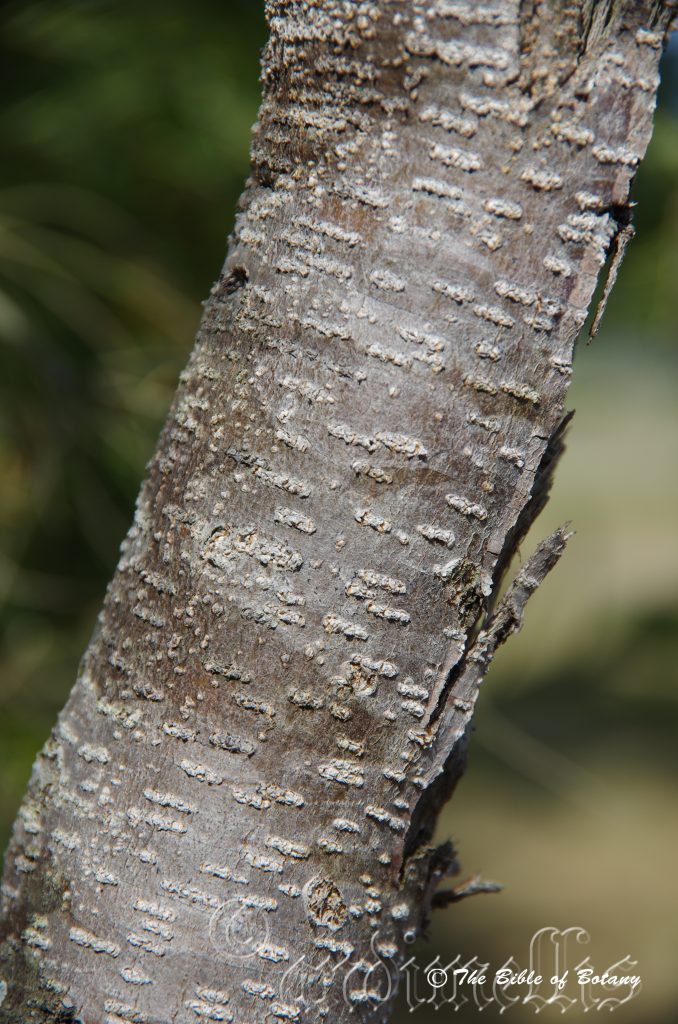
Norman Park Qld.
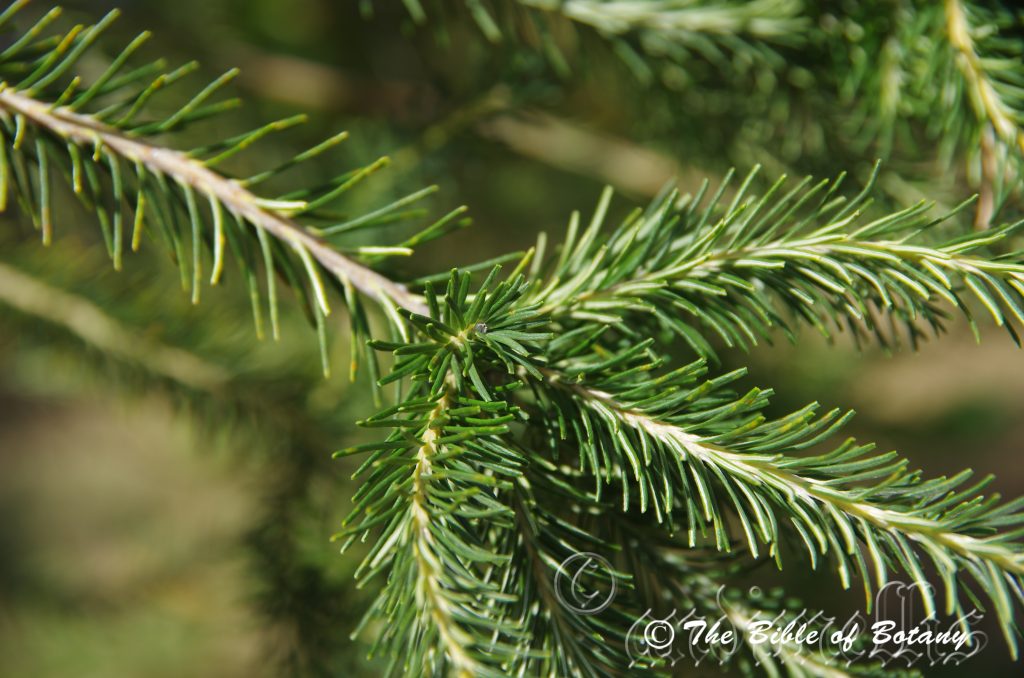
Norman Park Qld.
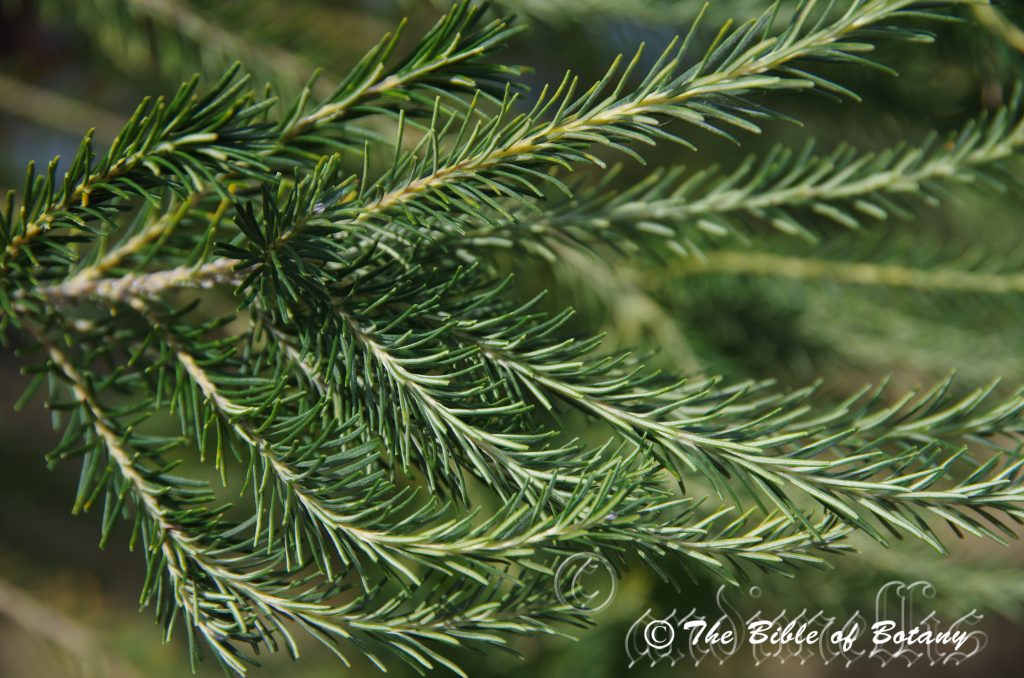
Norman Park Qld.

Woolli-Mini Waters N.S.W

Woolli-Mini Waters N.S.W
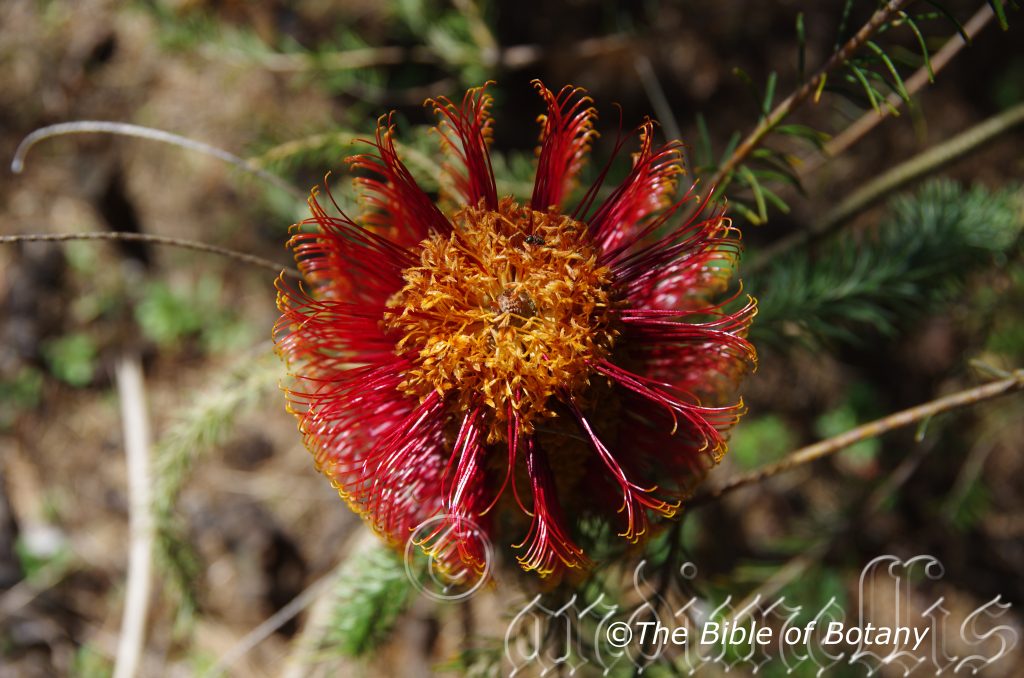
Woolli-Mini Waters N.S.W
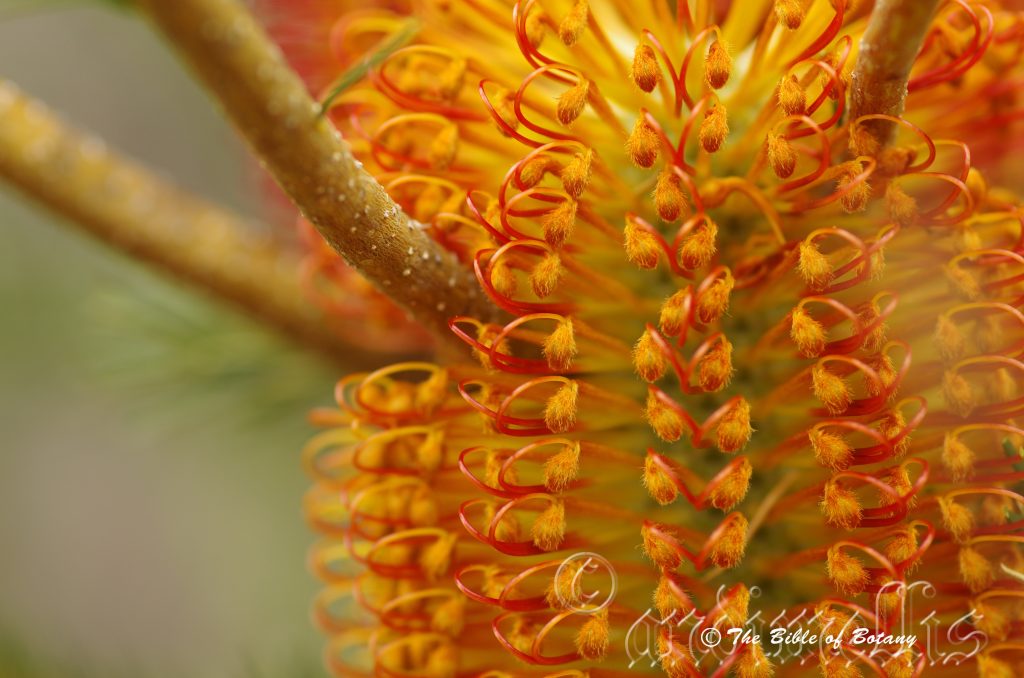
Woolli-Mini Waters N.S.W

Woolli-Mini Waters N.S.W
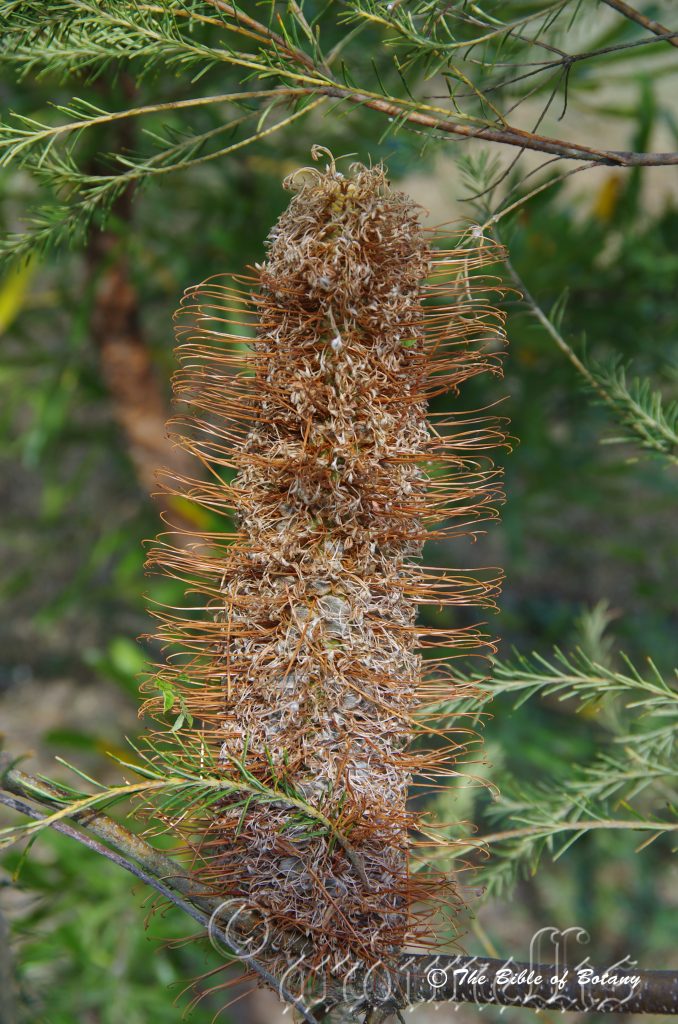
Norman Park Qld.

Lake Innes National Park NSW
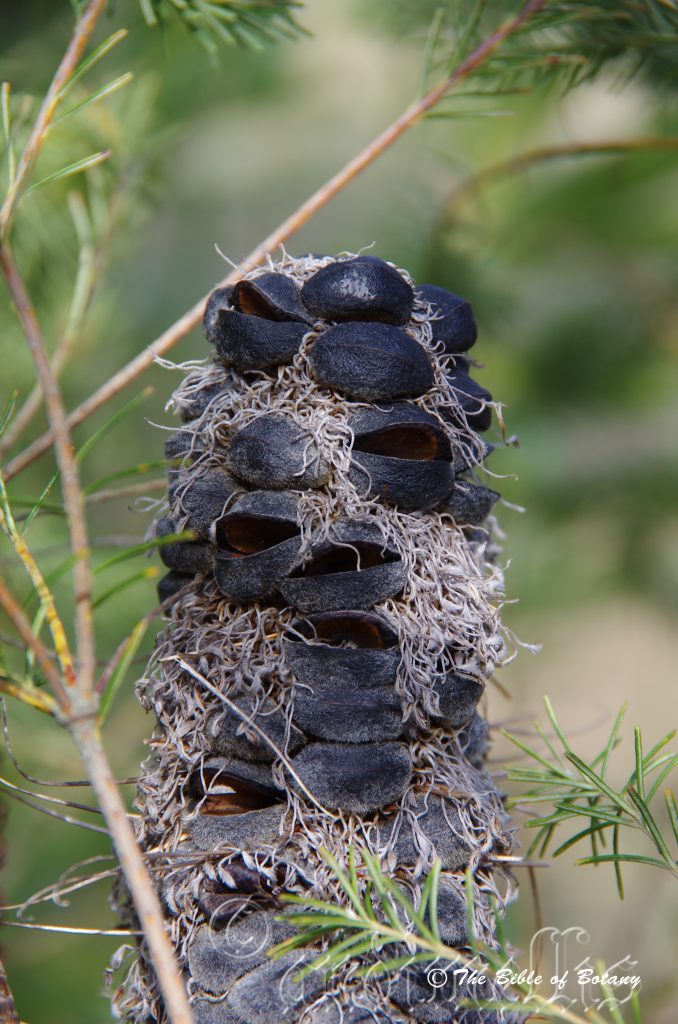
Lake Innes National Park NSW

Lake Innes National Park NSW
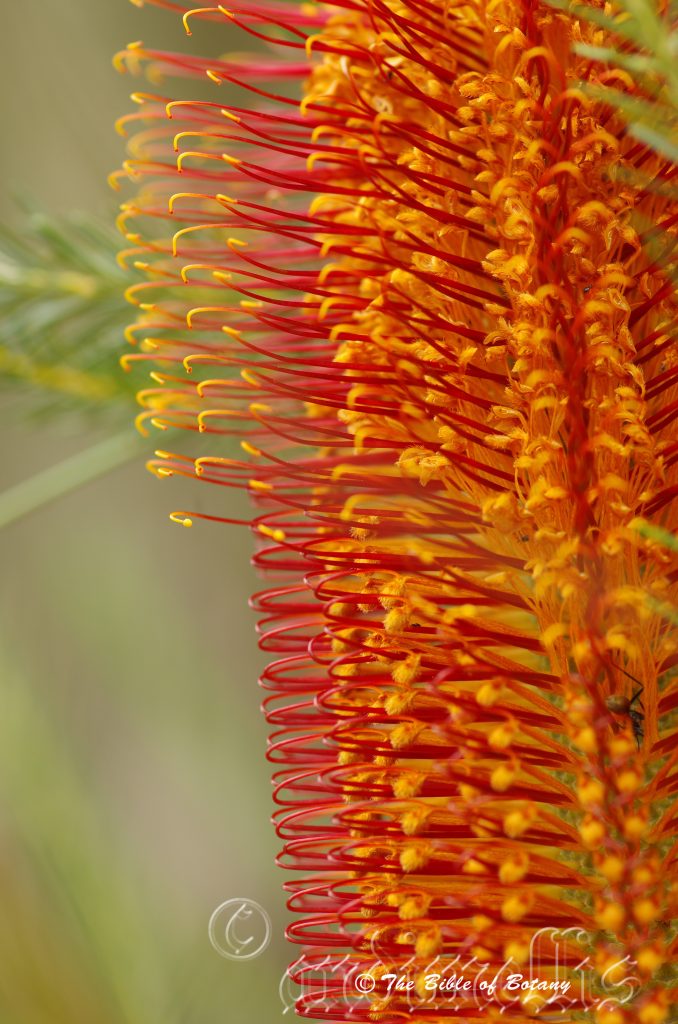
Woolli-Mini Waters NSW
Banksia ericifolia
Classification:
Class: Eudicots
Order: Proteales
Family: Proteaceae
Genus: Is named in honour of Sir Joseph Banks; 1743-1820, who was an English Naturalist and patron of botany who travelled with Captain Cook on the Endeavour to explore and study the plants of the east coast of Australia.
Species: From Erica, which is Latin for heath and Folia, which is Latin for foliage. It refers to plants, which have foliage similar to the exotic Erica genus.
Sub specie: Banksia ericifolia subsp. ericifolia. From Erica, which is Latin for heath and Folia, which is Latin for foliage. It refers to plants, which have foliage similar to the exotic Erica genus.
Sub specie: Banksia ericifolia subsp. macrantha. From Makros, which is Ancient Greek for large and ántha/ánthos, which are Ancient Greek for the male reproductive organ of the flower or the flower. It refers anthers, which are much longer than other species in the genus.
Sub species: Banksia ericifolia subsp. neoanglica. From Neo, which is Latin for new or juvenile and Anglica, which is Ancient Greek for England. It refers to the plants coming from the New England Plateau in northern New South Wales.
Common Name: Heath Banksia.
while in the Gumbaynggirr Aboriginal language it is known as Wurindaga.
Distribution:
There are two distinct disjunct localities where Banksia ericifolia grows. Banksia ericifolia subsp. ericifolia is found on heaths from Sydney south to Jervis Bay and on sandstone from Moss vale to Rylestone.
Banksia ericifolia sub sp. macrantha is found along the coast on heath lands south from the New South Wales Queensland border to Foster and inland to Grafton.
Banksia ericifolia subsp. neoanglica is found on the New England Plateau in northern New South Wales.
https://avh.ala.org.au/occurrences/search?taxa=Banksia+ericifolia+#tab_mapView
Habitat Aspect Climate:
I will deal with the two sub species separately as their evolution has dictated their many different preferences.
Banksia ericifolia subsp. ericifolia grows in full sun. It grows in a wide variety of aspects from coastal heath land, to sandstones on low ranges. The altitude ranges from 5 meters ASL to 550 meters ASL
Temperatures range from minus 3 degrees in august to 38 degrees in February.
Rainfall is also quite variable from a low of 650mm to areas with an average of 1400mm.
Banksia ericifolia subsp. macrantha grows in full sun. It grows coastal heaths, Clarence River flats and on the Glenreagh Cliffs north west of Coffs Harbour. The altitude ranges from 2 meters ASL to 415 meters ASL
The temperatures vary from winter lows of 3 degrees in winter and summer highs of 36 degrees where it can be very humid.
The rainfall is from lows of 850mm to average rainfall areas of 1600mm.
Soil Requirements:
I will deal with the three sub species separately as their evolution has dictated their different preferences.
Banksia ericifolia subsp. ericifolia prefers deep, sandy loams, light fatty clays to medium clays. The soils are usually derived from decomposed sandstones. The soil’s pH ranges from 5pH to 6.5pH. It does not tolerate water logged soils. None saline soils to moderately saline soils are tolerated.
Banksia ericifolia subsp. macrantha prefers deep, coarse sands, fine sands, and sandy loams to light fatty clays or light silts to medium silts. The soils are usually derived from accumulated peaty beach sands decomposed sandstones or alluvial deposits. The soil’s pH ranges from 4.5pH to 7pH. It does not tolerate water logged soils. None saline soils to very saline soils are tolerated as are salt laden winds.
Height & Spread:
Wild Plants: 2m to 6m by 2m to 4m
Banksia ericifolia sub sp. macrantha is a more vigorous and taller growing plant.
Characteristics:
Banksia ericifolia sub sp. ericifolia is a striking small to large shrub with a grey brown tessellated bark. Branchlets are tomentose to hirsute.
The leaves on Banksia ericifolia sub sp. ericifolia are alternate. The narrow linear leaves measure 10mm to 20mm in length by 1mm in width. The base is attenuate while the apex is retuse to truncate with two small teeth one either side of the mid vein. The margins are revolute and entire. The discolourous leaves are deep grass green on the upper lamina and glaucous on the lower lamina. The leaves are sessile or have a petiole to 1mm in length. The seedling leaves have 4 to 12 small teeth on the margins.
The conflorescence is 100mm to 200mm long by 50mm to 100mm. The perianth is 16mm to 20mm, honey brown coloured with the style having a prominent hook below the stigma. The style and ovary is 30mm to 35mm long. The style can vary between honey brown coloured, red or orange. Flowering occurs from early April to late August.
The cones have between 20 and 100 follicles that measure from 15mm to 20mm across. The upper lip of the follicles is convex with two prominent ridges on each side. The lower lip is flat or slightly curved.
Banksia ericifolia sub sp. macrantha is a striking small to large shrub with a grey brown tessellated bark. Branchlets are tomentose to hirsute. Banksia ericifolia sub sp. macrantha is a more vigorous and taller growing plant.
The leaves on Banksia ericifolia sub sp. macrantha are alternate with the petiole to 1mm long. The narrow linear leaves are 10mm to 20mm long by 1mm wide while the base is attenuate while the apex is retuse to truncate with two small teeth either side. The discolourous leaves are deep grass green on the upper lamina and glaucous on the lower lamina. The leaves are sessile or have a petiole to 1mm in length. The margins are revolute and entire. The seedling leaves have 2 or 4 small teeth on the margins
The conflorescence of Banksia ericifolia is 100mm to 200mm long by 50mm to 100mm. The perianth is 25mm to 28mm, honey brown coloured with the style having a prominent hook below the stigma. The style and ovary is 46mm to 48mm long. The style can vary between honey brown coloured, red or orange. Flowering occurs from early April to late August.
Banksia ericifolia’s cones have between 20 and 100 follicles that measure from 15mm to 20mm across. The upper lip of the follicles is convex with two prominent ridges on each side. The lower lip is flat or slightly curved.
Wildlife:
Banksia ericifolia are a favourite haunts for all medium size to large nectar eating birds because of the copious amounts of nectar they produce.
Cultivation:
Banksia ericifolia are drought resistant, have a tolerance to both high and low humilities and are tolerant to wide temperature variations the shrubs should be a must in most small gardens where they grow from 3 meters to 4 meters by 3 meters to 4 meters. There are many hybrids and cultivars which grow much smaller than this and have larger or smaller flowers. The smaller flower varieties are generally more prolific or flower over a much longer period. Like all Protaceae avoid fertilizers that contain lime and phosphorous.
Coupled with the number of birds that will seek refuge and nectar as a guaranteed larder the plants are becoming more popular. Added to this, these two banksias flower over a long period of time and have some flowers appearing all year.
Banksia ericifolia is ideal for bush settings, rockeries and bird features especially when grouped with other Banksias like Banksia integrifolia or Banksia serrata which they are very compatible with. Tip pruning in the early stages of growth will help make the shrubs bushier.
It is best used adjacent to small areas of bush set back from paths or the house so their deep yellow flowers can be viewed to advantage. They are great in medium to large rockeries as the feature plant. Here it can be planted in small groups of 2 or 3 or as a standalone plant to create the basis for a wallum or heath land setting. If it is surrounded by shorter plants with broad foliage and red or white flowers they will dominate at the center giving a crowded look similar to a heath land or wallum. This is especially the case when they are in flower.
Two or more planted back from a bend will become a very strong focal point when in flower and will gain a lot of attention whether you are coming or going because of the very large flowers and birds that will congregate there even in the driest of times. It can be regularly tip pruned if a smaller shrub is required. It responds well to tip pruning recovering quickly and often increasing the number of flowers in the following season. Place it in the mid ground with other large leaf ground covers and very small shrubs in the foreground. To the rear, use large leaf taller narrow growing plants. Plants with white, deep red or deep purple flowers can be used in both the mid ground and background. This will lead the viewer’s eyes directly to the yellow flowers for a longer period.
Ensure that the whole plant or at least most of it is on display from most sections of the garden and that they are in full sun for most of the day as shade will mean fewer flowers and a more sparsely open plant.
Propagation:
Seeds:
Banksia ericifolia seeds can be removed easily by placing the cones in a brown paper bag and leaving them in the car for 7 to 10 days. After the evening meal has been prepared, with the oven off and place the seeds inside while the oven is still hot. The cones will open up after a day or two. Shake to remove the seeds or pull them out with tweezers.
Sow fresh seed directly into a seed raising mix in early spring. Keep moist not wet. When the seedlings are 25mm to 40mm tall, prick them out and plant them into 50mm native tubes using a good organic mix.
Fertilize using Seaweed or fish emulsion on an alternate basis. Fertilize every two months until the plants are established then twice annually in early September or March to maintain health, vitality and better flowering and better quality fruit. Do not use synthetic fertilizers on Banksias as they usually contain high levels of phosphorous and calcium which are toxic to most Proteacea.
Once the seedlings reach 150m to 200mm in height plant them out into their permanent position.
Further Comments from Readers:
“Hi reader, it seems you use The Bible of Botany a lot. That’s great as we have great pleasure in bringing it to you! It’s a little awkward for us to ask, but our first aim is to purchase land approximately 1,600 hectares to link several parcels of N.P. into one at The Pinnacles NSW Australia, but we need your help. We’re not salespeople. We’re amateur botanists who have dedicated over 30 years to saving the environment in a practical way. We depend on donations to reach our goal. If you donate just $5, the price of your coffee this Sunday, We can help to keep the planet alive in a real way and continue to bring you regular updates and features on Australian plants all in one Botanical Bible. Any support is greatly appreciated. Thank you.”
In the spirit of reconciliation we acknowledge the Bundjalung, Gumbaynggirr and Yaegl and all aboriginal nations throughout Australia and their connections to land, sea and community. We pay our respect to their Elders past, present and future for the pleasures we have gained.
Banksia formosa
Classification:
Class: Eudicots
Order: Proteales
Family: Proteaceae
Genus: Is named in honour of Sir Joseph Banks; 1743-1820, who was an English Naturalist and patron of botany who travelled with Captain Cook on the Endeavour to explore and study the plants of the east coast of Australia.
Specie: From Formosa, which is Latin for beautiful or vivacious. It refers to the brilliance of the flowers.
Sub specie:
Common Name: Beautiful Dryandra
Distribution:
Banksia formosa is found from Meerup in the west, east to Bayonet Head and north to Manjimup and on the Frankland River. There is an outlying population growing along the Margaret River. Forecasts predict that Banksia Formosa will become vulnerable with Global warming and that its distribution may decline by up to 80mm.
https://avh.ala.org.au/occurrences/search?taxa=Banksia+formosa+#tab_mapView
Habitat Aspect Climate:
Banksia formosa prefers full sun to dappled light. It grows below medium size trees, low trees near the coast behind the frontal dunes or on sand plains. It is also rocky outcrops. The altitude ranges from 5 meters ASL to 300 meters ASL
The temperatures range from 3 degrees in July to 38 degrees in January.
The rainfall ranges from lows of 550mm to an average of 1400mm annually.
Soil Requirements:
Banksia formosa prefers deep, coarse sands, light sands, sandy loams to light fatty clays. The soils are usually derived from decomposed sandstones, granites or accumulated peaty beach sands. The soil’s pH ranges from 4.5pH to 6.5pH. It does not tolerate water logged soils. None saline soils to moderately saline soils are tolerated as are salt laden winds.
Height & Spread:
Wild Plants: 1m to 3m by 1m to 3m.
Characteristics:
Banksia formosa’s stems are red-brown and glabrous. The branchlets and juvenile branchlets are pale grey to pale grey-green to glaucous green and are covered in short white to pale grey pilose hairs.
Banksia formosa’s oblong leaves, measure 50mm to 180mm in length by 8mm to 12mm in width. The base is attenuate while the apexes have 1 to 3 acute tips. The margins are regularly and deeply triangular lobed extending almost to the mid rib. The discolourous laminas are deep lime-green to grass-green on the upper lamina while the lower laminas are silvery-white. The petioles measure 9mm to 13mm in length.
The inflorescence of Banksia formosa are hemispherical, erect and born from the terminals or special lateral branchlets. The styles are golden honey yellow through to a golden orange with a cream pollen presenter. They open from the center. The style bends towards the center, persistent and fades after fertilization. The perianth clusters measure 80mm to 100mm in diameter and length. Flowering occurs from May to September however some flowers will appear through to December.
Banksia Formosa fruits are globule follicles. The cones measure from 30mm to 40mm in diameter and have between 8 and 14 follicles. The follicles are held in a vertical position, have acute apexes and measure 6mm to 8mm in length by 3.5mm to 5.5mm in width.
Wildlife:
Banksia formosa flowers attract many small to medium honey eaters are attracted to the flowers.
Cultivation:
Banksia formosa is one of the easiest Banksias to grow on the east coast of Australia at least in the temperate zones as far east as Melbourne, which comes from the west. It does well in Victoria and South Australia. Cultivated plants usually have a dome shape with branches extending to the ground. It grows to 2.5 meters in height and 2.5 meters across in cultivation where it forms compact bushy shrubs with a little light annual pruning after flowering. Large rockeries or gentle sloping banks with sandy soils and sandy loams are the best mediums. It requires dry summers to keep the beautiful leaves green and free of leaf fungal attack.
Because of its fast growth its can be used as a wind break or screens in coastal areas.
Banksia formosa is ideal for bush settings, rockeries and bird features especially when grouped with other Banksias like Banksia integrifolia or Banksia serrata and Ceropetalum gummiferum which they are very compatible with it. Tip pruning in the early stages of growth will help maintain the bushy appearance. They can be regularly tip pruned if a smaller shrub is required. It responds well to tip pruning recovering quickly and often increasing the number of flowers in the following season.
It is best used adjacent to small areas of bush set back from paths or the house so their deep honey yellow flowers can be viewed to advantage. It is great in medium to large rockeries as the feature plant. Here they can be planted in small groups of 2 or 3 or as a standalone plant to create the basis for a wallum or heath land setting. If it is surrounded by shorter plants with broad or fine foliage and red or white flowers they will dominate at the center giving a crowded look similar to a heath land or wallum. This is especially the case when they are in flower.
Two or more planted back from a bend will become a very strong focal point when in flower and will gain a lot of attention whether you are coming or going because of the very beautiful flowers and birds that will congregate there even in the driest of times. Place them in the mid ground with other large or fine pale green leaf ground covers and very small shrubs in the foreground. To the rear, use large leaf taller narrow growing plants to gain the best effect. Plants with white, deep red or deep purple flowers can be used in both the mid ground and background. White flowers will enhance the Banksias flowers and contrast more strongly especially when grown in a heath or wallum scenario where as the coloured flowers will promote a bush scene more. This will lead the viewer’s eyes directly to the yellow flowers for a longer period in the case of white or backward and forwards with colours.
Ensure that the whole plant or at least most of it is on display from most sections of the garden and that they are in full sun for most of the day as shade will mean fewer flowers and a more sparsely open plant.
Propagation:
Seeds:
Banksia formosa seeds can be easily removed by placing the cones in a brown paper bag and leaving them in the car for 7 to 10 days. Alternatively after the evening meal has been prepared, turn the oven off and place the seeds inside while the oven is still hot. The cones will open up after a day or two. Shake to remove the seeds or pull them out with tweezers.
Sow fresh seed directly into a seed raising mix in early spring. Keep moist not wet. When the seedlings are 25mm to 40mm tall, prick them out and plant them into 50mm native tubes using a good organic mix.
Fertilize using Seaweed or fish emulsion on an alternate basis. Fertilize every two months until the plants are established then twice annually in early September or March to maintain health, vitality and better flowering and better quality fruit. Do not use synthetic fertilizers on Banksias as they usually contain high levels of phosphorous and calcium which are toxic to most Proteaceae.
Once the seedlings reach 150mm to 200mm in height plant them out into their permanent position. Mass plantings can be achieved by planting at 2.5 meter to 3 meter centers
Further Comments from Readers:
“Hi reader, it seems you use The Bible of Botany a lot. That’s great as we have great pleasure in bringing it to you! It’s a little awkward for us to ask, but our first aim is to purchase land approximately 1,600 hectares to link several parcels of N.P. into one at The Pinnacles NSW Australia, but we need your help. We’re not salespeople. We’re amateur botanists who have dedicated over 30 years to saving the environment in a practical way. We depend on donations to reach our goal. If you donate just $5, the price of your coffee this Sunday, We can help to keep the planet alive in a real way and continue to bring you regular updates and features on Australian plants all in one Botanical Bible. Any support is greatly appreciated. Thank you.”
In the spirit of reconciliation we acknowledge the Bundjalung, Gumbaynggirr and Yaegl and all aboriginal nations throughout Australia and their connections to land, sea and community. We pay our respect to their Elders past, present and future for the pleasures we have gained.
Banksia fraseri
Classification:
Class: Eudicots
Order: Proteales
Family: Proteaceae
Genus: Is named in honour of Sir Joseph Banks; 1743-1820, who was an English Naturalist and patron of botany who travelled with Captain Cook on the Endeavour to explore and study the plants of the east coast of Australia.
Specie: Is named in honour of Charles Fraser; 1787-1831, who was an Australian botanist and horticulturalist who was sent to Brisbane to collect vegetable products of the land.
Variety: Banksia fraseri var. ashbyi. Is named in honour of Alyson Marjorie Ashby; 1901-1987, who was an Australian floral artist and distributor of Native plants.
Variety: Banksia fraseri var. creba. From Cr?berrimum, which is Latin for crowded or pressed together. It refers to the leaves in the crown, which are rather dense or the flowers being very compact.
Variety: Banksia fraseri var. effusa. From Effuse, which is Latin for spreading out in a loose manner. It refers to the growth habit of the leaves spreading out without a pattern.
Variety: Banksia fraseri var. fraseri. Is named in honour of Charles Fraser; 1787-1831, who was an Australian botanist and horticulturalist who was sent to Brisbane to collect vegetable products of the land.
Variety: Banksia fraseri var. oxycedrus. From Oxalis, which are Greek for sharp and Cedrus which is Latin for a cedar tree. It refers to the fruits, which have sharp points.
Common Name: Fraser’s Dryandra
Distribution:
Banksia fraseri var. ashbyi is found south from Northhampton to Three Springs in the south western coast of southern Western Australia.
Banksia fraseri var. creba is found inland and south from Port Dennison to Badgingarra in the south western coast of southern Western Australia.
Banksia fraseri var. effusa is found inland between Green Head and Jurien Bay southwestern, Western Australia.
Banksia fraseri var. fraseri is found south from Northhampton to the Stirling Range north of Albany in south western coast of southern Western Australia.
Banksia fraseri var. oxycedrus is found south from Morawa Three Springs in the south western,Western Australia.
https://avh.ala.org.au/occurrences/search?taxa=Banksia+fraseri+#tab_mapView
Habitat Aspect Climate:
Banksia fraseri prefer full sun to dappled light. It grows below medium size trees, low trees near the coast behind the frontal dunes on sand gentle slopes and hills. The altitude ranges from 5 meters ASL to 400 meters ASL
The temperatures range from 3 degrees in July to 40 degrees in January.
The rainfall ranges from lows of 250mm to an average of 900mm annually.
Soil Requirements:
Banksia fraseri prefers deep, red or yellow sandy loams, light fatty clays to medium clays. The soils are usually derived from decomposed sandstones granites, shales or metamorphic rocks. The soil’s pH ranges from 4.5pH to 6.5pH. It does not tolerate water logged soils. None saline soils to moderately saline soils are tolerated.
Height & Spread:
Wild Plants:
Banksia fraseri var. ashbyi 0.5m to 0.9m by 1m to 1.5m.
Banksia fraseri var. cedra 0.5m to 0.8m by 1m to 1.5m.
Banksia fraseri var. effusa 0.3m to 0.5m by 1m to 1.5m.
Banksia fraseri var. fraseri 0.7m to 1m by 1m to 2m.
Banksia fraseri var. oxycedrus 3m to 6m by 2m to 3m
Characteristics:
Banksia fraseri’s trunk and stems are deep grey to black and scabrous with lenticels. Branchlets are green-brown and covered in rusty-brown tomentose hairs.
Banksia fraseri sub sp. ashbyi measure 50mm to 70mm in length by 15mm to 20mm in width. Individual lobes are linear and measure 6mm to 9mm in length by 4mm to 8mm in width. The leaves are discolourous being mid blue-green on the upper lamina while the lower lamina is paler. The leaf lobes are closer together.
Banksia fraseri var. effuse branchlets glabrous or or sparsely covered in pubescent hairs. The petiolate, alternate leaves are covered in pubescent hairs and measure 40mm to 70mm in length by 6mm to 10mm in width The petiole measures 4mm to 6mm in length. The lamina is flat, deeply divided pinnate leaves have 12 to 15 lobes either side of the mid rib while the margins are revolute.
Banksia fraseri sub sp. fraseri leaves are 70mm to 100mm in length by 15mm to 21mm in width. Individual lobes are linear and measure 6mm to 9mm in length by 3mm to 6mm in width. The apex is strongly pungent. The 14 to 20 opposite narrow linear lobes are widely spaced along the rachis. The opposite lobes measure 6mm to 9mm long by 1mm to 1.5mm wide. The space between lobes is 4mm to 5mm. The base is narrow attenuate while the apex is emarginate with the lobes spreading wider near the base and becoming more angled towards the apex. The lamina is discolourous being deep sea green on the upper lamina while the lower lamina is pale grass green. The lobe margins are entire and strongly recurved. The mid vein is strongly prominent below and similar to the upper lamina in colour. The yellow petioles measure 8mm to 10mm long.
Banksia fraseri sub sp. oxycedrus leaves are 60mm to 80mm in length by 16mm to 24mm in width. Individual lobes are linear and measure 6mm to 11mm in length by 4mm to 8mm in width. The apex is strongly pungent. The discolourous leaves are more twisted and are blue-green on the upper lamina while the lower lamina is paler. The leaf lobes are closer together.
The inflorescence of Banksia fraseri are hemispherical, erect and born terminally or on special short lateral branches. The clusters of irregular flowers measure 20mm to 25mm in length by 35mm to 40mm in diameter. The styles are a golden honey yellow to yellow-orange or dull crimson with a yellow to yellow-green or lime green pollen presenter. They open from the center. The style bends strongly towards the center is persistent and fades after fertilization. Flowering occurs from April to September however some flowers will appear earlier or later depending on the season.
Banksia fraseri fruits are globule follicles. The 4 to 8 loose follicles measure 10mm to 12mm in width. The upper lip of the follicles is convex with two prominent ridges on each side. The lower lip is flat or slightly curved.
Wildlife:
Small honey eaters are attracted to the flowers.
Cultivation:
Banksia fraseri is one of the easiest Banksias to grow on the east coast of Australia at least in the temperate zones as far east as Melbourne, which comes from the west. It does well in Victoria and South Australia. Cultivated plants of the sub sp. ashbyi and oxycedrus usually have a dome shape with branches extending to the ground. It grows to 1.2 meters in height by 1.2 meters across in cultivation where they form compact bushy shrubs with a little light annual pruning after flowering. Small rockeries or gentle sloping banks with sandy soils and sandy loams are the best mediums. They require dry summers to keep the beautiful leaves green and free of leaf fungal attack and protection against root fungi.
Banksia fraseri is ideal for bush settings, rockeries and bird features especially when grouped with other shrubs of similar size like some of the smaller Grevilleas specie and medium size Helychrysum specie and Helipterum specie which they are very compatible with. Tip pruning in the early stages of growth will help maintain the bushy appearance. It can be regularly tip pruned if a smaller shrub is required. They respond well to tip pruning recovering quickly and often increasing the number of flowers in the following season.
It is best used adjacent to small areas of bush adjacent to paths or the house so their beautiful yellow flowers can be viewed to advantage. They are great in small to large rockeries as a fill in plant. Here they can be planted in small groups of 2 or 3 or as a standalone plant to create the basis for a wallum or heath land setting or sparsely scattered to produce a harsh arid scene. If they are surrounded by shorter plants with broad or fine foliage and red or white flowers it will dominate at the center giving a crowded look similar to a heath land or wallum. This is especially the case when they are in flower in small rockeries.
Two or more planted back from a bend will become a very strong focal point when in flower and will gain a lot of attention whether you are coming or going because of the very beautiful flowers and birds that will congregate there even in the driest of times. Place them in the mid ground with other large or fine pale green leaf ground covers and very small shrubs in the foreground. To the rear, use large leaf taller narrow growing plants to gain the best effect. Plants with white, deep red or deep purple flowers can be used in both the mid ground and background. White flowers will enhance the Banksias flowers and contrast more strongly especially when grown in a heath or wallum scenario where as the coloured flowers will promote a bush scene more. This will lead the viewer’s eyes directly to the yellow flowers for a longer period in the case of white or backward and forwards with colours.
Ensure that the whole plant or at least most of it is on display from most sections of the garden and that they are in full sun for most of the day as shade will mean fewer flowers and a more sparsely open plant.
Propagation:
Seeds:
Banksia fraseri seeds can be removed easily by placing the cones seeds can be removed easily by placing the cones in a brown paper bag and leaving them in the car for 7 to 10 days. After the evening meal has been prepared, turn the oven off; place the cones inside while the oven is still hot. The cones will open up after a day or two. Shake to remove the seeds or pull them out with tweezers.
Sow fresh seed directly into a seed raising mix in early spring. Keep moist not wet. When the seedlings are 25mm to 40mm tall, prick them out and plant them into 50mm native tubes using a good organic mix.
Fertilize using Seaweed or fish emulsion on an alternate basis. Fertilize every two months until the plants are established then twice annually in early September or March to maintain health, vitality and better flowering and better quality fruit. Do not use synthetic fertilizers on Banksias specie as they usually contain high levels of phosphorous and calcium which are toxic to most Proteaceae.
Once the seedlings reach 150mm to 200mm in height plant them out into their permanent position. Mass plantings can be achieved by planting at 2.5 meter to 3 meter centers
Further Comments from Readers:
“Hi reader, it seems you use The Bible of Botany a lot. That’s great as we have great pleasure in bringing it to you! It’s a little awkward for us to ask, but our first aim is to purchase land approximately 1,600 hectares to link several parcels of N.P. into one at The Pinnacles NSW Australia, but we need your help. We’re not salespeople. We’re amateur botanists who have dedicated over 30 years to saving the environment in a practical way. We depend on donations to reach our goal. If you donate just $5, the price of your coffee this Sunday, We can help to keep the planet alive in a real way and continue to bring you regular updates and features on Australian plants all in one Botanical Bible. Any support is greatly appreciated. Thank you.”
In the spirit of reconciliation we acknowledge the Bundjalung, Gumbaynggirr and Yaegl and all aboriginal nations throughout Australia and their connections to land, sea and community. We pay our respect to their Elders past, present and future for the pleasures we have gained.
Banksia ilicifolia
Classification:
Class: Eudicots
Order: Proteales
Family: Proteaceae
Genus: Is named in honour of Sir Joseph Banks; 1743-1820, who was an English Naturalist and patron of botany who travelled with Captain Cook on the Endeavour to explore and study the plants of the east coast of Australia.
Specie: From Ilex, which is Latin for holly oak and from Folia, which is Latin for foliage. It refers to leaves, which resemble the European holly oak.
Common Name: Holly Leaf Banksia.
Distribution:
Banksia ilicifolia is found along the coast and coastal sand plains of the south west corner of Western Australia south from Dongarra to the Oldfield River near Albany.
https://avh.ala.org.au/occurrences/search?taxa=Banksia+ilicifolia+#tab_mapView
Habitat Aspect Climate:
Banksia ilicifolia grows in full sun. It grows in behind the coastal back dunes and coastal plains. The altitude ranges from 5 meters ASL to 120 meters ASL
The temperatures range from 3 degrees in August to 39 degrees in February.
The rainfall ranges from lows of 400mm to an average of 1600mm.
Soil Requirements:
Banksia ilicifolia prefers deep, fine sands, sandy loams to light fatty clays. The soils are usually derived from decomposed sandstones, granites or accumulated peaty beach sands. The soil’s pH ranges from 5pH to 6.5pH. It does not tolerate water logged soils. None saline soils to moderately saline soils are tolerated as are salt laden winds.
Height & Spread:
Wild Plants:8m to 12m by 8m to 12m
Characteristics:
Banksia ilicifolia is unusual in that the trunk has light to deep grey fibrous bark that can be deeply fissured or tessellated or both on the same tree. The stems are brown-grey and slightly scurfy to glabrous. The young branchlets are covered in white sericeous hairs. This Banksia does not grow a lignotuber.
Banksia ilicifolia has alternate, obovate to elliptical or oblanceolate leaves that measure 60mm to 110mm in length by 20mm to 35mm in width. Petioles are 2mm to 5mm in length. The bases are cuneata while the apexes are obtuse, acute and strongly apiculate. The discolourous laminas are deep olive-green to deep grey-green and dull on the upper laminas while the lower laminas are much paler and covered in long white tomentose hairs. New shoots are a pale olive green or brownish green. The leaf margins are entire or more often strongly toothed with pungent points.
The inflorescences are hemispherical conflorescence born from terminal epicormic buds. They measure 50mm to 60mm in length by 50mm to 60mm in width. The perianth measures 8mm to 10mm in length while the styles measures 30mm to 36mm in length. The styles are cream, pink or red with a cream or green pollen presenter and deepen in colour with age. They open from the center outwards. The style is straight, persistent and fades after fertilization. Flowering occurs from January to December however most flowers appear from late July to early November.
The cones measure 20mm to 25mm in length by 30mm to 45mm in width. There are 1 to 4 follicles on a cone. The elliptical to reniform follicles measure 18mm to 25mm in length by 12mm to 15mm in width.
Wildlife:
Banksia ilicifolia attracts all the different specie of honeyeaters, particularly smaller birds and sugar gliders during September and November.
Cultivation:
Banksia ilicifolia is a beautiful gnarled looking tree with interesting flowers. They are suitable for beach side gardens which are well drained sands. They will grow 10 meters to 12 meters in height by 10 meters to 12 meters in diameter often spreading towards the lee ward side if there are prevailing winds. They reach their full potential in just 10 or 12 years and will continue to grow slowly thereafter. It will flower from the fifth to seventh year from seed.
Plants can be placed along a long driveway with other smaller broad green leafy shrubs for a strikingly different avenue especially in semi-arid gardens. They will gain a lot of attention and highlight the other broader or finer green leaf shrubs. Try interplanting it with other banksias like Banksia baxteri or Banksia Formosa as a hedge. This will give the hedge a greater feeling of being natural and not being boxed in.
Garden beds would need to be open with plenty of space between plants to allow air flow as well as to give the branches a chance to spread and be appreciated for their unique beauty. Crowding this type of foliage with other plants will see them lose all the affectedness of the gnarled appearance of the trunk.
The trees would make very good accent trees in front of low set school buildings and farm sheds where they will break up hard rigid architectural lines and give warmth in the winter and coolness in the summer. In front of high rise buildings they give balance especially where they could be grown in curves meandering to the entry doors or for something different used from the front of the path and meander back to the far corners with shrubs or flowers planted between the trees and the building and the trees and the nature strip.
Propagation:
Seeds:
Banksia ilicifolia eeds can be easily removed by placing the cones seeds can be removed easily by placing the cones in a brown paper bag and leaving them in the car for 7 to 10 days. Another method is to pop the cones in the oven after the evening meal has been prepared. Turn the oven off and place the seeds inside while the oven is still hot. The cones will open up after a day or two. Shake to remove the seeds or pull them out with tweezers.
Sow fresh seed directly into a seed raising mix in early spring covering them with 5mm of the mix. Keep moist not wet. When the seedlings are 25mm to 40mm tall, prick them out and plant them into 50mm native tubes using a good organic mix.
Fertilize using Seaweed or fish emulsion on an alternate basis. Fertilize every two months until the plants are established then twice annually in early September or March to maintain health, vitality and better flowering and better quality fruit. Do not use synthetic fertilizers on Banksias specie as they usually contain high levels of phosphorous and calcium which are toxic to most Proteacea.
Once the seedlings reach 150mm to 200mm in height plant them out into their permanent position. Mass plantings can be achieved by spacing the plants at 12 meter centers.
Further Comments from Readers:
“Hi reader, it seems you use The Bible of Botany a lot. That’s great as we have great pleasure in bringing it to you! It’s a little awkward for us to ask, but our first aim is to purchase land approximately 1,600 hectares to link several parcels of N.P. into one at The Pinnacles NSW Australia, but we need your help. We’re not salespeople. We’re amateur botanists who have dedicated over 30 years to saving the environment in a practical way. We depend on donations to reach our goal. If you donate just $5, the price of your coffee this Sunday, We can help to keep the planet alive in a real way and continue to bring you regular updates and features on Australian plants all in one Botanical Bible. Any support is greatly appreciated. Thank you.”
In the spirit of reconciliation we acknowledge the Bundjalung, Gumbaynggirr and Yaegl and all aboriginal nations throughout Australia and their connections to land, sea and community. We pay our respect to their Elders past, present and future for the pleasures we have gained.
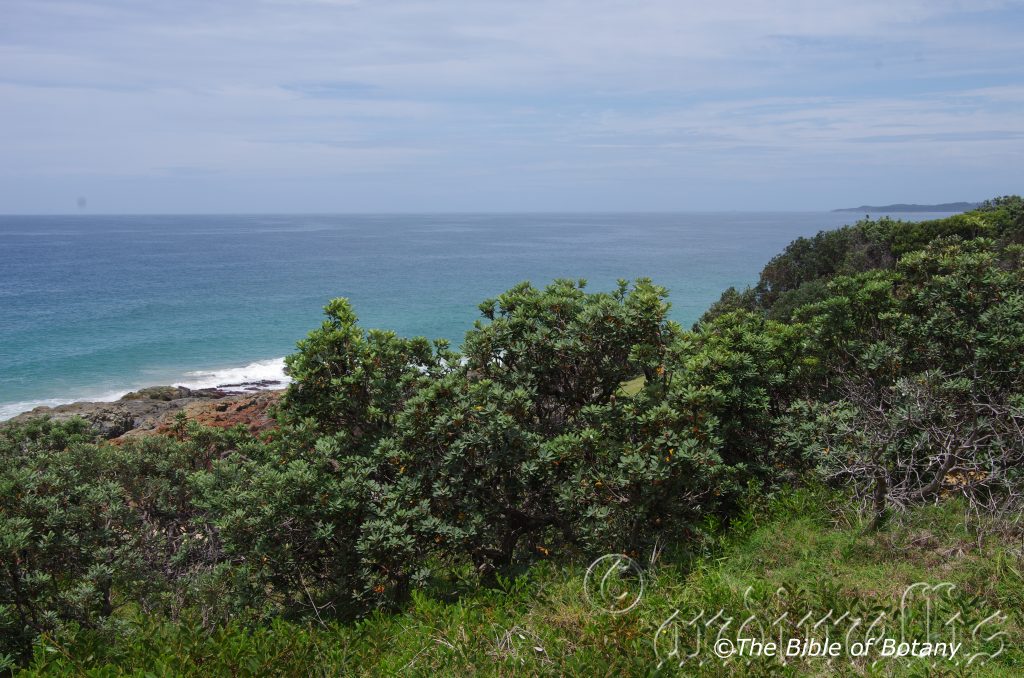
Yuraygir National Park NSW

Ebor NSW


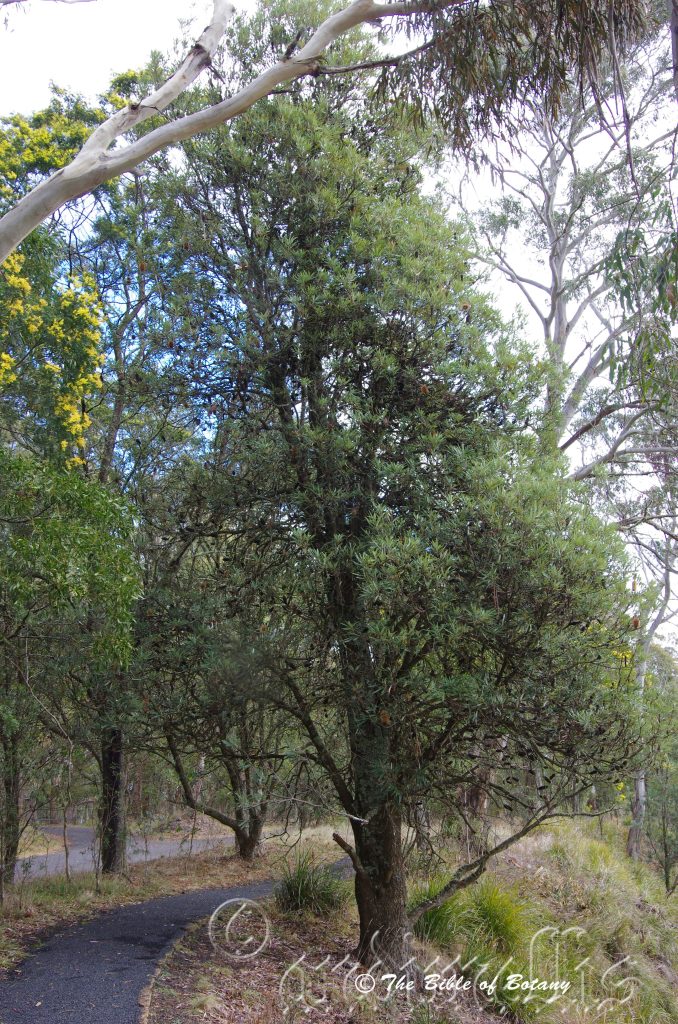
Ebor NSW
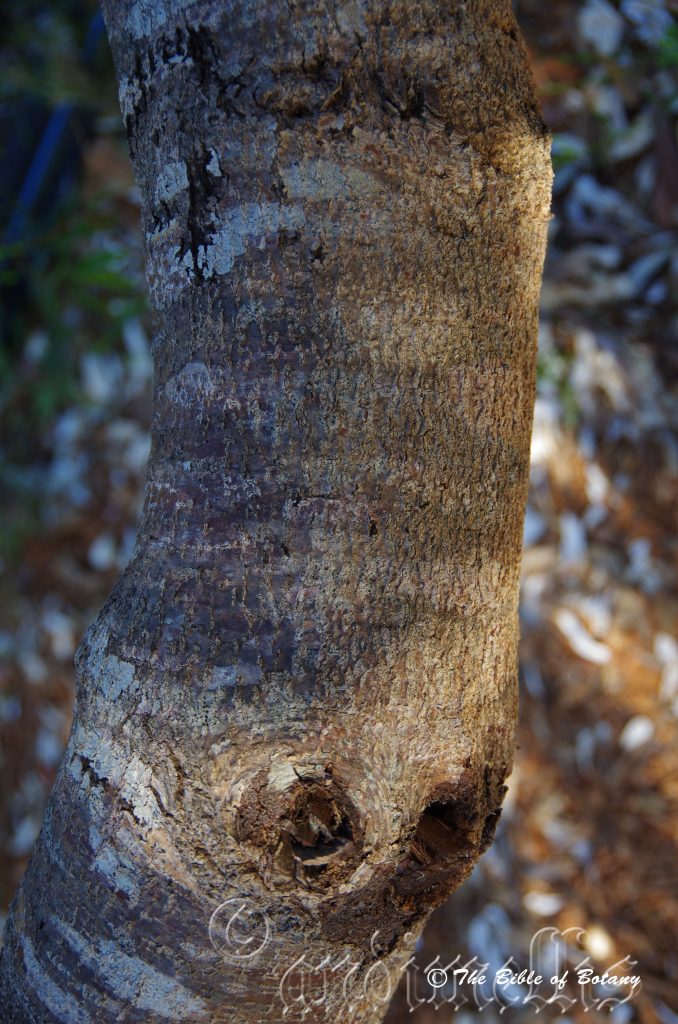
Capalaba Qld.
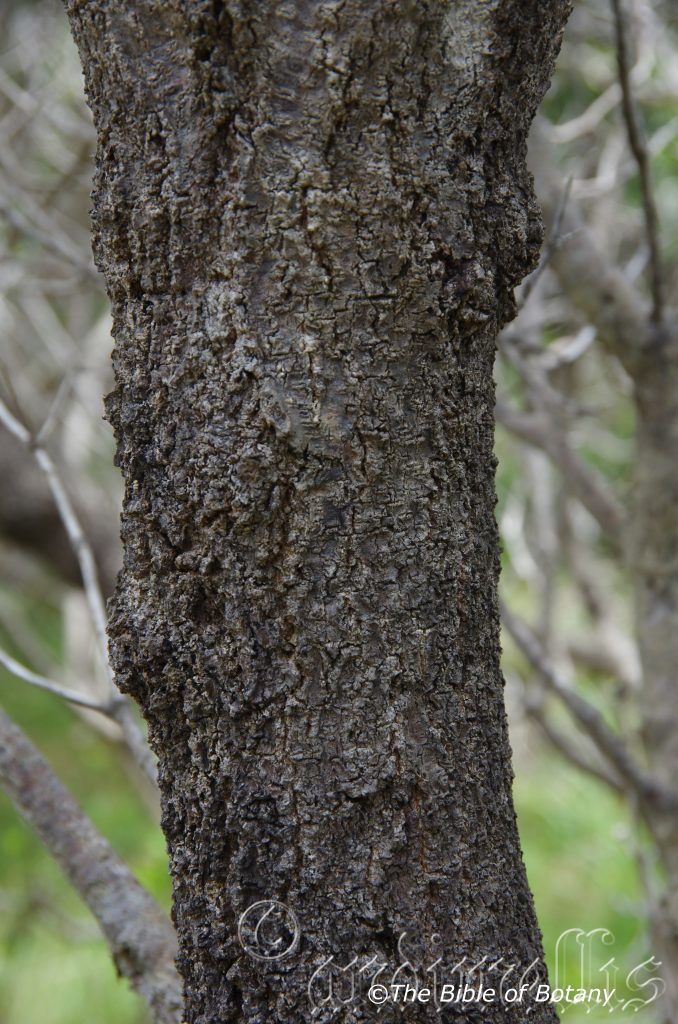
Banksia integrifolia subsp. integrifolia Yuraygir National Park NSW

Banksia integrifolia subsp. monticola Ebor NSW
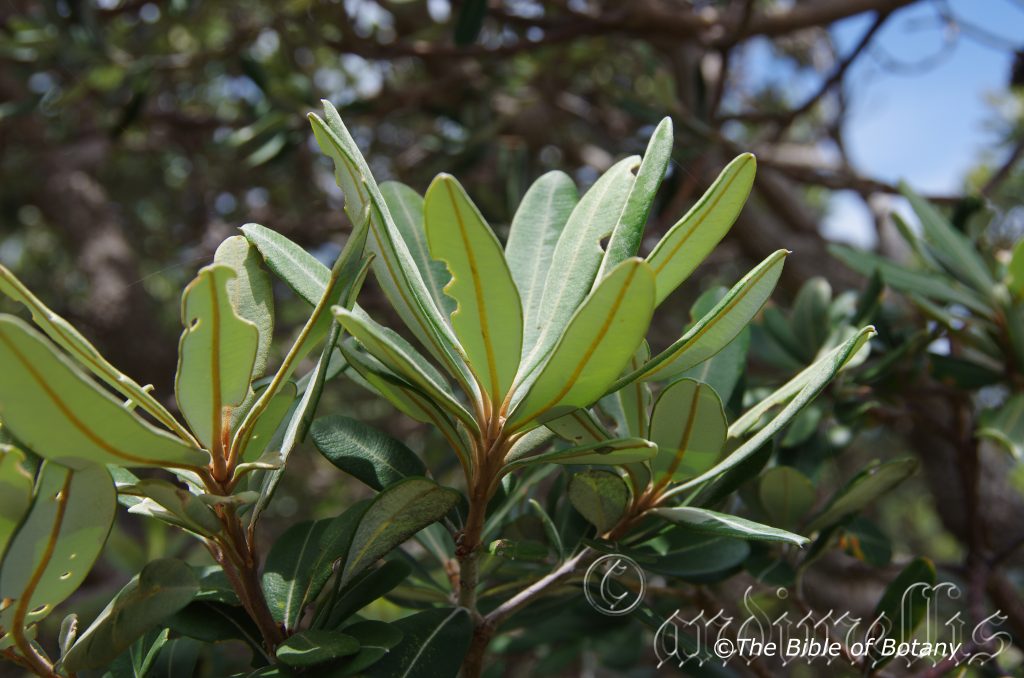
Banksia integrifolia subsp. integrifolia Yuraygir National Park NSW
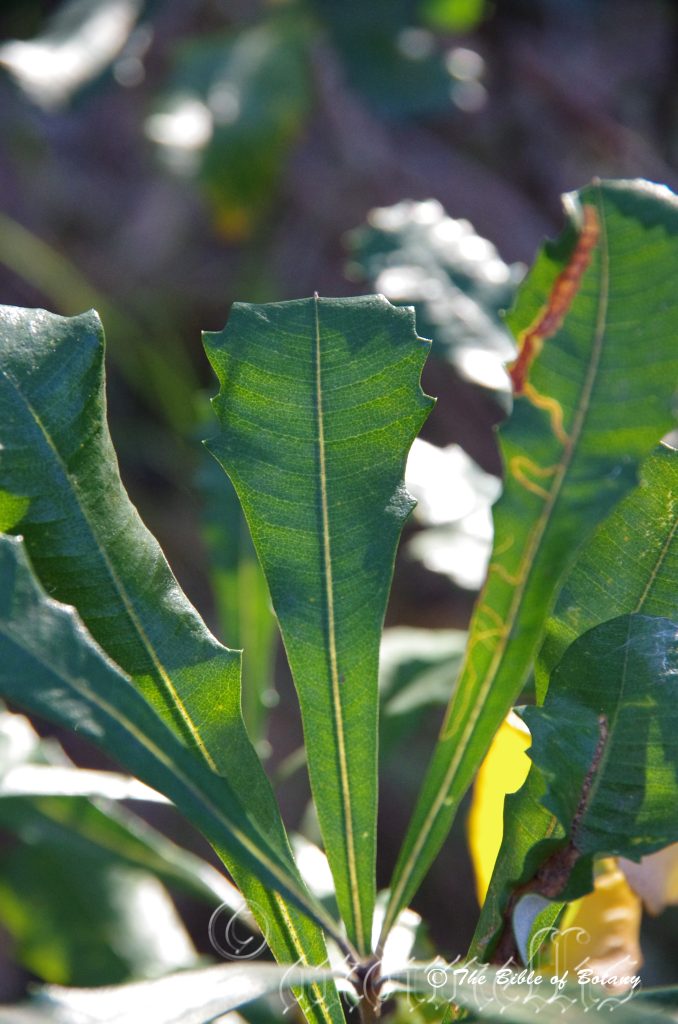
Banksia integrifolia subsp. integrifolia Seven Hills Qld.

Banksia integrifolia subsp. monticola Ebor NSW
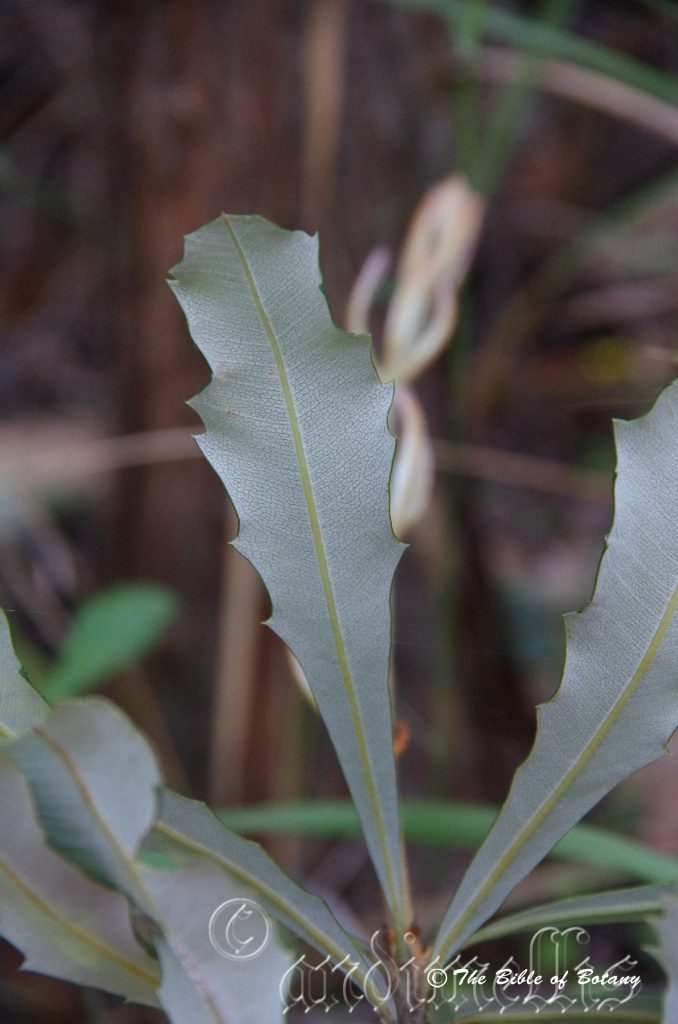
Banksia integrifolia subsp. monticola Ebor NSW
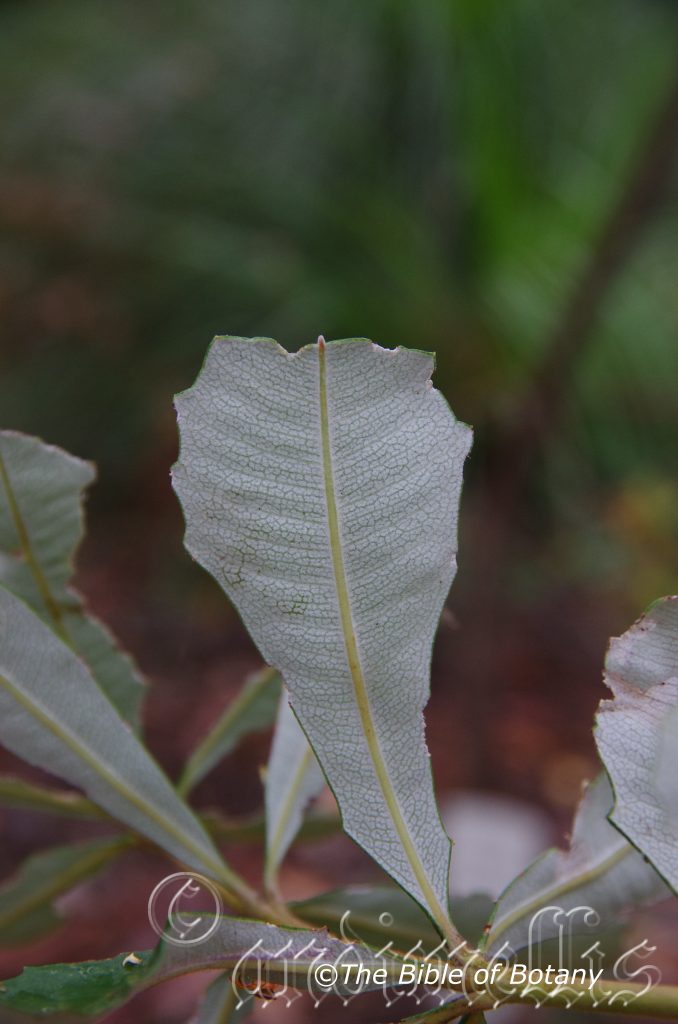
Banksia integrifolia subsp. integrifolia Seven Hills Qld.

Banksia integrifolia subsp. monticola Ebor NSW

Banksia integrifolia subsp. monticola Ebor NSW
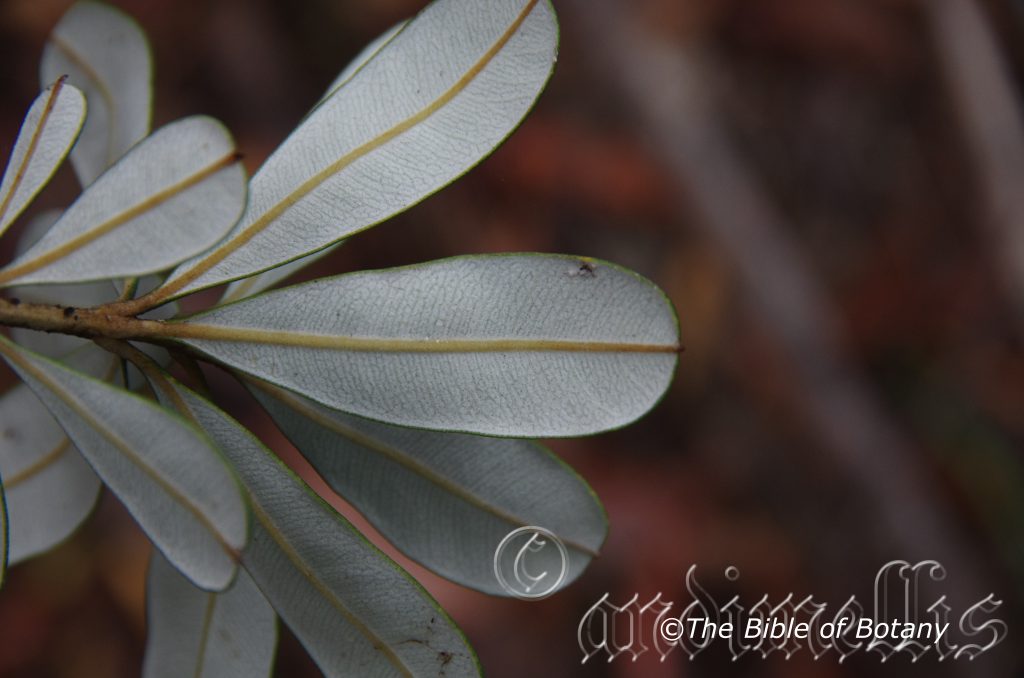
Banksia integrifolia subsp. monticola Ebor NSW
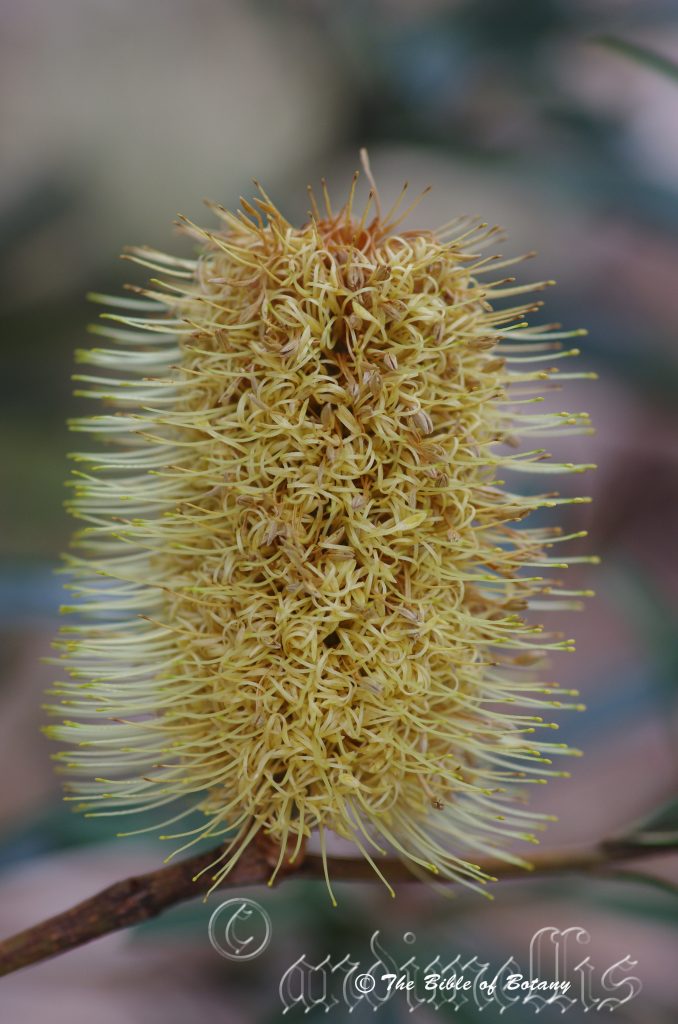
Banksia integrifolia subsp. monticola Ebor NSW
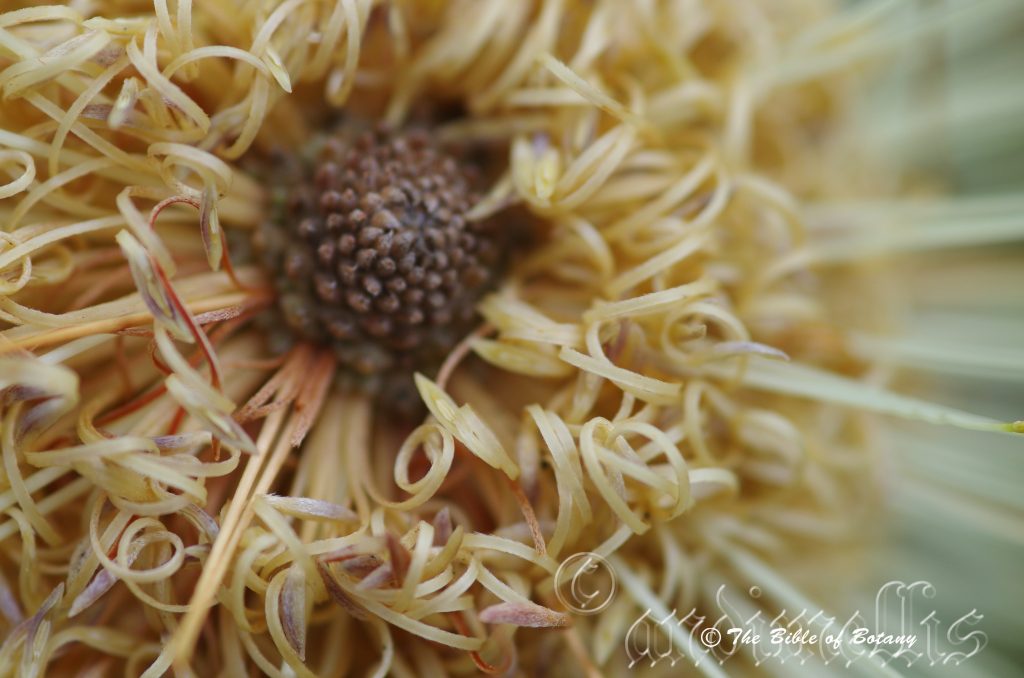
Banksia integrifolia subsp. monticola Ebor NSW
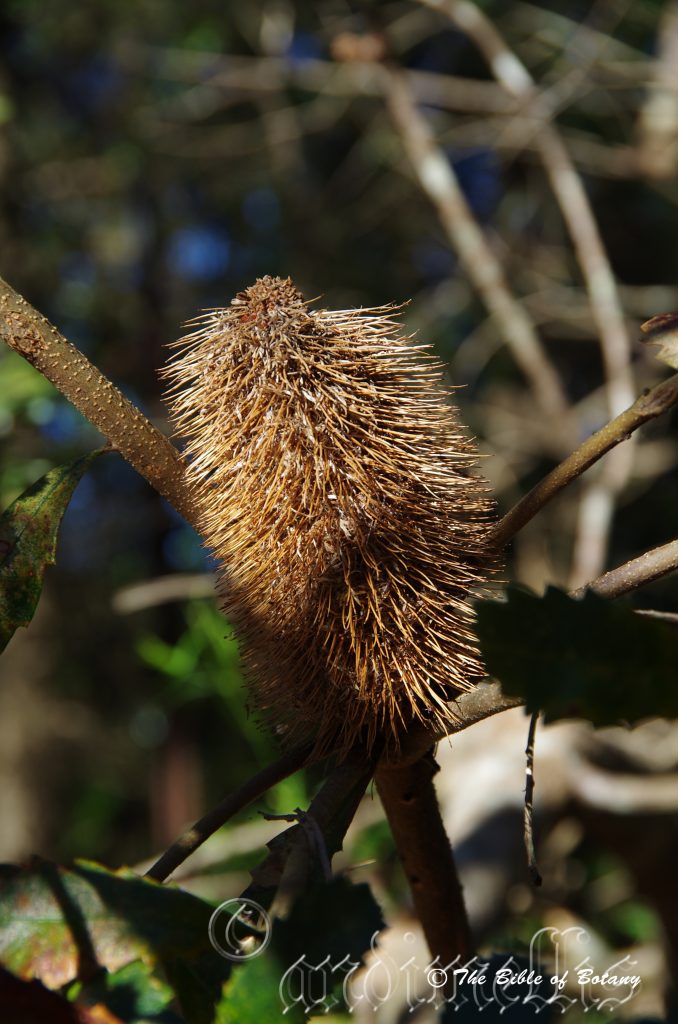
Banksia integrifolia subsp. integrifolia Capalaba Qld.

Banksia integrifolia subsp. integrifolia Capalaba Qld.
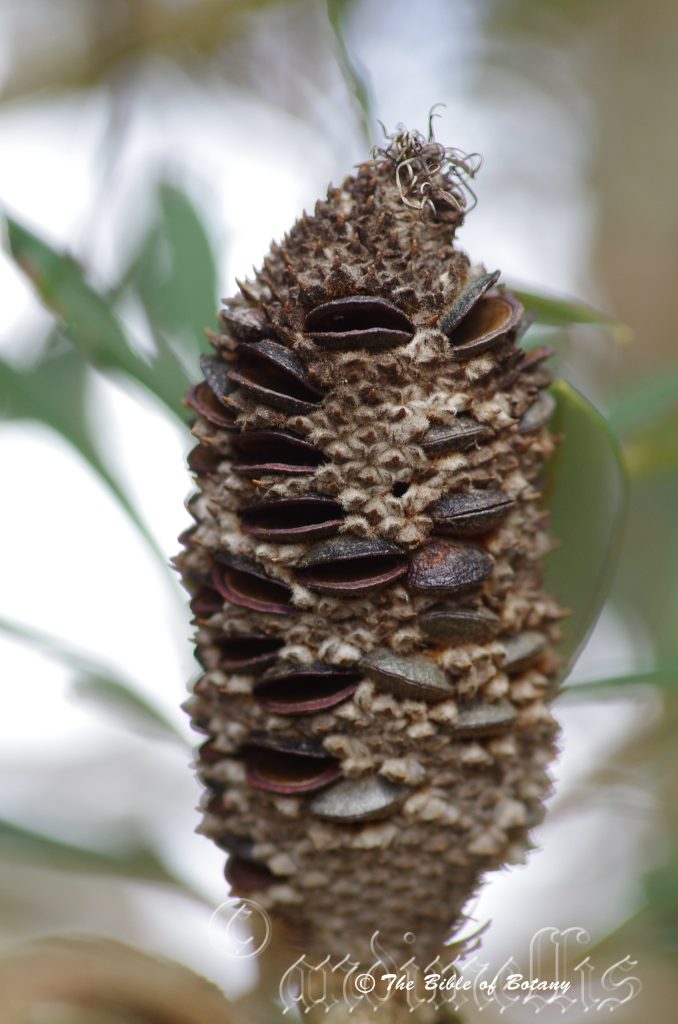
Banksia integrifolia subsp. monticola Ebor NSW
Banksia integrifolia
Classification:
Class: Eudicots
Order: Proteales
Family: Proteaceae
Genus:Is named in honour of Sir Joseph Banks; 1743-1820, who was an English Naturalist and patron of botany who travelled with Captain Cook on the Endeavour to explore and study the plants of the east coast of Australia.
Specie: From Integrere, which is Latin for untouched or whole and Folium, which is Latin for foliage. It refers to leaves, which are entire without teeth compared to other species in the genre that all have teeth on the leaf margins.
Sub specie: Banksia subsp. compare From Compar?re, which is Latin for to bring together and match or to match. It refers to plants, which are comparably the similar.
Sub specie: Banksia subsp. integrifolia From Integrere, which is Latin for untouched or whole and Folium, which is Latin for foliage. It refers to leaves, which are entire without teeth compared to other species in the genre that all have teeth on the leaf margins.
Sub specie: Banksia subsp. monticola From Montana which is Latinized from the Spanish word for a mountain and Kola, which is Ancient Greek or Cola which is Latin for to dwell or reside at. It refers to plants, which prefer environments that are high in the mountains.
Common Name: Coastal Banksia.
In the Aboriginal language it is known as Warrak or warraka or Wurindaga in Gumbaynggirr language.
Distribution:
It grows along the East coast of Australia south from Cairns in Central Queensland to Wilson’s Promontory in Victoria. It is found on and east of the Great Dividing Range to the coast.
Banksia integrifolia subsp. compare is found on and east of the
Great Dividing from Cairns south to the Barrington Tops Range from
the Gold Coast to the Blue Mountains.
Banksia integrifolia subsp. integrifolia is found on and east of the
Great Dividing on the coast line and off shore Islands from Fraser Island south to the Barrington Tops Range to the Islands of the Bass Straight.
Banksia integrifolia subsp. monticola. It is found on the Great Dividing Range from the Gold Coast to the Blue Mountains.
https://avh.ala.org.au/occurrences/search?taxa=Banksia+integrifolia+#tab_mapView
Habitat Aspect Climate:
I will deal with the three sub species separately as their evolution has dictated their different preferences in terrain and form.
Banksia integrifolia subsp. integrifolia prefers full sun. It grows in a wide variety of aspects from behind the frontal dunes, on wind swept headlands or adjacent to littoral rainforests. The altitude ranges from 2 meters ASL to 45 meters ASL
The temperatures vary from winter lows of 2 degrees and summer highs of 36 degrees.
The rainfall is also quite variable from a low of 650mm to high rainfall areas of 1500mm. It is not tolerant of water logged soils though seasonal inundations are common along creeks and rivers. It is salt tolerant growing along tidal estuaries quite close to the water.
Banksia integrifolia subsp. compare prefers full sun. It grows in open woodlands and savannah woodlands. The altitude ranges from 50 meters ASL to 500 meters ASL
The temperatures vary from winter lows of minus 2 degrees and summer highs of 38 degrees.
The rainfall is also quite variable from a low of 850mm to high rainfall areas of 1200mm. It is not tolerant of water logged soils. For a coastal plant it is surprisingly only slightly salt tolerant.
Banksia integrifolia subsp. monticola prefers partial shade to light dappled sunlight. It grows high in the mountains above the areas where rainforests find the soils dry out too quickly. The altitude ranges from 90 meters ASL to 1400 meters ASL
The temperatures range from lows of minus 4 degrees in August to 36 degrees in February.
The rainfall is from low of 480mm to an average of 1800mm. The plants are not tolerant of water logging soils. They are not tolerant saline soils.
Soil Requirements:
Banksia integrifolia subsp. compare prefers deep, coarse sands, fine sands, and sandy loams to light fatty clays. The soils are usually derived from accumulated peaty beach sands or decomposed sandstone or basalts. The soil’s pH ranges from 4.5pH to 6.5pH. It does not tolerate water logged soils. None saline soils to very saline soils are tolerated as are salt laden winds.
Banksia integrifolia subsp. integrifolia prefers sandy loams, light fatty clays to medium. The soils are usually derived from decomposed sandstones, granites, shales or metamorphic rocks. The soil’s pH ranges from 5pH to 6.5pH. It does not tolerate water logged soils. None saline soils to moderately saline soils are tolerated.
Banksia integrifolia subsp. Monticola prefers skeletal to shallow light fatty clays to medium clays. The soils are usually derived from decomposed granites, brown basalts, black basalts, shales or metamorphic rocks. The soil’s pH ranges from 4.5pH to 6.5pH. It does not tolerate water logged soils. None saline soils to moderately saline soils are tolerated.
Height & Spread:
Wild Plants: 5m to 15m by 5m to 12m.
Characteristics:
Banksia integrifolia is a small tree which often takes on a stunted gnarled appearance when growing on headlands or where prevailing winds will bend its natural upright growth. The tree has grey fissured bark which is often roughly tessellated. The tree will shoot from epicormic shoots if damaged. Branchlets are striated and densely covered in red-brown pulverulent hairs.
The whorled leaves are narrow ovate to narrow elliptical and measure 40mm to 200mm in length by 10mm to 36mm in width. The base is cuneate to attenuate while the apex is acute or obtuse. The discolourous leaves are deep sea green and glabrous on the upper lamina while the lower lamina is white and sparsely covered in short rusty red tomentose hairs. The mid vein is prominent on the lower lamina and is covered in reddish brown tomentose hairs. It is distinctly visible on the upper lamina. The leaf margin is entire with a slight undulation. The petiole measures 1mm to 5mm in length. Old leaves are often seen on the trunk where it has grown over the petiole and leaf base.
Banksia integrifolia subsp. compare leaves narrow ovate to narrow elliptical, semi glossy and measure 140mm to 220mm in length by 30mm to 40mm in width. Leaf margins are not undulating and may bear small teeth on the leaf margins.
Banksia integrifolia subsp. monticola leaves narrow ovate to narrow elliptical, semi glossy and measure 80mm to 180mm in length by 20mm to 30mm in width.
The conflorescence of Banksia integrifolia measures 50mm to 120mmin length by 40mm to 70mm in width. The perianth is 22mm to 25mm long pale yellow to golden yellow. The style is straight or slightly curved and pale yellow to golden yellow with a paler pollen presenter. The perianths open from the base to the apex. Flowers occur from January to June or August in favourable conditions.
The follicles number 0 to 120 per cone. Each follicle is 8mm to 15mm in width by 5mm to 8mm in height. They open between 8 and 10 months after flowering to release two black seeds. The seeds measure 6mm to 8mm in diameter with a 2mm wing surrounding the seed.
Banksia integrifolia subsp. monticola seed follicles are more deeply embedded in the old flower spike. The pale cream to deep cream flowers form on a cone from January to August with some flowers appearing throughout the year. Most flowers appear from May to July or sometimes again in August in favourable seasons. The seeds are released during the following 12 months or shortly after a fire have passed.
Wildlife:
Banksia integrifolia’s flowers are attractive to native bees along with many native nectar eating birds both small and large. Fruit bats, possums, and sugar gliders are also attracted to the flowers.
Cultivation:
Because of its hardiness on sandy soils and sandy loams, drought tolerance, and tolerance to high temperatures and bird attractiveness, Banksia integrifolia should be planted more frequently in small gardens for its attractive foliage and gnarled trunk.
Banksia integrifolia is a beautiful gnarled looking tree which flowers over a long period of time. It is suitable for beach side gardens which are well drained sands. It will grow from 10 meters to 12 meters in height by 10 meters to 12 meters in diameter often spreading towards the lee ward side if there are prevailing winds. It will reach its full potential of in just 10 or 12 years and will continue to grow slowly thereafter. It will flower from the fifth or sixth year.
Banksia integrifolia are also a great host tree for all epiphytic ferns, orchids and stags especially Platycerium bifurcatum.
It has a relative small unobtrusive root system making them ideal to plant close to pathways. Unfortunately it has been known to be attacked by borers. Banksias also have a tendency to drop leaves making them messy, so plant them in garden beds where the leaf drop will not be a problem.
This Banksia looks great in a medium or large rockery as the center of attention. Try planting 2 close together on one side and one on the other side but a little further off center for balance. Plant the remainder of the rockery out with smaller sand loving shrubs and annuals ranging in height from 0.5 meters to 1 meter. Make it undulating and use various foliage forms that complement each other. Do not use annuals or strap leaf plants as they will be smothered out and look week and disruptive against the undulation that has been created. I have seen Banksia integrifolia used as a bonsai plant in China to great effect.
Another strong effect can be achieved by planting one to three trees as above and planting the rest of the area out with Macrozamia specie, Lepidozamia specie and Cyathea australis. The remainder of the surface could be covered in brown basalt rocks and boulders. We used this theme at Nana Glen and once the Banksia integrifolia matured the result was quite striking yet relaxing.
Propagation:
Seeds:
Banksia integrifolia seeds can be removed easily by placing the cones seeds can be removed easily by placing the cones in a brown paper bag and leaving them in the car for 7 to 10 days. After the evening meal has been prepared, with the oven turned off, place the seeds inside while the oven is still hot. The cones will open up after a day or two. Shake to remove the seeds or pull them out with tweezers.
Sow fresh seed directly into a seed raising mix. Keep moist not wet. When the seedlings are 30mm to 50mm tall, prick them out and plant them into 50mm native tubes using a good organic mix.
Fertilize using Seaweed or fish emulsion on an alternate basis. Fertilize every two months until the plants are established then twice annually in early September or March to maintain health, vitality and better flowering and better quality fruit. Do not use synthetic fertilizers on Banksias as they usually contain high levels of phosphorous and calcium which are toxic to most Proteacea.
Once the seedlings reach 150mm to 200mm in height plant them out into their permanent position.
Further Comments from Readers:
“Hi reader, it seems you use The Bible of Botany a lot. That’s great as we have great pleasure in bringing it to you! It’s a little awkward for us to ask, but our first aim is to purchase land approximately 1,600 hectares to link several parcels of N.P. into one at The Pinnacles NSW Australia, but we need your help. We’re not salespeople. We’re amateur botanists who have dedicated over 30 years to saving the environment in a practical way. We depend on donations to reach our goal. If you donate just $5, the price of your coffee this Sunday, We can help to keep the planet alive in a real way and continue to bring you regular updates and features on Australian plants all in one Botanical Bible. Any support is greatly appreciated. Thank you.”
In the spirit of reconciliation we acknowledge the Bundjalung, Gumbaynggirr and Yaegl and all aboriginal nations throughout Australia and their connections to land, sea and community. We pay our respect to their Elders past, present and future for the pleasures we have gained.
Banksia marginata
Wagga Wagga City Council’s Floral Emblem
Classification:
Class: Eudicots
Order: Proteales
Family: Proteaceae
Genus:Is named in honour of Sir Joseph Banks; 1743-1820, who was an English Naturalist and patron of botany who travelled with Captain Cook on the Endeavour to explore and study the plants of the east coast of Australia.
Specie: From Margin or Margo, which is Latin for a border or edge. It refers to the specific epithet as classified by Smith that has leaf margins that are very similar to those of another species. That is the plants were marginally similar to another species.
Common Name: Silver Leaf Banksia.
Distribution:
Banksia marginata is found south from Guyra in in northern New South Wales south to Wilson’s Promontory in southern Victoria then westward to Kangaroo Island and coffin Bay on southern Eyre Peninsular in southern South Australia.
It is also found on the Bass Straight Islands and over most of Tasmania except the mid highlands.
https://avh.ala.org.au/occurrences/search?taxa=Banksia+marginata+#tab_mapView
Habitat Aspect Climate:
Banksia marginata grows in full sun. It grows adjacent to heaths, dry sclerophyll forests, eucalyptus forests open woodlands, open savannah woodlands, adjacent to sedge swamps on ridges, slopes and mountains. The altitude ranges from 10 meters ASL to 1500 meters ASL
The temperatures range from minus 5 degrees in August to 40 degrees in February.
The rainfall is from lows of 400mm to an average of 2400mm.
Soil Requirements:
Banksia marginata prefers deep, sandy loams, light fatty clays, medium clays or light silts to heavy silts. The soils are usually derived from decomposed sandstones, granites, brown basalts, black basalts, shales, metamorphic rocks, alluvial deposits or limestones. The soil’s pH ranges from 5pH to 8pH. It tolerates moist soils and seasonal water logged soils for short periods. None saline soils to moderately saline soils are tolerated.
Height & Spread:
Wild Plants:2m to 12m by 3m to 10m
Characteristics:
Banksia marginata has a light to deep grey tessellated bark. The branches are silvery-grey and glabrous. Juvenile branchlets are covered in short white tomentose hairs towards the apexes.
Banksia marginata‘s alternate, linear to oblong leaves measure 25mm to 60mm in length by 5mm to 12mm in width. Petioles measure 2mm to 5mm in length. The bases are attenuate while the apex is emarginate, mucronate or emarginate with a two mucronate tips one each side of the mid vein near the margin. The leaf margins are entire and almost revolute. Juvenile trees sometimes have leaves with finely toothed margins. The discolourous laminas are deep sea green on the upper lamina while the lower lamina is silvery white and covered in short white tomentose hairs. New shoots are a brownish-green and densely covered in white tomentose hairs. The mid vein is prominent on the lower lamina and is squarer than rounded and is pale green.
The conflorescences of Banksia marginata are cylindrical and measure 50mm to 100mm in length by 40mm to 56mm in diameter and are born terminally or on special short branchlets along the older branches and even the trunk. The styles are cream, to deep yellow. They open from the bottom. The perianth style is straight persistent and fades after fertilization. They measure 16mm to 24mm in length and are persistent following flowering. Flowering occurs from July to late September however some flowers occur throughout the year.
The cones measure 60mm to 90mm in length by 50mm to 60mm in width. They have 7 to 17 follicles when ripe. The semicircular follicles are flattish on the lower half and circular above and measure 16mm to 20mm in length by 8mm to 10mm high.
Wildlife:
Banksia marginata attracts all the different specie of honeyeaters, particularly smaller birds and sugar gliders. The flowers are also a popular with both the Brush Tail Possum and Ring Tail Possum.
Cultivation:
Banksia marginata is a beautiful gnarled looking tree or broadly growing medium shrub. It is suitable for beach side gardens provided drainage is good or in the mountains on well exposed rocky ridges.
It reaches its full potential of in just 10 or 12 years and will continue to grow slowly thereafter. Flowers appear from the fourth year. It is ideal for attracting possums and sugar gliders as well as birds to the home. Planted on hard ground on exposed banks they tend to grow as a large shrub. This can be induced by tip pruning on annual basis when the plants are still in the juvenile stages of growth and cutting out any leading shoots that may develop.
Banksia marginata has a beautiful gnarled trunk, which is worth growing in gardens specialising in a theme, where gnarlness is the optimum. It flowers throughout the year, which is another benefit of growing it. It is suitable for beach side gardens which are well drained sands. It will grow 2.5 meters to 3.5 meters tall by 3 meters to 4 meters in diameter as a shrub or as a tree will reach 15 meters by 8 meters often spreading towards the lee ward side if there are prevailing winds. It is also possible to trim one side of the plant to mimic a windswept appearance which is commonly seen on headlands and ridges.
Banksia marginata is also a good host tree for all epiphytic ferns, orchids and stags especially Platycerium bifurcatum.
It has a relatively small unobtrusive root system making them ideal to plant close to pathways. Unfortunately they can be attacked by borers. Banksias also have a tendency to drop leaves making them messy, so plant them in garden beds where the leaf drop will not be a problem.
This Banksia looks great in a medium or large rockery as the center of attention. Try planting 2 close together on one side and one on the other side but a little further off center for balance. Plant the remainder of the rockery out with smaller sand loving shrubs and annuals ranging in height from 0.5 meters to 1 meter. Make it undulating and use various foliage forms that complement each other. Do not use annuals or strap leaf plants as they will be smothered out and look week and disruptive against the undulation that has been created.
Another strong effect can be achieved by planting one to three trees as above and planting the rest of the area out with Macrozamia, Lepidozamia or Cyathea australis. The remainder of the surface could be covered in brown basalt rocks and boulders. We used this theme at Nana Glen using Banksia integrifolia and once it had matured the result was quite striking yet relaxing.
Propagation:
Seeds:
Banksia marginata seeds can be removed easily by placing the cones seeds can be removed easily by placing the cones in a brown paper bag and leaving them in the car for 7 to 10 days. Another method is to pop the cones in the oven after the evening meal has been prepared. Turn the oven off and place the seeds inside while the oven is still hot. The cones will open up after a day or two. Shake to remove the seeds or pull them out with tweezers.
Sow fresh seed directly into a seed raising mix in early spring covering them with 5mm of the mix. Keep moist not wet. When the seedlings are 25mm to 40mm tall, prick them out and plant them into 50mm native tubes using a good organic mix.
Fertilize using Seaweed or fish emulsion on an alternate basis. Fertilize every two months until the plants are established then twice annually in early September or March to maintain health, vitality and better flowering and better quality fruit. Do not use synthetic fertilizers on Banksias as they usually contain high levels of phosphorous and calcium which are toxic to most Proteaceae.
Once the seedlings reach 150mm to 200mm in height plant them out into their permanent position. Mass plantings can be achieved by spacing the plants at 12 meter centers for trees in good quality sandy loams or 5 meters where shrubs are required on poorer soils.
Further Comments from Readers:
“Hi reader, it seems you use The Bible of Botany a lot. That’s great as we have great pleasure in bringing it to you! It’s a little awkward for us to ask, but our first aim is to purchase land approximately 1,600 hectares to link several parcels of N.P. into one at The Pinnacles NSW Australia, but we need your help. We’re not salespeople. We’re amateur botanists who have dedicated over 30 years to saving the environment in a practical way. We depend on donations to reach our goal. If you donate just $5, the price of your coffee this Sunday, We can help to keep the planet alive in a real way and continue to bring you regular updates and features on Australian plants all in one Botanical Bible. Any support is greatly appreciated. Thank you.”
In the spirit of reconciliation we acknowledge the Bundjalung, Gumbaynggirr and Yaegl and all aboriginal nations throughout Australia and their connections to land, sea and community. We pay our respect to their Elders past, present and future for the pleasures we have gained.
Banksia media
Classification:
Class: Eudicots
Order: Proteales
Family: Proteaceae
Genus: Is named in honour of Sir Joseph Banks; 1743-1820, who was an English Naturalist and patron of botany who travelled with Captain Cook on the Endeavour to explore and study the plants of the east coast of Australia.
Specie: From Mésos, which is Ancient Greek or Medium, which is Latin for in the middle, moderate, half, indifferent or belong to the average. It refers to plants, which are very typical of the genus.
Common Name: Southern Plains Banksia.
Distribution:
Banksia media is found east from the Old Field River near Albany to Esperance in southern Western Australia.
https://avh.ala.org.au/occurrences/search?taxa=Banksia+media+#tab_mapView
Habitat Aspect Climate:
Banksia media grows in full sun. It grows adjacent to coastal heaths, behind the sand dunes or on coastal plains in open dry sclerophyll forests or open woodlands. The altitude ranges from 5 meters ASL to 180 meters ASL
The temperatures range from 3 degrees in August to 37 degrees in January.
The rainfall is from lows of 250mm to an average of 850mm.
Soil Requirements:
Banksia media prefers deep, sandy loams, light fatty clays to reddish medium clays often over limestone. The soils are usually derived from decomposed sandstones granites, accumulated peaty beach sands or at times gritty limestones. The soil’s pH ranges from 4.5pH to 7pH. It does not tolerate water logged soils. None saline soils to moderately saline soils are tolerated as are salt laden winds.
Height & Spread:
Wild Plants: 0.5m to 5m by 3m to 6m
Characteristics:
Banksia media has a rusty red-brown tessellated bark. The branches are red-brown and glabrous with some paler coloured lenticels. Young and juvenile branchlets are pale glaucous green and covered in rusty brown tomentose hairs towards the apexes.
Banksia media‘s alternate, linear to oblong leaves measure 100mm to 150mm in length by 15mm to 20mm in width. The base is attenuate while the apex is truncate with a sharp rigid mucronate tip. The laminas are discolourous being a deep sea green on the upper lamina while the lower lamina is silvery white and sparsely covered in rusty brown tomentose hairs. The leaf margins are serrated. The mid vein is prominent on the lower margin and is densely covered in short rusty brown tomentose hairs. It is visible on the upper lamina being a paler green. The petioles measure 1mm to 3mm in length. New shoots are a brownish-green and densely covered in rusty brown tomentose hairs.
The conflorescences of Banksia media are cylindrical and measure 80mm to 160mm in length by 70mm to 90mm in width. They are born terminally with the side shoots often growing out before flowering has finished. The perianth and styles are bright yellow to bright yellow-orange or creamy pink. The perianth style has a slight curve towards the apex and fades after fertilization. They measure 30mm to 40mm in length and are persistent following flowering. The pollen receiver is orange, deep honey kaki cream or white colour. The styles open from the bottom. Flowering occurs from March to December.
The cones of Banksia media measure 120mm to 160mmin length by 70mm to 90mm wide. The semicircular follicles are flattish on the lower half and circular above. The follicles measure 20mm to 24mm long by 6mm to 8mm high.
Wildlife:
Banksia media attracts all the different specie of honeyeaters, particularly larger birds during the day and sugar gliders and possums at night. This species is also very popular with native bees, pollen flies and butterflies.
The flowers were picked and shaken or dipped in water to release the nectar by aborigines.
Cultivation:
Banksia media is a beautiful broadly growing medium shrub with large flowers. It is suitable for beach side gardens which have well drained sands or good quality well drained loams. Under cultivation they will grow 2 meters to 3 meters high with a similar spread.
It reaches its full potential of in just 4 or 5 years and will continue to grow slowly thereafter. Flowers appear from the fourth year. Bushy growth can be induced with continual tip pruning and removing of any leading shoots that may develop. It is also possible to trim one side of the plant to give a windswept appearance which is commonly seen on headlands and ridges.
This Banksia is also very good for wind breaks along the coast where strong salt laden winds prevail. Use curves and inter plant them with tall species or plants from anther genus like Melaleucas for interesting foliage contrasts and flowering times. This will also aid in attracting birds and native insects over a longer period.
Flowers are excellent for flower arrangements though they are a little on the large size.
Banksias media is a beautiful Banksia when grown as a medium shrub. Three plants planted close together make a great feature when planted in the middle of a rockery as a centerpiece. Tyr this and add one in the middle which is trained as a tree will give a pleasing look from a distance with height and width. This can be further enhanced with smaller plants being planted around the perimeter.
If the block slopes downwards from the viewing area and the soils are very sandy or are of a sandy loam then Banksia media is particularly pleasing to the eye with its large unusually shaped leaves and masses of cone flowers.
Banksia media can also be used as a wind break in coastal areas on the west coast and south coast at least as far east as east Gippsland. Because it is tolerant to salt laden winds it can be used on sea front landscapes as well as homes on headlands and behind the frontal dunes or along estuaries. It also can be used for an unusual hedge or bird corridor on sandy soils.
Propagation:
Seeds:
Banksia media seeds can be removed easily by placing the cones seeds can be removed easily by placing the cones in a brown paper bag and leaving them in the car for 7 to 10 days. Another method is to pop the cones in the oven after the evening meal has been prepared. Turn the oven off and place the seeds inside while the oven is still hot. The cones will open up after a day or two. Shake to remove the seeds or pull them out with tweezers.
Sow fresh seed directly into a seed raising mix in early spring covering them with 5mm of the mix. Keep moist not wet. When the seedlings are 25mm to 40mm tall, prick them out and plant them into 50mm native tubes using a good organic mix.
Fertilize using Seaweed or fish emulsion on an alternate basis. Fertilize every two months until the plants are established then twice annually in early September or March to maintain health, vitality and better flowering and better quality fruit. Do not use synthetic fertilizers on Banksias specie as they usually contain high levels of phosphorous and calcium which are toxic to most Proteaceae.
Once the seedlings reach 150mm to 200mm in height plant them out into their permanent position. Mass plantings can be achieved by spacing the plants at 12 meter centers.
Further Comments from Readers:
“Hi reader, it seems you use The Bible of Botany a lot. That’s great as we have great pleasure in bringing it to you! It’s a little awkward for us to ask, but our first aim is to purchase land approximately 1,600 hectares to link several parcels of N.P. into one at The Pinnacles NSW Australia, but we need your help. We’re not salespeople. We’re amateur botanists who have dedicated over 30 years to saving the environment in a practical way. We depend on donations to reach our goal. If you donate just $5, the price of your coffee this Sunday, We can help to keep the planet alive in a real way and continue to bring you regular updates and features on Australian plants all in one Botanical Bible. Any support is greatly appreciated. Thank you.”
In the spirit of reconciliation we acknowledge the Bundjalung, Gumbaynggirr and Yaegl and all aboriginal nations throughout Australia and their connections to land, sea and community. We pay our respect to their Elders past, present and future for the pleasures we have gained.
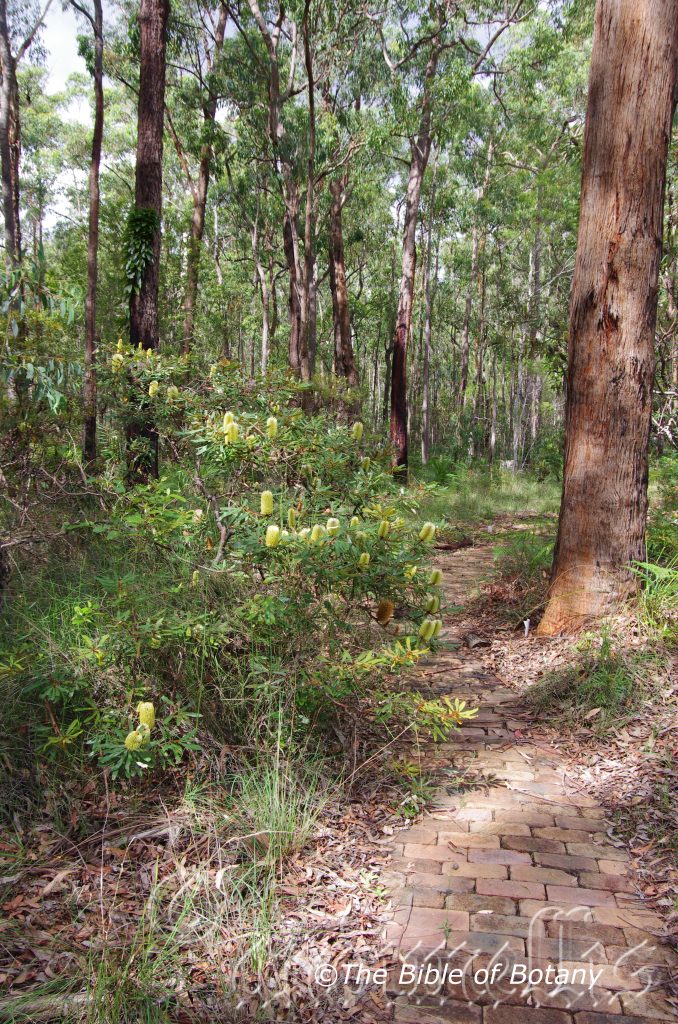
Banksia oblongifolia subsp. minor Author’s Garden The Pinnacles NSW
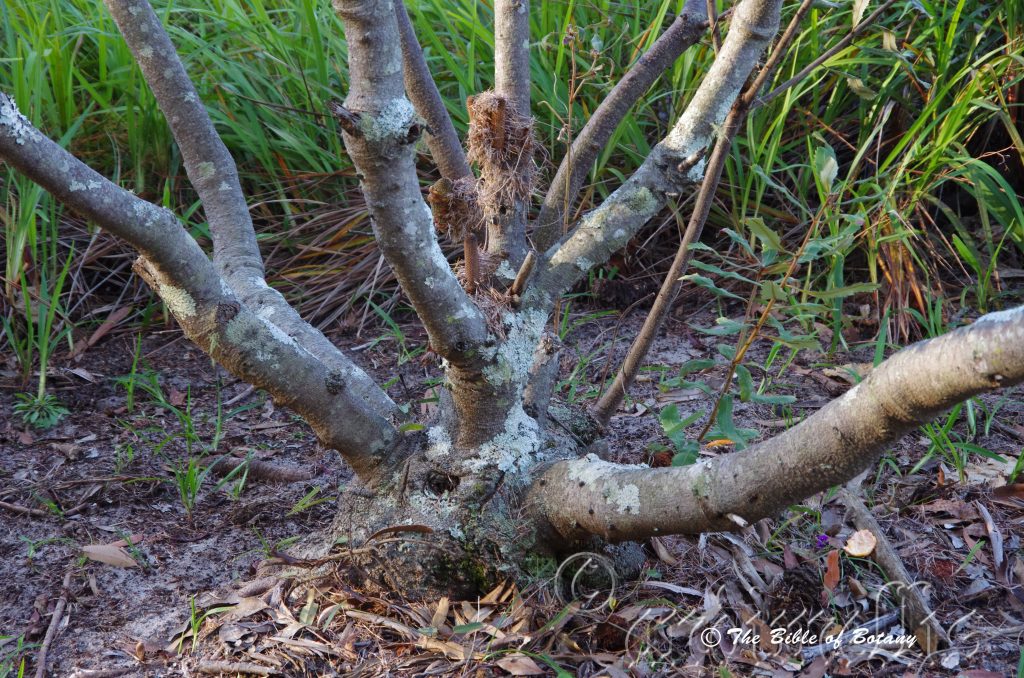
Banksia oblongifolia subsp. minor Author’s Garden The Pinnacles NSW

Banksia oblongifolia subsp. minor Author’s Garden The Pinnacles NSW
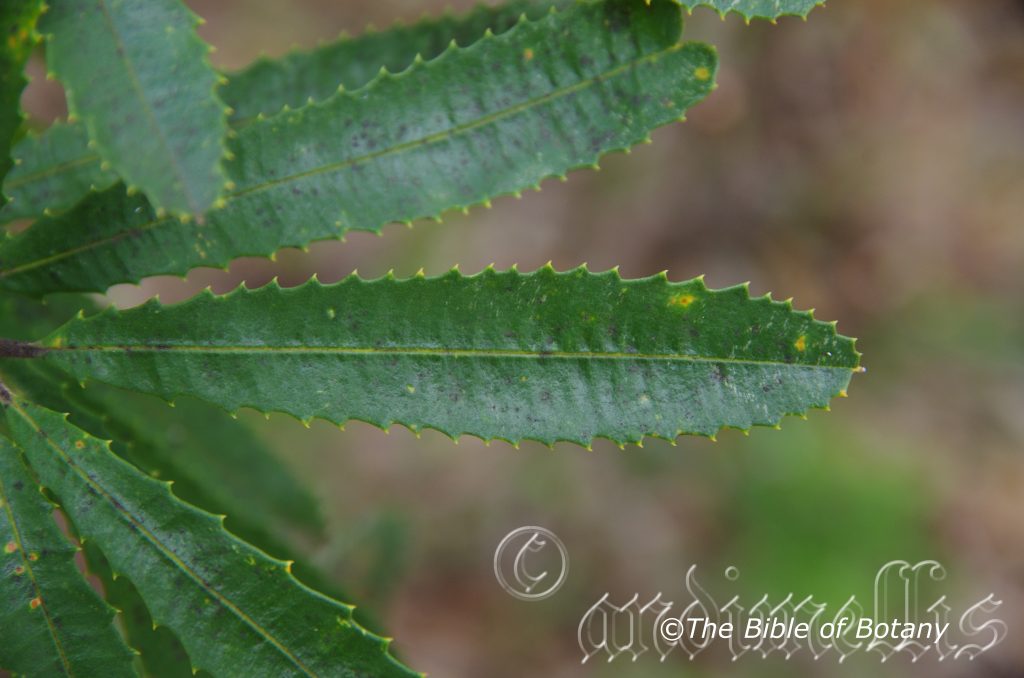
Banksia oblongifolia subsp. minor Author’s Garden The Pinnacles NSW
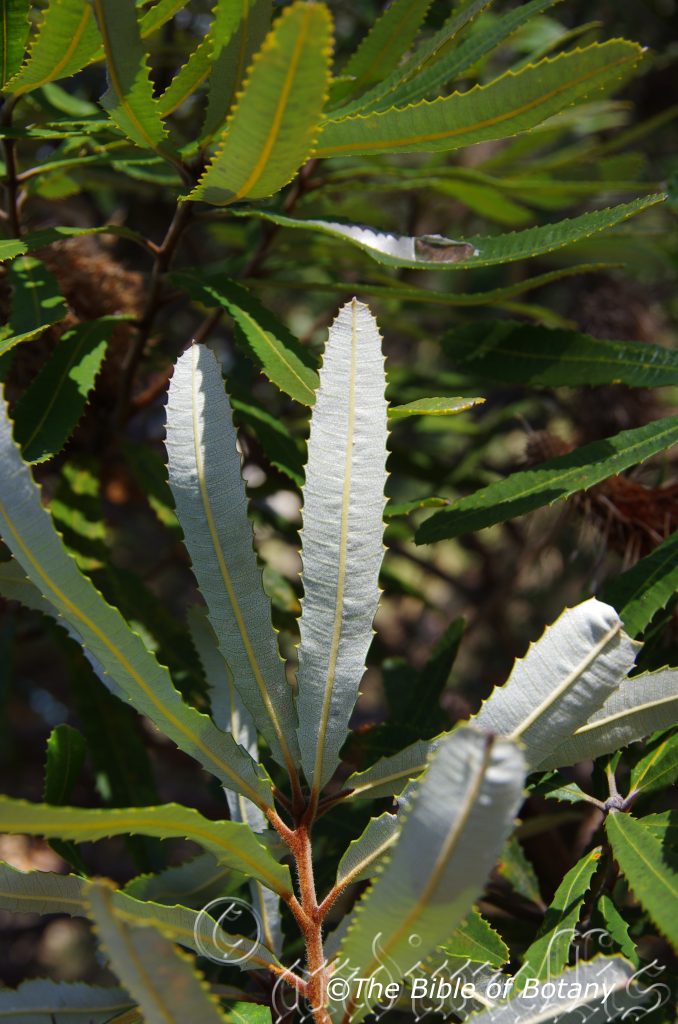
Banksia oblongifolia subsp. minor Author’s Garden The Pinnacles NSW

Banksia oblongifolia subsp. minor Author’s Garden The Pinnacles NSW
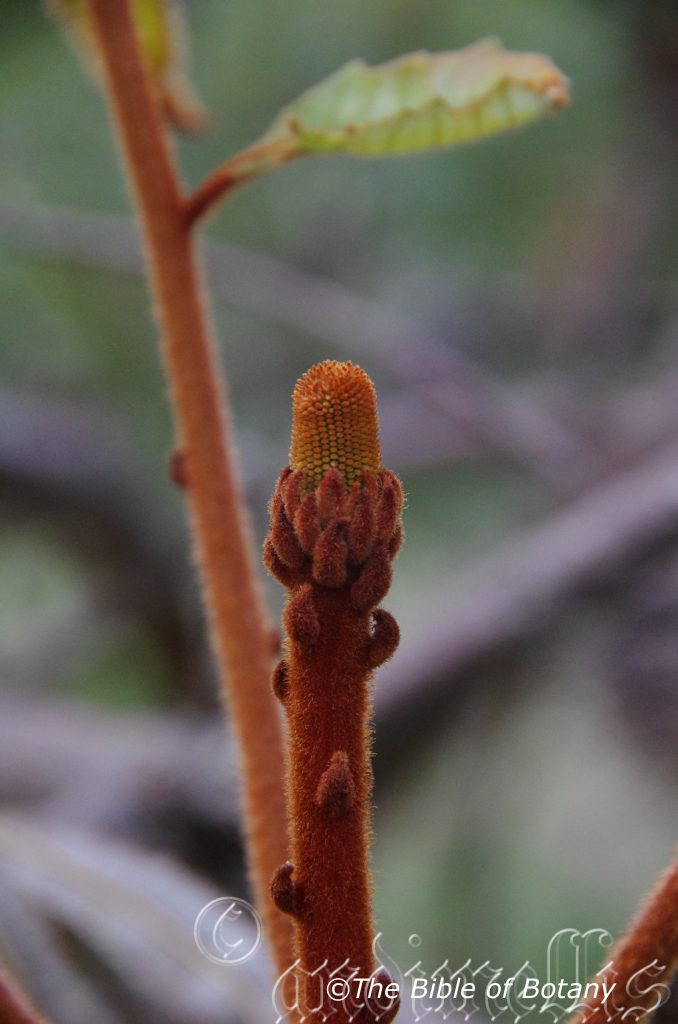
Banksia oblongifolia subsp. minor Author’s Garden The Pinnacles NSW
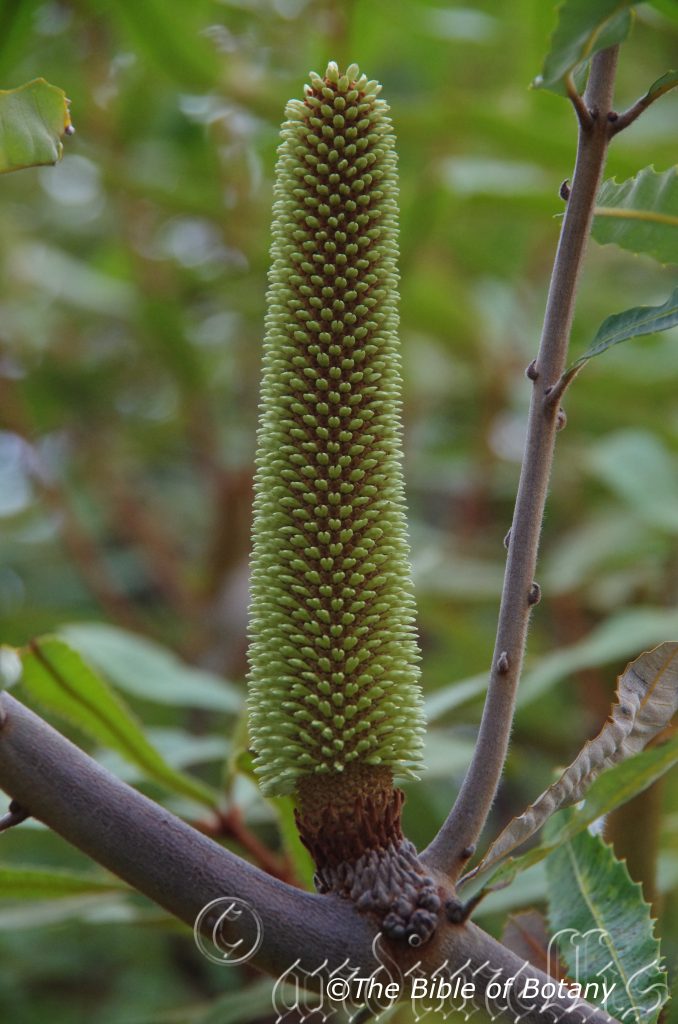
Banksia oblongifolia subsp. minor Author’s Garden The Pinnacles NSW
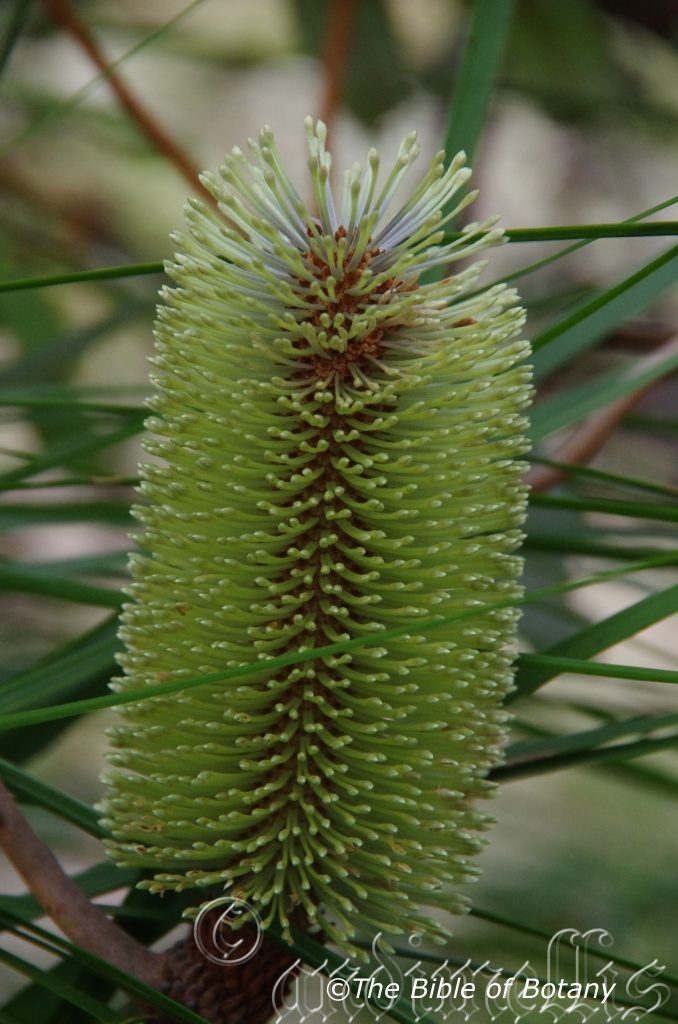
Banksia oblongifolia subsp. minor Author’s Garden The Pinnacles NSW

Banksia oblongifolia subsp. minor Author’s Garden The Pinnacles NSW
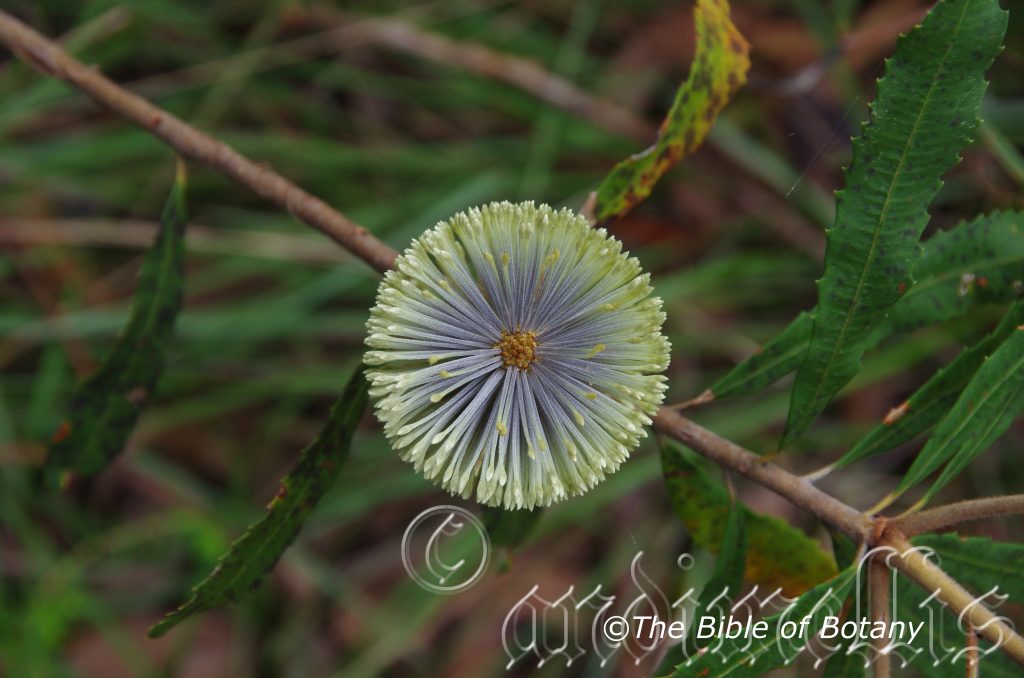
Banksia oblongifolia subsp. minor Author’s Garden The Pinnacles NSW
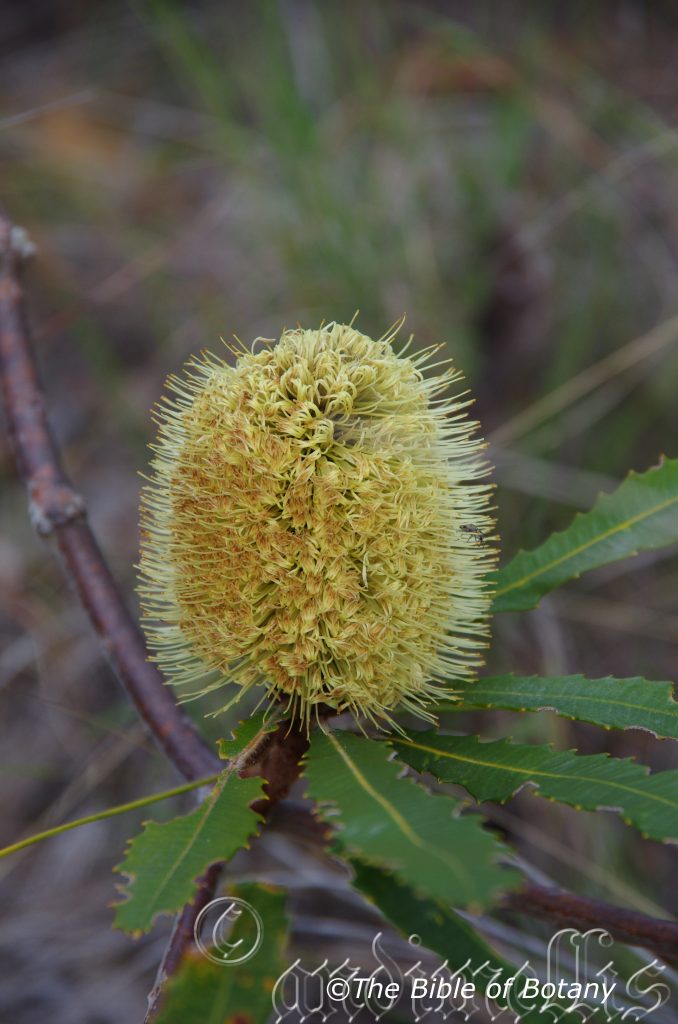
Banksia oblongifolia subsp. minor Author’s Garden The Pinnacles NSW

Banksia oblongifolia subsp. minor Author’s Garden The Pinnacles NSW

Banksia oblongifolia subsp. minor Author’s Garden The Pinnacles NSW
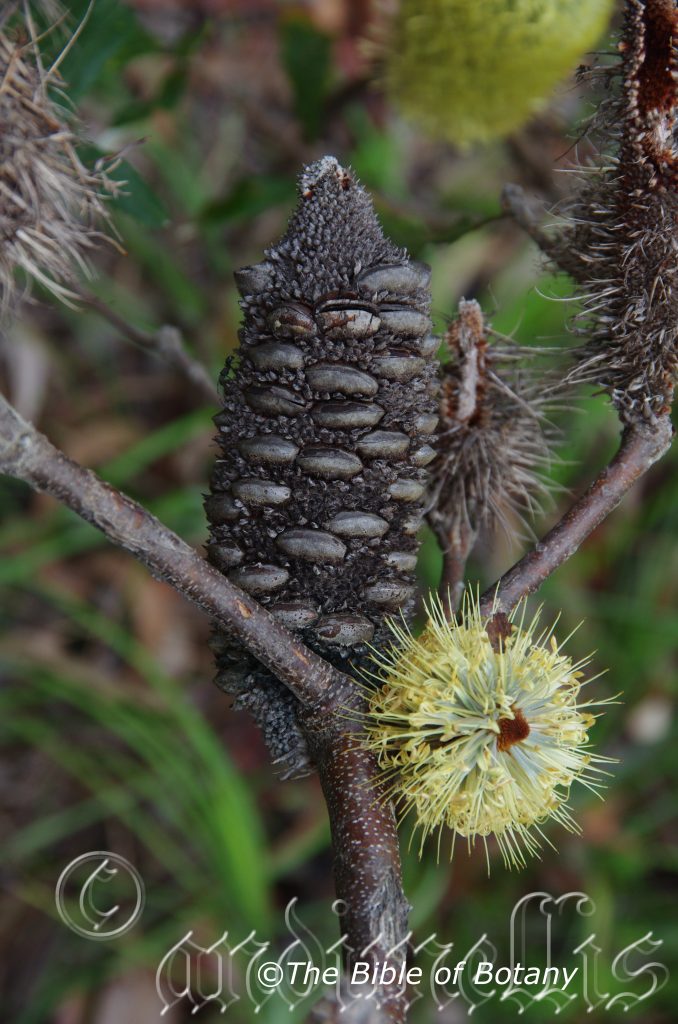
Banksia oblongifolia subsp. minor Author’s Garden The Pinnacles NSW
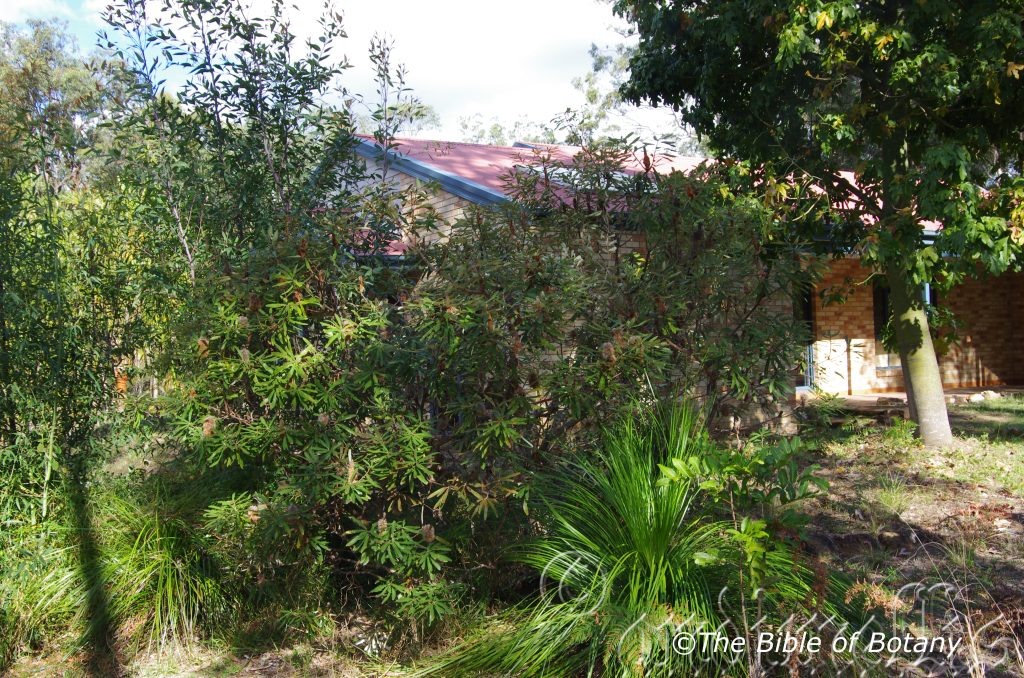
Banksia oblongifolia subsp. minor Author’s Garden The Pinnacles NSW
Banksia oblongifolia
Classification:
Class: Eudicots
Order: Proteales
Family: Proteaceae
Genus: Is named in honour of Sir Joseph Banks; 1743-1820, who was an English Naturalist and patron of botany who travelled with Captain Cook on the Endeavour to explore and study the plants of the east coast of Australia.
Specie: From Oblongitia/Longus, which are Latin for an ovate shape and Folium, which is Latin for foliage. It refers to a leaves, which are several times longer than it is wide where the blades on either side of the midvein are equal in all aspects.
Sub species:
Common Name:
Distribution:
Banksia oblongifolia is found south from Bundaberg in Queensland to Ulladulla in South eastern New South Wales. It is found along the eastern side of the Great Dividing Range. There is an outlying population on the Blackdown Tableland west of Rockhampton.
https://avh.ala.org.au/occurrences/search?taxa=Banksia+oblongifolia+#tab_mapView
Habitat Aspect Climate:
Banksia oblongifolia grows in full sun or dappled light shade. It grows in coastal heaths or dry open woodlands close to the coast. The altitude ranges from 5 meters ASL to 415 meters ASL,
The temperatures range from minus 2 degrees in August to 38 degrees in January.
The rainfall ranges from lows of 900mm to an average of 2100mm.
Soil Requirements:
Banksia oblongifolia prefers skeletal to deep, coarse sands, fine sands, and sandy loams to light fatty clays. The soils are usually derived from decomposed sandstones granites or accumulated peaty beach sands. The soil’s pH ranges from 4.5pH to 6pH. It tolerates seasonal water logged soils. None saline soils to moderately saline soils are tolerated as are salt laden winds.
Height & Spread:
Wild Plants:1m to 3m by 1m to 3m.
Characteristics:
There are some differences appearing on the lower leaf lamina being white or pale green, the leaf margins being toothed or entire and inflorescence being shorter and thicker on some plants.
My description of Banksia oblongifolia is based on plants growing around the Pinnacles north of Grafton.
It is a striking small shrub with a grey-brown glabrous to rough bark. Branches and larger stems are grey-brown with small lenticels more noticeable closer to the apex. Branchlets are densely covered in rusty brown tomentose hairs. The shrubs form a large lignotuber just below the surface where new growth regenerates very quickly after fire or disturbance.
The leaves on Banksia oblongifolia are narrow obovate to oblong leaves are 60mm to 100mm in length by 15mm to 20mm in width. The petioles measure 2mm to 5mm in length. The bases are cuneate while the apexes are truncate or obtuse with a sharp rigid mucronate tip. The margins are toothed or rarely entire. The teeth measure 1mm to 2.5mm in length. The discolourous leaves are deep sea green and glabrous on the upper lamina while the lower lamina is white at the Pinnacles and pale green near Sydney. The mid vein is strongly prominent on the lower lamina and prominent or distinctly visible on the upper lamina. Old leaves are often seen on the trunk and larger stems where it has grown over the petiole and leaf base. Juvenile leaves are rusty brown and densely covered in long rusty red tomentose hairs.
The conflorescence of Banksia oblongifolia measure 60mm to 180mm in length by 45mm to 60mm in diameter. The mid yellow perianth tube measures 20mm to 26mm in length while the style measures in length. The cream to pale yellow style measures 40mm to 52mm in length including the ovary. The pale lemon-yellow to lemon buds have a mid to deep blueish-green almost iridescent tinge. The non-persistent pale creamy lemon or white is pollen presenter is straight. Flowering occurs from early March to mid-June.
The cones measure 10mmm to 18mm in width. There are 6 to 80 follicles on each cone. The follicles are flat on the upper and lower lips and measure from 10mm to 24mm length by 5mm to 8mm in height. They are densely covered in short and long tomentose hairs and have a velvety feel as the styles are discarded. The tomentose hairs disintegrate as the cones expand leaving the grey naked cone with each follicle lip jutting out by 4mm to 6mm.
Wildlife:
The shrubs are a favourite haunt for all small nectar eating birds like the Myzomela erythrocephala and Lichmera indistincta along with the native bee Tetragonula carbonaria when in flower due to the copious amounts of nectar the plants produce.
Cultivation:
Banksias oblongifolia are drought resistant, have a tolerance to both high and low humidity and are tolerant to wide temperature variations. This shrub warrants a place in most small gardens. Coupled with the number of birds that will seek nectar as a guaranteed larder in winter the plants should be more popular than they are.
They are an ideal size for smaller yards, growing 1 to 2.5 meters in height by 1 to 2.5 meters in diameter on all soils as long as they are not water logged. Like all Proteaceae avoid fertilizers that contain lime or phosphorous.
Banksia oblongifolia is ideal for bush settings, rockeries and bird features especially when grouped with other plants like Ceropetalum gummiferum and mixed small Grevillea specie. They are best grown in full sunlight to dappled sunlight. Do not crowd them as they have a tendency to drop their leaves and look rather unkempt.
To induce more flowering and stem growth the plants can be pruned hard back to the lignotuber immediately after flowering every 3 to 5 years once established. This stimulates the plants into active growth. After pruning or burning soak the ground well and fertilize with fish emulsion and or liquid sea weed. Repeat the process a week later and you will be assured of a quick response and excellent flowering the following season.
Propagation:
Seeds:
Banksia oblongifolia seeds can be removed easily by placing the cones seeds can be removed easily by placing the cones in a brown paper bag and leaving them in the car for 7 to 10 days. After the evening meal has been prepared, with the oven off and place the seeds inside while the oven is still hot. The cones will open up after a day or two. Shake to remove the seeds or pull them out with tweezers.
Sow fresh seed directly into a seed raising mix. Keep moist not wet. When the seedlings are 25mm to 40mm tall, prick them out and plant them into 50mm native tubes using a good organic mix.
Fertilize using Seaweed or fish emulsion on an alternate basis. Fertilize every two months until the plants are established then twice annually in early September or March to maintain health, vitality and better flowering and better quality fruit. Do not use synthetic fertilizers on Banksia specie as they usually contain high levels of phosphorous and calcium which are toxic to most Proteaceae.
Once the seedlings reach 150mm to 200mm in height plant them out into their permanent position.
Further Comments from Readers:
“Hi reader, it seems you use The Bible of Botany a lot. That’s great as we have great pleasure in bringing it to you! It’s a little awkward for us to ask, but our first aim is to purchase land approximately 1,600 hectares to link several parcels of N.P. into one at The Pinnacles NSW Australia, but we need your help. We’re not salespeople. We’re amateur botanists who have dedicated over 30 years to saving the environment in a practical way. We depend on donations to reach our goal. If you donate just $5, the price of your coffee this Sunday, We can help to keep the planet alive in a real way and continue to bring you regular updates and features on Australian plants all in one Botanical Bible. Any support is greatly appreciated. Thank you.”
In the spirit of reconciliation we acknowledge the Bundjalung, Gumbaynggirr and Yaegl and all aboriginal nations throughout Australia and their connections to land, sea and community. We pay our respect to their Elders past, present and future for the pleasures we have gained.
Banksia paludosa
Classification:
Class: Eudicots
Order: Proteales
Family: Proteaceae
Genus: Is named in honour of Sir Joseph Banks; 1743-1820, who was an English Naturalist and patron of botany who travelled with Captain Cook on the Endeavour to explore and study the plants of the east coast of Australia.
Specie: From Paludosa which is Greek or Pal?s/ Pal?d?sum, which is Latin for wallums, swamps or marshes. It refers to the habitats, which are very wet as in wallums marshes or swamplands.
Sub specie: Banksia paludosa subsp. astrolux. From Aster, which is Ancient Greek for a star and Lux which is Latin for a light. It refers to leaves, which have a silvery sheen on the upper laminas and brilliant white on the lower laminas so that they reflect more light compared to the other sub species.
Sub specie: Banksia paludosa subsp. paludosa. From Paludosa which is Greek or Pal?s/ Pal?d?sum, which is Latin for wallums, swamps or marshes. It refers to the habitats, which are very wet as in wallums marshes or swamplands.
Common name: Swamp Banksias or Marsh Banksia.
Distribution:
Banksia paludosa subsp. astrolux is restricted to a small area in eastern New South Wales west of Sydney and south to Wollongong.
Banksia paludosa subsp. paludosa is an endemic species to eastern New South Wales from New Castle to Nadgee Reserve adjacent to the Victorian border.
https://avh.ala.org.au/occurrences/search?taxa=Banksia+paludosa+#tab_mapView
Habitat Aspect Climate:
Banksia paludosa grows in full sun in a wide variety of aspects from dry woodlands, heath lands or sandstone cliffs adjacent to wallums. The altitude ranges from 5 meters ASL to 680 meters ASL
The temperatures range from minus 3 degrees in August to 35 degrees in January.
The rainfall ranges from lows of 700mm to an average of 1400mm.
Soil Requirements:
Banksia paludosa prefers deep, sandy loams, light fatty clays, medium clays or light silts to heavy silts. The soils are usually derived from decomposed sandstones granites, brown basalts, black basalts, alluvial deposits, limestones or quartzites. The soil’s pH ranges from 5pH to 7.5pH. It does not tolerate water logged soils. None saline soils to moderately saline soils are tolerated.
Height & Spread:
Wild Plants:1.5m to 5m by 3m to 4m
Characteristics:
The two sub species of Banksia paludosa are small trees with grey-brown to pale grey scabrous to rough bark. Branches and larger stems are grey-brown with small lenticels more noticeable closer to the apex. Branchlets are densely covered in rusty brown tomentose hairs.
Banksia paludosa has a light to deep grey scabrous bark. The branches are brown and grey with the brown sections being glabrous and dull. The juvenile stems where the leaves are glabrous, pale rusty-brown to yellow-brown, semi glossy turning an olive green close to the apex. The juvenile branchlets are covered in rusty red tomentose hairs but quickly become glabrescent.
Banksia paludosa‘s alternate or whirled, narrow lanceolate to narrow obovate leaves are 40mm to 130mm in length by 10mm to 30mm in width. The bases are attenuate while the apexes are broad obtuse to truncate with a small sharp rigid mucronate point. The discolourous laminas are glabrous and deep sea green on the upper lamina while the lower lamina is silvery white and covered in white tomentose hairs along the mid vein. The mid vein is strongly prominent, yellow to yellow-brown below and distinctly yellow above. The leaf margins are entire or irregularly toothed more so on the apex half of the leaf. Petioles are 4mm to 12mm long.
The conflorescences of Banksia paludosa are cylindrical and measure 70mm to 130mm in length by 34mm to 44mm in diameter and are born terminally or on special short branchlets along the older branches. The perianth and styles are a golden honey brown to yellow. The pollen receiver is a deeper shade of the styles and perianth. The flowers open from the base to the apex. The perianth style is straight, persistent and turns a pale silvery grey after fertilization. The perianth measures 16mm to 20mm in length.
The cones of Banksia paludosa measure 65mm to 120mm in length by 30mm to 65mm in diameter. The 6 to 60 elliptical follicles measures 9mm to 18mm in length by 3mm to 5mm in height. Cones remain on the bushes until fire releases them with the parent plant or branch dying.
Sub Specie Differences:
Banksia paludosa sub sp. paludosa has a lignotuber and only grows to 2 meters in height. Flowering occurs from April to June.
Banksia paludosa sub sp. astrolux does not have a lignotuber and grows to 5 meters in height. Flowering occurs from May to July.
Wildlife:
Banksia paludosa attracts all the different specie of honeyeaters, particularly larger birds during the day and sugar gliders and possums at night. This species is also very popular with native bees and butterflies.
Cultivation:
Banksia paludosa is a beautiful broad growing medium shrub with large flowers. It is suitable for beach side gardens which have well drained sands or good quality well drained loams.
It is drought resistant, having a tolerance to both high and low humidity and are tolerant to wide temperature variations. This shrub warrants a place in most small bush gardens. Coupled with the number of birds that will seek nectar as a guaranteed larder in winter the plants should be more popular than they are.
It is an ideal size for smaller yards, growing 1.5 to 2 meters high by 1.5 to 2.5 meters wide on all soils as long as they are not water logged. Like all Proteaceae avoid fertilizers that contain lime or phosphorous.
Banksia paludosa is ideal for bush settings, rockeries and bird features especially when grouped with other plants like Ceropetalum gummiferum and small Grevillea. It must be grown in full sunlight and do not crowd them or they will drop their leaves and look rather unkempt.
To induce more flowering and stem growth prune the plants immediately after flowering. The plants can be pruned back down to the lignotuber or burnt every 3 to 5 years once established. This stimulates the plants into active growth. After pruning or burning soak the ground well and fertilize with fish emulsion and liquid sea weed. Repeat the process a week later and you will be assured of a quick response and excellent flowering the following season.
This is a beautiful Banksia for planting on banks or in a native bush scene as a backdrop.
Flowers are excellent for flower arrangements.
Propagation:
Seeds:
Banksia paludosa seeds can be removed easily by placing the cones seeds can be removed easily by placing the cones in a brown paper bag and leaving them in the car for 7 to 10 days. Another method is to pop the cones in the oven after the evening meal has been prepared. Turn the oven off and place the seeds inside while the oven is still hot. The cones will open up after a day or two. Shake to remove the seeds or pull them out with tweezers.
Sow fresh seed directly into a seed raising mix in early spring covering them with 5mm of the mix. Keep moist not wet. When the seedlings are 25mm to 40mm tall, prick them out and plant them into 50mm native tubes using a good organic mix.
Once the seedlings reach 150mm to 200mm in height plant them out into their permanent position. Mass plantings can be achieved by spacing the plants at 3 meters to 6 meter centers.
Fertilize using Seaweed or fish emulsion on an alternate basis. Fertilize every two months until the plants are established then twice annually in early September or March to maintain better health, vitality and flowering and better quality fruit. Do not use synthetic fertilizers on Banksia specie as they usually contain high levels of phosphorous and calcium which are toxic to most Proteaceae.
Further Comments from Readers:
“Hi reader, it seems you use The Bible of Botany a lot. That’s great as we have great pleasure in bringing it to you! It’s a little awkward for us to ask, but our first aim is to purchase land approximately 1,600 hectares to link several parcels of N.P. into one at The Pinnacles NSW Australia, but we need your help. We’re not salespeople. We’re amateur botanists who have dedicated over 30 years to saving the environment in a practical way. We depend on donations to reach our goal. If you donate just $5, the price of your coffee this Sunday, We can help to keep the planet alive in a real way and continue to bring you regular updates and features on Australian plants all in one Botanical Bible. Any support is greatly appreciated. Thank you.”
In the spirit of reconciliation we acknowledge the Bundjalung, Gumbaynggirr and Yaegl and all aboriginal nations throughout Australia and their connections to land, sea and community. We pay our respect to their Elders past, present and future for the pleasures we have gained.

National Botanic Garden Canberra ACT
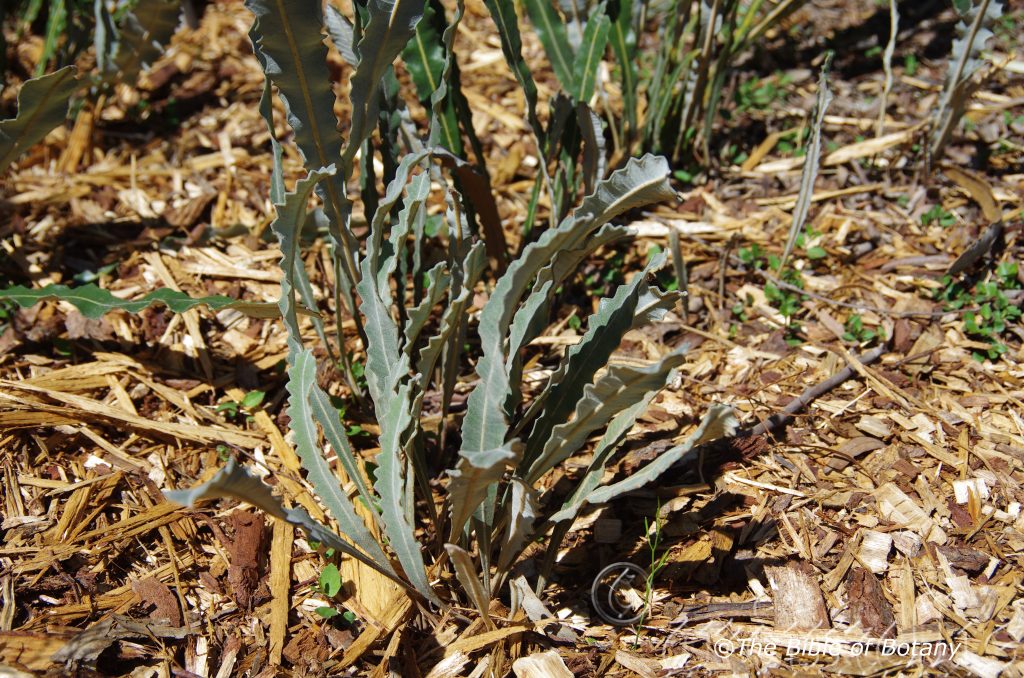
National Botanic Garden Canberra ACT
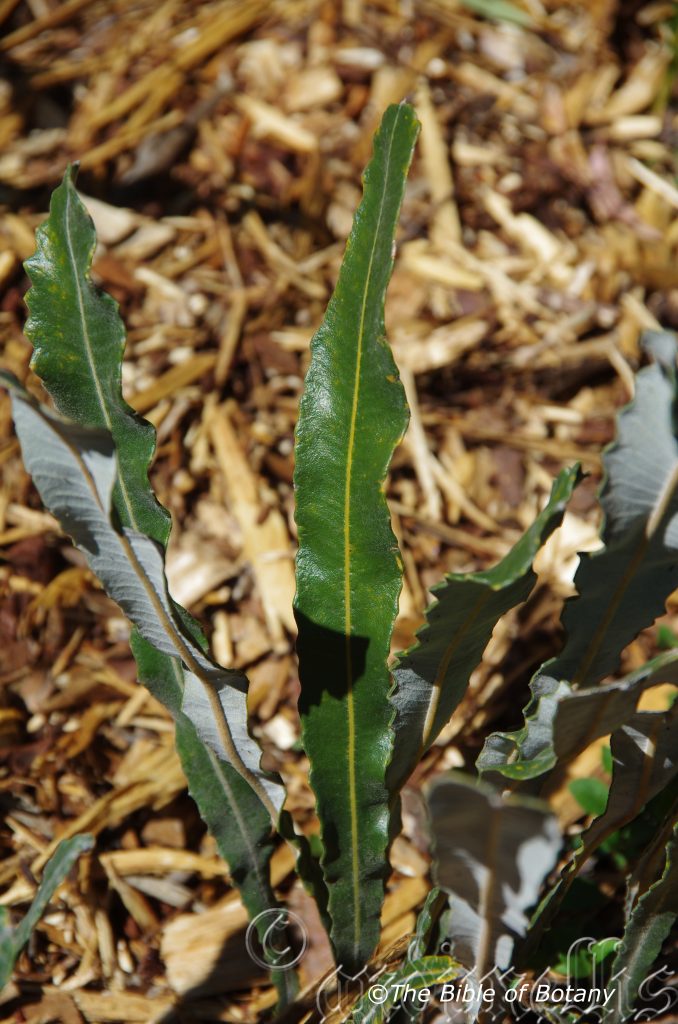
National Botanic Garden Canberra ACT

National Botanic Garden Canberra ACT
Banksia petiolaris
Classification:
Class: Eudicots
Order: Proteales
Family: Proteaceae
Genus: Is named in honour of Sir Joseph Banks; 1743-1820, who was an English Naturalist and patron of botany who travelled with Captain Cook on the Endeavour to explore and study the plants of the east coast of Australia.
Specie: From Petiolus, which is Latin for a leaf stalk. It refers to leaf stalks, which much longer than other species in the genus.
Subspecies:
Common name: Creeping Banksia.
Distribution:
Banksia petiolaris is endemic to Western Australia and is found between Albany and Esperance along the south coast.
https://avh.ala.org.au/occurrences/search?taxa=Banksia+petiolaris+#tab_mapView
Habitat Aspect Climate:
Banksia petiolaris grows in full sun to dappled shade. It grows in open woodlands on flat plains behind the frontal dunes close to the coast.
The temperatures range from 3 degrees in August to 38 degrees in January.
The rainfall varies from a low of 300mm to areas with an average of 800mm.
Soil Requirements:
Banksia petiolaris prefers deep, fine sands, sandy loams to light fatty clays. The soils are usually derived from accumulated peaty beach sands. The soil’s pH ranges from 5pH to 7pH. It does not tolerate water logged soils. None saline soils to moderately saline soils are tolerated as are salt laden winds.
Height & Spread:
Wild Plants:0.5m to 0.6m by 1.5m to 2m
Characteristics:
Banksia petiolaris is a small shrub that has many stems spreading from a short central trunk. It has a light to deep red-brown or green brown scurfy to glabrous stems. The stems are densely covered in long, deep rusty-orange to deep rusty-red tomentose hairs. It does not have a lignotuber.
Banksia petiolaris‘s alternate, oblong to oblanceolate leaves measure 550mm to 600mm in length by 32mm to 40mm in width. Petioles measure 100mm to 240mm in length. The bases are attenuate while the apexes are truncate with small blunt mucronate tips. The dull discolourous laminas are grey-green or deep blue-green on the upper laminas while the lower laminas are silvery white and covered in pale rusty tomentose hairs. The pale yellow mid vein is strongly prominent on the lower laminas and is distinctly visible from the upper laminas. The leaf margins are regularly and deeply toothed. New shoots are densely covered in rusty-orange tomentose hairs.
The conflorescences of Banksia petiolaris are cylindrical and measure 100mm to 170mm in length by 70mm to 90mm in width and are born terminally or on special short branchlets along the older branches. The perianths and styles are a rusty brown, chocolate brown, honey brown pink-red. The pollen receiver is usually a creamy yellow or creamy honey fawn and the styles open from the base to the apex. The perianth style curves upwards near the tip, persistent and turns to a pale yellow and drying to a soft grey after fertilization. The perianth measures 15mm to 20mm in length. Flowering occurs from September to December.
Banksia petiolaris‘s cones are covered in pale grey sericeous hairs and measure 80mm to 130mm in length by 40mm to 50mm in width. The 5 to 20 follicles are elliptical and measures 28mm to 38mm in length by15mm to 20mm in height. The cones remain on the bushes for up to a year before disintegrating.
Wildlife:
Banksia petiolaris attracts different specie of ants during September and December scrambling for cover. Various honey eaters are also attracted to the flowers early in the morning and late afternoon before the ants become active.
Cultivation:
Banksia petiolaris is a classically interesting and beautiful slow growing Banksia that is idea for sandy rockeries. Three to five plants planted close together or scatter them throughout the rockery, raised garden beds or amongst boulders make great features. This is especially the case when mixed with other small annuals or prostrate ground covers. Because of their size and leaf shape most small plants make a pleasing contrast.
Cultivated plants will reach their full potential of 0.6 meters in height by 2 meters in diameter in three to four years. The shape can vary considerably if planted amongst boulders.
It is a desirable species for use around sunny swimming pools, courtyards, besides pathways, rockeries, along sandy clay slopes or along drive ways or adjacent to natural bush gardens. Mass scattered plantings of 5 or more plants even in small areas; really do the plants justification especially when they are in flower. Medium fish or frog ponds will benefit from Banksia petiolaris where a desert oasis is the theme. When mass planting use plants with pale yellow cream or white flowers is very powerful, especially in areas where you are looking down on the garden. Using rocks and small boulders can make the pool or any water feature appear like an oasis.
If it is placed around a pool, courtyards or other confined spaces then plant them in small groups by scatter planting them for a more informal natural look. Placed between the path and the fence or wall and amongst rocks will help soften their surroundings. The leaves and flowers can make a great start for the smaller heath or desert setting. When making a desert scene using Banksia petiolaris use either large rocks with few to many plants scattered in the foreground. In a sandy desert plant them sparingly mixing smaller annuals more densely as you approach the water. Be careful not to over plant as they will look out of place and weedy.
If companion plants are sought then the choice of plants to use either side is limited only by size of the area to be landscaped and the size of the other plants as they should be no more than 150mm in height or if the Banksia is the small subject plants of 900mm could be used to great effect.
Used beneath a twisted mallee tree they can be scatter planted again and mixed as above for a natural harsh bush setting.
The flowers also look good in flower arrangements.
Propagation:
Seeds:
Banksia petiolaris seeds can be removed easily by placing the cones seeds can be removed easily by placing the cones in a brown paper bag and leaving them in the car for 7 to 10 days. Another method is to pop the cones in the oven after the evening meal has been prepared. Turn the oven off and place the seeds inside while the oven is still hot. The cones will open up after a day or two. Shake to remove the seeds or pull them out with tweezers.
Sow fresh seed directly into a seed raising mix in early spring covering them with 5mm of the mix. Keep moist not wet. When the seedlings are 25mm to 40mm tall, prick them out and plant them into 50mm native tubes using a good organic mix.
Once the seedlings reach 150mm to 200mm in height plant them out into their permanent position. Mass plantings can be achieved by spacing the plants at 1.5 meters to 2 meter centers.
Fertilize using Seaweed or fish emulsion on an alternate basis. Fertilize every two months until the plants are established then twice annually in early September or March to maintain health, vitality and better flowering and better quality fruit. Do not use synthetic fertilizers on Banksia specie as they usually contain high levels of phosphorous and calcium which are toxic to most Proteaceae.
Further Comments from Readers:
“Hi reader, it seems you use The Bible of Botany a lot. That’s great as we have great pleasure in bringing it to you! It’s a little awkward for us to ask, but our first aim is to purchase land approximately 1,600 hectares to link several parcels of N.P. into one at The Pinnacles NSW Australia, but we need your help. We’re not salespeople. We’re amateur botanists who have dedicated over 30 years to saving the environment in a practical way. We depend on donations to reach our goal. If you donate just $5, the price of your coffee this Sunday, We can help to keep the planet alive in a real way and continue to bring you regular updates and features on Australian plants all in one Botanical Bible. Any support is greatly appreciated. Thank you.”
In the spirit of reconciliation we acknowledge the Bundjalung, Gumbaynggirr and Yaegl and all aboriginal nations throughout Australia and their connections to land, sea and community. We pay our respect to their Elders past, present and future for the pleasures we have gained.

Sunnybank Qld.
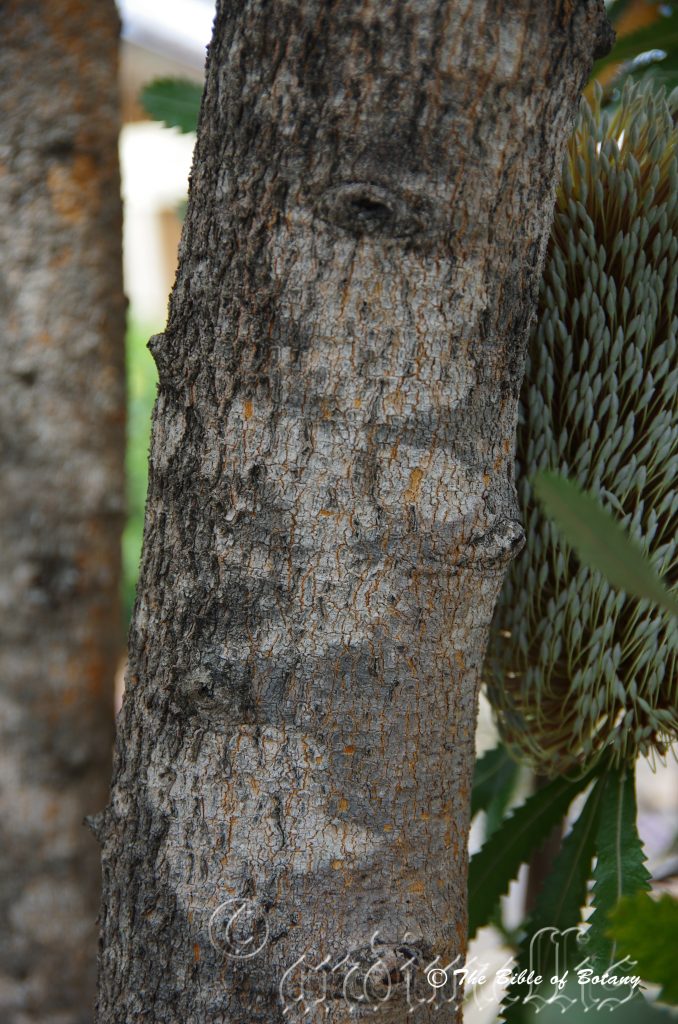
Sunnybank Qld.

Sunnybank Qld.
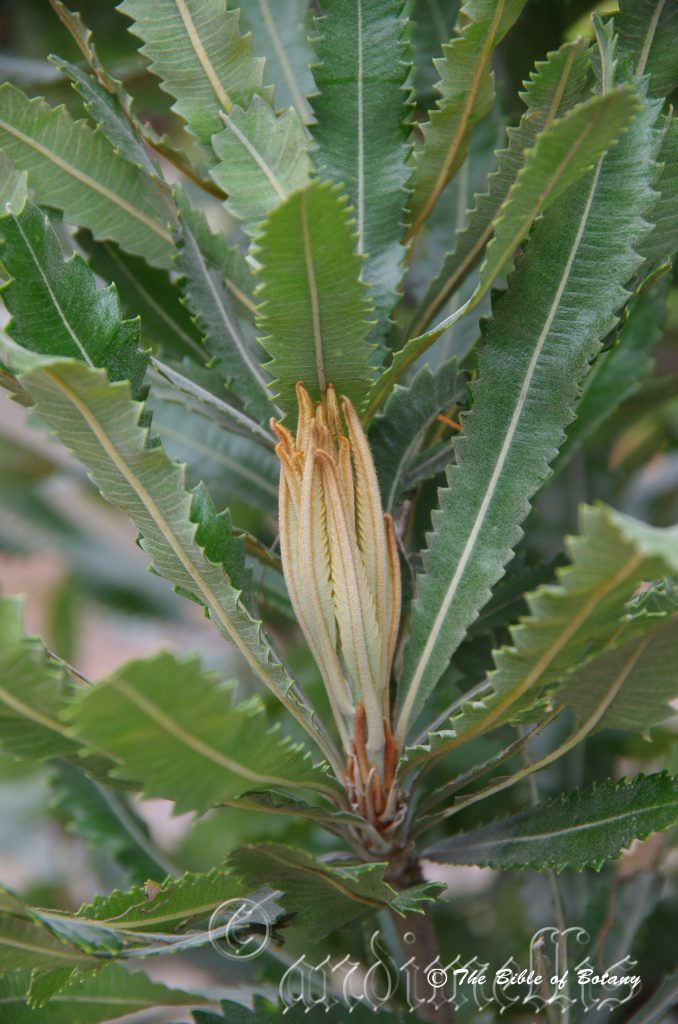
Sunnybank Qld.
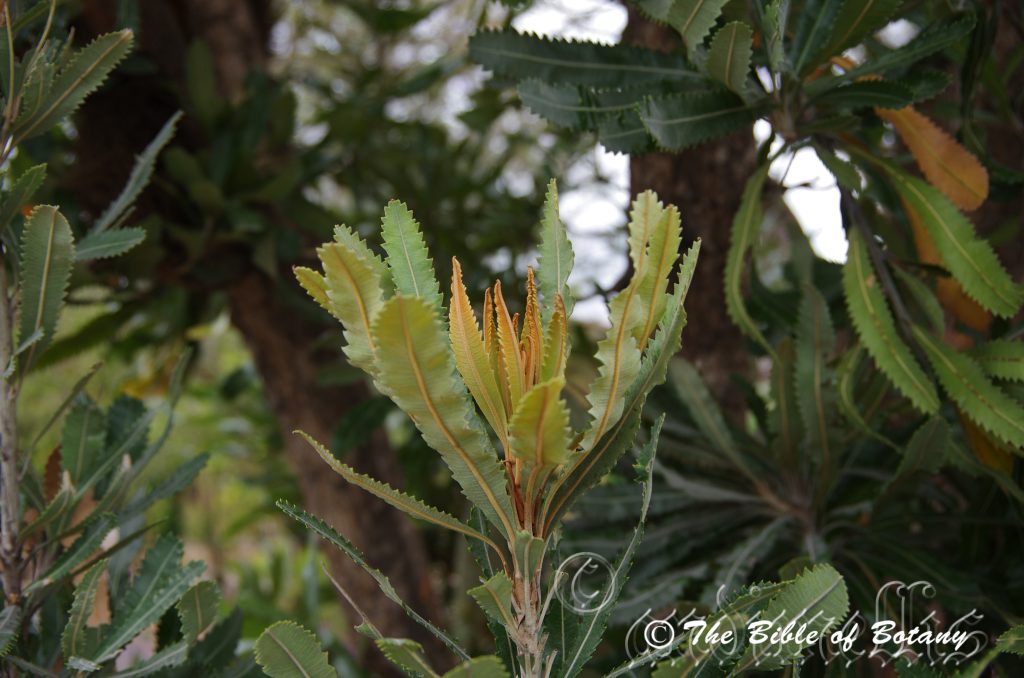
Sunnybank Qld.
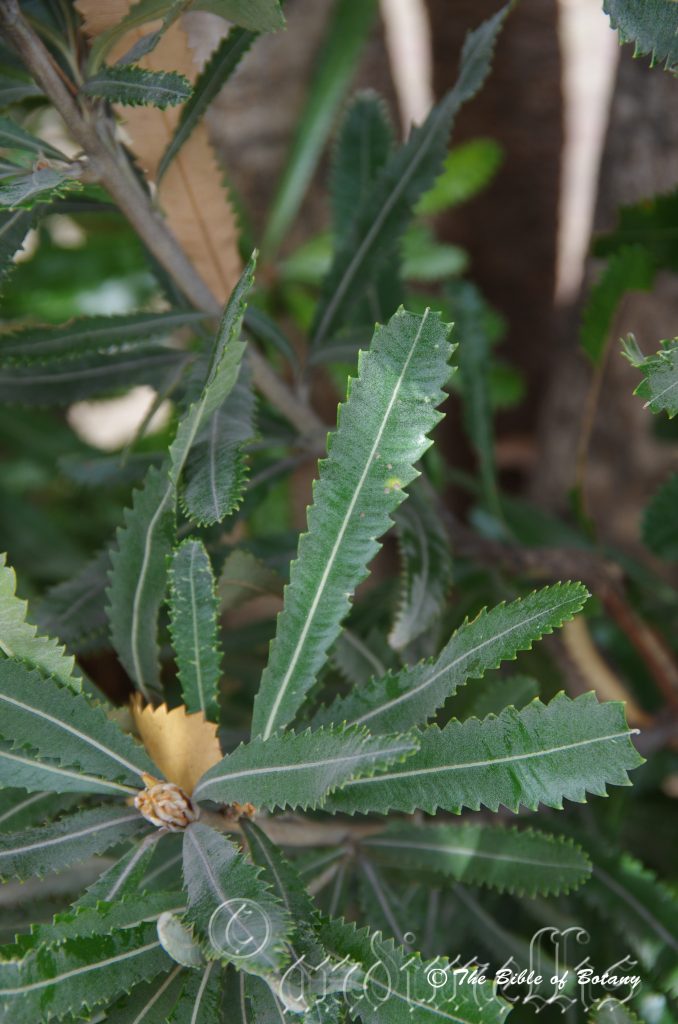
Sunnybank Qld.
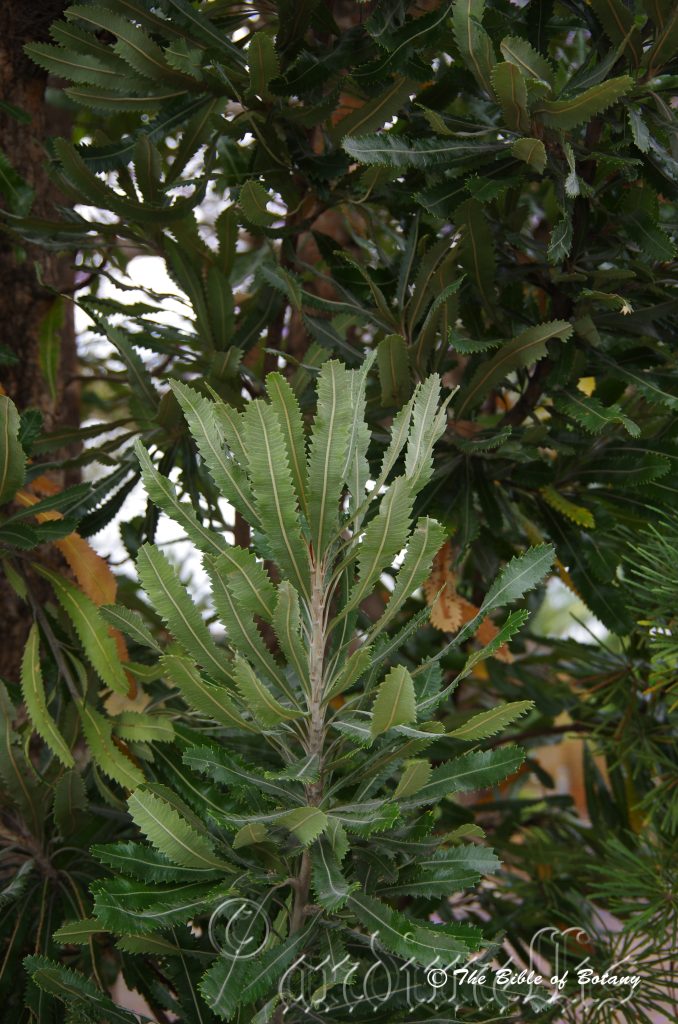
Sunnybank Qld.
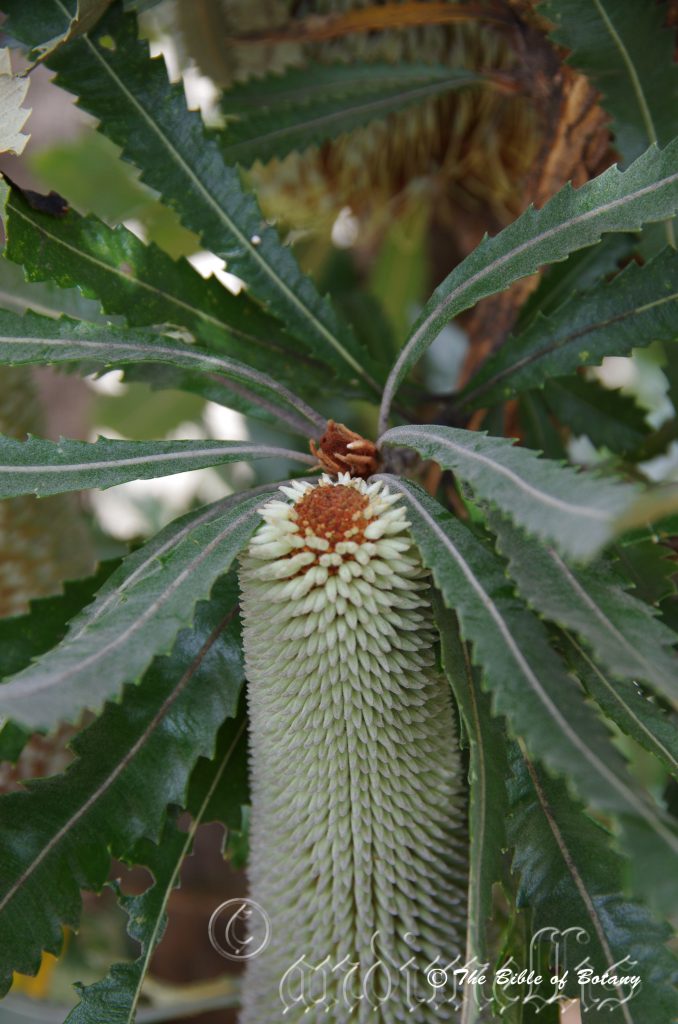
Sunnybank Qld.
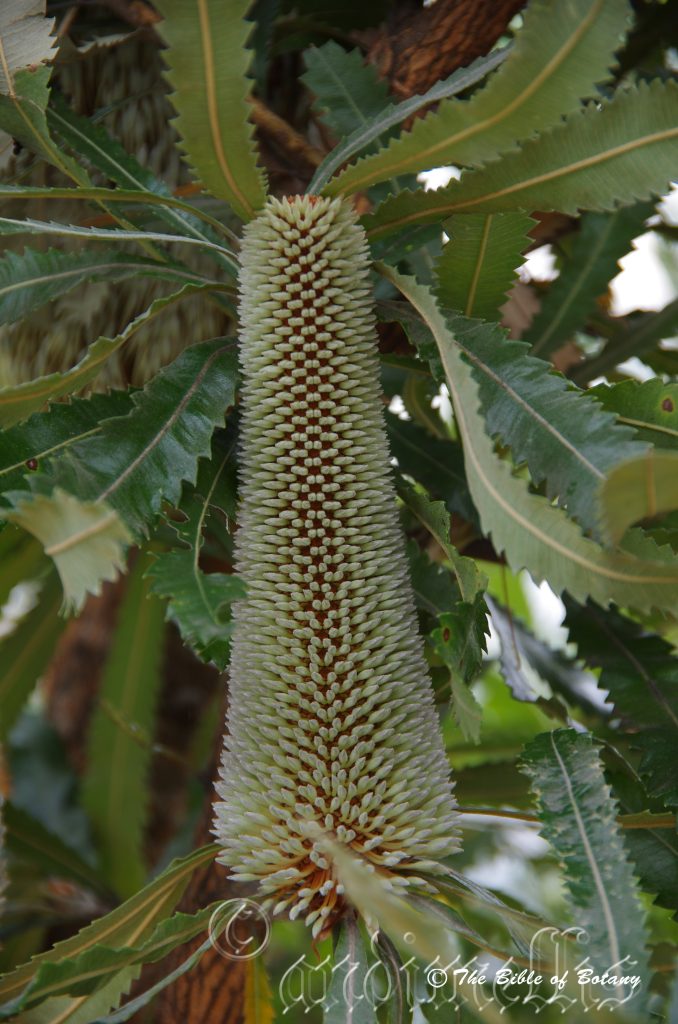
Sunnybank Qld.
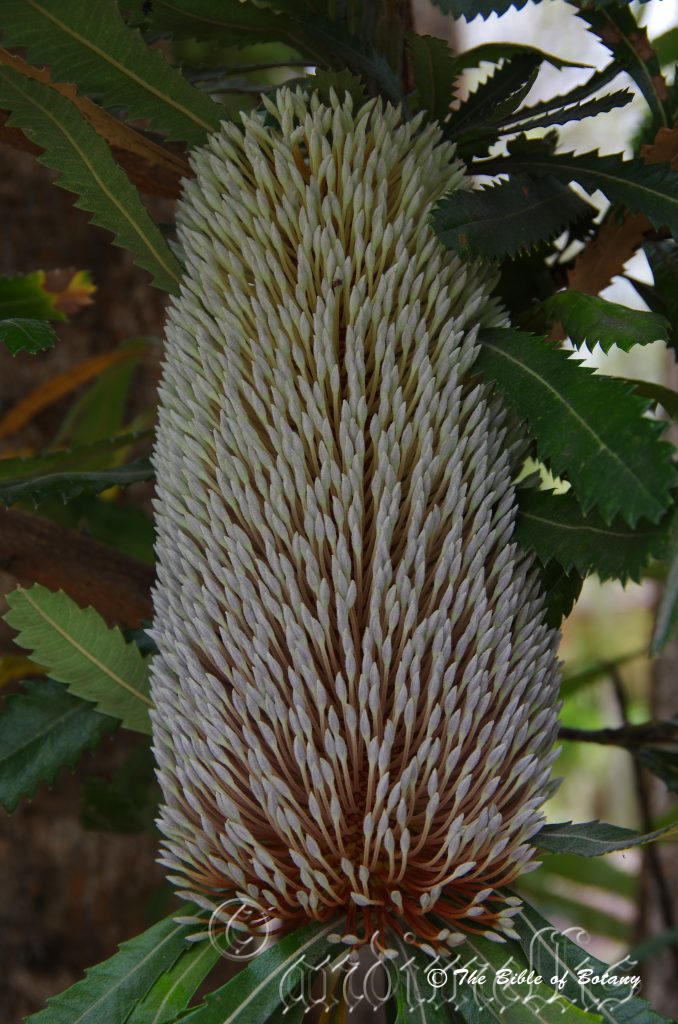
Sunnybank Qld.

Sunnybank Qld.
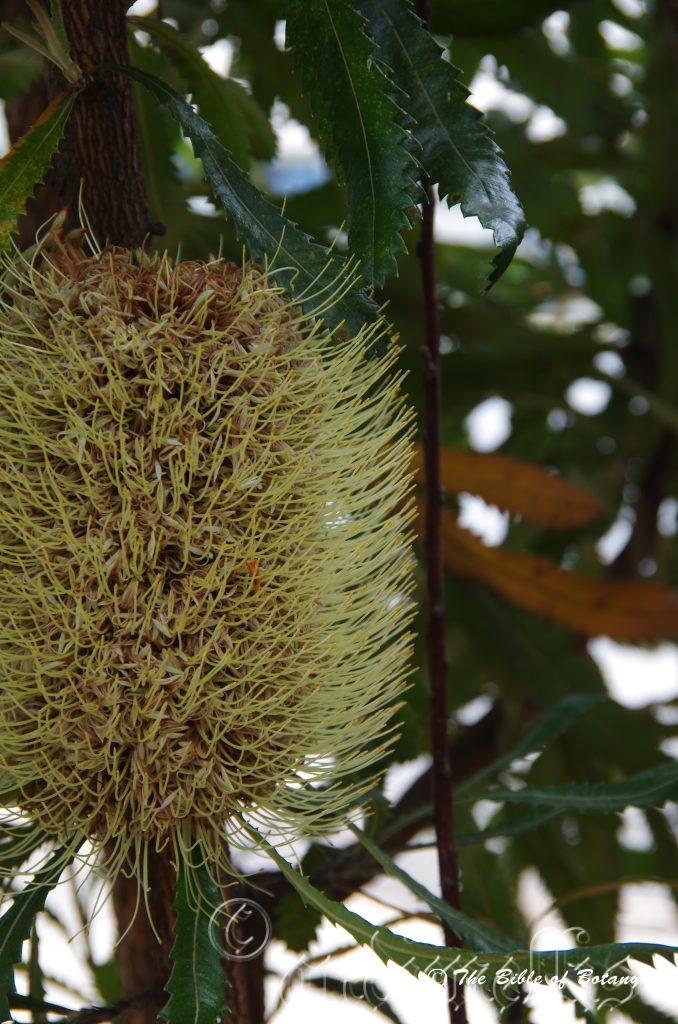
Sunnybank Qld.
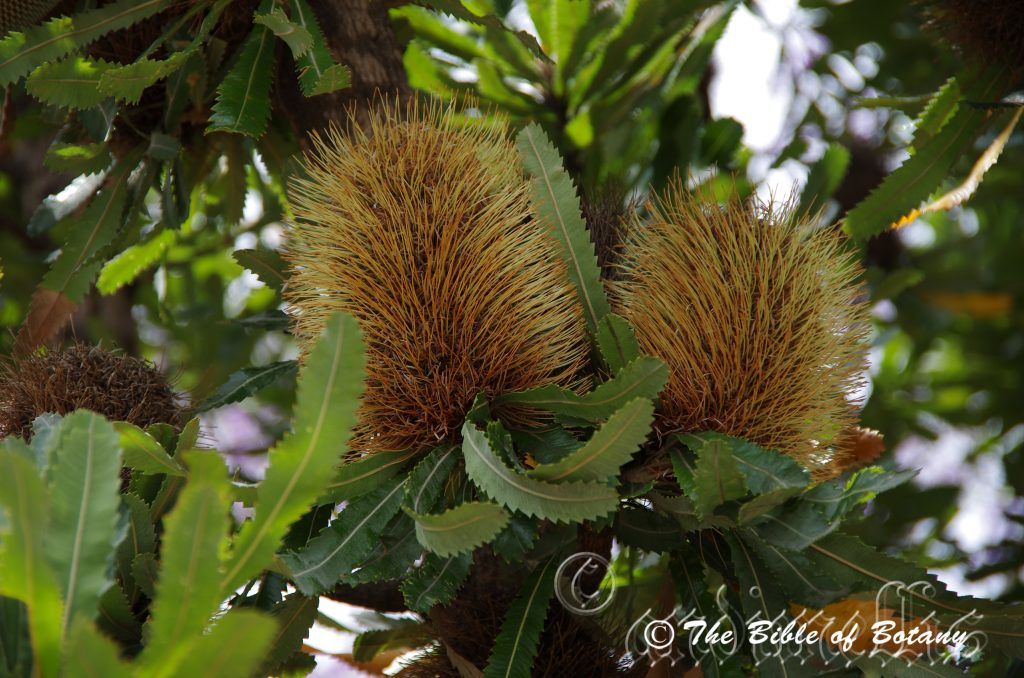
Sunnybank Qld.
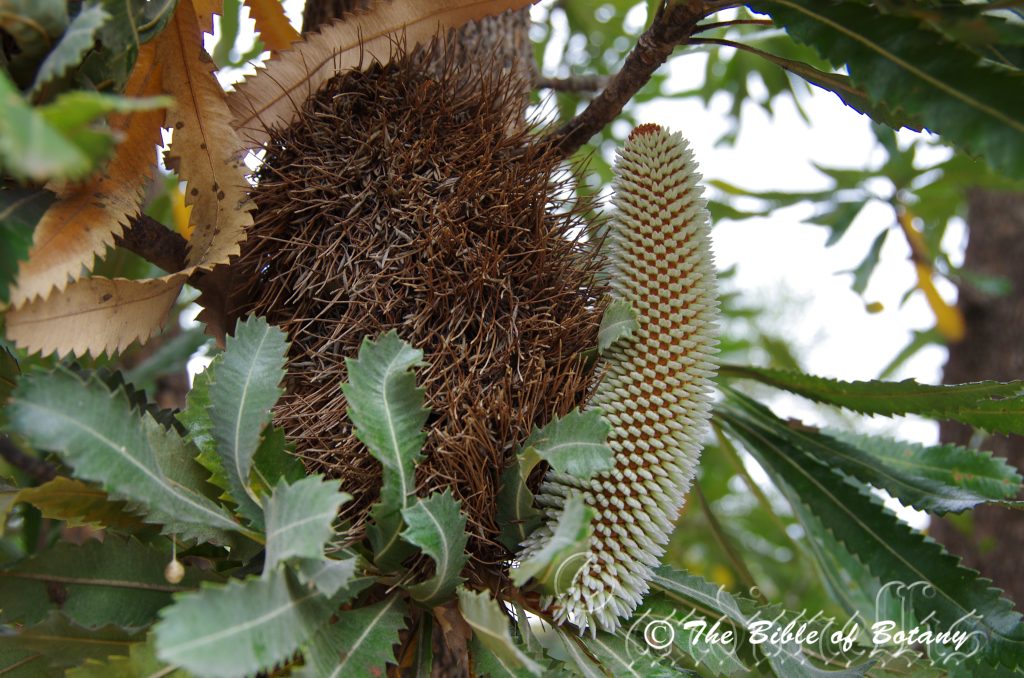
Sunnybank Qld.
Banksia plagiocarpa
Classification:
Class: Eudicots
Order: Proteales
Family: Proteaceae
Genus: Is named in honour of Sir Joseph Banks; 1743-1820, who was an English Naturalist and patron of botany who travelled with Captain Cook on the Endeavour to explore and study the plants of the east coast of Australia.
Specie: From Plagios/Plagos, which is Ancient Greek for slanting, leaning or oblique to one side and Karpós, which is Ancient Greek for a fruit. It refers to fruits, which are oblique and asymmetrical.
Subspecies:
Common name: Hinchinbrook Banksia.
Distribution:
Banksia plagiocarpa is an endemic species to northern Queensland south from Ingham and Hinchinbrook Islands to Townsville.
https://avh.ala.org.au/occurrences/search?taxa=Banksia+plagiocarpa+#tab_mapView
Habitat Aspect Climate:
Banksia plagiocarpa grows in full sun to dappled shade on a variety of sites including beach fronts, headlands, closed scrub forests or open scrubs. The altitude ranges from 5 meters ASL to 160 meters ASL
The temperatures range from 8 degrees in August to 38 degrees in January.
The rainfall is from lows of 900mm to an average of 2400mm.
Soil Requirements:
Banksia plagiocarpa prefers deep, sandy loams, light fatty clays to medium clays. The soils are usually derived from decomposed sandstones or granites. The soil’s pH ranges from 5pH to 6.5pH. It does not tolerate water logged soils. None saline soils to moderately saline soils are tolerated as are salt laden winds.
Height & Spread:
Wild Plants:4m to 5m by 3m to 4m
Characteristics:
Banksia plagiocarpa is a single trunk tree to multi stemmed shrub. It has a light to deep grey-brown, fissured and hard but corky bark on the trunk and main branches. The smaller stems and branchlets are red-brown and covered in irregularly shaped lenticels. The juvenile branchlets are densely covered in short deep red-burgundy tomentose hair. The stems are 2 or 3 years old before they become glabrous.
Banksia plagiocarpa‘s alternate, lanceolate to narrow obovate leaves measure 90mm to 200mm in length by 8mm to 17mm in width. The petioles measure 5mm to 20mm in length. The bases are cuneate while the apexes are obtuse-truncate with a short mucronate tip. The discolourous laminas are deep sea green and sparsely covered in white tomentose hairs becoming glabrous on the upper laminas while the lower laminas are pale grass-green and covered in short white tomentose hairs. The laminas are twisted, flat to slightly recurved upwards from the mid vein to the margins. The mid vein is strongly prominent on the lower lamina and is pale yellow while it is distinctly visible on the upper lamina and is pastel green. The leaf margins are usually obtusely serrated but can be entire. The new shoots are a brownish-green and densely covered with short deep red-burgundy to rusty-orange tomentose hairs.
The conflorescences of Banksia plagiocarpa is cylindrical and measures 80mm to 150mm in length by 54mm to 60mm in diameter and are on special side shoots. The involucral bracts are thick and densely covered in rusty red persistent tomentose hairs. The flowers are pastel blue-grey turning mauve before the style emerges while the limbs are pale pink-brown in upper half and turning dull yellow when open fully expanded. The perianths measure 17mm to 20mm in length. The limb measures 4mm to 5mm in length. They are appressed and densely covered in pubescent hairs externally and are glabrous internally.
The glabrous pistil is straight or gently curved and measures 26mm to 28mm length. The conical pollen presenter measures 0.6mm to 1mm in length and is slightly thicker than style. The old flowers are caduceus on the developing cone.
The 10 to 60 follicles are narrowing elliptic and measure 12mm to 16mm in length by 5mm to 10mm in height and 5mm to 8mmin width. The valves are obliquely triangular to obtuse. They are glabrous to densely covered in grey tomentose.
The seeds are obovate and measure 15mm to 17mm in length including the wing. The actual seeds are flattened, obovate and slightly rugose and measure 8mm to 9mm in length by 3mm to 4mm in width. Flowering occurs from February to September.
Banksia plagiocarpa‘s cones measure 120mm to 60mm long by 40mm to 50mm wide. The 20 to 75 obliquely triangular follicles point towards the apex. Both the upper and lower lips are rounded and measure 12mm to 16mm in length by 4mm to 10mm in height. Cones remain on the bushes until fire releases them or the parent plant or branch dies.
Wildlife:
Banksia plagiocarpa is attractive to various species of honeyeaters. These include the yellow face and Lewins as well as wattle birds and Lorikeets.
Cultivation:
Banksia plagiocarpa is another very interesting and beautiful medium growing Banksia that is ideal for well drained sites on all types of soil. Three to five plants planted close together at random on raised garden beds make great features.
Cultivated plants will reach their full potential of 2 meters to 2.5 meters high by 2 meters to 2.5 in diameter. It should be more widely grown with in sub-tropical and temperate areas of Australia and tried at least as far south as Melbourne in frost free areas or where only light frosts occur.
It is ideal for bush settings, rockeries and bird features especially when grouped with other plants like Ceropetalum gummiferum and small Grevillea specie. This is especially the case when mixed with other smaller fine leaf plants with bright fine pale green foliage. They must be grown in full sunlight and do not crowd them or they will drop their leaves and look rather unkempt.
To induce more flowering and stem growth prune the plants immediately after flowering. The plants can be pruned back down to the lignotuber or burnt every 3 to 5 years once established. This stimulates the plants into active growth. After pruning or burning soak the ground well and fertilize with fish emulsion and liquid sea weed. Repeat the process a week later and you will be assured of a quick response and excellent flowering the following season.
The nectar laden flowers attract a myriad of honeyeaters especially at this time of the year when little else is around in February through to July.
It will reach its full potential of in just 5 or 6 years and will continue to grow slowly thereafter. Flowers commence from the fourth or fifth year.
This Banksia has been used in Brisbane as a street tree and looks at home lining the streets. The unopened flowers also look particularly good in flower arrangements.
Propagation:
Seeds:
Banksia plagiocarpa seeds can be removed easily by placing the cones seeds can be removed easily by placing the cones in a brown paper bag and leaving them in the car for 7 to 10 days. Another method is to pop the cones in the oven after the evening meal has been prepared. Turn the oven off and place the seeds inside while the oven is still hot. The cones will open up after a day or two. Shake to remove the seeds or pull them out with tweezers.
Sow fresh seed directly into a seed raising mix in early spring covering them with 5mm of the mix. Keep moist not wet. When the seedlings are 25mm to 40mm tall, prick them out and plant them into 50mm native tubes using a good organic mix.
Once the seedlings reach 150mm to 200mm in height plant them out into their permanent position. Mass plantings can be achieved by spacing the plants at 3 meter to 4 meter centers.
Fertilize using Seaweed or fish emulsion on an alternate basis. Fertilize every two months until the plants are established then twice annually in early September or March to maintain health, vitality and better flowering and better quality fruit. Do not use synthetic fertilizers on Banksia specie as they usually contain high levels of phosphorous and calcium which are toxic to most Proteacea.
Further Comments from Readers:
“Hi reader, it seems you use The Bible of Botany a lot. That’s great as we have great pleasure in bringing it to you! It’s a little awkward for us to ask, but our first aim is to purchase land approximately 1,600 hectares to link several parcels of N.P. into one at The Pinnacles NSW Australia, but we need your help. We’re not salespeople. We’re amateur botanists who have dedicated over 30 years to saving the environment in a practical way. We depend on donations to reach our goal. If you donate just $5, the price of your coffee this Sunday, We can help to keep the planet alive in a real way and continue to bring you regular updates and features on Australian plants all in one Botanical Bible. Any support is greatly appreciated. Thank you.”
In the spirit of reconciliation we acknowledge the Bundjalung, Gumbaynggirr and Yaegl and all aboriginal nations throughout Australia and their connections to land, sea and community. We pay our respect to their Elders past, present and future for the pleasures we have gained.
Banksia praemorsa
Classification:
Class: Eudicots
Order: Proteales
Family: Proteaceae
Genus: Is named in honour of Sir Joseph Banks; 1743-1820, who was an English Naturalist and patron of botany who travelled with Captain Cook on the Endeavour to explore and study the plants of the east coast of Australia.
Specie: From Prae, which is Latin for before or in front of and Morsus, which is Latin for fastening. It refers to leaves, which look as though they have been nibbled on as a small morsel.
Subspecies:
Common name: Cut Leaf Banksia.
Distribution:
Banksia praemorsa is endemic to the south west corner of Western Australia between Albany in the west and Waychinicup National Park and Bald Island in the east with an outlying population near Bremer Bay.
https://avh.ala.org.au/occurrences/search?taxa=Banksia+praemorsa+#tab_mapView
Habitat Aspect Climate:
Banksia praemorsa grows in full sun. It grows in open woodlands, sclerophyll forests on flat coastal plains immediately behind the frontal dunes or back dunes. The altitude ranges from 5 meters ASL to 40 meters ASL
The temperatures range from 3 degrees in August to 36 degrees in January.
The rainfall is from lows of 400mm to an average of 700mm.
Soil Requirements:
Banksia praemorsa prefers deep, coarse sands, fine sands to sandy loams. The soils are usually derived accumulated peaty beach sands. The soil’s pH ranges from 5pH to 7pH. It does not tolerate water logged soils. None saline soils to moderately saline soils are tolerated as are salt laden winds.
Height & Spread:
Wild Plants:3m to 4m by 1.5m to 3m
Characteristics:
Banksia praemorsa is a multi-stemmed open shrub or small tree that has many stems arising from a central short trunk. It has a mid-grey to deep grey glabrous trunk. The branches are rough flaky and deep red-brown. The juvenile branchlets are silvery grey and densely covered in short fawn to yellow-brown tomentose hair. The plants do not form a lignotuber and are fire sensitive.
Banksia praemorsa‘s scattered leaves can be alternate or in loose whirls. The oblanceolate leaves measure 30mm to 65mm in length by 10mm to 30mm in width. The petioles measure 5mm to 12mm in length. The bases are cuneata while the apexes are truncate with a short mucronate tip or a blunt mucronate tip. The discolourous laminas are deep sea-green to mid blue-green and glabrous on the upper laminas while the lower laminas are pale green and glabrous. The mid vein is strongly prominent on the lower lamina and is visible above being a paler shade of the upper lamina. The leaf margins are toothed. Juvenile leaves are fawn to pink and densely covered with short fawn to yellow fawn tomentose hairs.
The conflorescences of Banksia praemorsa are cylindrical and measure 180mm to 350mm in length by 70mm to 100mm in diameter and are born terminally or on special short branchlets along the older branches. The perianths and styles vary greatly in colour from are red-maroons pinks, burgundies and really a bright pure golden yellow. Where the flowers are inside the trees the pink and red forms are green-pink. The pollen receivers are yellow on the yellow form otherwise vary from white, cream, yellow green or grey and most tones in between. The styles open from the base to the apex. The perianth’s style curves slightly towards the apex and remains persistent for a long period turning to a dirty yellow or grey after fertilization. The perianth measures 20mm to 35mm in length. Flowering occurs from July to October.
Banksia praemorsa‘s cones measure 260mm to 360mm in length by 75mm to 100mm in width. The 8 to 30 follicles are slightly inclined towards the apexes. They are flattened on the lower lip while the upper lip is semicircular and measure 18mm to 20mm in length by 7mm to 10mm in width and 6mm to 9mm in height. Cones remain on the bushes until fire releases them, the parent plant or branch dies.
The seeds are black, surrounded by a wing and measure 20mm to 22mm in diameter while the seed measures 10mm to 100mm long and 6mm to 8 mm wide.
Wildlife:
Banksia praemorsa attracts all types of honey eaters that frequent coastal areas.
Cultivation:
Banksia praemorsa is another very interesting and beautiful medium growing Banksia that is ideal for well drained sites. They are most suited to small gardens in temperate and semi-arid zones. In cultivation the plants will grow 5 meters to 5.5 meters tall by 2 meters to 2.5 meters in diameter.
Be careful when using this small tree as the appearance is that of a dwarfed large tree. The best suggestion is to use other small fine leaf small shrubs together. This will give the impression when correctly done of a garden that looks a lot bigger than what it really is. Planted in close proximity to low set homes adds an appealing attraction that warrants further investigation but the same plants adjacent to high set homes really look grotesque and out of place.
Three to five plants planted close together at random spacings on raised garden beds make great features especially if the flower colours are different. They have an open habit which makes them ideal for planting over smaller fine leaf plants with bright green foliage. It can be used to good effect with mixed coloured annuals below for a desert scene or with prostrate Grevillea species for a bush garden adding height and width to the garden.
An entirely different scene can be mastered by using rocks and logs with a few strap leaf plants like the smaller Lomandra species, dwarf forms of Anigozanthos or taller forms of Dampier species like Dampier stricta. Such a scene would require discipline, sparse plantings with the features being the Banksias and rocks, logs or an old cart wheel. The other plants are to break the monotony and give different colour tones throughout the year.
The very large nectar laden flowers attract a myriad of honeyeaters throughout winter and spring.
It will reach its full potential of in just 5 or 6 years and will continue to grow slowly thereafter. Flowering commences from the third year.
The unopened or half open flowers look particularly good in flower arrangements.
Propagation:
Seeds:
Banksia praemorsa seeds can be removed easily by placing the cones seeds can be removed easily by placing the cones in a brown paper bag and leaving them in the car for 7 to 10 days. Another method is to pop the cones in the oven after the evening meal has been prepared. Turn the oven off and place the seeds inside while the oven is still hot. The cones will open up after a day or two. Shake to remove the seeds or pull them out with tweezers.
Sow fresh seed directly into a seed raising mix in early spring covering them with 5mm of the mix. Keep moist not wet. When the seedlings are 25mm to 40mm tall, prick them out and plant them into 50mm native tubes using a good organic mix.
Once the seedlings reach 150mm to 200mm in height plant them out into their permanent position. Mass plantings can be achieved by spacing the plants at 1.5 meters to 2 meter centers.
Fertilize using Seaweed or fish emulsion on an alternate basis. Fertilize every two months until the plants are established then twice annually in early September or March to maintain better health, vitality and flowering.
Do not use synthetic fertilizers on Banksia specie as they usually contain high levels of phosphorous and calcium which are toxic to most Proteacea.
Further Comments from Readers:
“Hi reader, it seems you use The Bible of Botany a lot. That’s great as we have great pleasure in bringing it to you! It’s a little awkward for us to ask, but our first aim is to purchase land approximately 1,600 hectares to link several parcels of N.P. into one at The Pinnacles NSW Australia, but we need your help. We’re not salespeople. We’re amateur botanists who have dedicated over 30 years to saving the environment in a practical way. We depend on donations to reach our goal. If you donate just $5, the price of your coffee this Sunday, We can help to keep the planet alive in a real way and continue to bring you regular updates and features on Australian plants all in one Botanical Bible. Any support is greatly appreciated. Thank you.”
In the spirit of reconciliation we acknowledge the Bundjalung, Gumbaynggirr and Yaegl and all aboriginal nations throughout Australia and their connections to land, sea and community. We pay our respect to their Elders past, present and future for the pleasures we have gained.
Banksia repens
Classification:
Class: Eudicots
Order: Proteales
Family: Proteaceae
Genus: Is named in honour of Sir Joseph Banks; 1743-1820, who was an English Naturalist and patron of botany who travelled with Captain Cook on the Endeavour to explore and study the plants of the east coast of Australia.
Specie: From Repens, which is Latin for creeping. It refers to plants, which have a habit of creeping along the ground’s surface.
Subspecies:
Common name: Prostrate Banksia or Creeping Banksia.
Distribution:
Banksia repens is an endemic species to the south west corner of Western Australia between Albany in the west and Cape Arid National Park in the east.
https://avh.ala.org.au/occurrences/search?taxa=Banksia+repens+#tab_mapView
Habitat Aspect Climate:
Banksia repens grows in full sun. It grows in in open woodlands, sclerophyll forests plains or undulating terrain immediately behind the back dunes. The altitude ranges from 5 meters ASL to 90 meters ASL.
The temperatures range from 3 degrees in August to 39 degrees in January.
The rainfall is from lows of 260mm to an average of 960mm.
Soil Requirements:
Banksia repens prefers deep, grey, cream or white, coarse sands, fine sands, sandy loams to light fatty clays. The soils are usually derived from accumulated peaty beach sands or decomposed granites or sandstones. The soil’s pH ranges from 4.5pH to 6.5pH. It does not tolerate water logged soils. None saline soils to moderately saline soils are tolerated salt laden winds.
Height & Spread:
Wild Plants: 0.3m to 0.4m by 2m to 3m
Characteristics:
Banksia repens is a multi-stemmed plant with horizontal branches coming off a central lignotuber. Often the branches grow just beneath the surface and give an eerie feeling with the flowers and leaves just popping up out of the sand. It also has a lignotuber as a deuense against fire. It has a deep grey-brown velvety bark on all the branches and branchlets.
Banksia repens‘s leaves are scattered along the stems at irregular distances. The oblong leaves are pinnatipartite and measure 200mm to 400mm in length by 30mm to 40mm in width. The base is hastate or broad cuneate while the apex is irregularly shaped. The lobes are deeply and irregularly hastate at the base while the apex is irregularly shaped. The discolourous laminas are deep green and sparsely covered in short white to fawn tomentose hairs on the upper lamina while the lower lamina is paler and densely covered in short white to golden yellow tomentose hairs. The rachis and mid vein on the lobes are yellow and strongly prominent on the lower lamina and is distinctly visible on the upper lamina being paler than the leaf blade. The lobe margins are irregularly sinuated and measure 10mm to 20mm in length. The petioles measure 30mm to 50mm in length. New shoots are a golden yellow and are densely covered in short yellow tomentose hairs.
The conflorescences of Banksia repens are cylindrical and measure 70mm to 100mm in length by 50mm to 70mm in width and are born terminally or on special short branchlets along the older branches. The perianths and styles are cream, yellow, orange, pink or rarely red. The pollen receiver is creamy yellow to orange with the styles opening from the base to the apex. The perianth style is curved towards the apex and remains persistent for a long period turning to a dirty yellow or grey after fertilization. The perianths measures 28mm to 30mm in length. Flowering occurs from September to November.
The cones of Banksia repens measure 50mm to 90mm in length by 40mm to 50mm wide. The follicles lips are semicircular and measure 13mm to 16mm in length by 9mm to 12mm in width and 8mm to 13mm in height. The cones remain on the bushes until fire releases them, the parent plant or branch dies.
The seeds roughly deltoid are fawn to brown, woody seeds measure 8mm to 10mm in diameter.
Wildlife:
Banksia repens attracts various specie of honey eaters that frequent coastal areas early in the morning and at dusk. During the day the flowers are being visited by different specie of ants.
Cultivation:
Banksia repens is a classically interesting and beautiful slow growing Banksia that is ideal for sandy rockeries. This Banksia must be grown in very sandy soils or at worst sandy loams as the horizontal branches often grow beneath the surface with only the leaves and flowers being on display. Give them plenty of room especially if mass planting as I have seen them grow to 3.5 meters in cultivation when grown in the open. This is a problem, as it is difficult to know exactly where the plant actually is until it flowers or produces new leaves.
Three to five plants planted close together or scatter them throughout the rockery, raised garden beds or amongst boulders make great features. This is especially the case when mixed with other small annuals or prostrate ground covers with small fine leaves to contrast the long deep grey-greens here. Because of their size and leaf shape most small plants make a pleasing contrast.
It will reach its full potential of 2 meters in just 3 or 4 years and will continue to grow slowly thereafter. In cultivation they usually grow from 300mm to 400mm in height by 2.5mm in diameter.
It is at its best when used adjacent to small areas of bush close to paths or the house so their magnificent flowers can be viewed regularly. It
is great in medium size rockeries as the main ground cover. Here it can be planted in small groups of 2 or 3 or as a standalone plant to create a harsh barren look with other arid plants. If it is surrounded by other low growing plants with fine foliage and red or white flowers they will dominate at the center giving an expansive look to the bed especially when they are in flower. This is one plant that benefits highly from being planted in scattered clumps.
Three or more scattered back from a bend with small shrubs between will become a very strong focal point when in flower highlighting the shrubs at the same time. They will gain a lot of attention whether you are coming or going because of the fresh clean look of the foliage even in the driest of times. To the rear, use fine leaf taller plants. Plants with white, deep red or deep purple flowers can be used in both the midground and background. This will lead the viewer’s eyes directly to the yellow flowers and rusty tomentose buds and branchlets for a longer period in the foreground.
Ensure that the whole plant or at least most of it is on display from most sections of the garden as the flowers are a real bonus.
When it is in flower these plants will catch your attention and the viewer will be transfixed on the display rather than watching the path.
Flowers appear from the third year from seed. The nectar laden flowers attract a myriad of honeyeaters despite the fact that the flowers are at ground level.
Propagation:
Seeds:
Banksia repens seeds can be removed easily by placing the cones seeds can be removed easily by placing the cones in a brown paper bag and leaving them in the car for 7 to 10 days. Another method is to pop the cones in the oven after the evening meal has been prepared. Turn the oven off and place the seeds inside while the oven is still hot. The cones will open up after a day or two. Shake to remove the seeds or pull them out with tweezers.
Sow fresh seed directly into a seed raising mix in early spring covering them with 5mm of the mix. Keep moist not wet. When the seedlings are 25mm to 40mm tall, prick them out and plant them into 50mm native tubes using a good organic mix.
Once the seedlings reach 150mm to 200mm in height plant them out into their permanent position. Mass plantings can be achieved by spacing the plants at 3 meter to 3.5 meter centers.
Fertilize using Seaweed or fish emulsion on an alternate basis. Fertilize every two months until the plants are established then twice annually in early September or March to maintain better health, vitality and flowering.
Do not use synthetic fertilizers on Banksia specie as they usually contain high levels of phosphorous and calcium which are toxic to most Proteaceae.
Further Comments from Readers:
“Hi reader, it seems you use The Bible of Botany a lot. That’s great as we have great pleasure in bringing it to you! It’s a little awkward for us to ask, but our first aim is to purchase land approximately 1,600 hectares to link several parcels of N.P. into one at The Pinnacles NSW Australia, but we need your help. We’re not salespeople. We’re amateur botanists who have dedicated over 30 years to saving the environment in a practical way. We depend on donations to reach our goal. If you donate just $5, the price of your coffee this Sunday, We can help to keep the planet alive in a real way and continue to bring you regular updates and features on Australian plants all in one Botanical Bible. Any support is greatly appreciated. Thank you.”
In the spirit of reconciliation we acknowledge the Bundjalung, Gumbaynggirr and Yaegl and all aboriginal nations throughout Australia and their connections to land, sea and community. We pay our respect to their Elders past, present and future for the pleasures we have gained.
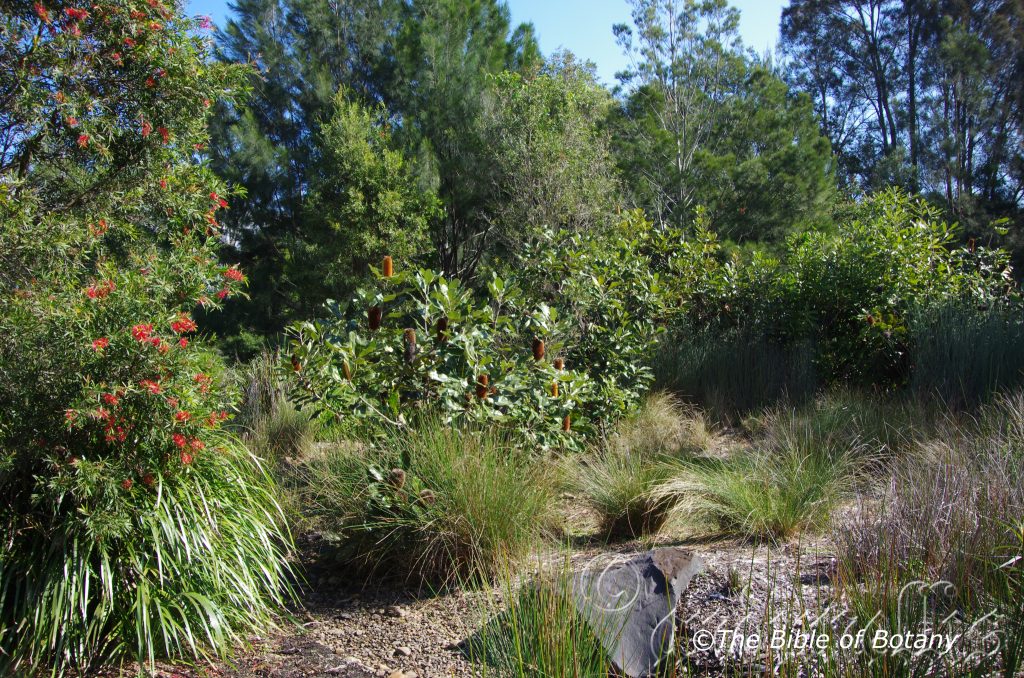
Rosser Botanic Gardens Gold Coast Qld.

Capalaba Qld.

Capalaba Qld.

Capalaba Qld.
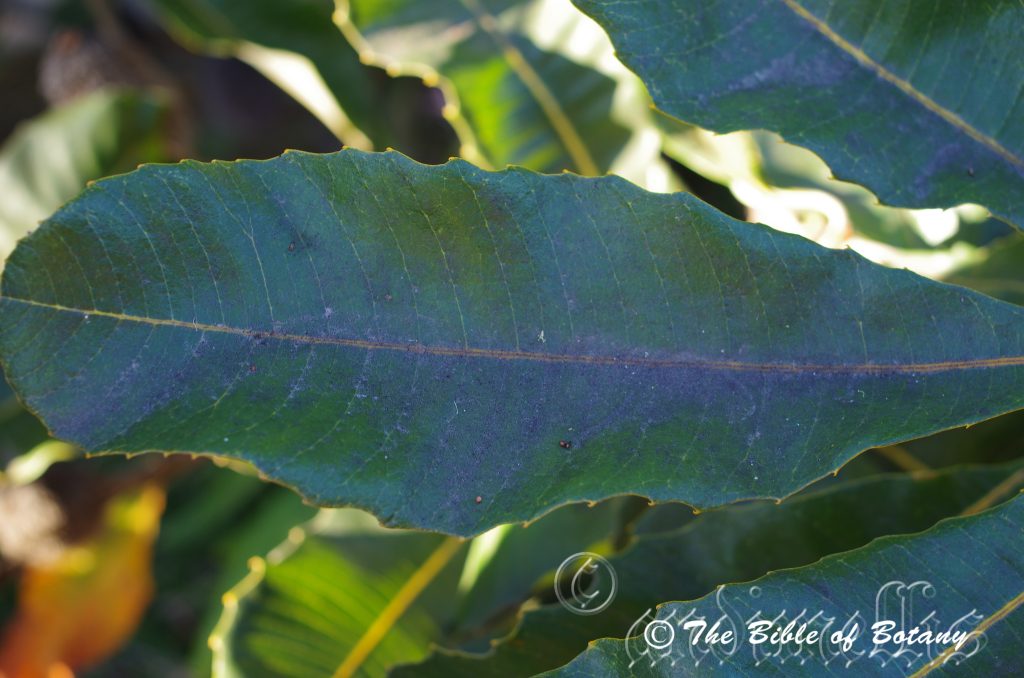
Capalaba Qld.
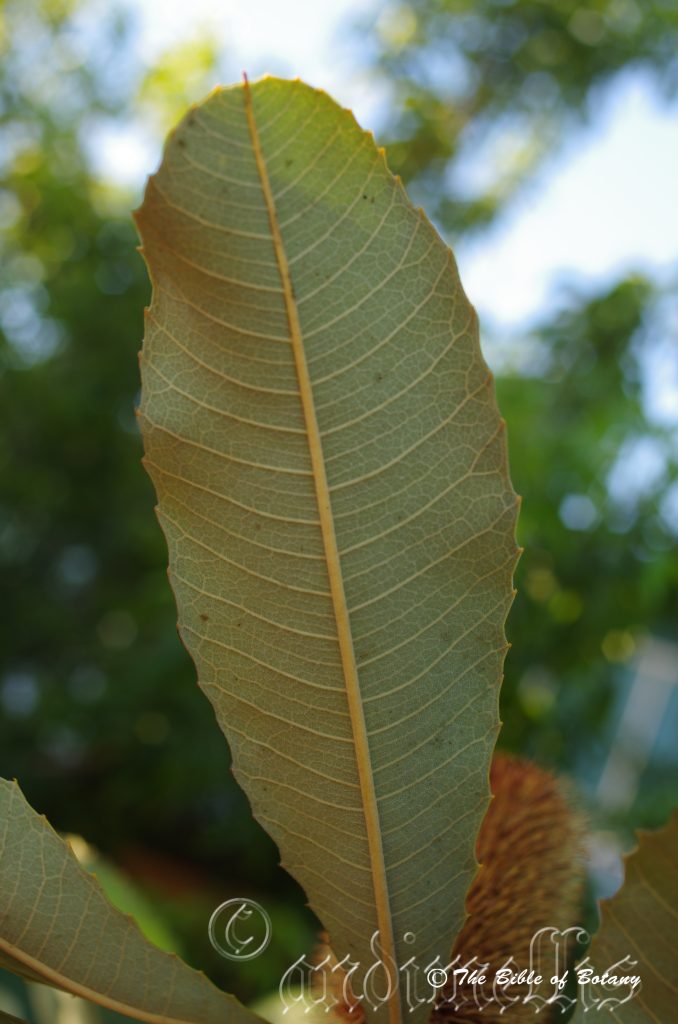
Capalaba Qld.
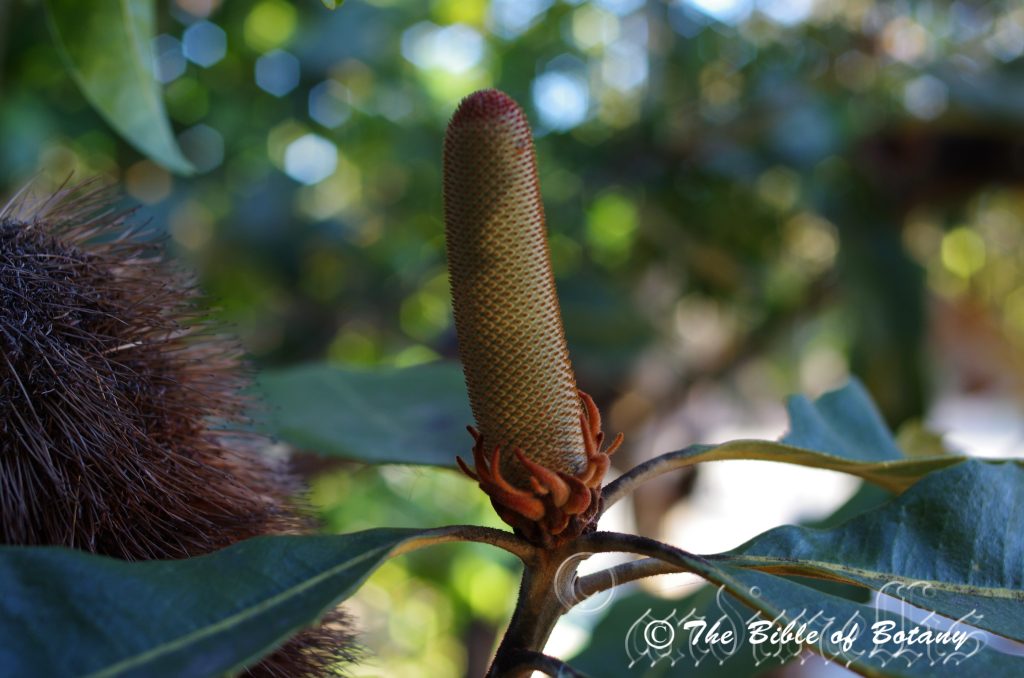
Capalaba Qld.

Lismore Botanic Gardens NSW

Lismore Botanic Gardens NSW

Lismore Botanic Gardens NSW

Mount Cootha Botanic Gardens Qld.
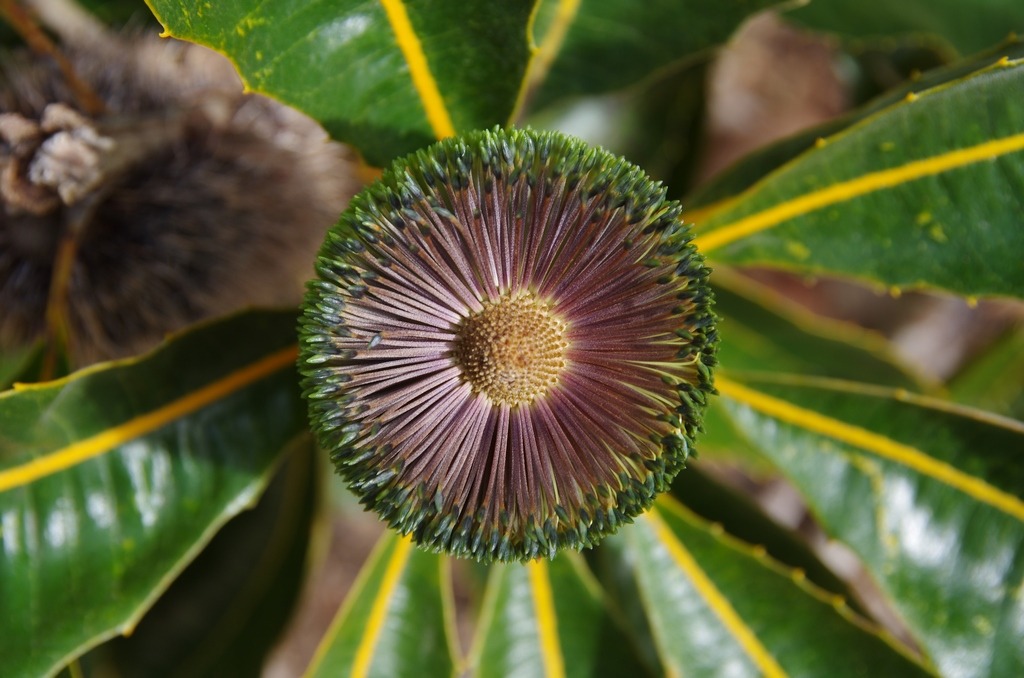
Greening Australia Norman Park Qld.

Greening Australia Norman Park Qld.
Banksia robur
Classification:
Class: Eudicots
Order: Proteales
Family: Proteaceae
Genus: Is named in honour of Sir Joseph Banks; 1743-1820, who was an English Naturalist and patron of botany who travelled with Captain Cook on the Endeavour to explore and study the plants of the east coast of Australia.
Specie: From R?bustum, which is Latin for strong and hard as in Oak. It refers to timbers, trunks, branches or stems which are hard and strong.
Subspecies:
Common name: Green Flowered Banksia.
The Gumbaynggirr Aboriginal language it is known as Wurindaga.
Distribution:
Banksia robur is widespread specie that is found east of the Great Dividing Range close to the coast south from cape Melville in far north Queensland to mount Murray in coastal New South Wales.
https://avh.ala.org.au/occurrences/search?taxa=Banksia+robur+#tab_mapView
Habitat Aspect Climate:
Banksia robur prefers full sun to dappled shade. It grows in in a wide variety of aspects from coastal wallums, swamps, shallow depressions, ephemeral pools, and other moisture retentive soils. It can be found growing in woodlands, open forests, sclerophyll forests or heaths. The altitude ranges from 5 meters ASL to 1050 meters ASL
The temperatures range from minus 2 degrees in July to 37 degrees in February.
The rainfall is from lows of 450mm to an average of 1900mm.
Soil Requirements:
Banksia robur prefers deep, coarse sands, fine sands, sandy loams, light fatty clays, medium clays or light silts to heavy silts. The soils are usually derived from decomposed sandstones granites, brown basalts, black basalts, shales, metamorphic rocks, alluvial deposits or accumulated peaty beach sands. The soil’s pH ranges from 4.5pH to 7.5pH. It tolerates water logged soils and seasonal high water tables. None saline soils to moderately saline soils are tolerated as are salt laden winds are tolerated.
Height & Spread:
Wild Plants:1.5m to 2m by 1.5m to 3m
Characteristics:
Banksia robur is a shrub that has many stems arising from a central lignotuber. It has a light to deep red-brown scurfy or slightly rough bark on the main stems. The juvenile branchlets are densely covered in deep red-purple to rusty red tomentose hairs.
Banksia robur‘s alternate, obovate to broad elliptical leaves measure 120mm to 300mm in length by 50mm to 90mm in width. The base is cuneate while the apex is truncate to emarginated or obtuse with a short mucronate tip. The discolourous laminas are deep sea green on the upper lamina while the lower lamina is silvery white and sparsely covered in short white tomentose hairs. The mid vein is covered in short rusty hirtellous hairs. The mid vein is prominent below and distinctly yellow or creamy green above. The leaf margins are entire or irregularly toothed. The petioles measure 15mm to 30mm in length. New shoots are a brownish-green and densely covered with long rusty tomentose hairs.
The conflorescences of Banksia robur are cylindrical and measure 60mm to 150mm in length by 35mm to 80mm in diameter and are born terminally. The perianths and styles are pale creamy green to pale creamy yellow, lime green, deep blue or honey brown. The pollen receiver is pale cream to deep blue green or deep green and the styles open from the base to the apex. The perianth style is straight, persistent and turns a pale cream to a pale yellow after fertilization and drying to a creamy brown and eventually to a grey. The perianth measures 12mm to 25mm in length and are persistent following flowering. Flowering occurs from January to July.
The cones of Banksia robur measure 80mm to 160mm in length by 40mm to 70mm in width. The 6 to 100 follicle lips are semicircular and measure 10mm to 16mm in length by 9mm to 12mm in width and 8mm to 13mm in height. The cones remain on the bushes until fire releases them, the parent plant or branch dies.
The seeds are narrow deltoid are black with a wing and measure 8mm to 10mm in length by 3mm to 4mm in width.
Wildlife:
Banksia robur attracts all the different specie of honeyeaters, which frequent marshlands and wallums. In particular is the New Holland Honeyeater.
Cultivation:
Banksia robur is a beautiful large leaf Banksia with very unusual coloured flowers. It is also unusual in that it is one of the few Banksias that will tolerate wet feet and thrive in very acid soils and partial shade. It is suitable for beach side gardens which have high water tables.
It reaches its full potential of in just 3 years and will continue to grow slowly thereafter. They benefit from being burnt off or a hard cut back at this stage. They will shoot regaining their former size in a season but will become multi stemmed which means more flowers the following season. Flowers appear from the third year. Bushy growth can be induced by continually pruning the plants back to the lignotuber every three years to 5 years.
Use curves and inter plant them with tall fine leaf species of plants from another genus like Melaleucas for interesting foliage contrasts and flowering times. Do not plant trees that flower at the same time as these will clash and the showy flowers of this Banksia will be lost. This will also aid in attracting birds and native insects over a longer period.
This is an ideal Banksia for planting on banks or in a native bush land scene that have drainage problems.
An entirely different scene can be mastered by three to five plants at random spacings on raised or lowered garden beds make great features especially when mixed with fine leaf Melaleuca species. They have a dense compact habit which makes them ideal for planting with Melaleucas and usually flower at different periods during the year.
I have seen this Banksia in a garden, grown in a clump of three as the only plant in the garden bed. Black plastic covered in white pebbles surrounded the shrubs over half way to the boundary fences. Between the pebbles and the fence was a well maintained lawn. With the low set cream colours brick home the large deep green leaves contrasted very powerfully against the white pebbles, green lawn and cream bricks.
Propagation:
Seeds:
Banksia robur seeds can be removed easily by placing the cones seeds can be removed easily by placing the cones in a brown paper bag and leaving them in the car for 7 to 10 days. Another method is to pop the cones in the oven after the evening meal has been prepared. Turn the oven off and place the seeds inside while the oven is still hot. The cones will open up after a day or two. Shake to remove the seeds or pull them out with tweezers.
Sow fresh seed directly into a seed raising mix in early spring covering them with 5mm of the mix. Keep moist not wet. When the seedlings are 25mm to 40mm tall, prick them out and plant them into 50mm native tubes using a good organic mix.
Fertilize using Seaweed or fish emulsion on an alternate basis. Fertilize every two months until the plants are established then twice annually in early September or March to maintain health, vitality and better flowering and better quality fruit. Do not use synthetic fertilizers on Banksia specie as they usually contain high levels of phosphorous and calcium which are toxic to most Proteaceae.
Once the seedlings reach 150mm to 200mm in height plant them out into their permanent position. Mass plantings can be achieved by spacing the plants at 2 meter to 4 meter centers.
Further Comments from Readers:
“Hi reader, it seems you use The Bible of Botany a lot. That’s great as we have great pleasure in bringing it to you! It’s a little awkward for us to ask, but our first aim is to purchase land approximately 1,600 hectares to link several parcels of N.P. into one at The Pinnacles NSW Australia, but we need your help. We’re not salespeople. We’re amateur botanists who have dedicated over 30 years to saving the environment in a practical way. We depend on donations to reach our goal. If you donate just $5, the price of your coffee this Sunday, We can help to keep the planet alive in a real way and continue to bring you regular updates and features on Australian plants all in one Botanical Bible. Any support is greatly appreciated. Thank you.”
In the spirit of reconciliation we acknowledge the Bundjalung, Gumbaynggirr and Yaegl and all aboriginal nations throughout Australia and their connections to land, sea and community. We pay our respect to their Elders past, present and future for the pleasures we have gained.
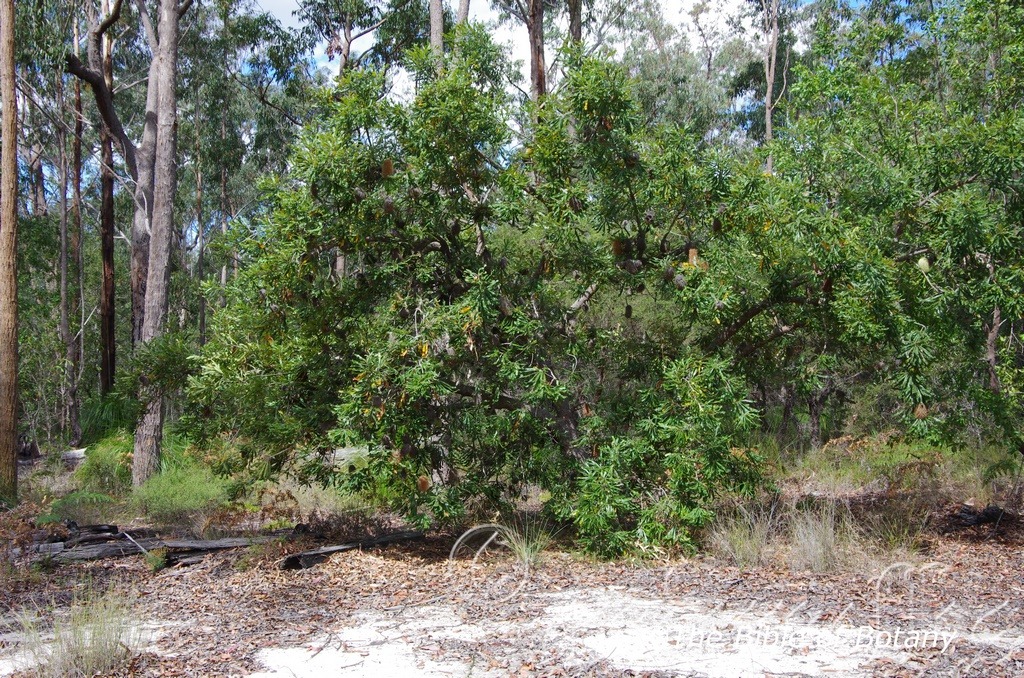
The Pinnacles NSW
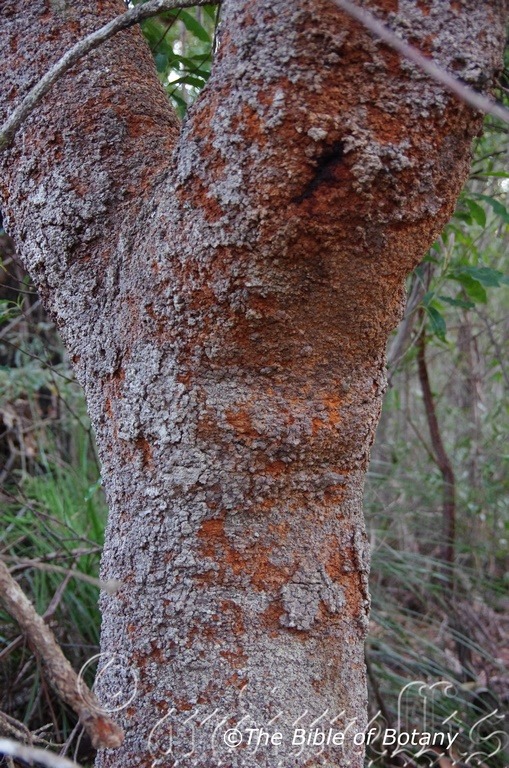
The Pinnacles NSW
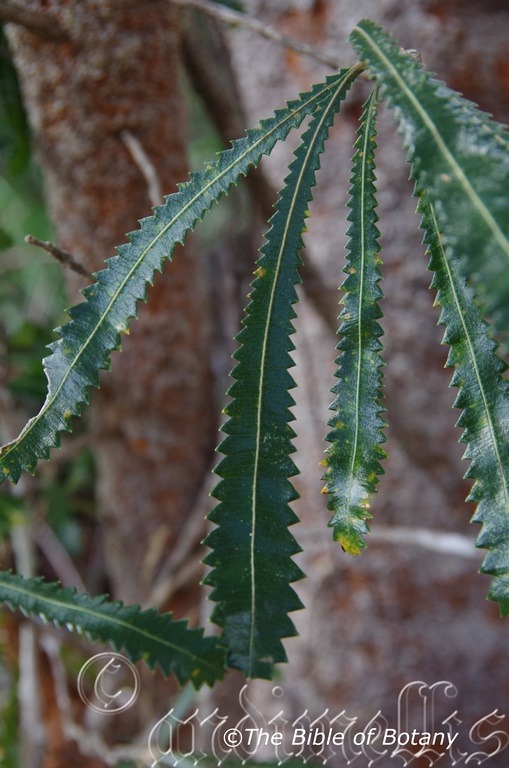
The Pinnacles NSW
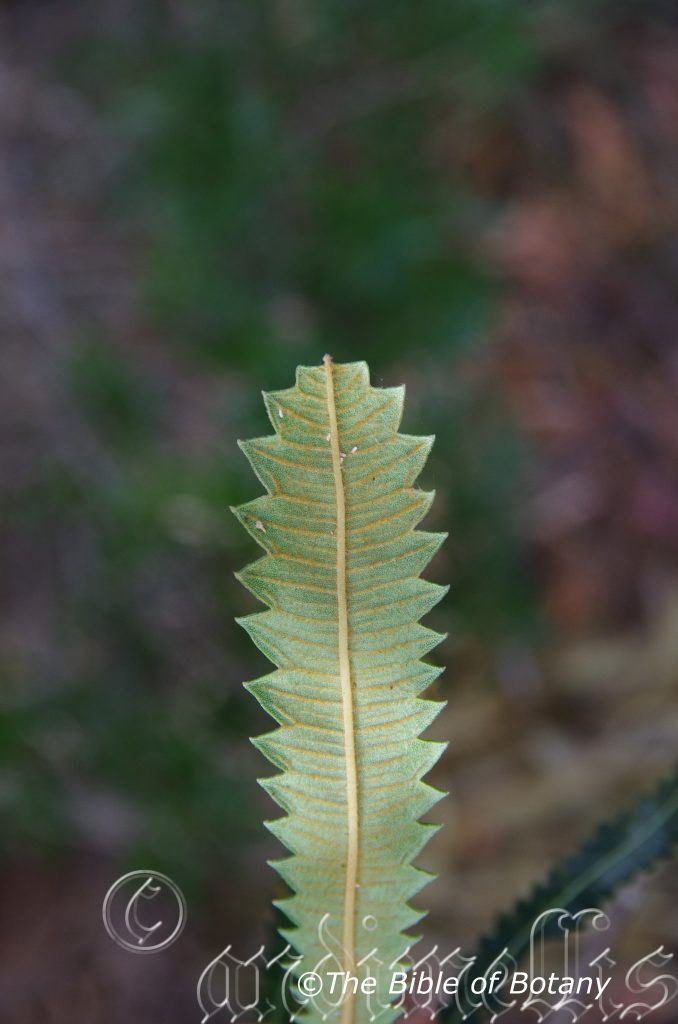
The Pinnacles NSW
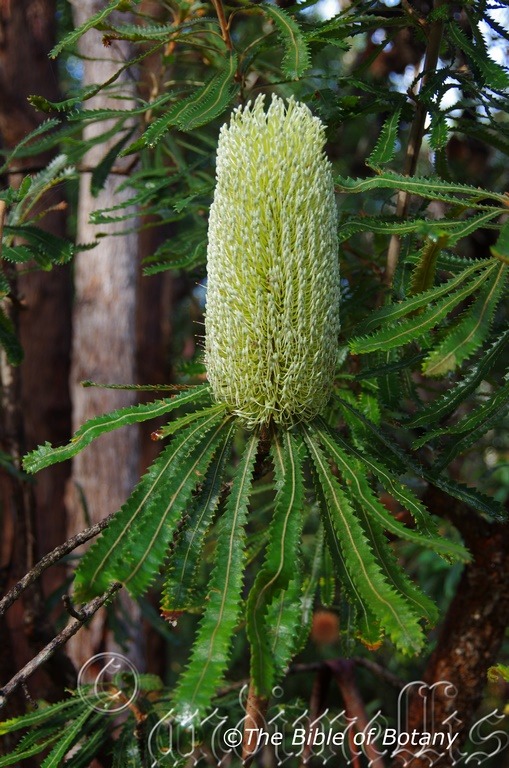
The Pinnacles NSW
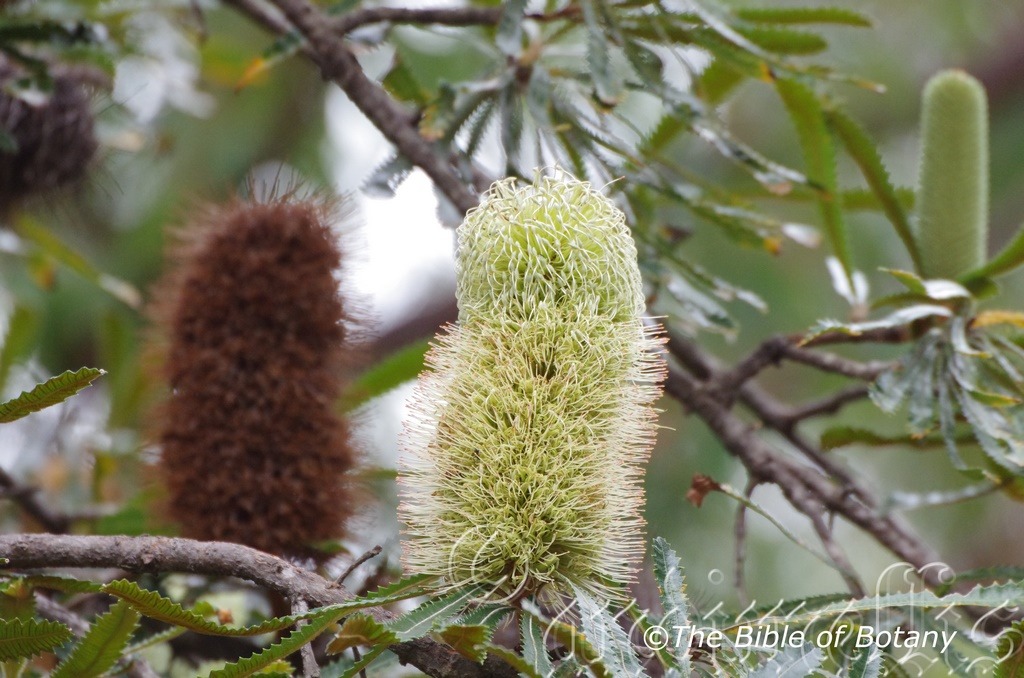
The Pinnacles NSW
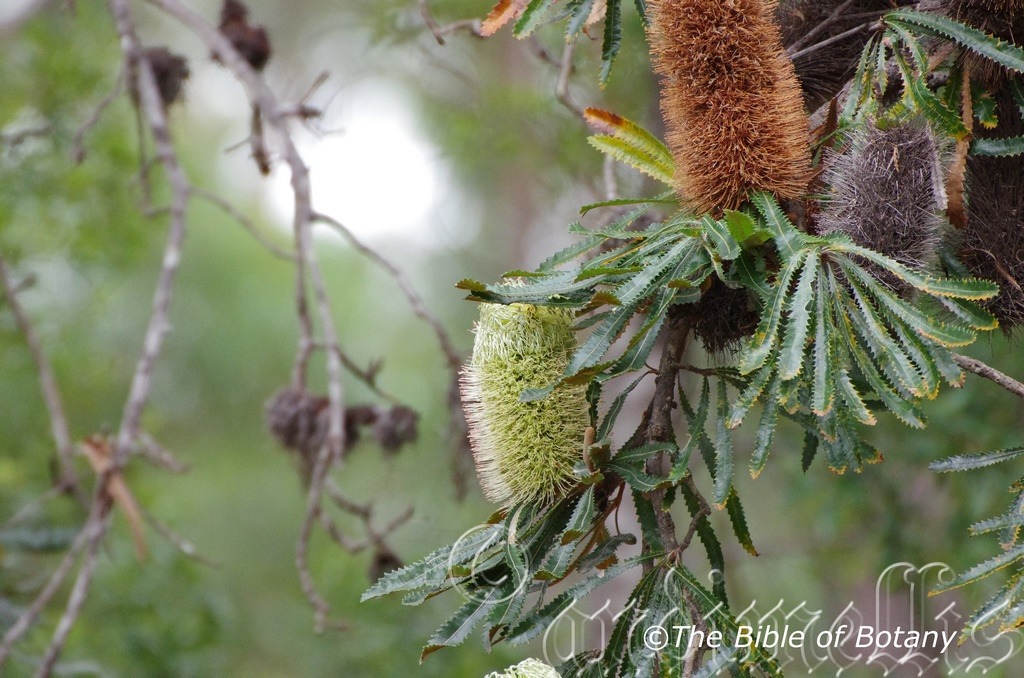
The Pinnacles NSW
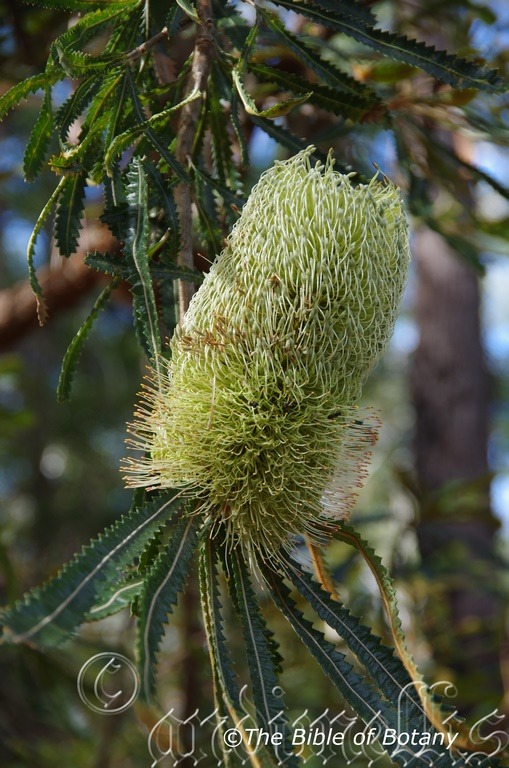
The Pinnacles NSW

The Pinnacles NSW
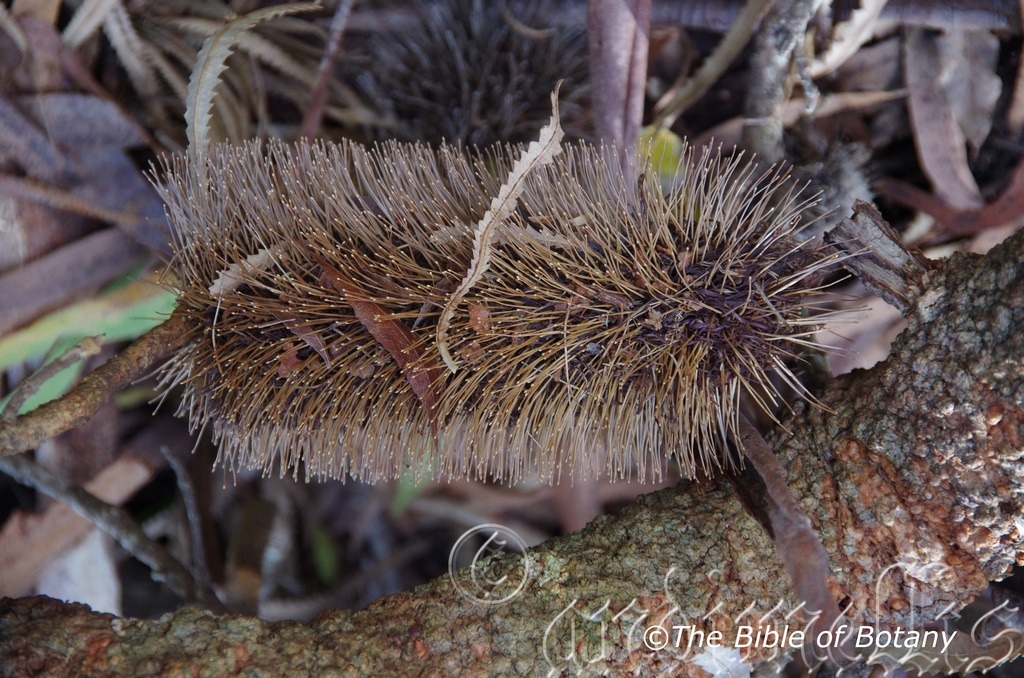
The Pinnacles NSW

The Pinnacles NSW
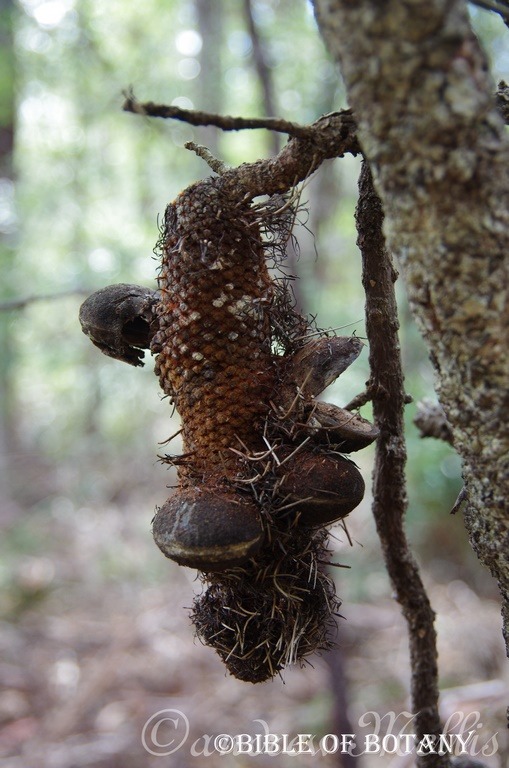
The Pinnacles NSW

The Pinnacles NSW
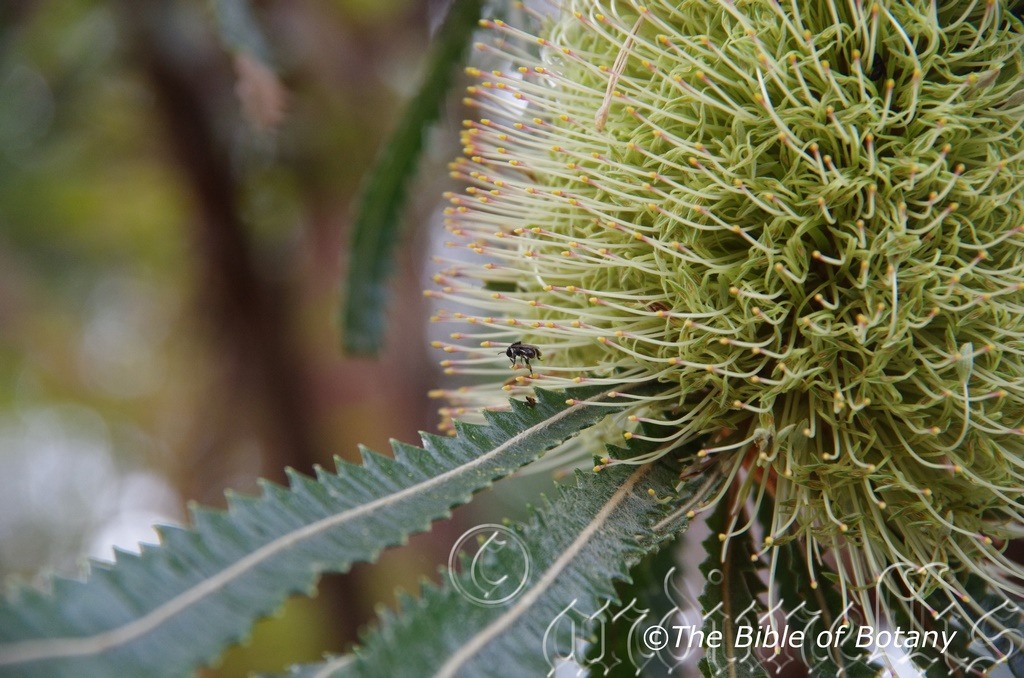
Tetragonula carbonaria native bee The Pinnacles NSW
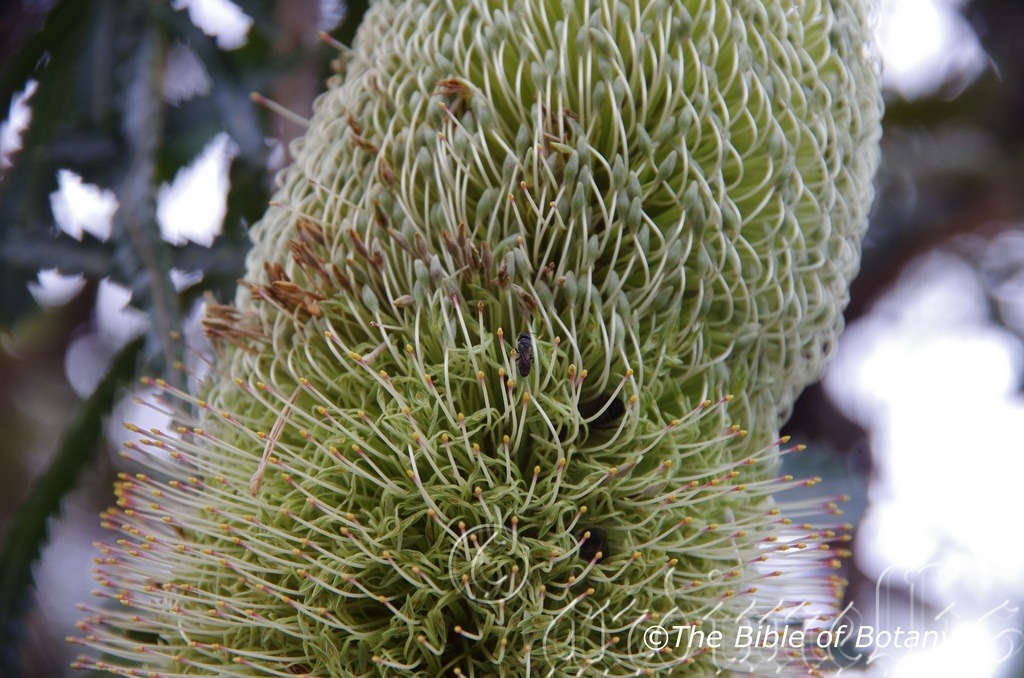
Austroplebeia sp. native bee The Pinnacles NSW
Banksia serrata
Classification:
Class: Eudicots
Order: Proteales
Family: Proteaceae
Genus: Is named in honour of Sir Joseph Banks; 1743-1820, who was an English Naturalist and patron of botany who travelled with Captain Cook on the Endeavour to explore and study the plants of the east coast of Australia.
Specie: From Serra/Serras, which is Latin for the teeth of a saw. It refers to margins, which resemble the cutting edge of a saw.
Common Name: Saw Tooth Banksia or Old Man Banksia.
The Gumbaynggirr Aboriginal language it is known as Wurindaga.
Distribution:
Banksia serrata is found south from Fraser Island and Maryborough in south eastern Queensland to Wilsons Promontory in southern Victoria with a further population to the west on the Grampians. It is found east of the Great Dividing Range to the coast.
There are several disjunct populations in Tasmania including one on Flinders Island and some of the smaller Bass Straight Islands, one in the north west corner on Rocky Cape National Park, Mount Sisters and Cape Deslacs in the south east corner.
https://avh.ala.org.au/occurrences/search?taxa=Banksia+serrata+#tab_mapView
Habitat Aspect Climate:
Banksia serrata grows in full sun to dappled sunlight. It grows in open Eucalyptus forests, open eucalyptus woodland or woodland heaths close to the coast and coastal ranges. The altitude ranges from 2 meters ASL to 180 meters ASL.
The temperatures range from minus 4 degrees in August to 35 degrees in January.
The rainfall is from lows of 400mm to an average of 1750mm.
Soil Requirements:
Banksia serrata prefers deep, coarse sands, fine sands, sandy loams, light fatty clays or at times medium clays or light silts to heavy silts. The soils are usually derived from decomposed sandstones or accumulated peaty beach sands or at times granites, brown basalts, black basalts, shales, metamorphic rocks, alluvial deposits. The soil’s pH ranges from 4.5pH to 7pH. It does not tolerate water logged soils. None saline soils to moderately saline soils are tolerated as are salt laden winds.
Height & Spread:
Wild Plants:3m x 15m to 3m by 8m.
Characteristics:
The grey brown bark of Banksia serrata is strongly lepidote to thickly tessellate. Branches are grey and glabrous. Juvenile branchlets are densely covered in short white and fawn tomentose hairs.
Banksia serrata’s leaves are crowded on the upper apex of the branches before becoming alternate. The narrow oblong or narrow obovate leaves are 50mm to 200mm in length by 15mm to 40mm in width. The base is attenuate while the apex is truncate with a short mucronate point. The margins are strongly toothed and entire on rare occasions. The discolourous laminas are mid to deep green and glabrous on the upper lamina while the lower lamina is white to pale glaucous green and covered in short rusty to fawn tomentose hairs before becoming glabrous. The mid vein is prominent on the lower lamina and visible on the upper lamina. Old leaves are often seen on the trunk where it has grown over the petiole and leaf base. The petiole ranges from 1mm to 3mm in length.
The conflorescences of Banksia serrata are produced from the leaf axils or cauliflorously. The conflorescences measure 75mm to 150mm in length by 30mm to 85mm in width at the base. The perianths and styles measure 20mm to 42mm in length. They are creamy yellow to pale lemon with the style having a slight curve downwards. The stigma is cream to pale creamy lemon. Flowering occurs from early January to September.
The cones of Banksia serrata measure 70mm to 130mm in length. The 10 to 30 follicles are deeply embedded into the cone and are broadly semicircular. They measure 25mm to 35mm in length by 11mm to 16mm in height.
Wildlife:
Banksia serrata are a favourite haunt for all nectar birds because of the copious amounts of nectar it produces the long flowering season and dense canopy which offers additional protection.
Cultivation:
Banksia serrata will grow 8 meters to 12 meters by 5 meters to 7 meters in diameter in the garden giving a wonderful gnarled appearance especially when it is grown in better quality sandy soils or brickies loam type soils. The gnarled appearance is exasperated even further when it is exposed strong winds.
It is quick growing and will flower in its fifth year. Banksia serrata is drought resistant, has a tolerance to both high and low humidity and is tolerant to wide temperature variations. The trees would suit most medium to large gardens. The trees attract a number of birds, possums and gliders that will seek refuge and seek nectar from a guaranteed autumn and winter larder. The plants are becoming more popular in seaside gardens. Like all Proteaceae avoid fertilizers that contain lime and ensure good drainage is available.
Be careful when using this small tree as the appearance is that of a gnarled medium tree. The best suggestion is to use other small fine leaf small shrubs together otherwise the impression when incorrectly done will make the garden look a lot smaller than what it really is. Planted in close proximity to low set homes the tree can add an appealing attraction that warrants further investigation of the garden making the tree look larger and the home look smaller and more homely. The same tree planted adjacent to high set homes really look grotesque and out of place.
One tree planted close on a raised garden bed will make a great feature especially if red flowering plants are surrounding the base. They have an open habit which makes them ideal for planting over smaller fine leaf plants with bright green foliage. They can be used to good effect with mixed coloured annuals below for a desert scene or with prostrate Grevillea species for a bush garden adding height and width to the garden.
Banksia serrata is ideal for bush settings and bird attracting especially if grouped with other smaller Grevilleas like Grevillea banksii in the background and Grevillea rosmarinifolia in the foreground. There compatible with colour is a great asset in establishing the native bush garden.
An entirely different scene can be mastered by using rocks and logs with a few strap leaf plants like the smaller Lomandra species or taller forms of Dampier species like Dampier stricta. Such a scene would require discipline, sparse plantings with the features being the Banksias and rocks, logs or an old cart wheel. The other plants are to break the monotony and give different colour tones throughout the year.
Propagation:
Seeds:
Banksia serrata seeds can be removed easily by placing the cones seeds can be removed easily by placing the cones in a brown paper bag and leaving them in the car for 7 to 10 days. After the evening meal has been prepared, with the oven off and place the seeds inside while the oven is still hot. The cones will open up after a day or two. Shake to remove the seeds or pull them out with tweezers.
Sow fresh seed directly into a seed raising mix. Keep moist not wet. When the seedlings are 25mm to 40mm tall, prick them out and plant them into 50mm native tubes using a good organic mix.
Fertilize using Seaweed or fish emulsion on an alternate basis. Fertilize every two months until the plants are established then twice annually in early September or March to maintain health, vitality and better flowering and better quality fruit. Do not use synthetic fertilizers on Banksias as they usually contain high levels of phosphorous and calcium which are toxic to most Proteaceae.
Once the seedlings reach 150mm to 200mm in height plant them out into their permanent position.
Further Comments from Readers:
“Hi reader, it seems you use The Bible of Botany a lot. That’s great as we have great pleasure in bringing it to you! It’s a little awkward for us to ask, but our first aim is to purchase land approximately 1,600 hectares to link several parcels of N.P. into one at The Pinnacles NSW Australia, but we need your help. We’re not salespeople. We’re amateur botanists who have dedicated over 30 years to saving the environment in a practical way. We depend on donations to reach our goal. If you donate just $5, the price of your coffee this Sunday, We can help to keep the planet alive in a real way and continue to bring you regular updates and features on Australian plants all in one Botanical Bible. Any support is greatly appreciated. Thank you.”
In the spirit of reconciliation we acknowledge the Bundjalung, Gumbaynggirr and Yaegl and all aboriginal nations throughout Australia and their connections to land, sea and community. We pay our respect to their Elders past, present and future for the pleasures we have gained.
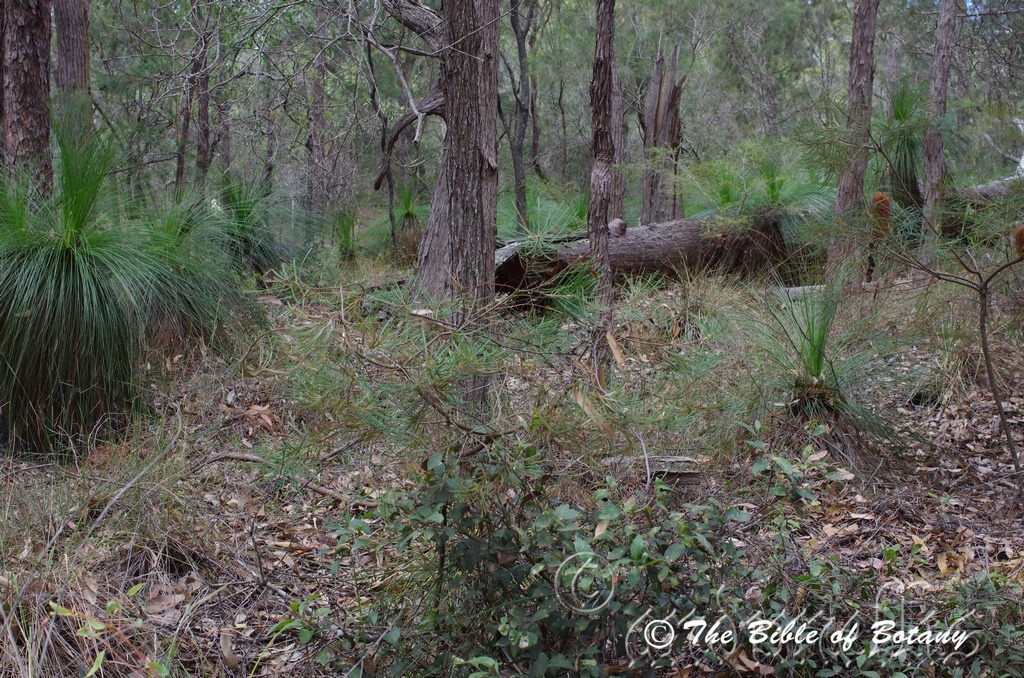
Toohey Forest Qld.

The Pinnacles NSW

The Pinnacles NSW
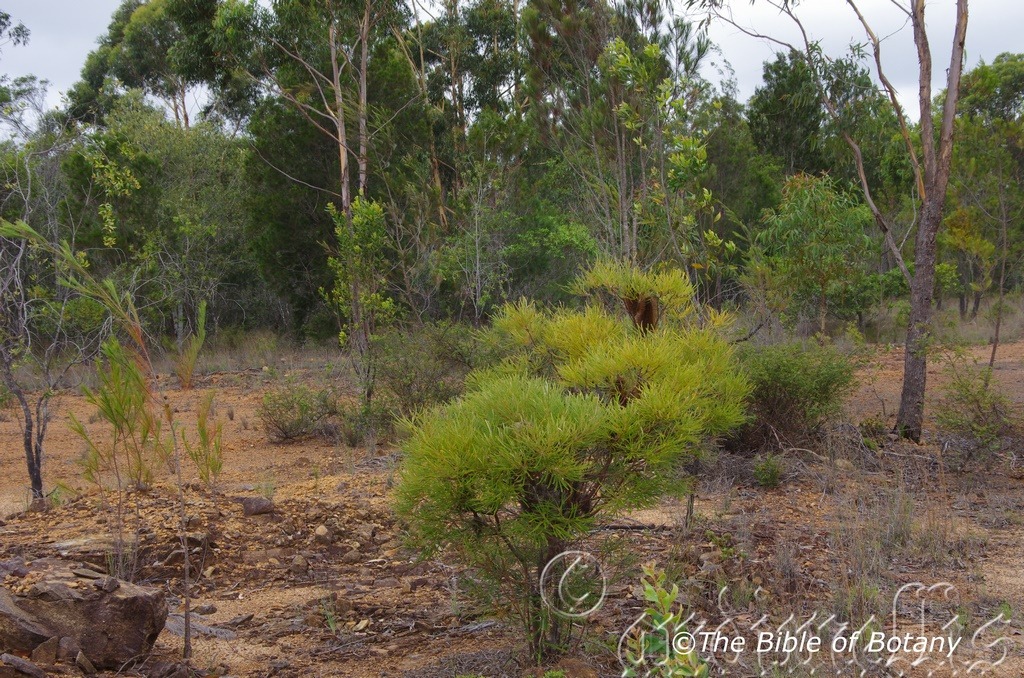
The Pinnacles NSW
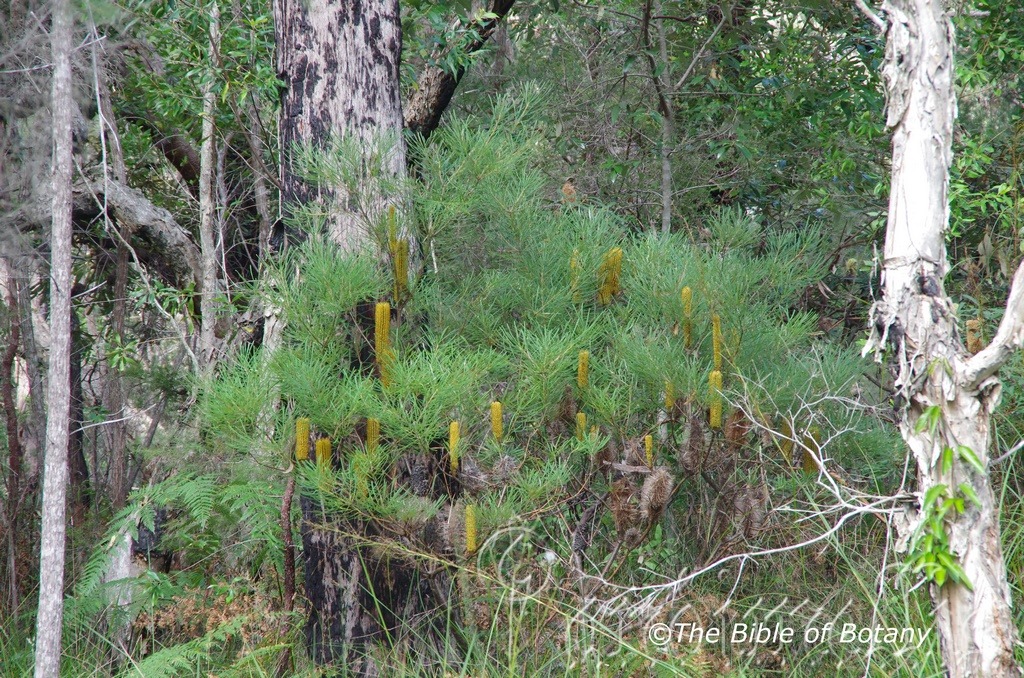
The Pinnacles NSW
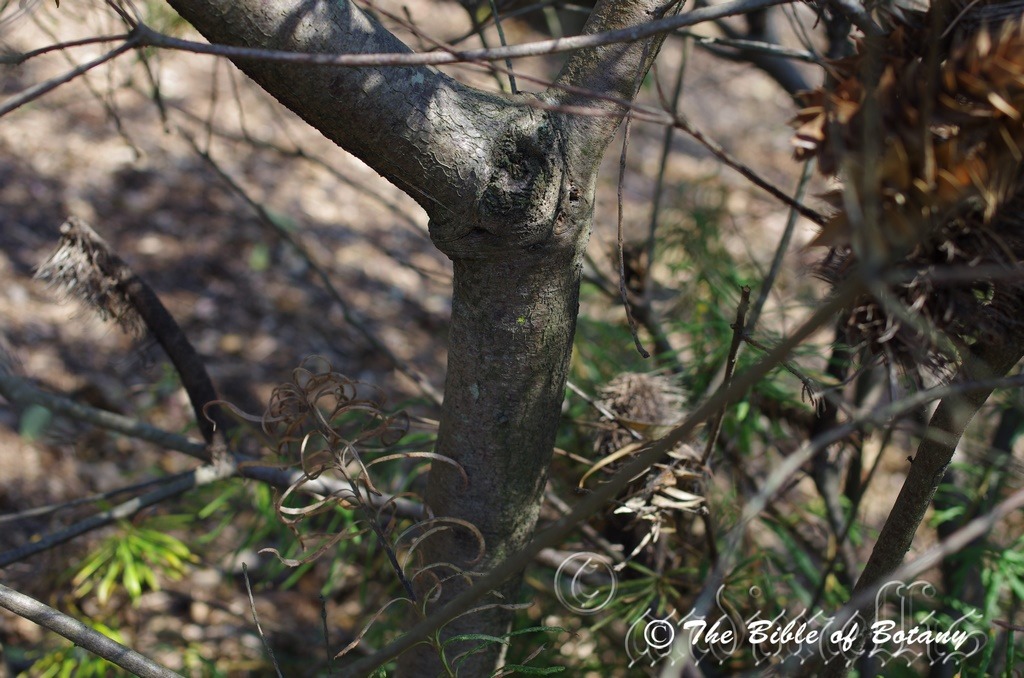
Mount Cootha Qld.
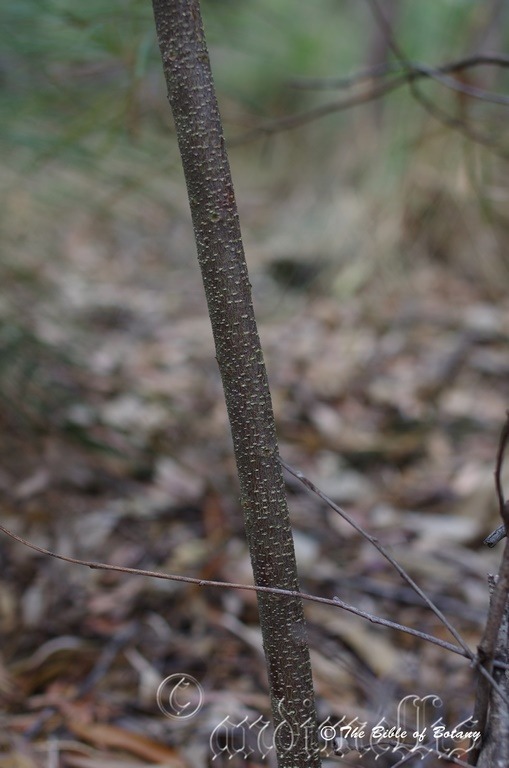
Toohey Forest Qld.

Mount Cootha Qld.
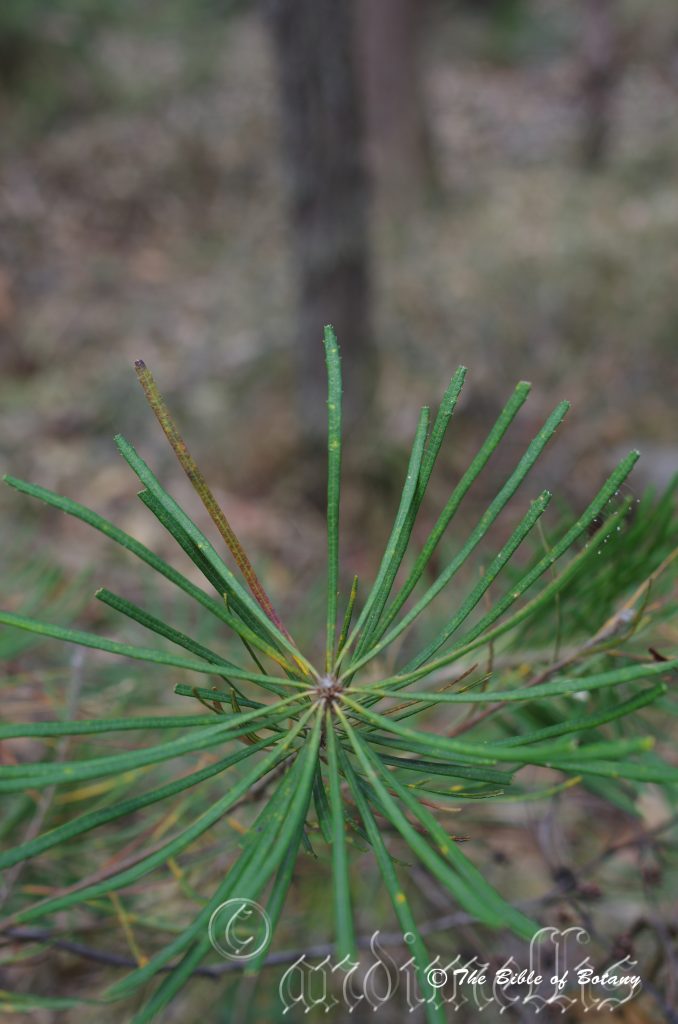
Toohey Forest Qld.
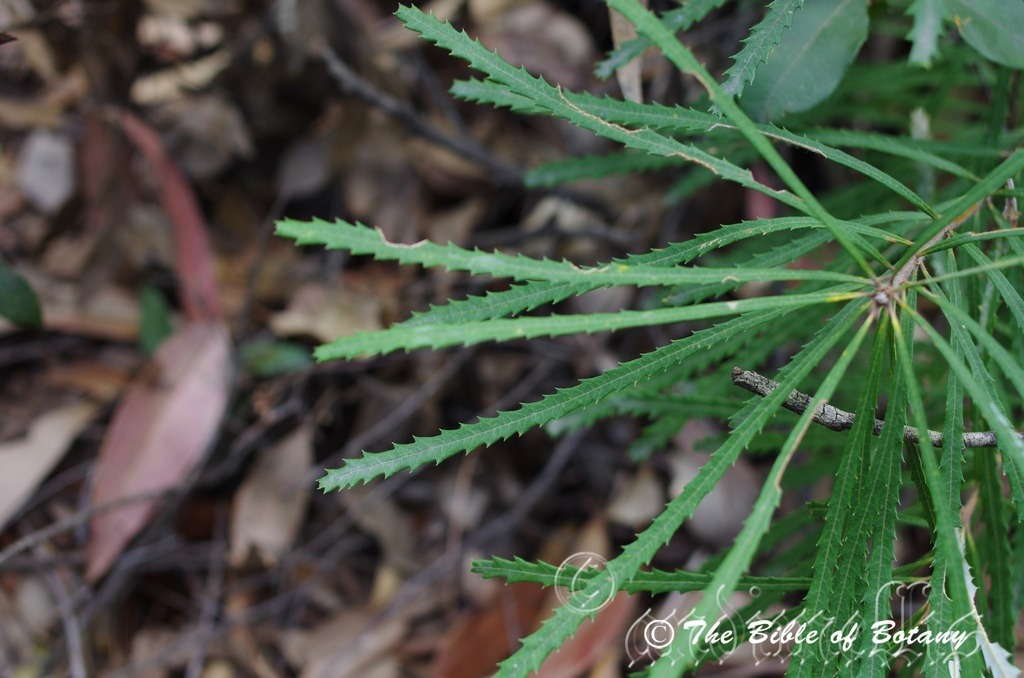
Toohey Forest Qld.
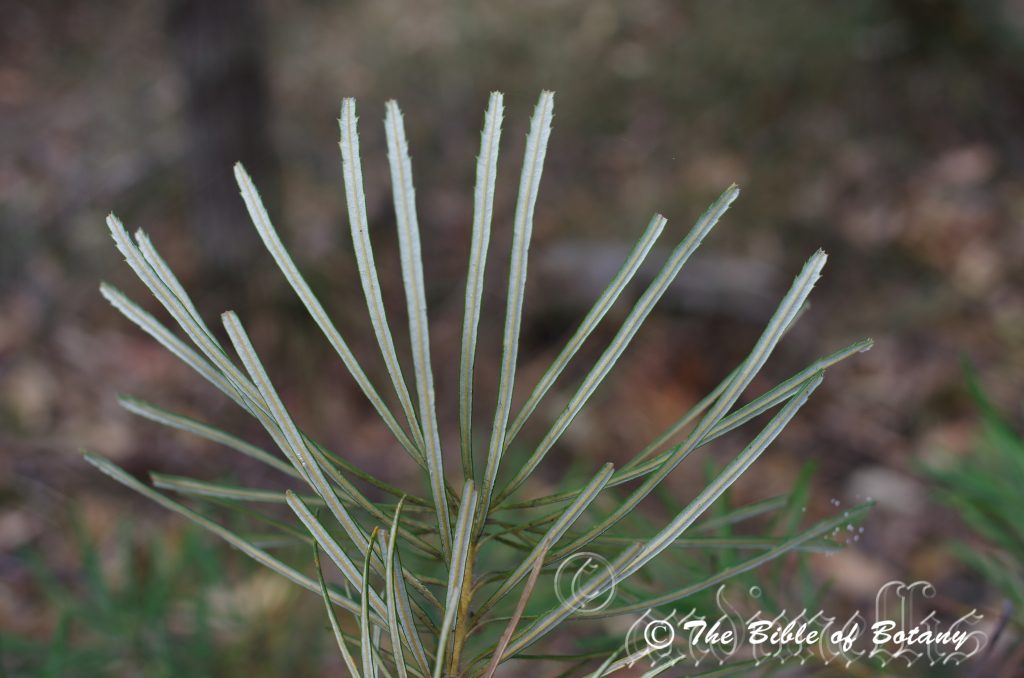
Toohey Forest Qld.

Mount Cootha Qld

The Pinnacles NSW
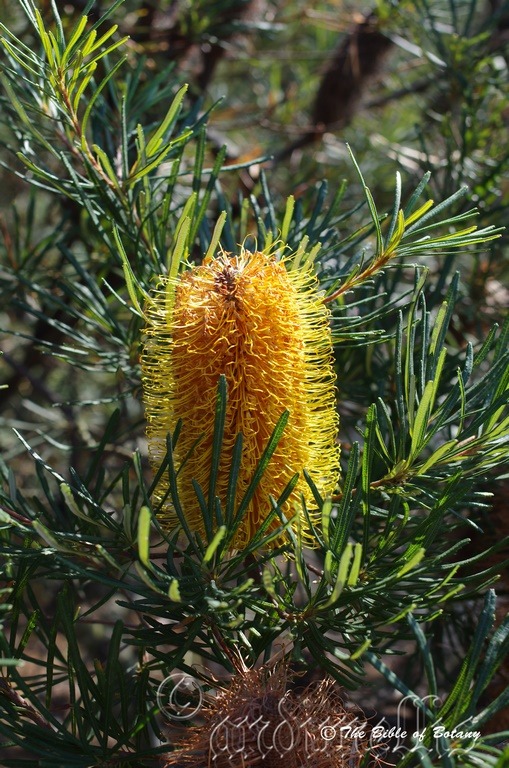
Mount Cootha Qld.
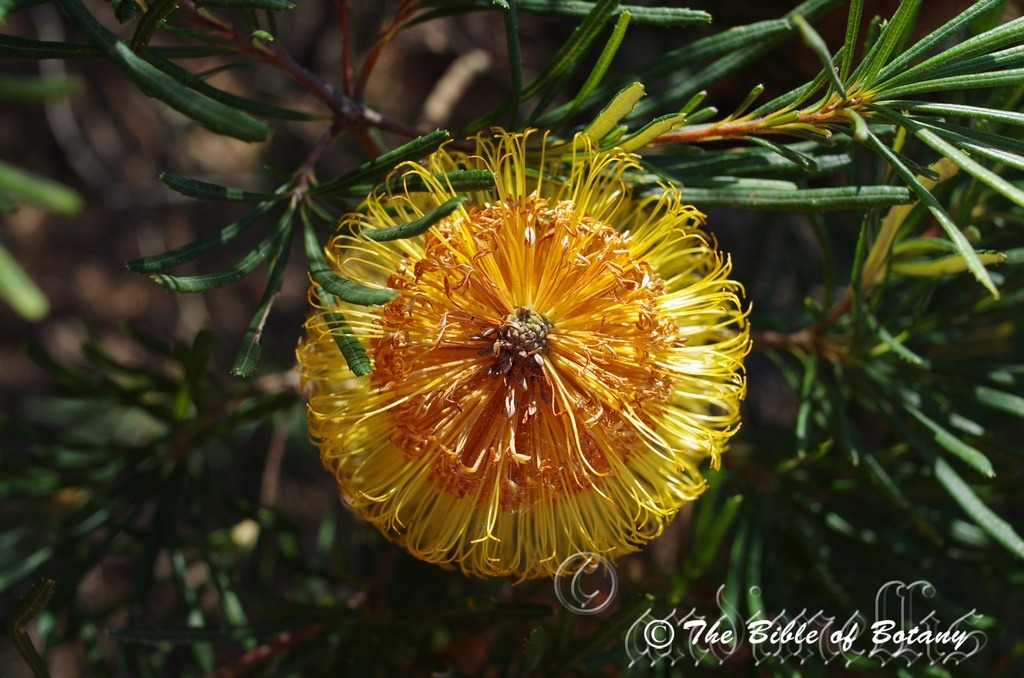
Mount Cootha Qld.
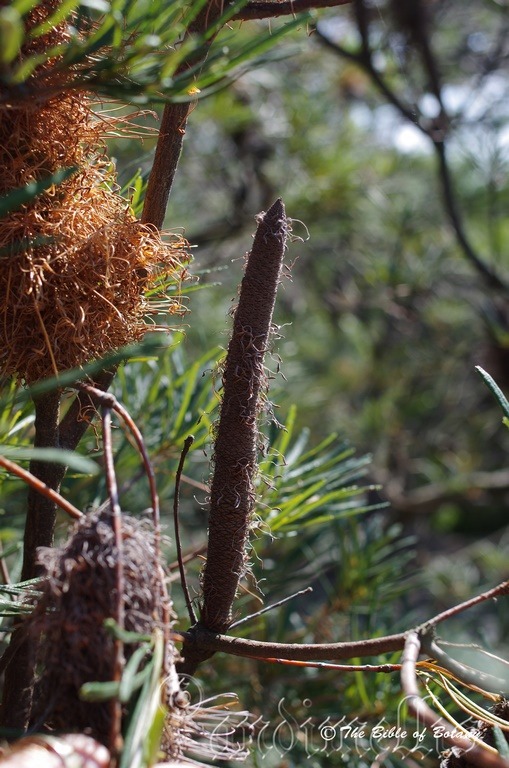
Mount Cootha Qld.

Greening Australia Norman Park Qld.
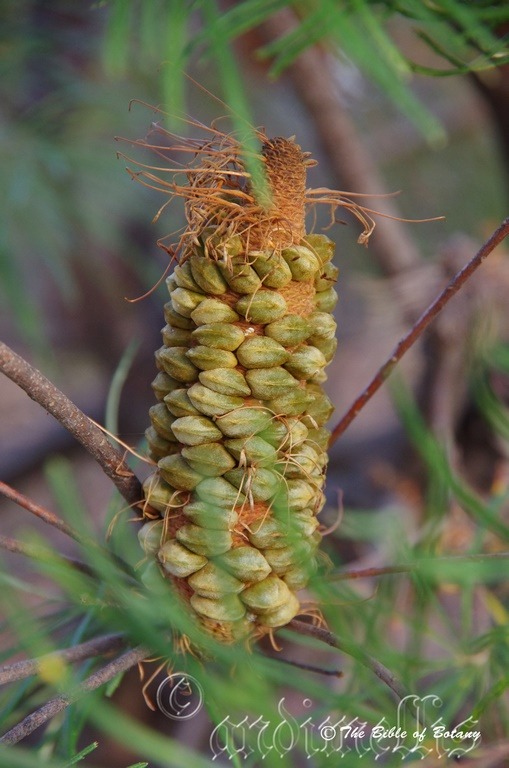
Greening Australia Norman Park Qld.
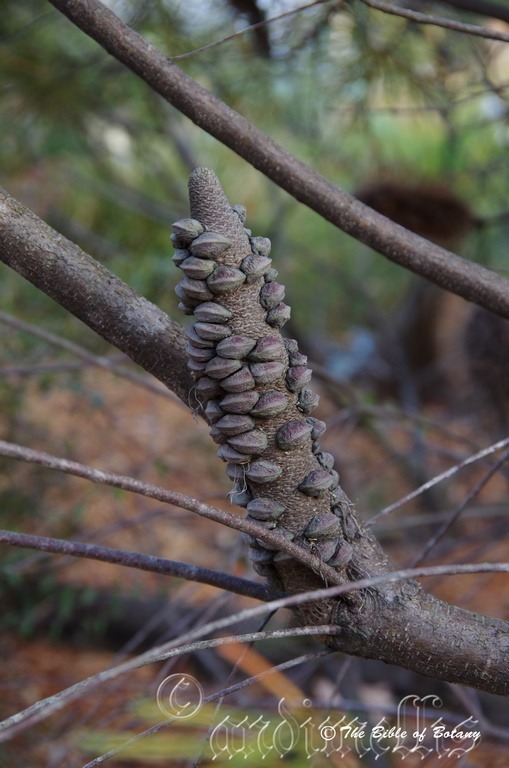
Mount Cootha Qld.

The Pinnacles NSW
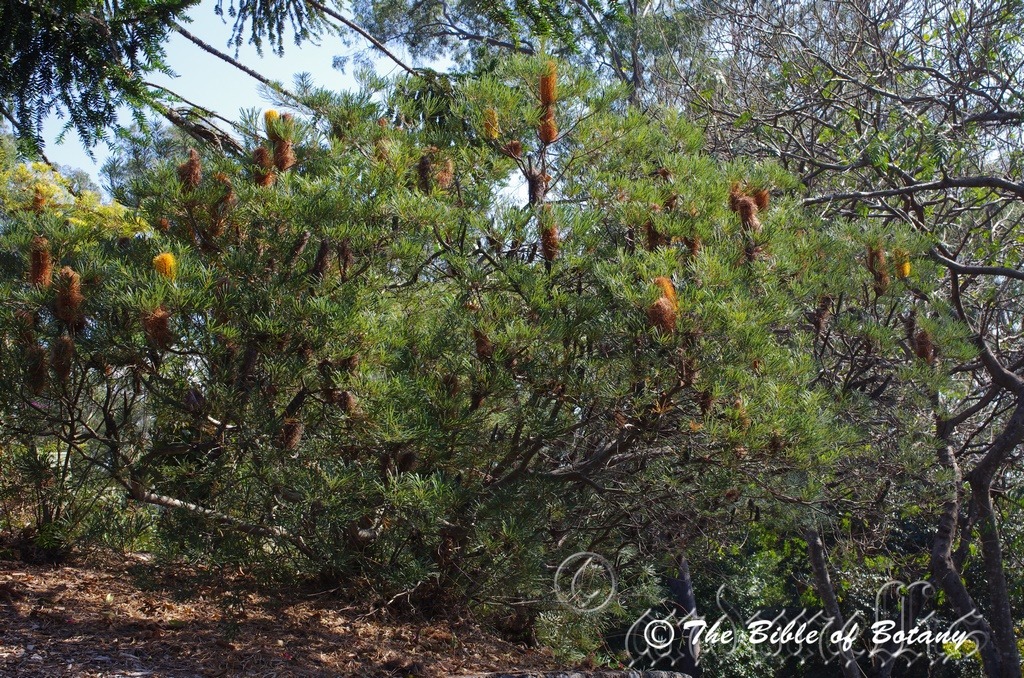
The Pinnacles NSW
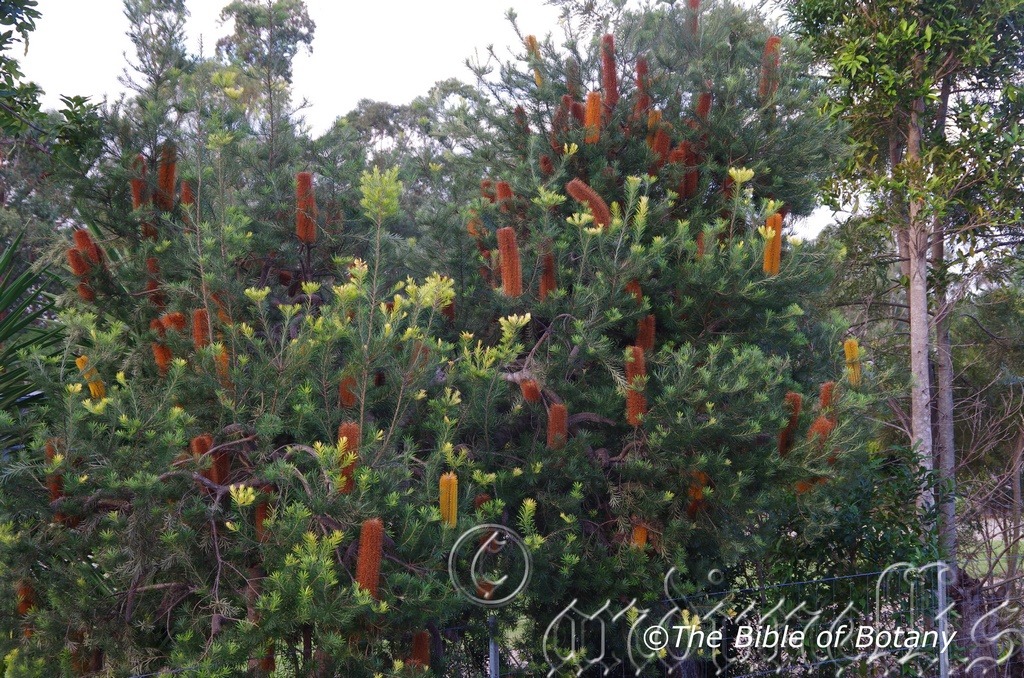
The Pinnacles NSW
Banksia spinulosa
Classification:
Class: Eudicots
Order: Proteales
Family: Proteaceae
Genus: Is named in honour of Sir Joseph Banks; 1743-1820, who was an English Naturalist and patron of botany who travelled with Captain Cook on the Endeavour to explore and study the plants of the east coast of Australia.
Specie: From Sp?n?sus, which is Latin for a thorn or backbone. It refers to plant which have short spines.
Sub specie: Banksia spinulosa subsp. collina From Sp?n?sus, which is Latin for a thorn or backbone. It refers to plant which have short spines.
Sub specie: Banksia spinulosa subsp. hilli. Is named in honour of Leslie J. Hill; 1908-2003, who was a botanical philanthropist and collector of South African succulents.
Sub specie: Banksia spinulosa subsp. spinulosa. From Sp?n?sus, which is Latin for a thorn or backbone. It refers to plant which have short spines.
Common Name: Hairpin Banksia.
The Gumbaynggirr Aboriginal language it is known as Wurindaga.
Distribution:
There is a lot of dispute over the distribution of Banksia spinulosa subsp. collina, Banksia spinulosa subsp. hilli & Banksia spinulosa subsp. spinulosa with many plants hybridizing where the subspecies overlap. Banksia spinulosa is found south from near Cairns in far north eastern Queensland to Wilsons Promontory in southern Victoria with a small population further west on the Grampians. It is found on the Western Slopes, on and east of the Great Dividing Range to the coast.
https://avh.ala.org.au/occurrences/search?taxa=Banksia+spinulos+#tab_mapView
Habitat Aspect Climate:
Banksia spinulosa grows in full sun or dappled sunlight. It grows in dry coastal heaths, dry woodlands, open eucalyptus forests on steeper slopes and hills. The altitude ranges from 5 meters ASL to 1450 meters ASL.
The temperatures range from minus 4 degrees in August to 35 degrees in January.
The rainfall is from lows of 400mm to an average of 1800mm.
Soil Requirements:
Banksia spinulosa prefers deep, sandy loams, light fatty clays to medium clays. The soils are usually derived from decomposed brown basalts, shales or metamorphic rocks. The soil’s pH ranges from 5pH to 6.5pH. It does not tolerate water logged soils. None saline soils to moderately saline soils are tolerated.
Height & Spread:
Wild Plants: 1m to 3m by 1m to 3m.
Characteristics:
Banksia spinulosa is a striking small to large shrub with a grey-brown corky to tessellated bark near the base. Branchlets are glabrous with lenticels. Juvenile branchlets are pale grey-brown and densely covered in short fawn tomentose to hirsute hairs.
The leaves on Banksia spinulosa subsp. collina are alternate with the petiole ranging from 1mm to 3mm long. The narrow linear to oblong leaves are 30mm to 100mm long by 5mm to 10mm wide while the base is cuneate and the apex is obtuse to truncate. The margins are flat to recurved or revolute concealing most of the lower lamina. They are finely toothed on the half closest to the apex. The discolourous leaves are pale grey green and glabrous on the upper lamina while the lower lamina is silvery white. The mid vein is prominent on the lower lamina and is not clearly visible on the upper lamina. Old leaves are often seen on the trunk where it has growm over the petiole and leaf base.
The leaves of Banksias spinulosa subsp. spinulosa differ in that they are narrow-linear and measure 30mm to 40mm in length by 1mm to 2mm in width. The leaf margin has only a few teeth close to the apex.
The conflorescence measures 60mm to 150mm in length by 50mm to 100mm in width. The perianths measure 20mm to 30mm in length. They are honey coloured with the style having a prominent hook below the stigma. The style with ovary measures 46mm to 48mm in length and can vary between honey coloured, purple, red or black. Flowering occurs from early April to late August.
The cones measure 50mm to 130mm in length by 30mm to 35mm in width. There are 30 to 100 follicles which measure 10mm to 24mm in length by 6mm to 10mm in height. They open immediately after fire or when the branch or plant dies.
Wildlife:
The shrubs are a favourite haunt for all nectar birds because of the copious amounts of nectar they produce and the long flowering season.
Cultivation:
These three Banksias are drought resistant, have a tolerance to both high and low humidity and are tolerant to wide temperature variations the shrubs should be a must in most small gardens. Coupled with the number of birds that will seek refuge and seek nectar as a guaranteed larder the plants are becoming more popular. Added to this, these two banksias flower over a long period.
There is a Banksia spinulosa for every garden. The plants have been successfully hybridized with variation in flower colour, size of flowers and plants and compact or open habits. It is an excellent colourful addition for sub-tropical, temperate or semi-arid zone garden. As garden subjects they will grow from 0.5 meters to 3 meters by 1 meter to 3 meters. It will grow on all soil types as long as they are not water logged. Like all Proteaceae avoid fertilizers that contain lime.
Banksia spinulosa is ideal for bush settings, rockeries and bird attractions especially when grouped with other Banksias like Banksia integrifolia, Banksia oblongifolia or Banksia serrata which it is very compatible with.
It is best used adjacent to small areas of bush close to paths or the house so their large, deep honey coloured flowers or birds can be viewed regularly. The new dwarf compact forms are great in small rockeries as a fill in plant. Here it can be planted in small groups of 2 or 3 or as a stand alone plant to create a harsh barren look with other arid plants or annuals. If these compact forms are surrounded by shorter plants with fine foliage and white flowers they will dominate at the center giving an expansive look to the bed especially when they are in flower. This is one plant that benefits highly from being mass planted or planted in scattered clumps. There small size enables this to be achieved even in small and medium size garden beds.
Six or more medium size plants planted back from a bend will become a very strong focal point when in flower gain a lot of attention whether you are coming or going because of the number of nectar eating birds they will attract to the garden. It can be regularly tip pruned if a smaller denser shrub is required. Hard pruning can be done once the lignotuber has developed and are established but some set back will occur so it is better to trim the plants on a regular or annual basis. They respond well to pruning recovering quickly and often increasing the number of flowers in the following season.
Place them in the foreground with other large leaf ground covers and very small shrubs. To the rear, use large deep green leaf plants. Plants with white, deep red or deep purple flowers can be used in both the midground and background. This will lead the viewer’s eyes directly to the large yellow cone flowers and rusty tomentose buds and branchlets for a longer period.
Ensure that the whole plant or at least most of it is on display from most sections of the garden as the flowers are a real bonus.
When it is in flower these plants will catch your attention and the viewer will be transfixed on the display and quarrelling of birds for the best position rather than watching the path. Plant them at 0.8 meter to 2 meter centers depending on the form selected.
Banksia spinulosa is a very beautiful small to medium native shrub or decumbent ground cover which is suitable for small gardens to the largest garden. It is fast growing, drought tolerant once established and are cold tolerant to temperatures at least as low as minus 6 degrees. I would be tempted to grow this plant further west bordering arid areas if some additional water can be supplied.
Propagation:
Seeds:
Banksia spinulosa seeds can be removed easily by placing the cones seeds can be removed easily by placing the cones in a brown paper bag and leaving them in the car for 7 to 10 days. After the evening meal has been prepared, with the oven off and place the seeds inside while the oven is still hot. The cones will open up after a day or two. Shake to remove the seeds or pull them out with tweezers.
Sow fresh seed directly into a seed raising mix. Keep moist not wet. When the seedlings are 25mm to 40mm tall, prick them out and plant them into 50mm native tubes using a good organic mix.
Once the seedlings reach 150mm to 200mm in height plant them out into their permanent position.
Fertilize using Seaweed or fish emulsion on an alternate basis. Fertilize every two months until the plants are established then twice annually in early September or March to maintain better health, vitality and flowering.
Do not use synthetic fertilizers on Banksia specie as they usually contain high levels of phosphorous and calcium which are toxic to most Proteaceae.
Further Comments from Readers:
“Hi reader, it seems you use The Bible of Botany a lot. That’s great as we have great pleasure in bringing it to you! It’s a little awkward for us to ask, but our first aim is to purchase land approximately 1,600 hectares to link several parcels of N.P. into one at The Pinnacles NSW Australia, but we need your help. We’re not salespeople. We’re amateur botanists who have dedicated over 30 years to saving the environment in a practical way. We depend on donations to reach our goal. If you donate just $5, the price of your coffee this Sunday, We can help to keep the planet alive in a real way and continue to bring you regular updates and features on Australian plants all in one Botanical Bible. Any support is greatly appreciated. Thank you.”
In the spirit of reconciliation we acknowledge the Bundjalung, Gumbaynggirr and Yaegl and all aboriginal nations throughout Australia and their connections to land, sea and community. We pay our respect to their Elders past, present and future for the pleasures we have gained.
Banksia tenuis
Classification:
Class: Eudicots
Order: Proteales
Family: Proteaceae
Genus: Is named in honour of Sir Joseph Banks; 1743-1820, who was an English Naturalist and patron of botany who travelled with Captain Cook on the Endeavour to explore and study the plants of the east coast of Australia.
Specie: From Tanu, which is Ancient Greek or later Tenue, which is Latin for slender and fine. It refers to articles on the stem sections which are slender and look rather fine and delicate.
Sub specie: Banksia tenuis var. reptans From Repens, which is Latin for creeping. It refers to plants, which have a habit of creeping along the ground’s surface.
Sub specie: Banksia tenuis var. tenuis From Tanu, which is Ancient Greek or later Tenue, which is Latin for slender and fine. It refers to articles on the stem sections which are slender and look rather fine and delicate.
Common Name: Creeping Dryandra or Wiry leafed Dryandra.
Distribution:
Banksia tenuis var. reptans is found east from Walpole to Cape Arid National Park in the east and north to Narrogin in the south west corner of Western Australia.
Banksia tenuis var. tenuis is found east from Walpole to Cape Arid National Park in the east and north to Narrogin in the south west corner of Western Australia.
https://avh.ala.org.au/occurrences/search?taxa=Banksia+tenuis+#tab_mapView
Habitat Aspect Climate:
Banksia tenuis prefer full sun to dappled light. It grows open woodlands, open Eucalyptus forests near the coast behind the back dunes, on plains, gentle slopes and hills. The altitude ranges from 5 meters ASL to 350 meters ASL
The temperatures range from 3 degrees in July to 40 degrees in January.
The rainfall ranges from lows of 300mm to an average of 950mm annually.
Soil Requirements:
Banksia tenuis prefers deep, red to yellowish sandy loams, light fatty stony clays to gravelly medium clays. The soils are usually derived from decomposed sandstones, granites, laterites or accumulated peaty beach sands. The soil’s pH ranges from 4.5pH to 6.5pH. It does not tolerate water logged soils. None saline soils to moderately saline soils are tolerated.
Height & Spread:
Wild Plants: 0.2m to 1m by 0.8m to 1m.
Characteristics:
Banksia tenuis’s stems are red-brown and scabrous with lenticels. The branchlets are pale brown and covered in pale brown tomentose hairs.
Banksia tenuis var. tenuis has an upright habit of growth whereas Banksia tenuis var. reptans is decumbent or procumbent.
Banksia tenuis’s linear leaves measure 150mm to 200mm in length by 2mm to 4mm in width. The margins are entire on Banksia tenuis subsp. reptans or lobed on Banksia tenuis subsp. The margins are strongly recurved to involute. The 34 to 50 opposite narrow linear lobes are widely spaced along the rachis. The opposite lobes measure 3mm to 5mm in length by 1mm to 1.5mm in width. The space between lobes is 4mm to 5mm.
The bases of Banksia tenuis var. tenuis are narrow oblique while the apexes are emarginate with the lobes spreading wide near the base and becoming more angled towards the apex.
The bases of Banksia tenuis var. reptans are truncate while the apexes are emarginate.
The discolourous laminas are pale blue-green and glaucous on the upper lamina and paler on the lower lamina. The petioles measure 8mm to 10mm measure.
The inflorescence of Banksia tenuis are hemispherical, erect and born on the old wood. The clusters measure 22mm to 30mm in length by 45mm to 55mm in diameter. The perianths and styles are a dull golden orange-yellow with a creamy brown pollen presenter which measures 5mm to 6mm in length. They open from the center. The style is straight, persistent and fades after fertilization.
The flowers occur in July for Banksia tenuis subsp. reptans flowers in July while Banksia tenuis subsp. tenuis flowers from from May to June.
Banksia tenuis fruits are follicles. The loose follicles are broadly semicircular. They measure 20mm to 30mm in length by 11mm to 16mm in width.
Wildlife:
Banksia tenuis’s flowers are very attractive to s mall honey eaters are attracted to the flowers.
Cultivation:
Banksia tenuis is a rare small Banksia which is worth while trying on the east coast of Australia which comes from the west. It should do well in Victoria and South Australia especially in semi-arid zones west of the Great Dividing Range. Cultivated plants of Banksia tenuis subsp. tenuis usually have a dome shape and grow from 0.6 meters to 1 meter in height by 1 meter to 1.2 meters in diameter. Banksia tenuis subsp. reptans is well suited for native bush gardens large rockeries or on banks as long as the soils are sandy loams, because of its procumbent growth habit. It spreads to around 1.3 meters in cultivated situations. They require dry summers to keep the beautiful leaves green and free of leaf and root fungal attack.
Banksia tenuis var. tenuis is well suited to a miniature bush gardens where rocks and stumps prevail as a feature of the landscape. The fine long foliage and open habit of Banksia tenuis, with its unusual flowers would complement the scene not steal the attention which broad leaf plants with deep coloured leaves and bright coloured flowers would certainly do.
This pascal setting in art would be called a romantic picture. Garden beds would need to be open with plenty of space between the plants to allow air flow as well as to give the branchlets a chance to spread and be appreciated for their unique beauty. Crowding this type of foliage with other plants will see them lose all the effectiveness of the sombre pale colours and form you require or want.
Correct spacing will contrast the foliage better without one overpowering the other. It is better not being mass planted but scattered to reflect the loneliness and isolation. Spacings of 3.5 meters to 4 meters will be needed to create a beautiful prostrate scene. Remember this is not a desert scene so you need to use them amongst paler coloured rocks of fawns and browns and rocks with a rounded shape rather than abrupt corners. Plant them sparingly with other soft fine prostrate or procumbent foliage plants to avoid the barren harsh desert scene. Grevillea thelyminianna grey form is one that comes to mind with Banksia tenuis var. reptans. 4 or 5 in an area of 120 square meters would be ample. 4 plants separately planted or plant 2 close together and scatter plant the other 3 to give width and depth where you want it. The use of annuals helps to attract the viewer to the permanent plants foliage as they are the predominant foliage you want people to notice in the patch. Again be careful here as most annuals have a strong bold outline not soft and gentle.
Water again can set the scene but it has to be slow moving not fast and don’t even think of a water fall or cascade. The water has to be still with pale coloured rocks and even soft grey pebbles to blend through to the plants and features.
Banksia tenuis var. reptans is well suited to a desert type of landscape. The deep greys and blacks against the creamy stems will contrast both the finesse of the shrub and the coarseness of the stumps, rocks or roots. Select an area of ground and let your hair down and be imaginative. Sparingly use other plants when planting and remember that desert scenes are rolling flat plains not steep hills so it is best to use a gentle slope or a basin with a small pool at the bottom. A billabong affect is the go, not a waterfall or cascades. When using this plant as a feature only grow small plants that do not reach more than 500mm in height and have a compact habit with either blue or grey leaves, but be careful that these plants do not steal the stage. Annuals and perennials would really compliment the scene.
When you design a miniature desert garden, use contours to display the plants to their best. Plant a row of small shrubs on the top to represent the hills or a ridge or use them on the plains to give a feeling of expansive flatness with the hills in the distance.
Another method would be to cover the hills in the distance with annuals that have soft grey foliage. This again would effectively represent the haze experienced in real life. They would have to be taller than those planted in valleys or on plains to give depth and height. Don’t make the ridge straight curve it so that it winds around. Use small tussock grasses or Lomandra species adjacent to Banksia tenuis subsp. reptans to accentuate the flatness and prostrate form. Prune plants up the valleys and background so they remain shorter than those in the foreground to give greater depth.
Place them near old stumps and roots to make the stumps or roots look larger and more gnarled. Select an area of ground and let your hair down and be imaginative and this is the plant that may just change your life. Remember this plant has a rather large spread for this type of garden so be sparingly with the other plants when planting and remember that deserts are rolling flat plains not steep hills so it is best to use a gentle slope or a basin with a small pool at the bottom.
Propagation:
Seeds:
Banksia tenuis seeds can be removed easily by placing the cones seeds can be removed easily by placing the cones in a brown paper bag and leaving them in the car for 7 to 10 days. After the evening meal has been prepared, turn the oven off and place the cones inside while the oven is still hot. The cones will open up after a day or two. Shake to remove the seeds or pull them out with tweezers.
Sow fresh seed directly into a seed raising mix in early spring. Keep moist not wet. When the seedlings are 25mm to 40mm tall, prick them out and plant them into 50mm native tubes using a good organic mix.
Once the seedlings reach 150m to 200mm in height plant them out into their permanent position. Mass plantings can be achieved by planting at 0.8 meter to 1 meter centers
Fertilize using Seaweed or fish emulsion on an alternate basis. Fertilize every two months until the plants are established then twice annually in early September or March to maintain better health, vitality and flowering.
Do not use synthetic fertilizers on Banksias as they usually contain high levels of phosphorous and calcium which are toxic to most Proteaceae.
Further Comments from Readers:
“Hi reader, it seems you use The Bible of Botany a lot. That’s great as we have great pleasure in bringing it to you! It’s a little awkward for us to ask, but our first aim is to purchase land approximately 1,600 hectares to link several parcels of N.P. into one at The Pinnacles NSW Australia, but we need your help. We’re not salespeople. We’re amateur botanists who have dedicated over 30 years to saving the environment in a practical way. We depend on donations to reach our goal. If you donate just $5, the price of your coffee this Sunday, We can help to keep the planet alive in a real way and continue to bring you regular updates and features on Australian plants all in one Botanical Bible. Any support is greatly appreciated. Thank you.”
In the spirit of reconciliation we acknowledge the Bundjalung, Gumbaynggirr and Yaegl and all aboriginal nations throughout Australia and their connections to land, sea and community. We pay our respect to their Elders past, present and future for the pleasures we have gained.
Banksia undata
Classification:
Class: Eudicots
Order: Proteales
Family: Proteaceae
Genus: Is named in honour of Sir Joseph Banks; 1743-1820, who was an English Naturalist and patron of botany who travelled with Captain Cook on the Endeavour to explore and study the plants of the east coast of Australia.
Specie: From Und?tum, which is Latin for wavy. It refers to a description of a structure or organ, which has a surface which is slightly wave like or undulating.
Sub specie: Banksia undata var. splendens. From Splend?ns, which is Latin for to glisten or shine. It refers to plants, which have a real shine or are spectacular in flower.
Sub specie: Banksia undata var. undata. From Und?tum, which is Latin for wavy. It refers to a description of a structure or organ, which has a surface which is slightly wave like or undulating.
Common Name: Beautiful Dryandra.
Distribution:
Banksia undata var. splendens is found south from Berakin to Boddington in south western, Western Australia.
Banksia undata var. undata is found south from Cunderdin to Serpentine in south western, Western Australia.
https://avh.ala.org.au/occurrences/search?taxa=Banksia+undata+#tab_mapView
Habitat Aspect Climate:
Banksia undata prefer full sun to dappled light. It is found in open woodlands, dry eucalyptus forests or adjacent to heath lands. The altitude ranges from 5 meters ASL to 350 meters ASL
The temperatures range from 3 degrees in July to 37 degrees in January.
The rainfall ranges from lows of 250mm to an average of 870mm annually.
Soil Requirements:
Banksia undata prefers better quality sandy loams, light fatty clays, gravelly medium clays or laterites. The soil’s pH ranges from 4pH to 5pH. It does not tolerate water logged soils. None saline soils to moderately saline soils are tolerated.
Height & Spread:
Wild Plants: 0.8m to 3m by 1.5m to 2m.
Characteristics:
Banksia undata’s trunk and branches are rusty-brown and glabrous or slightly scabrous. Branchlets are pale olive-brown angled squarish near the apexes and densely covered in long white tomentose hairs.
Banksia undata’s scattered leaves can be alternate or in loose whirls. The oblanceolate leaves measure 35mm to 50mm in length by 14mm to 20mm in width. The base is attenuate and slightly spreading where it connects to the stem while the apex is truncate or widely emarginated. The leaf margins have short wide lobes with a spine on the apex of each lobe. The discolourous laminas are grass green to deep sea green or mid blue green and glabrous on the upper lamina while the lower lamina is paler and densely covered in short white sericeous hairs becoming glabrous as the leaf ages. The laminas undulate from the bases to the apexes. The mid vein and main lateral veins are strongly prominent below and are sparsely covered in fawn sericeous hairs and are a paler colour or yellow-green while it is clearly visible on the upper lamina. The long narrow triangular stipules are irregularly placed along the juvenile stems and measure 6mm to 8mm in length by 1mm to 2mm in width near the base. They are deep red burgundy and covered in short deep red-burgundy tomentose hairs.
The inflorescence of Banksia undata are hemispherical, erect and born terminally. The styles are a bright lemon yellow to a bright golden yellow with a cream, lemon or white pollen presenter. Banksia undata var. splendens also has a form with pink perianths and yellow styles turning a pascal yellow-green towards the pollen presenter. The pollen presenter is a deeper colour of the styles. The style is glabrous while the pollen presenter is covered in white tomentose hairs. They open from the center. The very thin, hair like styles are straight. They are persistent and fade after fertilization. The flower clusters are 55mm to 65mm in diameter and 35mm to 40mm length. The perianth and style measure 40mm to 45mm in length. Flowering for Banksia undata var. undata occurs from September to October. Flowering for Banksia undata var. splendens occurs from late July to October.
Banksia undata fruits are follicles. The loose follicles are semicircular. They measure 20mm to 30mm in length by 11mm to 16mm in width.
Wildlife:
Banksia undata’s flowers are attractive to small honey eaters.
Cultivation:
Banksia undata is a beautiful small upright narrow Banksia which is worth while trying on the east coast of Australia which comes from the west. It should do well in Victoria and South Australia and in semi-arid districts west of the Great Dividing Range to at least as far north as north as Dalby. Cultivated plants of Banksia undata will grow 2.5 meters to 3 meters tall by 1.5 meters to 1.8 meters in diameter when grown in the open. It can be lightly tip pruned to enhance their bushiness and flowering in the following season. It is ideal in sunny courtyards and around pools where their natural narrow upright habit with unusual leaves break up those straight lines make the area look larger and give wonderful displays of flowers when the pool is not being used. The shape of this Banksia makes it ideal for placing in front of any low structure like the corners of homes or offices. A visual effect of space can be achieved by planting them in a semi-circle around a gazebo instead of building a screen or fence which closes an area in. This will also give a cooling effect to the immediate area.
Try using Banksia undata as the feature in a formal garden bed in the middle of a traffic island or between two driveways. Plant them in small groups of 2, 3, or 4.As the center feature using ground cover plants like Hibbertia scandens will contrast beautifully with different greens. Another good compatible plant would be Grevillea thelemanniana. The yellow and red flowers together during late winter and early spring would be a wonderful additional contrast. Another unusual contrast would be Banksia tenuis sub sp. repens. Whatever you decide use a fine leaf ground cover with bright green leaves and white yellow red or pink flowers.
It looks great either from a raised garden bed or set below a path so that you are looking down on the plants. Raised garden beds are one way to bring them to the attention of the viewer. Planted on banks that are above the viewer’s normal eye height is great but you need to place smaller plants between them and the bottom of the bank.
Plant them at 3 meter centers so that the plants can spread out to their full potential and maintain good air flow between to help eliminate fungal problems.
Propagation:
Seeds:
Banksia undata seeds can be removed easily by placing the cones seeds can be removed easily by placing the cones in a brown paper bag and leaving them in the car for 7 to 10 days. After the evening meal has been prepared, turn the oven off; place the cones inside while the oven is still hot. The cones will open up after a day or two. Shake to remove the seeds or pull them out with tweezers.
Sow fresh seed directly into a seed raising mix in early spring. Keep moist not wet. When the seedlings are 25mm to 40mm tall, prick them out and plant them into 50mm native tubes using a good organic mix.
Once the seedlings reach 150mm to 200mm in height plant them out into their permanent position. Mass plantings can be achieved by planting at 1.5 meter to 2 meter centers
Fertilize using Seaweed or fish emulsion on an alternate basis. Fertilize every two months until the plants are established then twice annually in early September or March to maintain better health, vitality and flowering.
Do not use synthetic fertilizers on Banksias as they usually contain high levels of phosphorous and calcium which are toxic to most Proteaceae.
Further Comments from Readers:
“Hi reader, it seems you use The Bible of Botany a lot. That’s great as we have great pleasure in bringing it to you! It’s a little awkward for us to ask, but our first aim is to purchase land approximately 1,600 hectares to link several parcels of N.P. into one at The Pinnacles NSW Australia, but we need your help. We’re not salespeople. We’re amateur botanists who have dedicated over 30 years to saving the environment in a practical way. We depend on donations to reach our goal. If you donate just $5, the price of your coffee this Sunday, We can help to keep the planet alive in a real way and continue to bring you regular updates and features on Australian plants all in one Botanical Bible. Any support is greatly appreciated. Thank you.”
In the spirit of reconciliation we acknowledge the Bundjalung, Gumbaynggirr and Yaegl and all aboriginal nations throughout Australia and their connections to land, sea and community. We pay our respect to their Elders past, present and future for the pleasures we have gained.

Mount Lomond Qld.
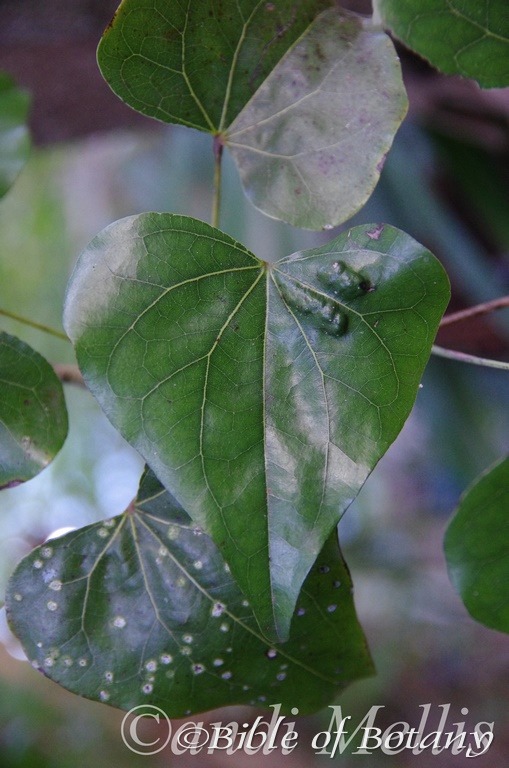
Mount Lomond Qld.

Mount Lomond Qld.
Barklya syringifolia
Classification:
Phylum: Eudicots
Clade: Rosids
Order: Fabales
Family: Fabaceae
Tribe: Bauhinieae
Genus: Is named in honour of Sir henry Barkly; 1815-1898, who was the Governor of Victoria.
Specie: From Sy?ring, which is Ancient Greek for the ancient name of the Mock Orange and Folium, which is Latin for foliage. It refers to plants, which resemble the ancient Syringa genus.
Subspecie:
Common Name: Leather Jacket, Crown of Gold or Golden Shower.
Distribution:
Barklya syringifolia is found south from Mackay in central coastal Queensland to Mount Lomond in far south eastern Queensland. It is found mainly on the eastern slopes of the Great Dividing Range. https://avh.ala.org.au/occurrences/search?taxa=Barklya+syringifolia+#tab_mapView
Habitat Aspect Climate:
Barklya syringifolia grows as a tall slender tree in drier rainforests. The altitude ranges from 30 meters ASL to 620 meters ASL.
The temperatures range from 3 degrees in July and 36 degrees in February.
The rainfall ranges from lows of 750mm to an average of 1400mm per annum.
Soil Requirements:
Barklya syringifolia prefers deep, organically rich, loamy silts. The soils are usually derived from decomposed brown basalts or black basalts. The soil’s pH ranges from 5pH to 7.5pH. It does not tolerate water logged soils. None saline soils to slightly saline soils are tolerated.
Height & Spread:
Wild Plants: 15m to 20m by 5m to 8m
Characteristics:
Barklya syringifolia has a pale to mid grey and brown rough bark. The branches and larger stems are pale to mid grey and brown and glabrous. The new growth green and smooth.
The cordate leaves are alternate to spirally arranged on the stems. The tertete petioles have a pulvenis type swelling at the base and where the leaf joins and measure 50mm to 80mm in length. The cordate laminas are deep green, glabrous and measure 50mm to 90mm in length and width. The apex has a n acute tip. There are 5 to 7 veins radiating from the base which are strongly prominent on the lower lamina and weakly prominent on the upper lamina. The new growth is glabrous to sparsely covered soft, rusty caduceous hairs.
The inflorescences of Barklya syringifolia are long pendulant racemes in small terminal groups of are produced singularly from the upper leak axis and measure 80mm to 120mm in length. The terete green pedicles are sparsely covered in soft rusty caduceous hairs and measure 1.5mm to 2.5mm in length. The bell-shaped calyx measures 1.5mm to 3mm in length, with the lower 50-60% being fused with the apexes being acute. The elliptical petals are deep yellow/orange and measures 4mm in length with 7mm in length. The deep yellow-orange style and superior ovary has a single locule with a few ovules and measure 6mm to 8mm in length. The flowers appear from November to December.
The 10 deep yellow-orange stamens and styles are free and measure 10mm to 13mm in length, while the dorsifixed anthers split lengthwise.
Barklya syringifolia’s fruits are flattish pods, which measure 40mm to 50mm in length by 12mm to 18mm in width. The green pods turn a brown when ripe and yield 1 to 3 flat brown seeds.
Wildlife:
Barklya syringifolia is an important fish breeding habitat.
Cultivation:
Barklya syringifolia is a classically interesting and beautiful but slow in growth.
Three to five plants planted planted at 8 meters centres will give a great look in around 5 to 6 years. Such plantings in the open will see the trees grow to around 6 to 8 metres by 6 to 8 metres in diameter.
It slow growing and can take 5 or 7 years to develop a small crown and flower.
Use plants with deep green broader simple leaves or plants with deep green to deep blue-green feathery type foliage to the rear so that a strong contest is made. White flowered plants are an additional contrast and here I immediately think of Melaleuca linearifolia, whih contrasts beautifully in flower olour and foliage type and colour.
Think of using Barklya syringifolia as the only tree in the yard and completely covering the ground in smaller pink and white flowering natives for a spectacular late spring, summer or autumn display of colour. It should be tried as far south as Sydney in frost free areas.
Propagation:
Seeds:
Barklya syringifolia seeds can be planted directly into their permanent positions or sown into a seed raising mix. When the seedlings are sown into a potting mix it is best to use 100mm native tubes. The seeds are unusual in that they will send out roots from the opposite end of the growing shoot. They are quick to germinate and grow very fast in the initial stages. Do not allow them to dry out at any stage as this will seriously check the plants or even kill them. To overcome this problem place the tubes in a tray of water.
Fertilize using Seaweed, fish emulsion or organic chicken pellets soaked in water on an alternate basis. Fertilize every two months until the plants are established then twice annually in early September or March to maintain better health, vitality and flowering.
Once the seedlings reach 250mm to 350mm in height plant them out into their permanent position. Mass plantings can be achieved by spacing the plants at 7 meter to 8 meter centers for a rain forest scenario or 15 meters for a park like scenario.
Further Comments from Readers:
“Hi reader, it seems you use The Bible of Botany a lot. That’s great as we have great pleasure in bringing it to you! It’s a little awkward for us to ask, but our first aim is to purchase land approximately 1,600 hectares to link several parcels of N.P. into one at The Pinnacles NSW Australia, but we need your help. We’re not salespeople. We’re amateur botanists who have dedicated over 30 years to saving the environment in a practical way. We depend on donations to reach our goal. If you donate just $5, the price of your coffee this Sunday, We can help to keep the planet alive in a real way and continue to bring you regular updates and features on Australian plants all in one Botanical Bible. Any support is greatly appreciated. Thank you.”
In the spirit of reconciliation we acknowledge the Bundjalung, Gumbaynggirr and Yaegl and all aboriginal nations throughout Australia and their connections to land, sea and community. We pay our respect to their Elders past, present and future for the pleasures we have gained.
Barringtonia acutangula
Classification:
Phylum: Eudicots
Class: Asterids
Order: Ericales
Family: Lechythidaceae
Genus: Is named in honour of Daines Barringtonia; 1727-1800, who was an English barrister and naturalist.
Specie:From Ac?tum which is Latin for sharpened or to sharpen and Angula which is Latin for an angle. It refers to apexes on leaves, phyllodes, calyxes or sepals, which taper to a definite point.
Subspecies:
Common Name: Fresh Water Mangrove.
Distribution:
Barringtonia acutangula is found along the coast of Australia and near coastal rivers from the Kimberley’s across the top end, both sides of Cape York Peninsular and south to Cape Melville.
https://avh.ala.org.au/occurrences/search?taxa=Barringtonia+acutangula+#tab_mapView
Habitat Aspect Climate:
Barringtonia acutangula grows as a rheophytic tree in full sun. It grows in mangrove forests, open woodlands which are associated with saline coastal flood plains, saline river deltas, river meander flats or ground seepages. It is also found growing along estuaries where brackish water especially in the upper tidal margins of rivers and creeks. The altitude ranges from 1 meter BSL to 420 meters ASL.
The temperatures range from 10 degrees in July and 42 degrees in February.
The rainfall ranges from lows of 650mm to an average of 2900mm per annum.
Soil Requirements:
Barringtonia acutangula prefers deep, organically rich, loamy silts, light muddy silts to heavy muddy silts. The soils are usually derived from decomposed sandstones, granites, brown basalts, black basalts, shales and metamorphic rocks laid down as alluvial deposits or at times accumulated muddy silts along estuaries. The soil’s pH ranges from 4pH to 8pH. It does not tolerate water logged soils. None saline soils to extremely saline soils are tolerated as are salt laden winds.
Height & Spread:
Wild Plants: 3m to 12m by 3m to 8m
Characteristics:
Barringtonia acutangula is a variable plant growing as a small shrub or a small tree. It has a light to dark grey bark which is very fibrous. The trunk and branches are deep grey and very rough to strongly scabrous. The branchlets are rough to faranacous fawn to brown or grey-brown and covered in lenticels. The bark is very fibrous when stripped.
Barringtonia acutangula is semi deciduous for a short period around June to July. The elliptical to broad lanceolata leaves measure 70mm to 170mm in length by 25mm to 60mm in width. The base is cuneate while the apex is acuminate and asymmetrical. The discolourous laminas are mid green and glabrous while the lower lamina being paler. The mid vein is prominent below and distinctly visible above being a similar green to the lower lamina. The leaf margins are flat or curve up from the mid and have vein have numerous fine teeth. The petioles are burg any on juvenile leaves and extend part way up the mid vein for 5mm to 10 mm. The petioles measure 8mm to 10mm in length. The new shoots are pale green often with an auburn tinge.
The inflorescences of Barringtonia acutangula are long pendulant raceme measuring 180mm to 300mm and are born terminally from the leaf axis or the previous season’s growth. The flowers are born singularly or in small clusters of 2 to 4 along the pedicle. There are 18 to 30 flowers on a raceme. The 4 lobed calyxes are pale green, squarish with wings at the corners and measures 2mm in length with 0.5mm lobes. The 4 sepals are pale green with obtuse lobes. The sepals measure 4mm to 4.5mm in length including the 2mm to 2.5mm lobes. The 4 hemi oblong petals are red with an acute or obtuse apex and measure 6mm to 10mm in length by 5mm to 7 mm in width. The red, pink or rarely white petals are strongly recurved. The red, pink or rarely white stamens and styles are the most prominent feature of the plants. The 32 to 40 stamens are free and measure 15mm to 22mm in length while the style measures 20mm to 30mm in length. The peduncles measure 12mm to 18mm in length. Flowering appears throughout the year.
Barringtonia acutangula’s fruits are large 4 winged roughly pear shaped drupes. The calyx and style is persistent. The green drupes turn a pale chocolate brown when ripe and measure 25mm to 50mm in length and 12mm to 30mm in width.
Wildlife:
Barringtonia acutangula is an important fish breeding habitat.
Cultivation:
Barringtonia acutangula is a classically interesting and beautiful fast growing small tree that is suitable for heavy moist to wet soils.
Three to five plants planted close together will give a rainforest look in a few years. If it is planted in shady areas growth is checked which is consistent with other mangrove specie.
It reaches its full potential of in just 5 or 7 years and will continue to grow slowly thereafter. Flowers commence from about the fourth year in the tropics. In cultivation trees grown in the open grow from 12 meters to 15 meters in height by 7 meters to 10 meters in diameter.
These trees would make very good park trees in hot humid tropical areas close to the coast in wet saline soils.
Use plants with deep green broader simple leaves or plants with deep green to deep blue-green feathery type foliage to the rear so that a strong contest is made. Yellow flowered plants are an additional contrast which can add further colour to the garden or rainforest. A good selection would be Cassia brewsterii or Cassia tomentosa. In the foreground use prostrate plants or small shrubs with broad deep green leaves otherwise the plants will be lost in miniature jungle that will look very untidy. Ensure that the whole plant or at least most of it is on display from most sections of the garden as the flowers are a real bonus.
When mass planting Barringtonia acutangula leave some of the plants as trees and trim the others so that they grow into shrubs of different heights to give depth and height to the area. I would not use other plants to the rear unless they were mature towering trees. Barringtonia acutangula look magnificent when in flower and used as a central feature with smaller plants surrounding them.
Think of using Barringtonia acutangula as the only tree in the yard and completely covering the ground in smaller pink and white flowering natives for a spectacular late spring, summer or autumn display of colour. The trees do not flower in winter in cooler areas. They should be tried as far south as Sydney in frost free areas.
Propagation:
Seeds:
Barringtonia acutangula seeds can be planted directly into their permanent positions or sown into a seed raising mix. When the seedlings are sown into a potting mix it is best to use 100mm native tubes. The seeds are unusual in that they will send out roots from the opposite end of the growing shoot. They are quick to germinate and grow very fast in the initial stages. Do not allow them to dry out at any stage as this will seriously check the plants or even kill them. To overcome this problem place the tubes in a tray of water.
Fertilize using Seaweed, fish emulsion or organic chicken pellets soaked in water on an alternate basis. Fertilize every two months until the plants are established then twice annually in early September or March to maintain better health, vitality and flowering.
Once the seedlings reach 250mm to 350mm in height plant them out into their permanent position. Mass plantings can be achieved by spacing the plants at 7 meter to 8 meter centers for a rain forest scenario or 15 meters for a park like scenario.
Further Comments from Readers:
“Hi reader, it seems you use The Bible of Botany a lot. That’s great as we have great pleasure in bringing it to you! It’s a little awkward for us to ask, but our first aim is to purchase land approximately 1,600 hectares to link several parcels of N.P. into one at The Pinnacles NSW Australia, but we need your help. We’re not salespeople. We’re amateur botanists who have dedicated over 30 years to saving the environment in a practical way. We depend on donations to reach our goal. If you donate just $5, the price of your coffee this Sunday, We can help to keep the planet alive in a real way and continue to bring you regular updates and features on Australian plants all in one Botanical Bible. Any support is greatly appreciated. Thank you.”
In the spirit of reconciliation we acknowledge the Bundjalung, Gumbaynggirr and Yaegl and all aboriginal nations throughout Australia and their connections to land, sea and community. We pay our respect to their Elders past, present and future for the pleasures we have gained.
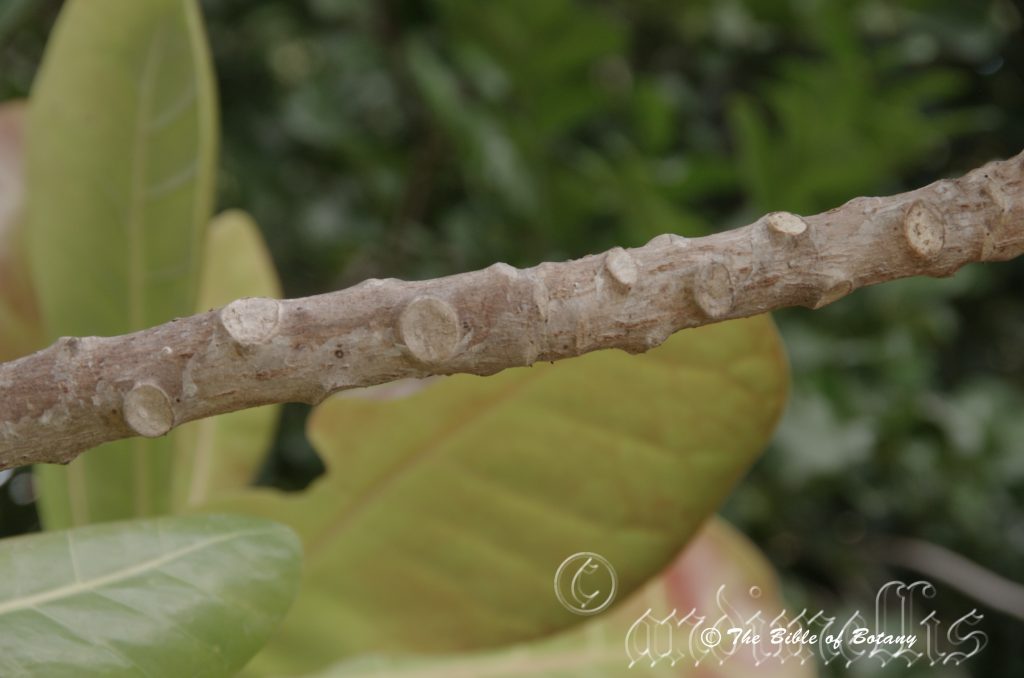
Condon Qld.
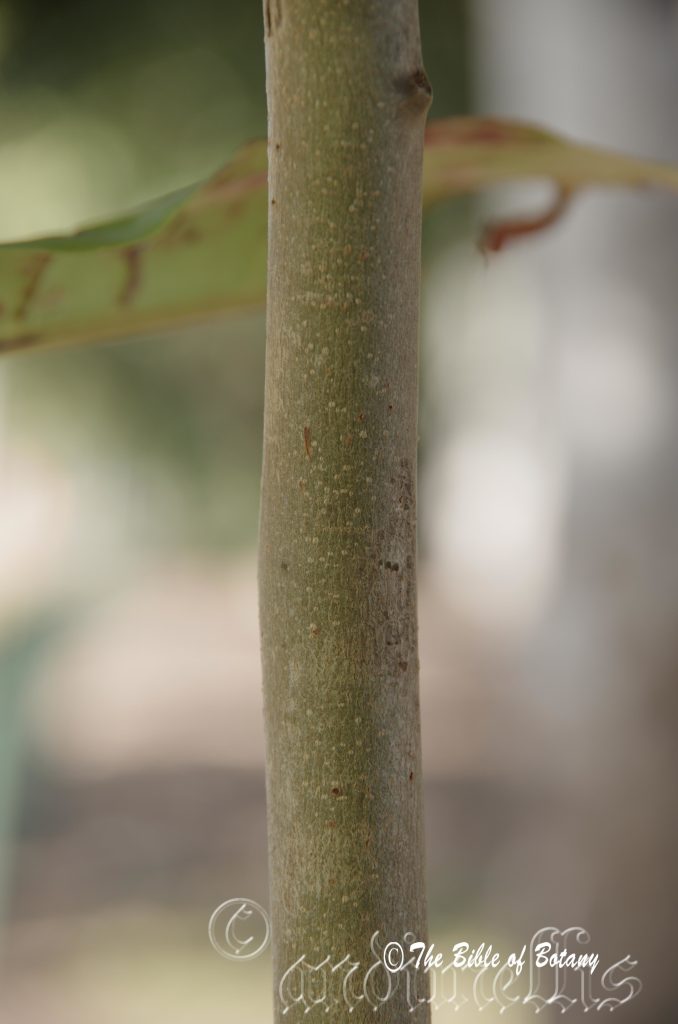
Condon Qld.
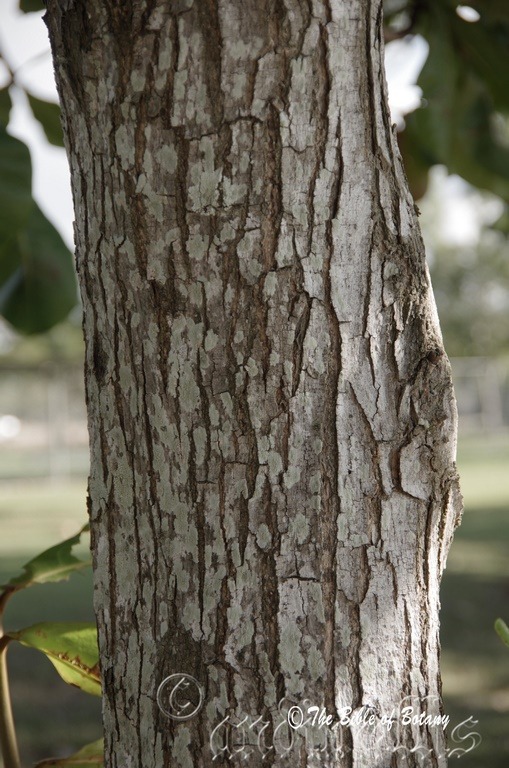
Condon Qld.
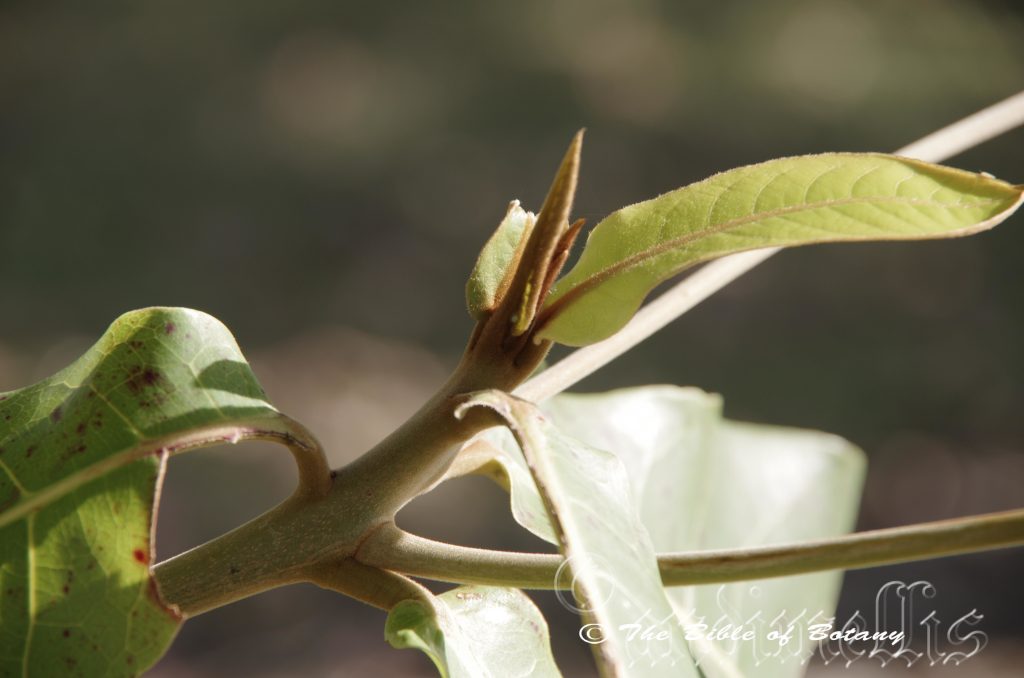
Condon Qld.
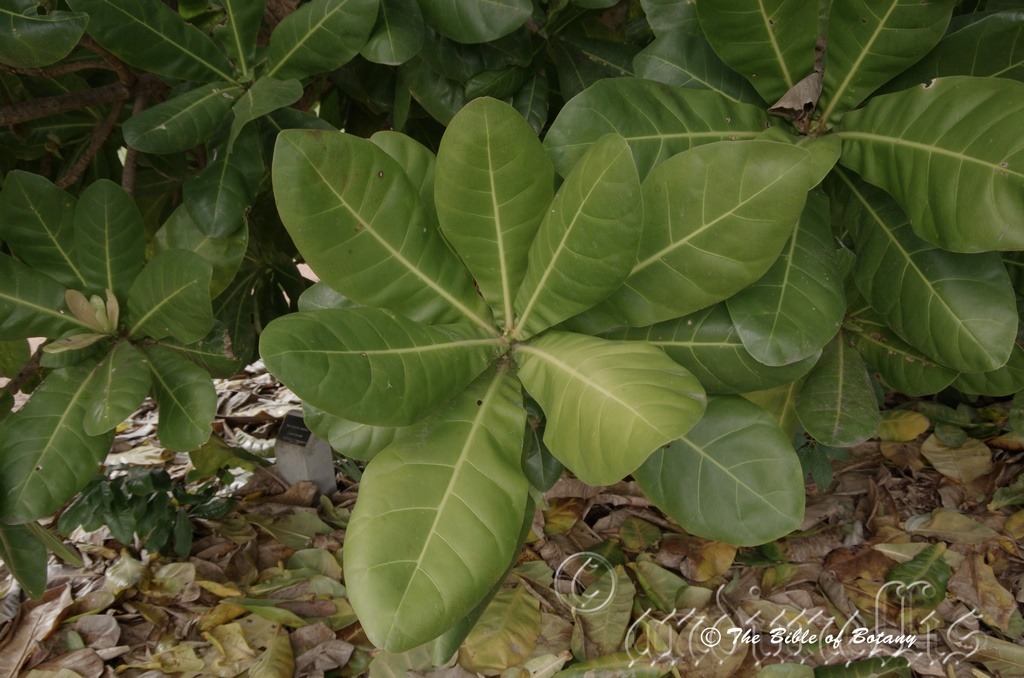
Anderson Gardens Townsville Qld.
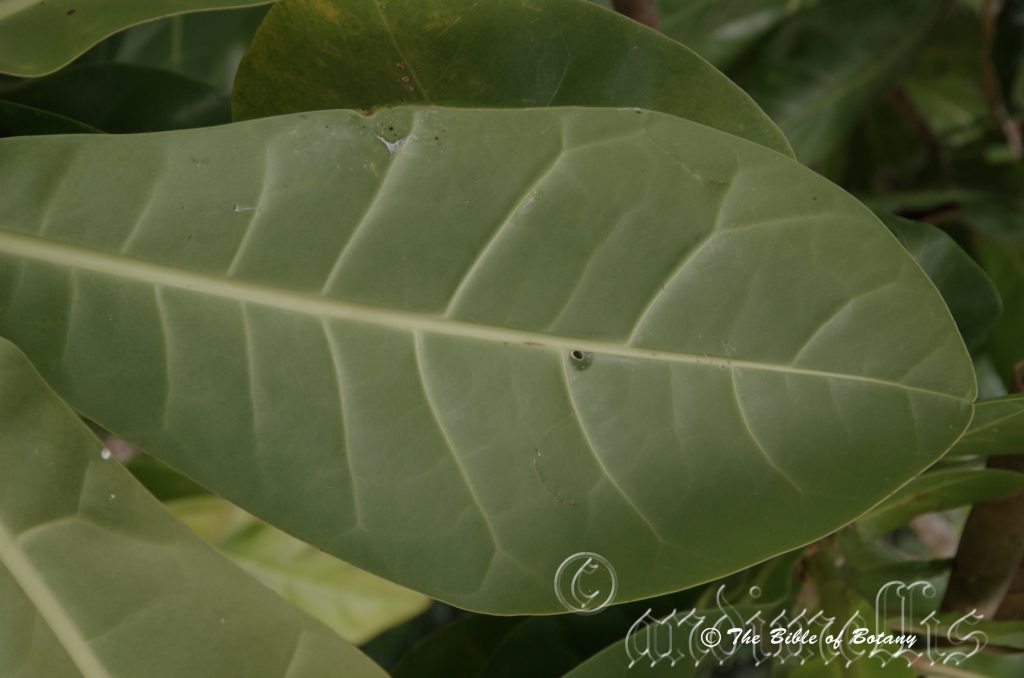
Anderson Gardens Townsville Qld.
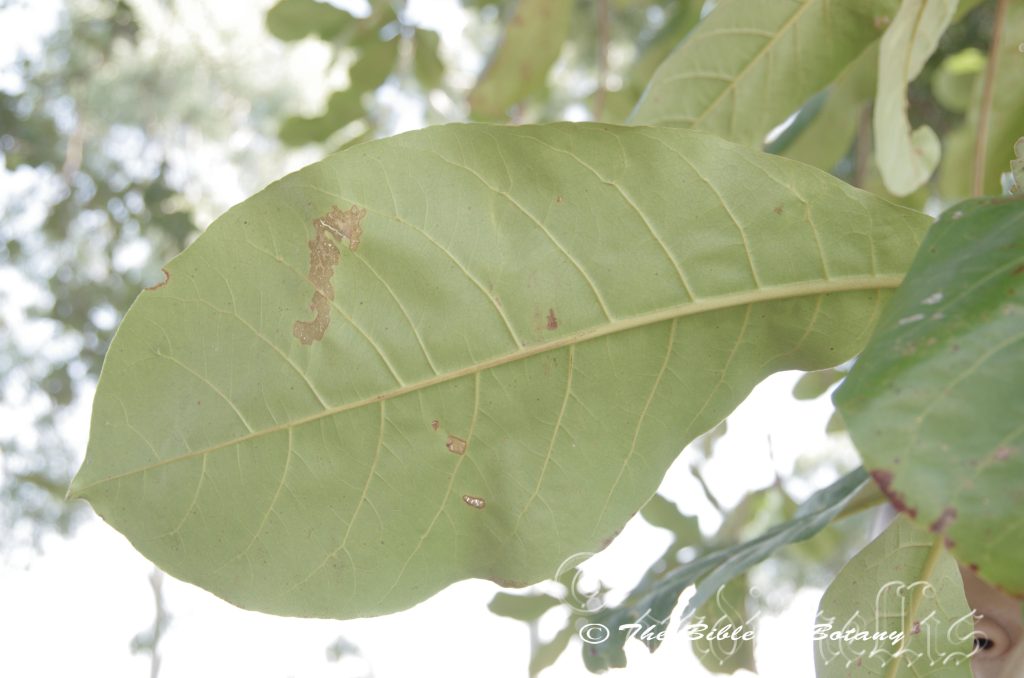
Condon Qld.
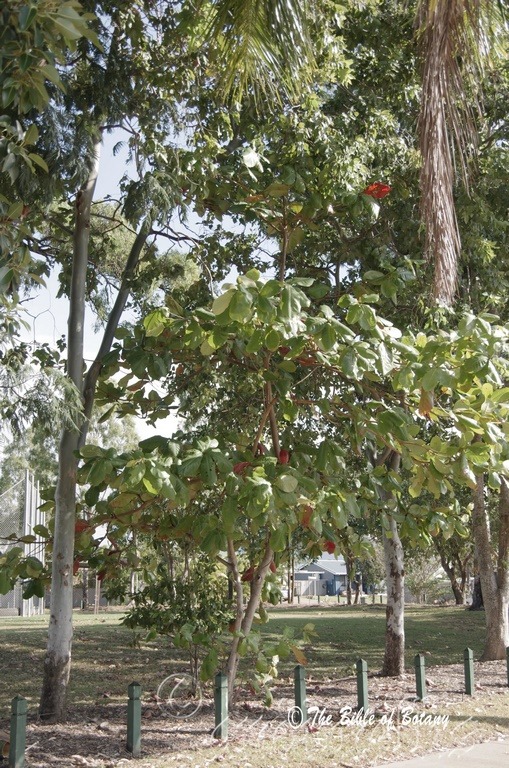
Condon Qld.

Condon Qld.
Barringtonia asiatica
Classification:
Phylum: Eudicots
Class: Asterids
Order: Ericales
Family: Lechythidaceae
Genus: Is named in honour of Daines Barringtonia; 1727-1800, who was an English barrister and naturalist.
Specie: From Asiatica, which is Latinized for from Asia. It refers to plants, which were first discovered from Asia or at times Asia Minor.
Subspecies:
Common name: Fresh Water Mangrove.
Distribution:
Barringtonia asiatica is found along the east coast of far north Queensland from the coastal edge of the Iron Range National Park to Bowen.
https://avh.ala.org.au/occurrences/search?taxa=Barringtonia+asiatica+#tab_mapView
Habitat Aspect Climate:
Barringtonia asiatica grows as a rheophytic medium tree in full sun. It grows in mangrove forests, open woodlands on saline flood plains, tidal river deltas or creeks, streams or rivers close to the coast. The altitude ranges from 1 meter BSL to 80 meters ASL
The temperatures vary from 10 degrees in August and of 38 degrees in February.
The rainfall is also quite variable from lows of 1000mm to areas with an average of 3200mm.
Soil Requirements:
Barringtonia asiatica prefers deep, organically rich, loamy silts, light muddy silts to heavy muddy silts. The soils are usually derived from decomposed sandstones, granites, brown basalts, black basalts, shales and metamorphic rocks laid down as alluvial deposits or at times accumulated muddy silts along estuaries. The soil’s pH ranges from 4pH to 8pH. It does not tolerate water logged soils. None saline soils to extremely saline soils are tolerated as are salt laden winds.
Height & Spread:
Wild Plants: 12m to 18m by 7m to 9m
Characteristics:
Barringtonia asiatica has a pale to mid grey and brown, rough patchwork bark with prominent horizontal ridges. The branches and branchlets are smoother with the horizontal ridges being less pronounced.
Barringtonia asiatica has large obovate leaves that measure 140mm to 400mm in length by 70mm to 170mm in width. The base is attenuate while the apex is broadly acute with a rounded or blunt tip. The discolourous laminas are mid green glabrous and semi glossy on the upper lamina while the lower lamina is paler. The mid vein is strongly prominent on the lower lamina for the first third and prominent thereafter. It is also bright yellow green in contrast to the lamina. The lateral veins are also prominent on the lower lamina and form furrows on the upper lamina making them clearly visible. The leaf margins curve slightly downwards from the mid vein and are entire. The petioles are sessile or measure 0mm to 3mm in length. New shoots are a light green often tinged bronze or pale green-bronze.
The inflorescences of Barringtonia asiatica are short pedicillate racemes born from the terminal, leaf axis or the previous season’s growth. The flowers are born singularly or in small clusters of 2 to 4 along the pedicle. There are 10 to 18 flowers on a pedicle that measures 40mm to 80mm. The calyx is fused to the sepals and measures 12mm to 20mm in length. The calyx splits into two unequal sections. The sepals are pale green and measure 7mm to 9mm in length including the 1.5mm to 2.5mm obtuse lobes. The obovate petals are white to pale pink and measure 55mm to 85mm in length. The long silky stamens are the most prominent feature of the plants and are white to a beautiful bright pink. They measure 80mm to 120mm in length. The 120mm style and calyx are persistent on the green fruit until the early stages of ripening. Flowers appear throughout the year.
Barringtonia asiatica’s fruits are very large 4 to 6 winged drupes. The green fruits swell and turn rusty brown on ripening. They measure 85mm to 110mm in length and 85mm to 100mm in width. They are square in cross section with rounded corners and extended at the thick corner wings. Like all fruits of plants that grow close to the ocean they float and do not absorb water.
Wildlife:
Barringtonia asiatica is an important fish breeding habitat in coastal zones especially in estuarine areas.
Cultivation:
Barringtonia asiatica make very good park trees in hot humid tropical areas close to the coast and can be grown on land that is occasionally inundated with salt water or suffer from salt sprays whipped up by the cyclonic winds. They grow 12 meters to 15 meters by 12 meters to 15 meters in cultivation. Trees may grow a lot smaller further south in cooler climates. These trees would make very good park trees in hot humid tropical areas close to the coast.
There were a couple of beautiful trees lining the old areas of Mount Isa back in the early 1970’s so I believe they would make very good shade trees in semi-arid areas close to homesteads and adjacent to septic trenches or drainage lines where adequate soil moisture is always present. They would be worth while trying as far south as Coff’s Harbour in frost free areas.
Barringtonia asiatica is a classically interesting and beautiful fast growing small tree with a short thick bole and large coriaceous leaves.
Three to five plants planted close together will give a rainforest look in a few years or coverage for a good B-B-Q area beneath. If they are planted in shady areas growth is checked which consistent with other mangrove specie.
It reaches its full potential of in just 5 or 7 years and will continue to grow slowly thereafter. Flowers commence from about the fourth year in the tropics.
Use plants with deep green smaller simple leaves or plants with deep green to deep blue-green feathery type foliage to the rear so that a strong contrast is made. Yellow flowered plants are an additional contrast which can add further colour to the garden or rainforest. A good selection would be Cassia brewsterii or Cassia tomentosa. In the foreground use prostrate plants or small shrubs with broad deep green leaves otherwise the plants will be lost in miniature jungle that will look very untidy. Ensure that the whole plant or at least most of it is on display from most sections of the garden as the flowers are a real bonus.
Think of using Barringtonia asiatica as the only tree in the yard and completely covering the ground in smaller pink and white flowering natives for a spectacular late spring, summer or autumn display of colour. The trees do not flower in winter in cooler areas. They should be tried as far south as Sydney in frost free areas.
Propagation:
Seeds: Barringtonia asiatica seeds can planted directly into their permanent positions or sown into a seed raising mix. When the seedlings are sown into a potting mix it is best to use 100mm native tubes. The seeds roots grow from the opposite end to that of the new shoot so they should be laid on their sides when planting. Cover the seeds in about 20mm of mix. Do not allow them to dry out at any stage as this will seriously check the plants or even kill them. To overcome this problem, place the tubes in a tray of water.
Once the seedlings reach 250mm to 350mm in height plant them out into their permanent position. Mass plantings can be achieved by spacing the plants at 7 meter to 8 meter centers.
Fertilize using Seaweed, fish emulsion or organic chicken pellets soaked in water on an alternate basis. Fertilize every two months until the plants are established then twice annually in early September or March to maintain better health, vitality and flowering.
Further Comments from Readers:
“Hi reader, it seems you use The Bible of Botany a lot. That’s great as we have great pleasure in bringing it to you! It’s a little awkward for us to ask, but our first aim is to purchase land approximately 1,600 hectares to link several parcels of N.P. into one at The Pinnacles NSW Australia, but we need your help. We’re not salespeople. We’re amateur botanists who have dedicated over 30 years to saving the environment in a practical way. We depend on donations to reach our goal. If you donate just $5, the price of your coffee this Sunday, We can help to keep the planet alive in a real way and continue to bring you regular updates and features on Australian plants all in one Botanical Bible. Any support is greatly appreciated. Thank you.”
In the spirit of reconciliation we acknowledge the Bundjalung, Gumbaynggirr and Yaegl and all aboriginal nations throughout Australia and their connections to land, sea and community. We pay our respect to their Elders past, present and future for the pleasures we have gained.

Mount Cootha Botanic Gardens Qld.
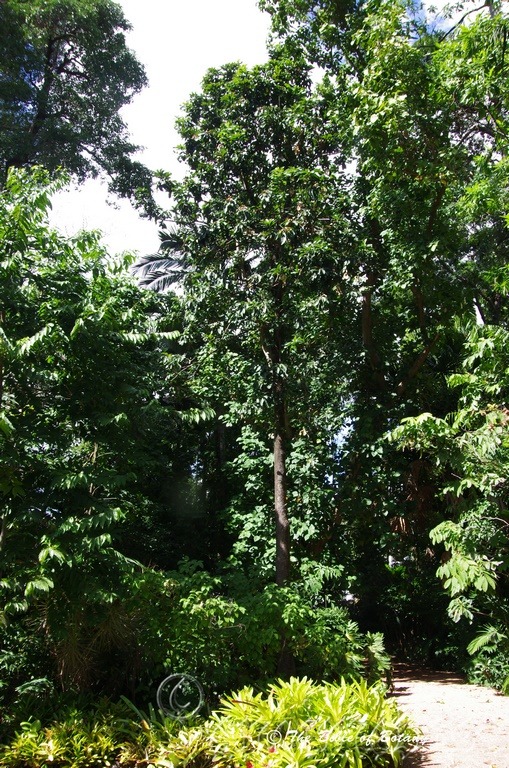
Mount Cootha Botanic Gardens Qld.

Townsville Qld.

Mount Cootha Botanic Gardens Qld.
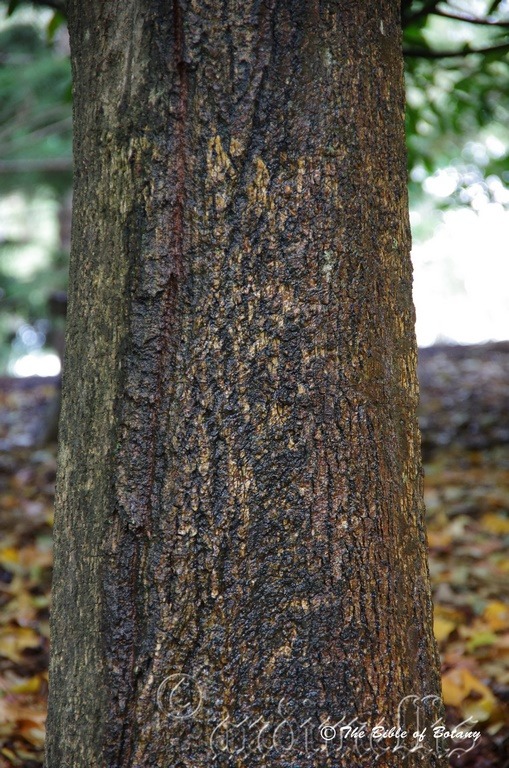
Townsville Qld.
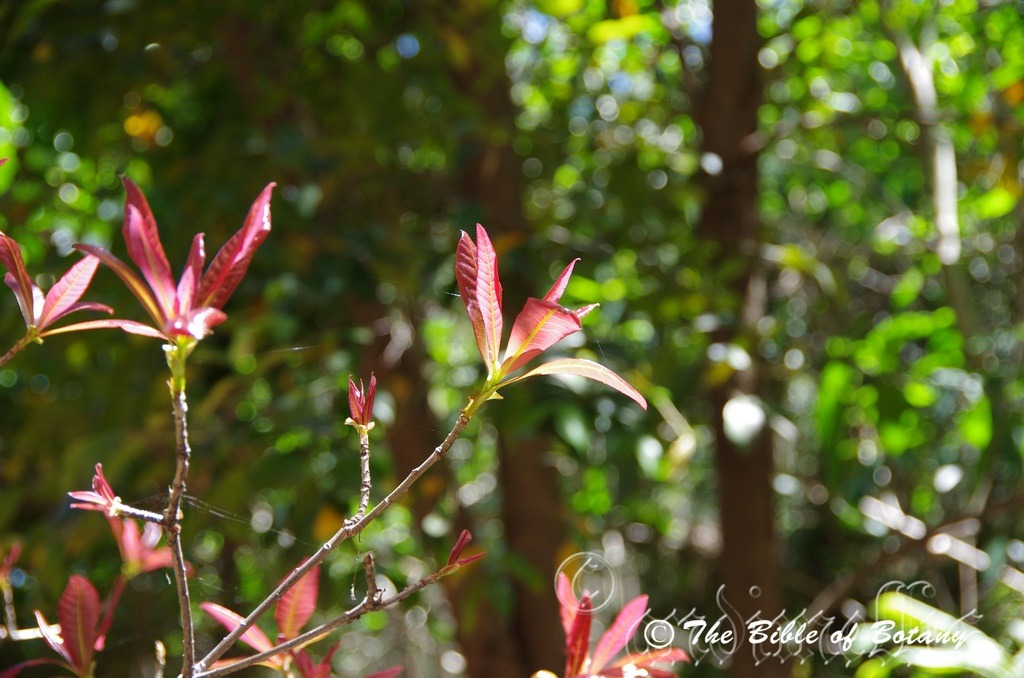
Mount Cootha Botanic Gardens Qld.


Mount Cootha Botanic Gardens Qld.
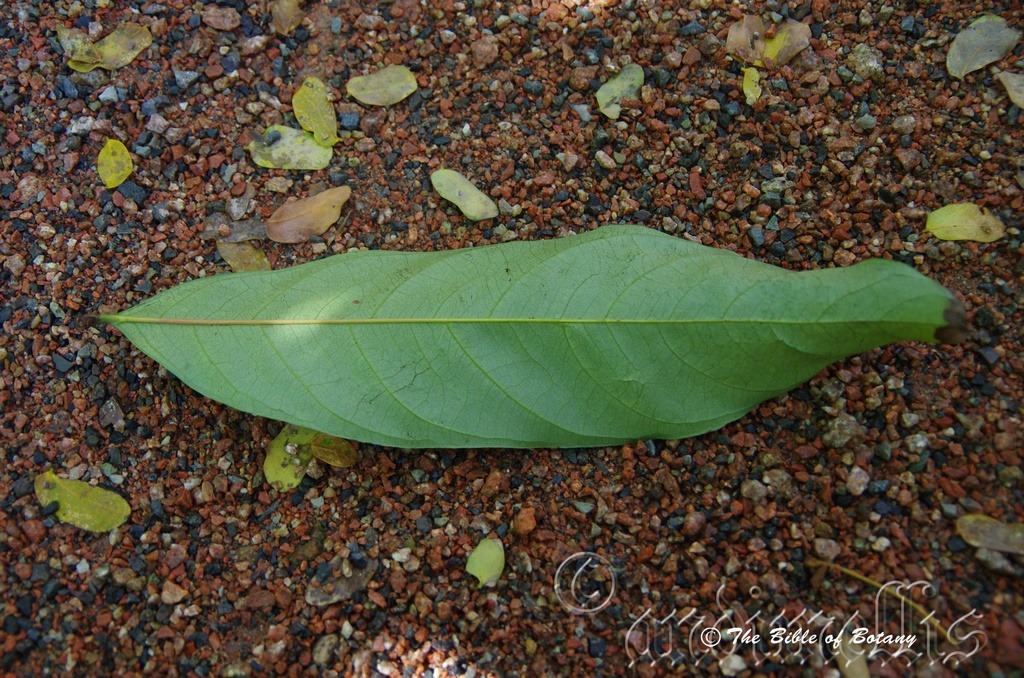
Townsville Qld.
Barringtonia calyptrata
Classification:
Phylum: Eudicots
Class: Asterids
Order: Ericales
Family: Lechythidaceae
Genus: Is named in honour of Daines Barringtonia; 1727-1800, who was an English barrister and naturalist.
Specie: From Kalyptra, which is Ancient Greek for a cap or hood. It is that section that forms a cap at the end of a growing point such as the caps found on the buds of Eucalyptus flowers.
Subspecies:
Common name: Cassowary Pine.
Distribution:
Barringtonia calyptrata is found along the east coast of far north Queensland from the tip of Cape York Peninsular and as far south as the Mitchell Alice River National Park on the west side of Cape York Peninsular and south of Townsville on the eastern side. It is also found on the Torres Straight Islands.
https://avh.ala.org.au/occurrences/search?taxa=Barringtonia+calyptrate+#tab_mapView
Habitat Aspect Climate:
Barringtonia calyptrata grows in full sun to dappled light shade. It grows in mangrove forests, on coastal beaches, saline flood plains, saline river deltas or creeks, streams or rivers close to the coast. It is also found in littoral and lowland rainforests. The altitude ranges from 1 meter BSL to 200 meters ASL
The temperatures vary from winter lows of 10 degrees and summer highs of 38 degrees.
The rainfall ranges from lows of 1000mm to an average of 3200mm.
Soil Requirements:
Barringtonia calyptrata prefers deep, organically rich, loamy silts, light muddy silts to heavy muddy silts. The soils are usually derived from decomposed sandstones, granites, brown basalts, black basalts, shales and metamorphic rocks laid down as alluvial deposits or at times accumulated muddy silts along estuaries. The soil’s pH ranges from 4pH to 8pH. It does not tolerate water logged soils. Very saline soils to extremely saline soils are tolerated as are salt laden winds.
Height & Spread:
Wild Plants:18m to 30m by 10m to 14m
Characteristics:
Barringtonia calyptrata has a dark grey-brown bark which is fibrous when pulled from the trunk or branches. The trunk is scalloped vertically with fine horizontal ridges with fine scabrous or farinaceous markings. The trunk is pale grey-brown or pale olive brown due to lichen growth and is often characterized by the lichens and mosses assembled along the trunk and larger branches. The branches and branchlets are generally glabrous slightly scabrous and covered in green algae’s or lichens. Juvenile branchlets are glabrous mid green. Trunk forms a small buttress on large trees.
Barringtonia calyptrata’s alternate, elliptical leaves that measure 150mm to 390mm in length by 60mm to 130mm in width. The bases are cuneate or at times cuneate-attenuate for a short distance along the petioles while the apexes are broadly acuminate. The discolourous laminas are dull mid green and glabrous on the upper lamina while the lower lamina is paler. The mid vein and main lateral veins are strongly prominent on the lower lamina. The mid vein is visible on the upper lamina being paler and recessed. The lamina is undulating from the base to the apex with the toughs forming around the lateral veins. The leaf margins curve slightly upwards and are flat and entire. The petioles measure 15mm to 35mm in length. New shoots are a light green, glabrous and bronze coloured. Old leaves turn bright red before falling.
The inflorescences of Barringtonia calyptrata are long pendulant racemes. The flowers are born singularly in loose whirls of 3 along the rachis. There are 30 to 66 flowers on a rachis which measure 250mm to 300mm in length and are born along the old wood or at times on the trunk. The individual flowers are sessile. The elliptical petals are white and measure 10mm to 30mm in length by 5mm to 15mm in width. The long stamens are the most prominent feature of the plants and are white or cream to lemon yellow. The stamens measure 25mm to 35mm in length. The 30mm to 40mm long style and 40mm by 35mm calyx are persistent on the green fruit until the early stages of ripening. Flowers appear from August to September.
Barringtonia calyptrata’s fruits are very large ovoid or spindle shaped drupes that measure 50mm to 95mm in length and 45mm to 65mm in width. They are green turning a deep blue-purple with a white waxy coating when ripe. The calyx and style are persistent on the fleshy fruits even when they are ripe. The fruits are unusual in that they develop the roots and shoots from the opposite ends of the seed.
Wildlife:
Cassowaries are the main venue for distributing the seeds to other parts of the rainforest as they feed on the fruits and discharge the seeds with their feces. Queensland fruit fly also attacks the fruit as they ripen and are probably a source of protein for the cassowaries.
Cultivation:
It would make an good fire retardant medium to large tree.
* Fire retardant plants act as radiant heat screens and absorb more heat from an approaching fire without burning.
* Fire retardant trees are able reduce wind speed near a house or out buildings.
* Fire retardant also trap embers and sparks carried by the wind.
* Fire retardant ground covers are able to catch burning embers without catching fire themselves, and also slow the travel of a fire through debris and litter on the ground.
Barringtonia calyptrata make very good park trees in hot humid tropical areas close to the coast and can be grown on land that are frequently flooded during storms and periods of prolonged rain. They grow 18 meters to 25 meters by 15 meters to 18 meters in cultivation so are only really suitable to large gardens and parks. Trees may grow a lot smaller further south in cooler climates. These trees would make very good park trees in hot humid tropical areas close to the coast or in low land districts and should be tried further south at least to the far north Coast of New South Wales in frost free areas.
Barringtonia calyptrata is a classically interesting and beautiful fast growing large tree with a short thick bole and large coriaceous leaves.
Three to five plants planted close together will give a rainforest look in a few years or coverage for a good B-B-Q area beneath. If they are planted in shady areas growth is checked which consistent with other mangrove specie.
It will flower from 5 or 7 years of age.
Use plants with deep green smaller simple leaves or plants with deep green to deep blue-green feathery type foliage to the rear so that a strong contrast is made. Yellow flowered plants are an additional contrast which can add further colour to the garden or rainforest. A good selection would be Cassia brewsterii or Cassia tomentosa. In the foreground use prostrate plants or small shrubs with broad deep green leaves otherwise the plants will be lost in miniature jungle that will look very untidy. Ensure that the whole plant or at least most of it is on display from most sections of the garden as the flowers are a real bonus.
Think of using Barringtonia calyptrata as the only tree in the yard and completely covering the ground in smaller pink and red flowering natives for a spectacular late spring, summer or autumn display of colour. The trees do not flower in winter in cooler areas. They should be tried as far south as Sydney in frost free areas.
Propagation:
Seeds:
Barringtonia calyptrata seeds can be sown directly into their permanent positions or sown into a seed raising mix. When the seedlings are sown into a potting mix it is best to use 100mm native tubes. The seeds roots grow from the opposite end to that of the new shoot so they should be laid on their sides when planting. Cover the seeds in about 20mm of mix. Do not allow them to dry out at any stage as this will seriously check the plants or even kill them. To overcome this problem, place the tubes in a tray of water.
Once the seedlings reach 250mm to 350mm in height plant them out into their permanent position. Mass plantings can be achieved by spacing the plants at 7 meter to 8 meter centers.
Fertilize using Seaweed, fish emulsion or organic chicken pellets soaked in water on an alternate basis. Fertilize every two months until the plants are established then twice annually in early September or March to maintain better health, vitality and flowering.
Further Comments from Readers:
“Hi reader, it seems you use The Bible of Botany a lot. That’s great as we have great pleasure in bringing it to you! It’s a little awkward for us to ask, but our first aim is to purchase land approximately 1,600 hectares to link several parcels of N.P. into one at The Pinnacles NSW Australia, but we need your help. We’re not salespeople. We’re amateur botanists who have dedicated over 30 years to saving the environment in a practical way. We depend on donations to reach our goal. If you donate just $5, the price of your coffee this Sunday, We can help to keep the planet alive in a real way and continue to bring you regular updates and features on Australian plants all in one Botanical Bible. Any support is greatly appreciated. Thank you.”
In the spirit of reconciliation we acknowledge the Bundjalung, Gumbaynggirr and Yaegl and all aboriginal nations throughout Australia and their connections to land, sea and community. We pay our respect to their Elders past, present and future for the pleasures we have gained.
Bauera capitata
Classification:
Class: Equtsetopsida
Subclass: Magnoliidae
Superorder: Rosanae
Order: Oxalidales
Family: Cunoniaceae
Genus: Is named in honour of brothers Franz Bauera; 1758-1840, and Ferdinand Bauera; 1760-1826, who were botanical artists for Sir Joseph banks and Mathew Flinders.
Specie: From Capill?ta, which is Latin for a pin head. It refers to the flowers being in heads.
Sub specie:
Common Name: Northern Dog Rose.
Distribution:
Bauera capitata is found south from Deepwater and Fraser Island in south east Queensland to of Port Hacking in New South Wales. There is a disjunct population further north in Eurimbula National Park and west away from the coastal plains near Tamworth.
https://avh.ala.org.au/occurrences/search?taxa=Bauera+capitata+#tab_mapView
Habitat Aspect Climate:
Bauera capitata prefer full sun to dappled shade. It usually grows adjacent to wallums in coastal heathlands behind coastal frontal dunes, tidal estuaries or adjacent to littoral rainforests. The altitude ranges from 3 meter ASL to 400 meters ASL.
The temperatures range from minus 1 degree in July to 38 degrees in January.
The rainfall ranges from lows of 450mm to 2400mm average per annum.
Soil Requirements:
Bauera capitata prefers deep, coarse sands, fine sands, and sandy loams to light fatty clays. The soils are usually derived from accumulated peaty beach sands or decomposed granites. The soil’s pH ranges from 4.5pH to 5.5pH. It does not tolerate water logged soils however the soils usually maintain moisture through capillary action. None saline soils to extremely saline soils are tolerated.
Height & Spread:
Wild Plants:0.3m to 0.6m by 0.8m to 1.2m
Characteristics:
Bauera capitata grows as a multi stemmed small scrambling shrub. There is a woody root stock similar to a lignotuber which the plant can grow from following cold fires. The bark is a dull to semi glossy and pale brown. The juvenile branchlets and stems are pink to red and sparsely to densely covered in long white pilose hairs.
Bauera capitata’s mid green linear to narrow oblong leaves are in irregular whorls on the stems. The disjunct internodes are 5mm to 10mm long. The leaves, measure 3mm to 7mm in length by 1mm to 2mm in width. The bases are truncate, while the apexes are obtuse with or without a small mucronate tip. The discolourous lamina are mid green and glabrous on the upper lamina and paler on the upper lamina. The leaf margins are entire or with a single lobe near the apex on each margin. The leaflets are sessile.
The 20mm inflorescences of Bauera capitata are clustered from the terminals or from special side shoots towards the ends of the branchlets. The 4 pale green to white sepals are oblong to linear with two distinct side lobes near the apex. The lobes measure 1mm to 1.2mm in length. The glabrous sepals are semi glossy and measure 3mm to 4mm in length by 1mm to 1.5mm in width and are narrow acute at the apex and have truncate base. The 8 pale pink to bright pink or rarely white petals measure 6mm to 8mm in length by 2mm to 3mm in width. The 8 stamens measure 2.2mm to 2.5mm in length with deep maroon anthers and white pollen. The inflorescences are sessile or carried on short petioles to 1 mm in length. Shrubs have some flowers all year with a mass display during November
The capsules of Bauera capitata measure 4mm to 5mm in length by 4mm to 5mm in width and dry to a reddish brown colour. The numerous small black 1mm oval seeds ripen in February.
Wildlife:
Bauera capitata is unknown to the author.
Cultivation:
Bauera capitata is a beautiful small scrambling shrub that looks great in the garden as a fill in plant especially around water features plant especially when mass planted. They often reach their full potential of 1 meter in just 1 year and flower from the second year. Plants in cultivation will grow to 0.5 meter to 0.8 meters by 0.8 meters to 1 meter in diameter. Plants respond to light or heavy pruning and shaping individual plants is very easy. Tip pruning is beneficial to ensure the shrubs remain compact and bushy. Plants can be easily trained to grow as ground covers or over rocks in rockeries and over rock or log walls.
It is ideal for growing between other plants where they can scramble over its neighbours without strangling them.
For the successful growing of Bauera capitata soils must have even moisture content throughout the year. It is also imperative to note that the shrubs prefer an even soil temperature so to alleviate fluctuations ensure there is always a deep layer of leaf litter or mulch. This is essential for its survival and good flowering displays. In saying this when the position is found in the garden then they can be one of Australia’s most satisfying shrubs to grow.
Flower stems can be harvested as cut flowers. Flowers can also be used to float on water in flat vases or saucers.
It is best positioned where dappled light prevails or mid-day shade. When grown in heavy shade they will resort to becoming straggly and will send out one or two leading shoots.
Propagation:
Seeds:
Bauera capitata seeds can be sown directly into a seed raising mix. Cover the seeds to 2mm and water thoroughly keeping the mix damp but not wet.
When the seedlings are 25mm to 50mm tall, prick them out in pairs or threes and plant them into 50mm native tubes using a seed raising mix.
Once the seedlings reach 100mm to 150mm in height tip prune them and then plant them out into their permanent position. Mass plantings can be achieved by planting them at of 0.5 meter centers.
Cuttings: Use 100mm long softwood cuttings that are prepared from the new growth of woody plants, just as it begins to harden (mature). Shoots are suitable for making softwood cuttings when they can be snapped easily when bent and when they still have a gradation of leaf size (oldest leaves are mature while newest leaves are still small). For most woody plants, this stage occurs in May, June, or July in frost free zones in the north. The soft shoots are quite tender, and extra care must be taken to keep them from drying out. The extra effort pays off, because they root quickly.
1 Prepare the cutting mix by adding one third sharp clean river sand, one third peat and one third perlite. These ingredients are sterile,
2 Select good material from non diseased plants,
3 Select semi green stems for cuttings. Look for a stem with two or three nodes,
4 Place the cutting on a flat, hard surface, and make a clean slice through the middle of the lower node on an angle towards the base, with a sterilized sharp knife or razor blade. – This scarification of the node will increase the chances of roots emerging from this spot. Now remove all but one or two the leaves, leaving the apex leaves in tact. If the leaves are very large in proportion to the stem, cut off the apical halves.
5 Some plants root easily, but a rooting hormone can help others by stimulating the cutting into sending out new roots. Fill a saucer with water, and place some rooting hormone into another container like a bottle top. Dip the node end of the cutting into the water and then into the rooting hormone. Tap off any excess hormone,
6 Use a small dipple stick or old pencil to poke a hole into the soilless potting mix. Ensure the hole is slightly larger than the stem diameter and be careful not to wipe the rooting hormone off the cuttings base, place the cuttings in a pattern ensuring the cuttings are not touching each other,
7 I like to place the pots in Plastic bags to help maintain temperature and moisture. Place in a semi shaded place like under 50mm shade cloth.
8 When the cuttings have struck, open the bag to allow air circulation for a few days to a week,
9 Once hardened off remove the cuttings from the bag and allow to further hardening for a few more days,
10 Transplant into a good potting mix to grow on.
Fertilize using Seaweed, fish emulsion or organic chicken pellets soaked in water on an alternate basis. Fertilize every two months until the plants are established then twice annually in early September or March to maintain better health, vitality and flowering.
Further Comments from Readers:
“Hi reader, it seems you use The Bible of Botany a lot. That’s great as we have great pleasure in bringing it to you! It’s a little awkward for us to ask, but our first aim is to purchase land approximately 1,600 hectares to link several parcels of N.P. into one at The Pinnacles NSW Australia, but we need your help. We’re not salespeople. We’re amateur botanists who have dedicated over 30 years to saving the environment in a practical way. We depend on donations to reach our goal. If you donate just $5, the price of your coffee this Sunday, We can help to keep the planet alive in a real way and continue to bring you regular updates and features on Australian plants all in one Botanical Bible. Any support is greatly appreciated. Thank you.”
In the spirit of reconciliation we acknowledge the Bundjalung, Gumbaynggirr and Yaegl and all aboriginal nations throughout Australia and their connections to land, sea and community. We pay our respect to their Elders past, present and future for the pleasures we have gained.
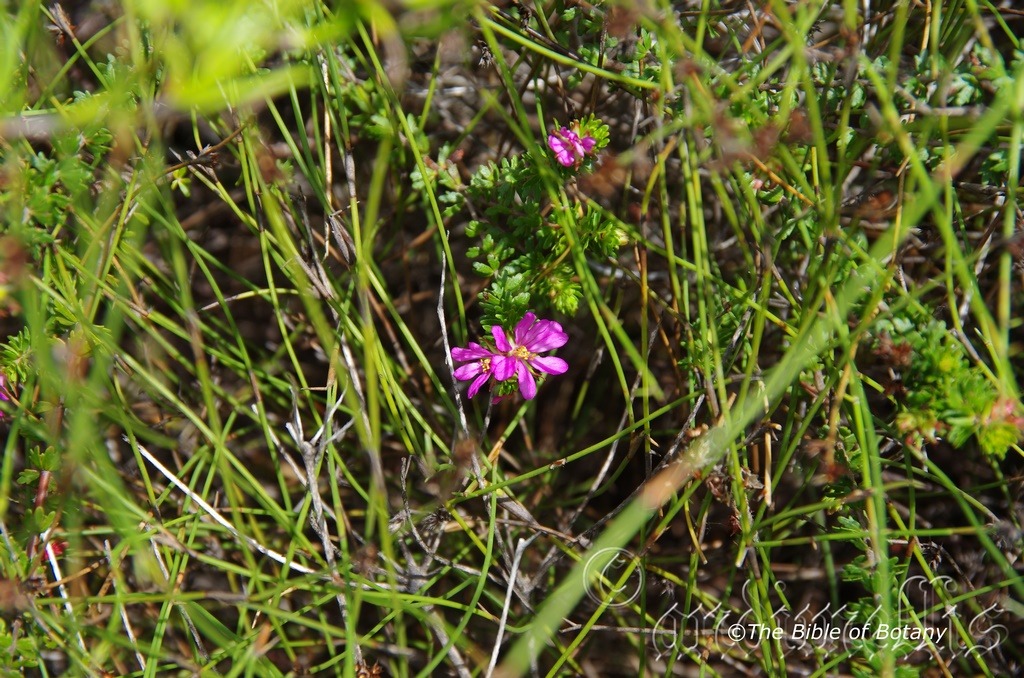
Barkoom Yuryaigir National Park NSW
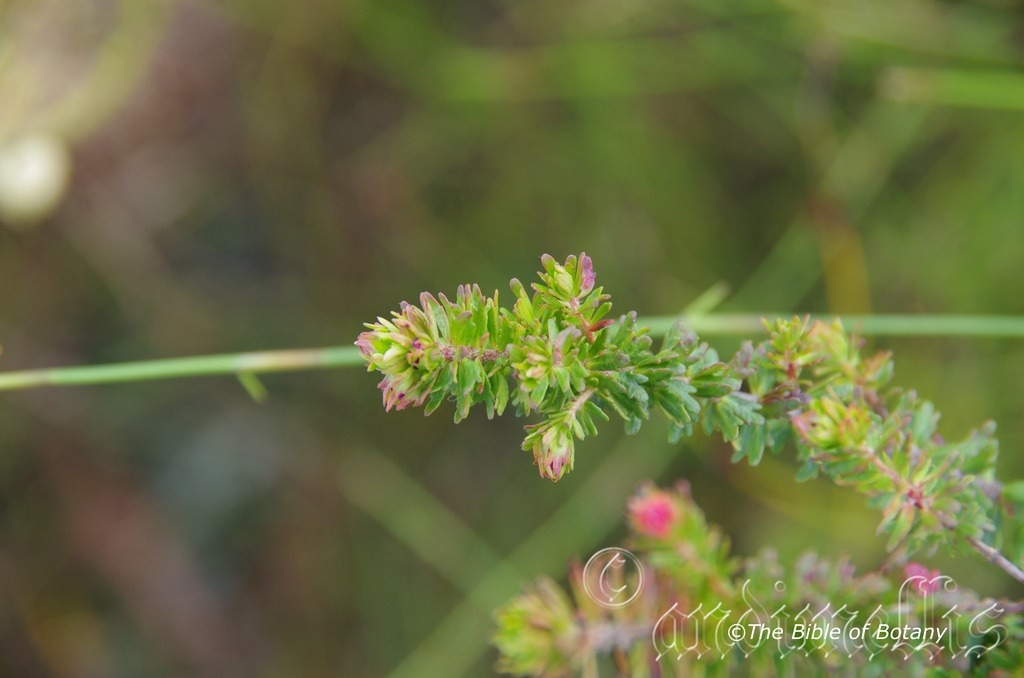
Barkoom Yuryaigir National Park NSW
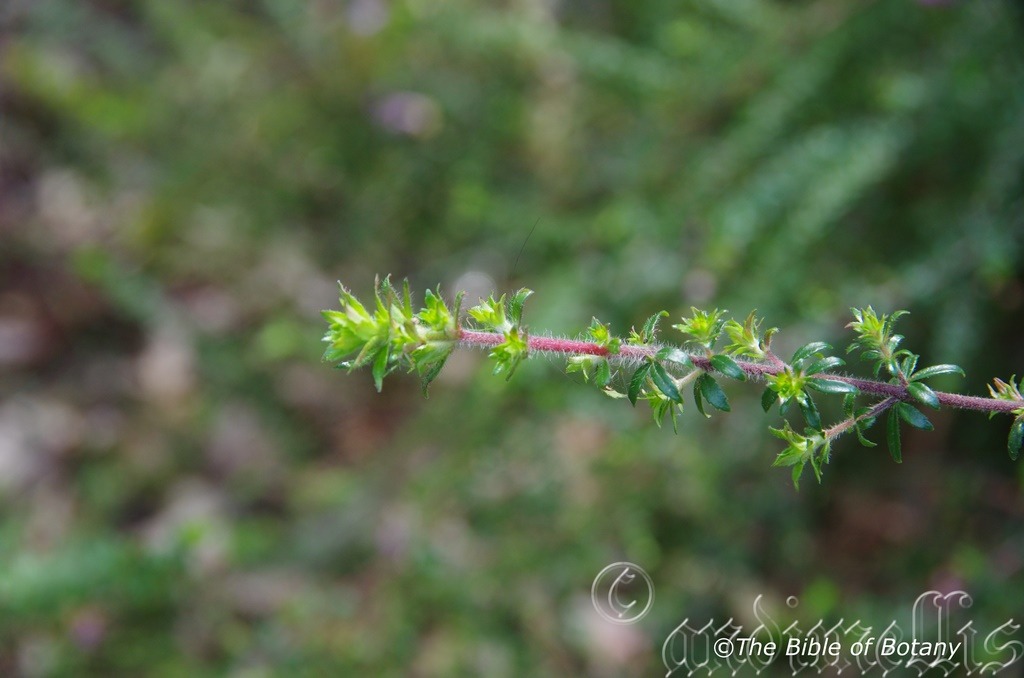
National Botanic Gardens Canberra ACT

Barkoom Yuryaigir National Park NSW

National Botanic Gardens Canberra ACT
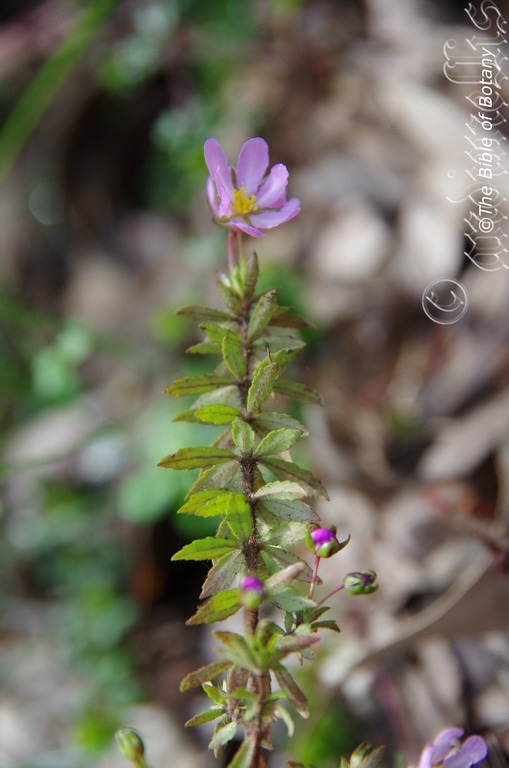
National Botanic Gardens Canberra ACT

National Botanic Gardens Canberra ACT
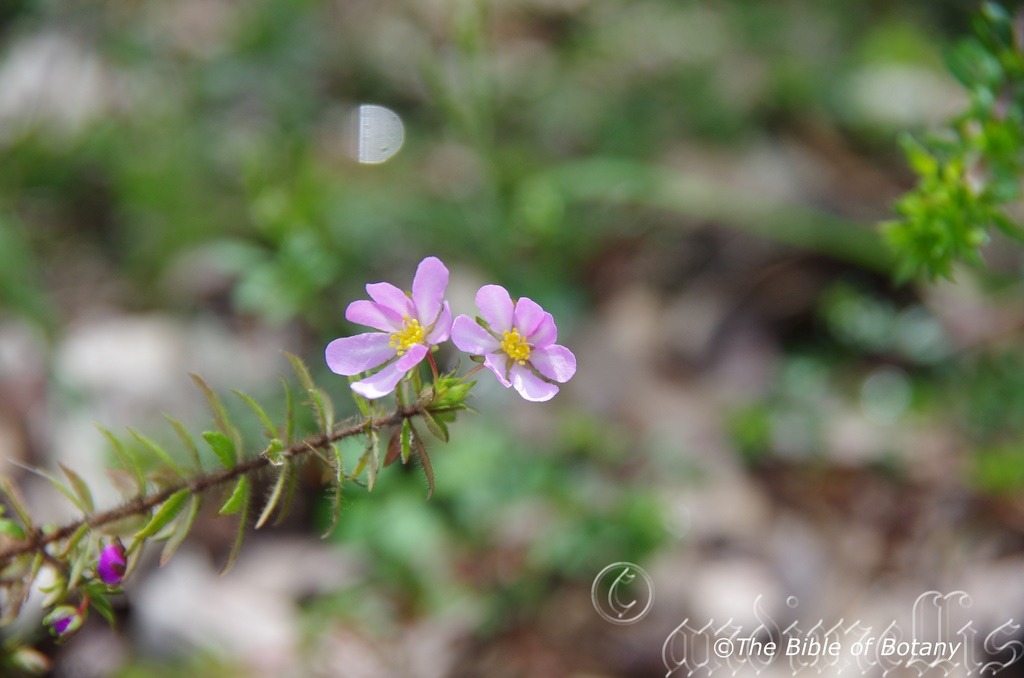
National Botanic Gardens Canberra ACT
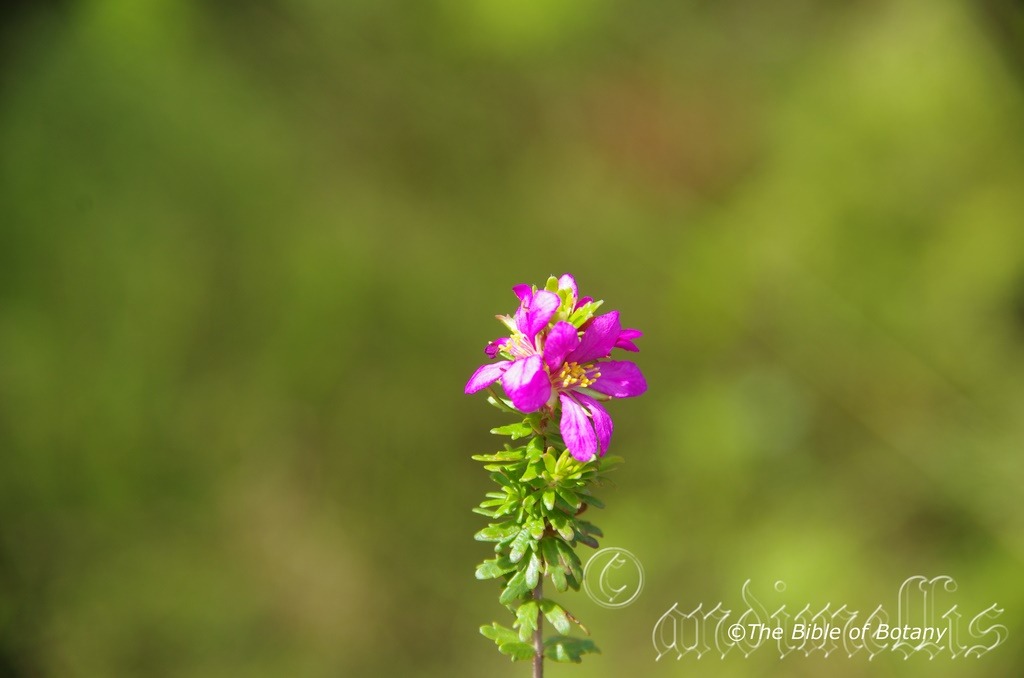
Barkoom Yuryaigir National Park NSW

National Botanic Gardens Canberra ACT
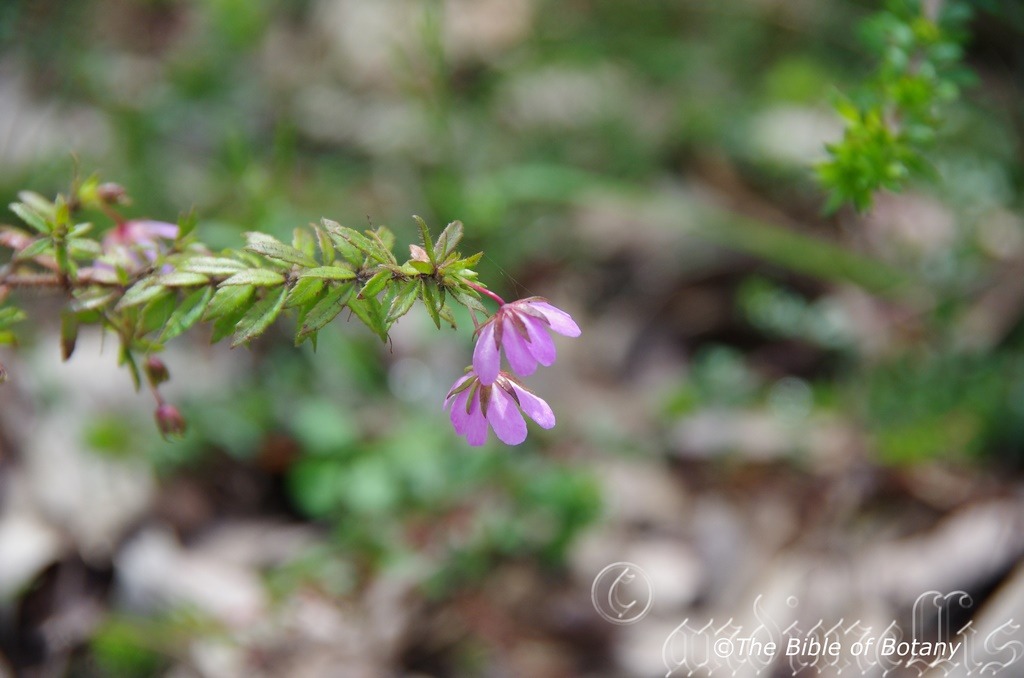
National Botanic Gardens Canberra ACT
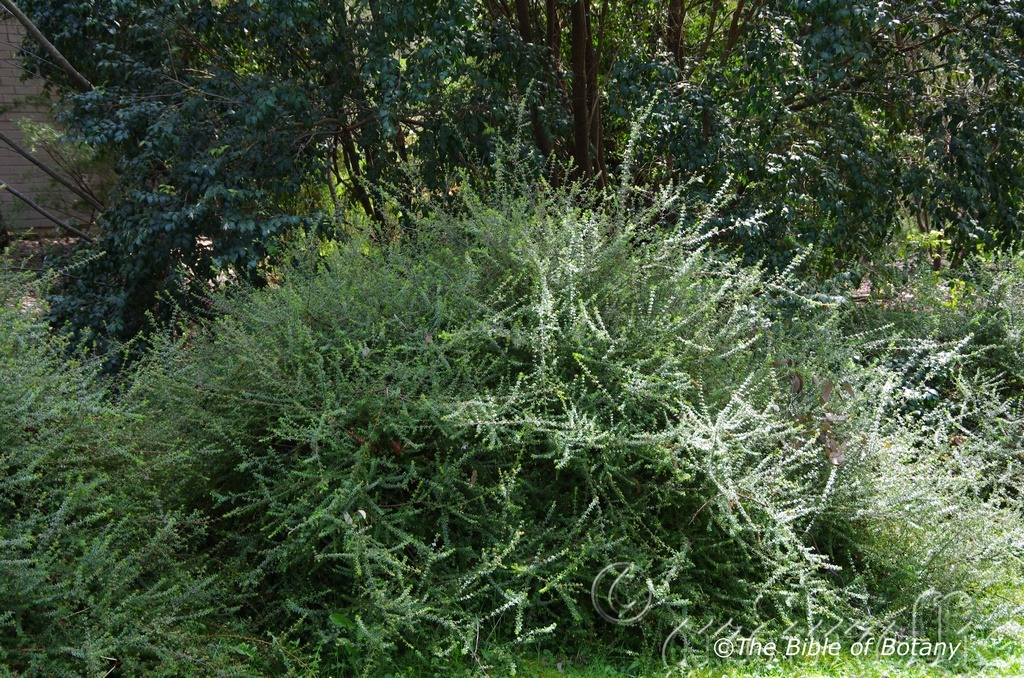
National Botanic Gardens Canberra ACT
Bauera rubioides
Classification:
Class: Equitsetopsida
Subclass: Magnoliidae
Superorder: Rosanae
Order: Oxalidales
Family: Cunoniaceae
Genus: Is named in honour of brothers Franz Bauera; 1758-1840, and Ferdinand Bauera; 1760-1826, who were botanical artists for Sir Joseph banks and Mathew Flinders.
Specie: From Rubios, which is Latin for ruby-red and Eîdos/Oides, which is Ancient Greek for alike or similar to. It refers to the colour of flowers or stems which have a deep red colour similar to that of a ruby.
Sub specie:
Common Name: Dog Rose.
Distribution:
Bauera rubioides is found south from the Queensland, New South Wales border to the southern tip of Tasmania and west to Mount Gambier and the Narrcorte coastal Plain and Kangaroo Island in southern South Australia.
https://avh.ala.org.au/occurrences/search?taxa=Bauera+rubioides+#tab_mapView
Habitat Aspect Climate:
Bauera rubioides prefer full sun to light dappled shade. It grows in coastal wallums mountain swamps and marshes or in and around shallow ephemeral pools along the Great Dividing Range down to the coast. The altitude ranges from 3 meters ASL to 1350 meters ASL
The temperatures range from minus 6 degrees in July to 38 degrees in January.
The rainfall ranges from lows of 450mm to 2400mm average per annum.
Soil Requirements:
Bauera rubioides prefers deep, sandy loams, light fatty clays to medium gravelly clays. The soils are usually derived from decomposed sandstones granites, or accumulated peaty beach sands. The soil’s pH ranges from 4.5pH to 6pH. It does not tolerate water logged soils however the soils retain moisture usually by seepages or capillary action. It is also sensitive to soil temperature fluctuations so soils with deep layers of leaf litter are essential for its survival. None saline soils to moderately saline soils are tolerated.
Height & Spread:
Wild Plants: 1.5m x 3m to 2m x 2m
Characteristics:
Baurea rubioides grows as a multi stemmed small scrambling shrub of wallums or moist forest floors. The bark is a dull to semi glossy light brown on older plants. The light pinkish brown to red young branchlets are sparsely to densely covered in long white pilose hairs.
Baurea rubioides dark green oblong to narrow elliptical leaves are in whorls on the stems. The internodes measure 10mm to 40mm in length. The leaves are in two opposite leaves each with three leaflets. The leaflets measure 6mm to 15mm in length by 2.5mm to 3.5mm in width. The petiole is sessile or measures less than 1mm in length. The bases are cuneate, while the apexes are narrow acute. The concolourous laminas are pale grass-green however the lower lamina is sparsely covered in long white pilose hairs while the upper lamina is glabrous. The leaf margins have 4 to 10 fine teeth on each margin.
The 20mm inflorescences of Baurea rubioides’s are clustered from the nodes towards the ends of the branchlets. The 8 red, green or red-green sepals measure 6mm to 8mm in length by 3mm to 4mm. They are linear with a truncate base while the apex is narrow acute apex. The 8 pale pink to bright pink or rarely white petals measure 6mm to 8mm in length by 3mm to 4mm in width. The 30 to 90 usually 50 to 60 stamens measure 3mm to 4mm in length. They are white with deep bright yellow anthers. The white style is divided close to the base into two where they recurve backwards at 180 degrees to each other. It measures 5mm to 8mm in length. The inflorescences are usually nodding that is they hang downwards. The wiry pedicels measure 6mm to 18mm in length. Shrubs have some flowers all year with a mass display during November and December.
The capsules measure 4mm to 5mm in length by 4mm to 5mm in width dry to a reddish brown colour. The numerous small black 1mm oval seeds ripen in February.
Wildlife:
Bauera rubioides’s wildlife is unknown to the author.
Cultivation:
Bauera rubioides is a beautiful shrub that looks great in the garden as a feature plant especially when mass planted. It often reaches its full potential of 1 meter to 1.5 meters in height by 2 meters to 2.5 meters in diameter in just 3 years and flower from the second year. It is ideal in cold mountainous areas in temperate Australia. Baurea rubioides are rather fussy outside their natural habitat so mimicking the habitat is the most important aspect of successful cultivation.
For the successful growing of Bauera rubioides soils must have even moisture content throughout the year. It is also imperative to note that the shrubs are very sensitive to soil temperature fluctuations so soils with deep layers of leaf litter or mulch are essential for its survival and good flowering displays. Deep sandy loams will also be a benefit as the offer the chance for the roots to penetrate deeper into the cooler substrata of the garden. Large rocks or logs can also assist in keeping the soil cooler and moist during hot dry summers. In saying this when the position is found in the garden then they can be one of Australia’s most satisfying shrubs to grow.
Flower stems can be harvested as cut flowers. Flowers can also be used to float on water in flat vases or saucers.
It is best placed where dappled light prevails or mid-day shade. When grown in heavy shade they will resort to becoming straggly and will send out one or two leading shoots.
Plants respond to light or heavy pruning and shaping individual plants is very easy. Tip pruning is beneficial to ensure the shrubs remain compact and bushy. Pruning is essential for the plants to develop a dense smaller plant with hundreds of stems. If this is not done the plants tend to grow with scrambling heath habit. Plants can be easily trained to grow as ground covers or over rocks in rockeries and over rock or log walls. It is suitable for stabilizing shady, moist banks when mass planted close together.
Propagation:
Seeds:
Bauera rubioides seeds can be sown directly into a seed raising mix. Cover the seeds to 2mm and water thoroughly keeping the mix damp but not wet.
When the seedlings are 25mm to 50mm tall, prick them out in pairs or threes and plant them into 50mm native tubes using a seed raising mix.
Once the seedlings reach 100mm to 150mm in height tip prune them and then plant them out into their permanent position. Mass plantings can be achieved by planting them at 1.5 meters to 2.5 meters.
Cuttings: Use 100mm long softwood cuttings that are prepared from the new growth of woody plants, just as it begins to harden (mature). Shoots are suitable for making softwood cuttings when they can be snapped easily when bent and when they still have a gradation of leaf size (oldest leaves are mature while newest leaves are still small). For most woody plants, this stage occurs in May, June, or July in frost free zones in the north. The soft shoots are quite tender, and extra care must be taken to keep them from drying out. The extra effort pays off, because they root quickly.
Take them in mid-autumn or late spring. Remove half the leaves from the bottom section being careful not to tear the bark. Take a 10mm slice off the bark from the bottom of the cutting on one side. Using a weak rooting hormone, dip the cutting in and place it into a moist sterile seed raising mix. When the cuttings have obviously struck and have developed good roots treat them as for seedlings.
Fertilize using Seaweed, fish emulsion or organic chicken pellets soaked in water on an alternate basis. Fertilize every two months until the plants are established then twice annually in early September or March to maintain better health, vitality and flowering.
Further Comments from Readers:
“Hi reader, it seems you use The Bible of Botany a lot. That’s great as we have great pleasure in bringing it to you! It’s a little awkward for us to ask, but our first aim is to purchase land approximately 1,600 hectares to link several parcels of N.P. into one at The Pinnacles NSW Australia, but we need your help. We’re not salespeople. We’re amateur botanists who have dedicated over 30 years to saving the environment in a practical way. We depend on donations to reach our goal. If you donate just $5, the price of your coffee this Sunday, We can help to keep the planet alive in a real way and continue to bring you regular updates and features on Australian plants all in one Botanical Bible. Any support is greatly appreciated. Thank you.”
In the spirit of reconciliation we acknowledge the Bundjalung, Gumbaynggirr and Yaegl and all aboriginal nations throughout Australia and their connections to land, sea and community. We pay our respect to their Elders past, present and future for the pleasures we have gained.

Mount Cootha Botanic gardens Qld.
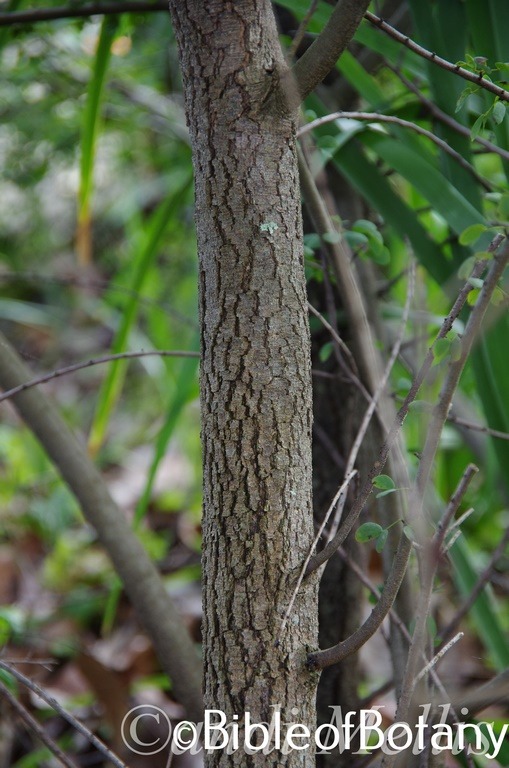
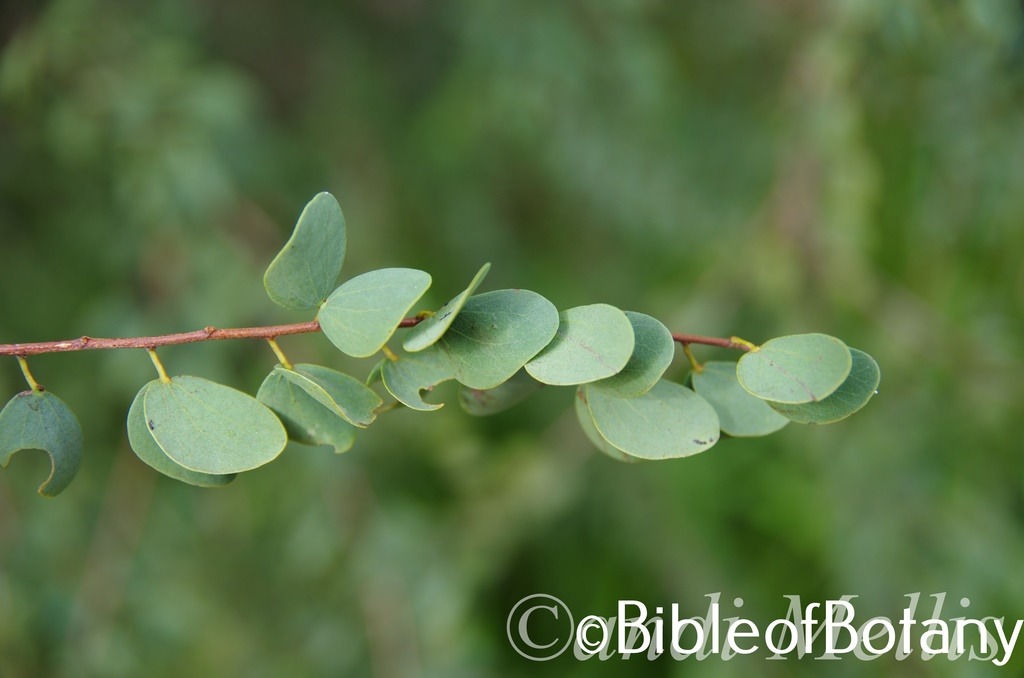


Bauhinia binata
Classification:
Phylum: Eudicots
Class: Rosids
Order: Fabales
Family: Fabaceae
Subfamily: Caesalpinioideae
Tribe: Cericdeae
Genus: Is named in honour of brothers Gaspard Bauhin or Caspar Bauhin; 1560–1624), who was a Swiss botanist whose Phytopinax in 1596 described thousands of plants and classified them in a manner that draws similarities to the binomial nomenclature developed of Linnaeus and Johann/Jean Caspar Bauhin; 1541–1613, who was a Swiss botanist.
Specie: From Bi/Bis, which are Ancient Greek and later Latin for two and Atus to be processive of. It usually plants that pocess leaves, which are distinctly found in pairs.
Sub specie:
Common Name: Butterfly orchid Tree.
Distribution:
Bauhinia binata is found in scattered populations east from Cambridge Gulf in far north hern Western Australia through to around Darwin and Thursday Island and the far north eastern corner of the Northern Territory. In Queensland it is found along the coastal fringe from near Weipa to Abbott Bay except for an isolated population a little inland long Glenmore Creek.
It is also found on Christmas Island, Formosa, Indonesia, Malaysia, New Guinee and the Philippines.
https://avh.ala.org.au/occurrences/search?taxa=Bauhinia+binata+#tab_mapView
Habitat Aspect Climate:
Bauhinia binata prefer full sun to dappled shade. It grows in open woodlands, dry Eucalyptus forests, moist Eucalyptus forests or adjacent to monsoonal vine forests close to coastal shorelines. It is also found along dry beach fronts especially behind the frontal dunes along estuaries and adjacent to mangrove forests. The altitude ranges from 5 meters ASL to 60 meters ASL
The temperatures range from 10 degrees in July to 39 degrees in January.
The rainfall ranges from lows of 950mm to 3200mm average per annum.
Soil Requirements:
Bauhinia binata prefers deep sands to sandy loams. The soils are usually derived from accumulated sands, peaty beach sands or sandy alluvials. The soil’s pH ranges from 7pH to 8pH. It does not tolerate water logged soils. None saline soils to moderately saline soils are tolerated.
Height & Spread:
Wild Plants:3m to 5m by 4m to 6m
Characteristics:
Bauhinia binata grows as a large vine-shrub. The vine’s stems measure 60mm in diameter. The vine will flower and fruit in its immature shrubbery stage.
Bauhinia binata’s alternate bi-compound leaflets are broad reniform and measure 20mm to 45mm in length by 12mm to 35mm in width. The stipules measure 1mm to 1.5 mm in length. The petioles measure 25mm to 40mm in length while the leaflets are sessile. The sessile leaflets have 3 to 5 veins radiating from the base. The leaf petiole measures 10mm to 1 mm in length, while the caducous stipules measure less than 1 mm in length. The weak tendrils are few and usually present on the smaller twigs and branches.
Inflorescences of Bauhinia binata are born in short corymbs which bear 10 to 12 individual flowers on 8mm to 10mm pedicels. The hypanthium tube is striate and sparsely covered in fine pubescent hairs and measures 5mm to 8mm in length. Sepals The 5 lanceolate sepals have an acute apex and measure 5mm to 6mm in length. The white to pale purplish petals have deeper purple veins, are narrowly ovate and measure 8mm to 20mm in length. The shortly clawed petals are moderately covered in white, pubescent externally and sparsely covered in white pubescent hairs internally. The 10 red stamens are subequal with the filaments measuring 15mm to 20mm in length, while the linear anthers have a linear slit and measure 2mm to 3mm in length. Ovary The stipitate, glabrous ovary measures 8mm to 10mm in length and has a 2mm to 3mm stipe. The red style measures 5mm with a red peltate stigma.
Bauhinia binata flowers from the onset of the first rains prior to the leaves reshooting through to the end of Autumn. Flowering appears to be more prolific following a prolonged cool dry season period.
The fruits of Bauhinia binata are slightly inflated curved pods measure 100mm to 200mm in length by 20mm to 30mm in width. They are slightly restricted between the seeds. The base and apex are obtuse. The style is persistent on the green pods. There are 6 to 12 hard, brown-black seeds in each pod, which measure 8mm to 10mm in diameter.
Wildlife:
Bauhinia binata’s wildlife is unknown to the author.
Cultivation:
Bauhinia binata is a beautiful dernse, scrambly shrub that would be very suitable for growing in tropical native gardens. It is ideal for coastal situations where its height is fairly consistent.
Add to the above, if it is given adequate moisture, plenty of mulch for moisture retention and an even soil temperature, applying native fertilizers on a regular basis the plants will respond with fantastic flowering displays over a long period. I have always been amazed that Bauhinia species are still not being grown outside the tropics. I believe it could be grown as far south as Woolongong and on the west coast as far south as Perth.
If it is surrounded by shorter plants with fine foliage and pink, red or lavender flowers it will dominate at the center giving height and strength to the bed especially when it is in flower. Do not use plants with large leaves as these will be too overpowering and they will blend into each other despite Bauhinia binata having bilobed leaves. Planted with a mass of smaller plants and ground covers with mixed coloured flowers and green foliage will ensure a great display during the winter and spring months and for the rest of the year. This would be particularly strong, if a mixture of different finer foliage of different colours and textures are incorporated together. Be sure to plant any plant exactly in the center for a formal look or well off to one side for an informal look.
Propagation:
Seeds:
Bauhinia binata seeds do not require treatment before sowing. Sow fresh seeds directly into a seed raising mix and cover with 5mm of the mix. When the seedlings are 25 to 50 mm tall, prick them out and plant them into 50mm native tubes using a seed raising mix.
Once the seedlings reach 150 to 200mm in height plant them out into their permanent position. Mass plantings can be achieved with spacing of 2 meters. When planting for the fruit in an orchard, plant the seedlings at 3 meter spacing’s so easy pruning and harvesting can take place.
Cuttings: Use 150mm to 270mm long hardwood cuttings that are taken from dormant, mature stems in late autumn, winter, or early spring. Plants generally are fully dormant with no obvious signs of active growth. The wood is firm and does not bend easily. Hardwood cuttings are used most often when the plants are in a deciduous state of dormancy but can be used when the trees have no signs of any activity.
1 Prepare the cutting mix by adding one third sharp clean river sand, one third peat and one third perlite. These ingredients are sterile,
2 Select good material from non diseased plants,
3 Select previous season stems for cuttings in late winter as the apical buds begin to swell. Look for stems with three or four nodes that are between 10mm and 150mm in length,
4 Place the cutting on a flat, hard surface, and make a clean slice through the middle of the lower node on an angle towards the base, with a sterilized sharp knife or razor blade. – This scarification of the node will increase the chances of roots emerging from this spot. Now remove all but one or two the leaves, leaving the apex leaves in tact. If the leaves are very large in proportion to the stem, cut off the apical halves.
5 Some plants root easily, but a rooting hormone can help others by stimulating the cutting into sending out new roots. Fill a saucer with water, and place some rooting hormone into another container like a bottle top. Dip the node end of the cutting into the water and then into the rooting hormone. Tap off any excess hormone,
6 Use a small dipple stick or old pencil to poke a hole into the soilless potting mix. Ensure the hole is slightly larger than the stem diameter and be careful not to wipe the rooting hormone off the cuttings base, place the cuttings in a pattern ensuring the cuttings are not touching each other,
7 I like to place the pots in Plastic bags to help maintain temperature and moisture. Place in a semi shaded place like under 50% shade cloth.
8 When the cuttings have struck, open the bag to allow air circulation for a few days to a week,
9 Once hardened off remove the cuttings from the bag and allow to further hardening for a few more days,
10 Transplant into a good potting mix to grow on.
Fertilize using Seaweed, fish emulsion or organic chicken pellets soaked in water on an alternate basis. Fertilize every two months until the plants are established then twice annually in early September or March to maintain better health, vitality and flowering.
Further Comments from Readers:
“Hi reader, it seems you use The Bible of Botany a lot. That’s great as we have great pleasure in bringing it to you! It’s a little awkward for us to ask, but our first aim is to purchase land approximately 1,600 hectares to link several parcels of N.P. into one at The Pinnacles NSW Australia, but we need your help. We’re not salespeople. We’re amateur botanists who have dedicated over 30 years to saving the environment in a practical way. We depend on donations to reach our goal. If you donate just $5, the price of your coffee this Sunday, We can help to keep the planet alive in a real way and continue to bring you regular updates and features on Australian plants all in one Botanical Bible. Any support is greatly appreciated. Thank you.”
In the spirit of reconciliation we acknowledge the Bundjalung, Gumbaynggirr and Yaegl and all aboriginal nations throughout Australia and their connections to land, sea and community. We pay our respect to their Elders past, present and future for the pleasures we have gained.
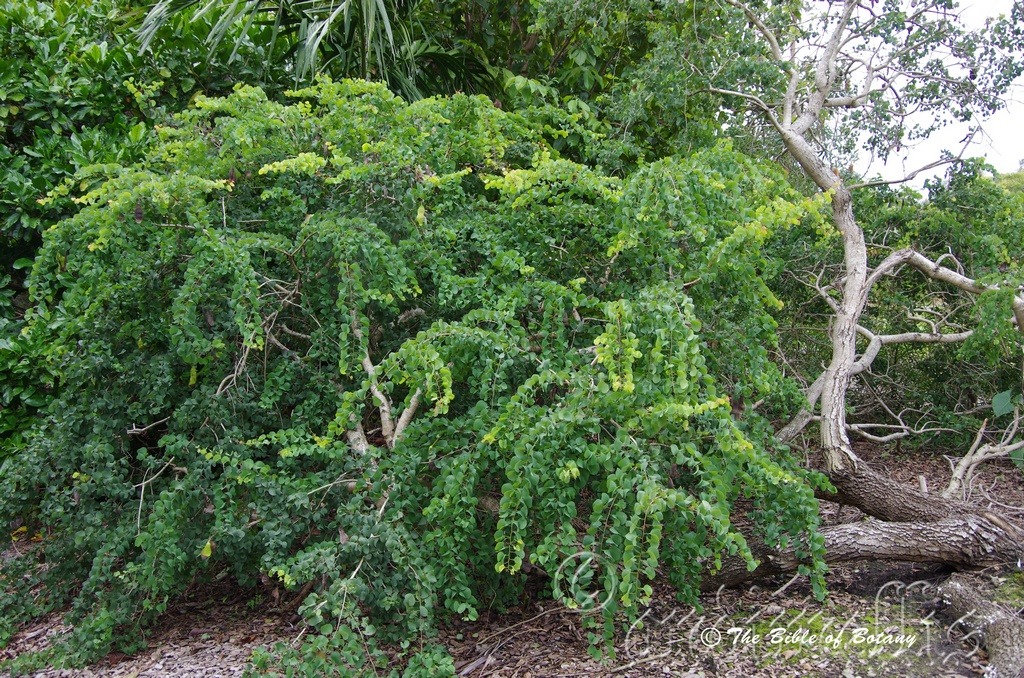

Castle Hill Townsville Qld.

Castle Hill Townsville Qld.

Coffs Harbour Botanic Gardens NSW
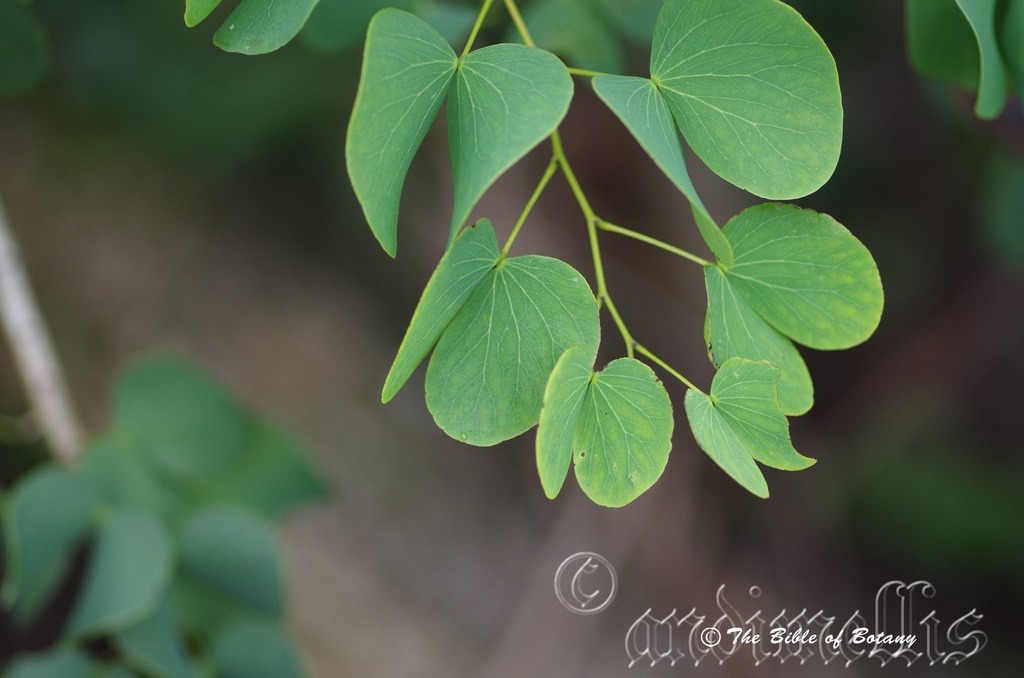
Coffs Harbour Botanic Gardens NSW
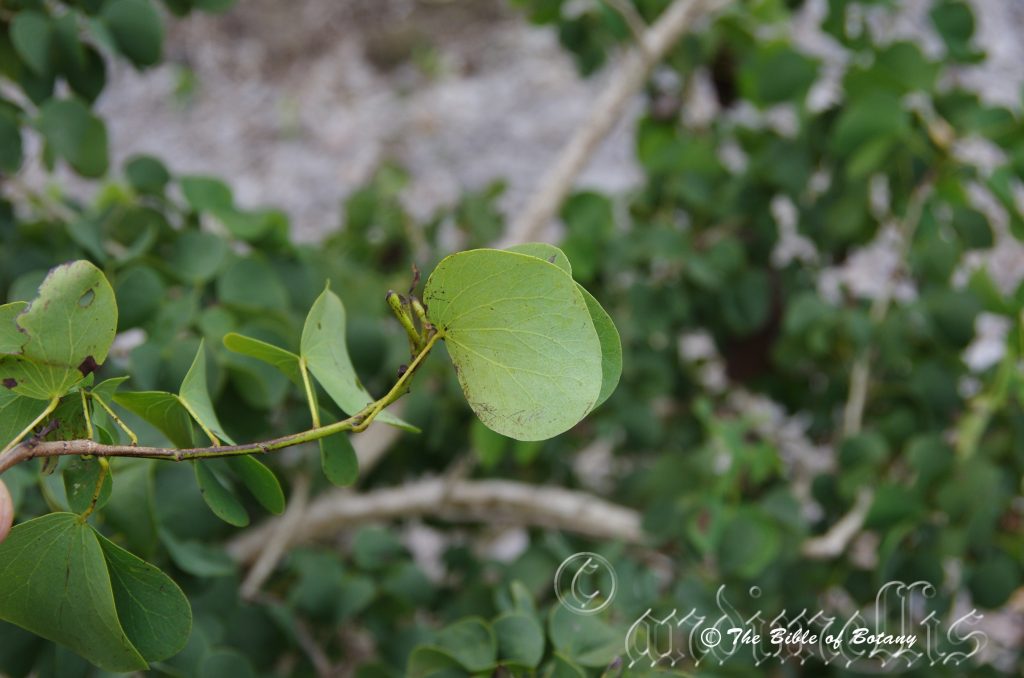
Coffs Harbour Botanic Gardens NSW

Coffs Harbour Botanic Gardens NSW

Coffs Harbour Botanic Gardens NSW
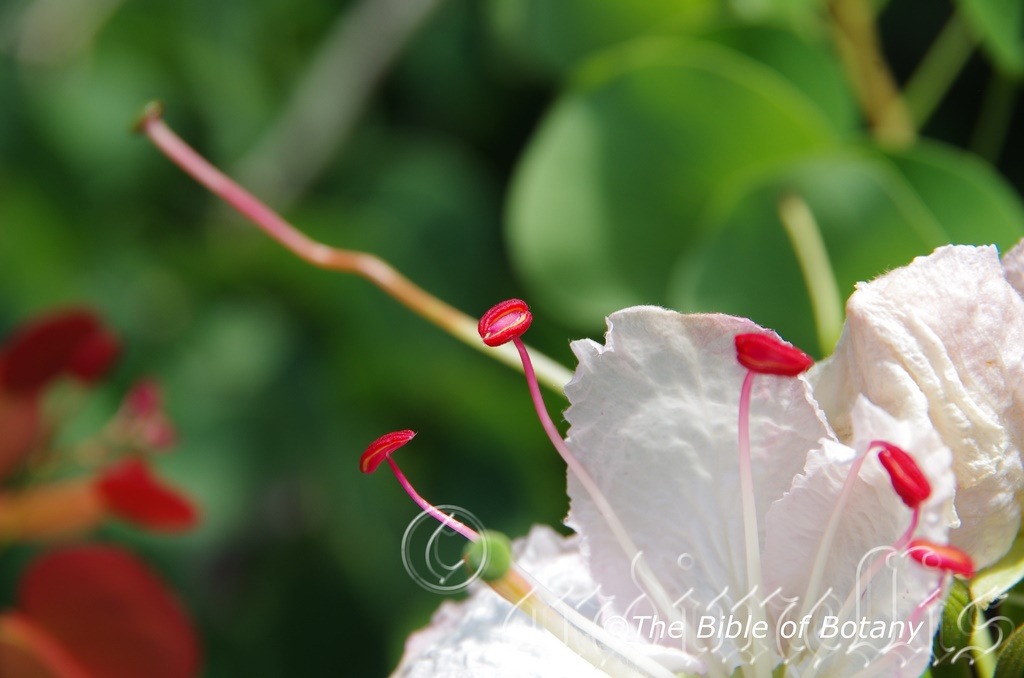
Coffs Harbour Botanic Gardens NSW

Coffs Harbour Botanic Gardens NSW

Coffs Harbour Botanic Gardens NSW
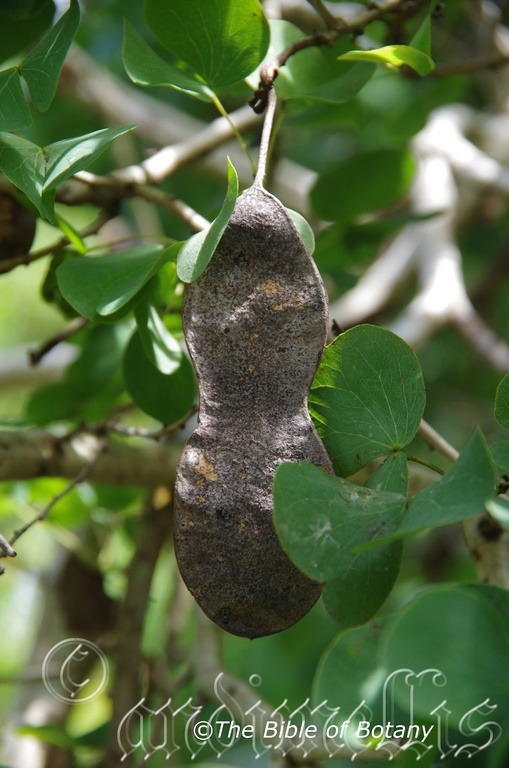
Coffs Harbour Botanic Gardens NSW

Coffs Harbour Botanic Gardens NSW
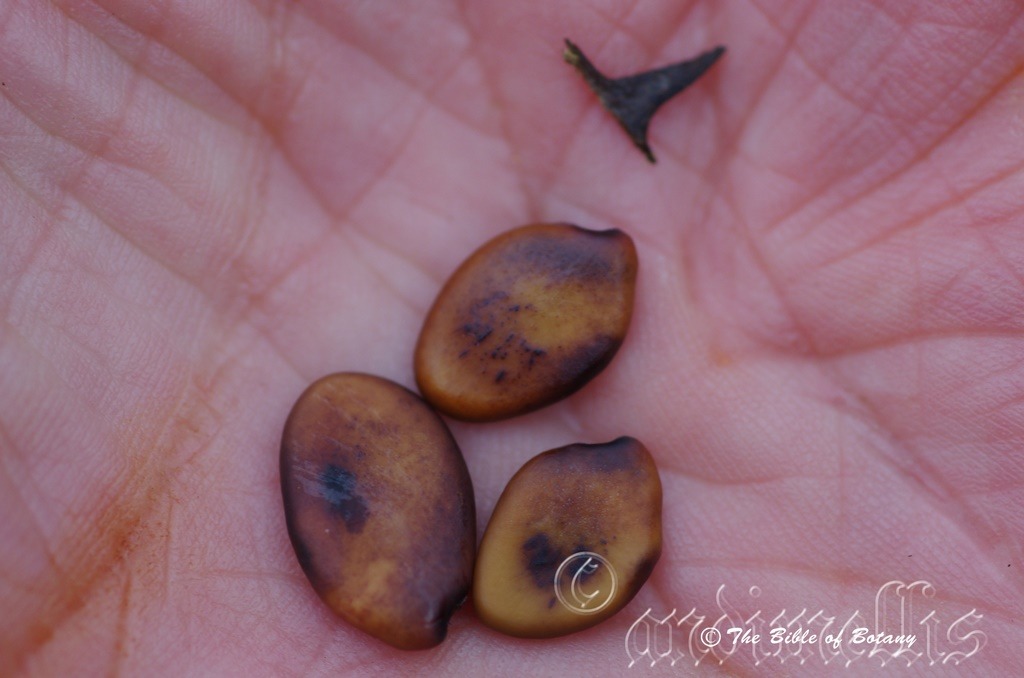
Coffs Harbour Botanic Gardens NSW

Coffs Harbour Botanic Gardens NSW
Bauhinia hookeri
Classification:
Phylum: Eudicots
Class: Rosids
Order: Fabales
Family: Fabaceae
Subfamily: Caesalpinioideae
Tribe: Cericdeae
Genus: Is named in honour of brothers Gaspard Bauhin or Caspar Bauhin; 1560–1624), who was a Swiss botanist whose Phytopinax in 1596 described thousands of plants and classified them in a manner that draws similarities to the binomial nomenclature developed of Linnaeus and Johann/Jean Caspar Bauhin; 1541–1613, who was a Swiss botanist.
Specie: Is named in honour of Joseph Dalton Hooker; 1817–1911, was one of the greatest British botanists and explorers of all times.
Sub specie:
Common Name: Hookers Bauhinia or Butterfly orchid Tree.
Distribution:
Bauhinia hookeri is found south from the southern parts of Cape York Peninsular to Rockhampton. It could be more widespread than any of the maps indicate as few specimens have been recorded or photographed to map accurately.
https://avh.ala.org.au/occurrences/search?taxa=Bauhinia+hookeri+#tab_mapView
Habitat Aspect Climate:
Bauhinia hookeri prefer full sun to dappled shade. It grows in open woodlands, dry Eucalyptus forests, moist Eucalyptus forests or adjacent to monsoonal vine forests. It is also found along dry beach fronts especially behind the frontal dunes. This would indicate that it could be found further north on Cape York Peninsular and further west into the Gulf Country. The altitude ranges from 5 meters ASL to 480 meters ASL
The temperatures range from 6 degrees in July to 39 degrees in January.
The rainfall ranges from lows of 650mm to 1600mm average per annum.
Soil Requirements:
Bauhinia hookeri prefers better quality deep, gravely loams, light stony fatty clays to medium gravely clays. The soils are usually derived from decomposed sandstones, granites, brown basalts, black basalts, shales, metamorphic rocks, alluvial deposits or at times heavier accumulated peaty beach sands. The soil’s pH ranges from 5pH to 7.5pH. It does not tolerate water logged soils. None saline soils to moderately saline soils are tolerated.
Height & Spread:
Wild Plants:12m to 16m by 8m to 12m
Characteristics:
It should be noted that where Bauhinia hookeri grows naturally where the rainfall pattern is lower than those districts being surrounded by high rainfall areas. The temperatures fluctuate more than the surrounding areas as well. That is why it is found in the 6 disjunct areas within Queensland. This is another reason why I believe its distribution is more wide spread than indicated on the map.
Bauhinia hookeri grows as a multi trunk small tree or very large multi stemmed shrub. The boles are about a third of the height of the tree and measure 250mm to 400mm in diameter. The trunk is grey rough and scabrous flaking off in 10mm to 30mm tessellated patches to the medium size branches. Branches are thin pale grey and glabrous to slightly scabrous. The juvenile branchlets and small branchlets, leaves are pale grass green, glabrous and have a slight zig zag as they approach the apex. Leaf scars remain after the leaves have been discarded
Bauhinia hookeri’s alternate bi-compound leaflets are broad reniform and measure 25mm to 40mm in length by 15mm to 30mm in width. The stipules measure 1mm to 1.5 mm in length. The petioles measure 25mm to 40mm in length while the leaflets are sessile. The bases are strongly oblique while the apexes are broadly oblique-obtuse and strongly emarginated between the two lobes. The concolourous laminas are mid blue-green to deep blue-green. The leaf margins are entire. There are 4 to 7 slightly prominent longitudinal veins radiating from the base on the lower lamina. They are barely visible on the upper lamina. Bauhinia hookeri is deciduous at the end of the dry season for a short period of time.
Inflorescences of Bauhinia hookeri are born in short compact racemes which are born from the branchlet terminals and leaf axis. The calyx tube is pale grass green, sparsely covered in short white pubescent hairs and measures 28mm to 36mm in length including the lobes. The 3 long broad linear lobes have a narrow acute apex and measure 7mm to 9mm in length. The corolla tube is sparsely covered in short, white pubescent hairs on the inner and outer surfaces. The 5 lobes are irregular in shape and size. They are orbicular to oblong, spathulate to broad oblanceolate or broad elliptical and measure 16mm to 45mm in length by 15mm to 45mm in width. The white to pale pink corolla lobes are discarded after fertilization, well before the stamens are discarded.
The white stamens turn deep pink to red as they progress towards the anthers. The anthers are deep pink to red with yellow pollen. The style measures 40mm to 55mm in length before fertilization. Once fertilized the ovary which is about mid-way along the length of the style swells outside the perianth tube. The style like the stamens is white and turns deep pink to red as it approaches the bright grass green stigma. The peduncles measure 6.5mm to 9mm in length.
Bauhinia hookeri flowers from the onset of the first rains prior to the leaves reshooting through to the middle of summer. Flowering appears to be more prolific following a prolonged cool dry season period.
The fruits of Bauhinia hookeri are long flat pods. They are slightly restricted between the seeds and measure 70mm to 200mm in length by 30mm to 38mm width and 6mm to 10mm in thickness. The pods have a round base with a broad acute apex while the margins are uniformly square to the flat plane. The style is persistent on the green pods. There are 1 to 5 brown-black seeds in each pod. The peduncle measure 30mm to 60mm in length.
Wildlife:
Bauhinia hookeri’s wildlife is unknown to the author.
Cultivation:
Bauhinia hookeri is a beautiful small tree that would be very suitable for growing in every native or exotic garden. They are ideal in almost every setting at the edge of a rain forest, in sunny court yards, in the rockery or even a semi-arid garden. Under cultivation the trees will grow from 4 meters to 8 meters in height by 7 meters to 10 meters in diameter.
Their versatility doesn’t stop with accepting all types of soils but they can cope with temperatures as low as minus 1 degree and up to 43 degrees. They are drought resistant and can cope with the occasional immersion where periodic down pours may flood the land.
Add to the above, if they are given adequate moisture, plenty of mulch for moisture retention and an even soil temperature, applying native fertilizers on a regular basis the plants will respond with fantastic flowering displays over a long period. I have always been amazed that Bauhinia hookeri is still not being grown outside tropical semi-arid areas. I believe they could be grown as far south as Wollongong and on the west coast as far south as Perth and into marginal areas in semi-arid zones around homesteads.
They are best used as a small park tree, placed in the background or planted centrally as a small feature tree in smaller gardens. Placed at the rear of a bush garden; with all shrubs, their striking display of flowers and perfume will draw your attention so that you will want to investigate further. Plants with small pink, red or lavender flowering plants with small to fine leaves can be used in the midground while small white, pink or mauve flowering prostrate shrubs are best in the front. Whether they are in flower or not these trees will catch your attention because of the beautiful and interesting blue-green bilobed shaped leaves.
If they are surrounded by shorter plants with fine foliage and pink, red or lavender flowers they will dominate at the center giving height and strength to the bed especially when they are in flower. Do not use plants with large leaves as these will be too overpowering and they will blend into each other despite Bauhinia hookeri having bilobed leaves. Planted with a mass of smaller plants and ground covers with mixed coloured flowers and green foliage will ensure a great display during the winter and spring months and for the rest of the year. This would be particularly strong, if a mixture of different finer foliage of different colours and textures are incorporated together. This will give a strong uplifting of central height. Be sure to plant any plant exactly in the center for a formal look or well off to one side for an informal look. 2 or 3 taller shrubs close together to one side of center look even more spectacular when just a single plant is placed on the other side to give balance to the picture.
Mass plant below so the whole bed is covered for a woodland scene or sparsely plant for an arid scene. Mass planting compliments the broad spread of this tree’s habit. Two plants can achieve the same scenario if planted in close proximity and still achieve the sparseness and harshness of the arid picture if the other side is left fairly barren or the shrubs taper off in height to being procumbent at the far edge. Here a few annuals strategically scattered around would complete the picture. The plants planted out below should have a mixture of bold colours radiating out from the base of the trees so use pinks and mauves discreetly below with reds and whites further out. Avoid yellows as they are too much with this scenario.
Another scenario if the area is just large enough to accommodate one tree is to plant the whole area below with small and fine leaf plants whose flowers are a mixture of pale pinks, white and lavenders during the end of the dry season when Bauhinia hookeri is deciduous. This would establish a picture where the trunk and bare branches would be highlighted even more taking advantage of the trees silhouette. The pale coloured flowers would actually draw your attention to the strong outline and give a sense that something is about to explode.
Propagation:
Seeds:
Bauhinia hookerii seeds do not require treatment before sowing. Sow fresh seeds directly into a seed raising mix and cover with 5mm of the mix. When the seedlings are 25 to 50 mm tall, prick them out and plant them into 50mm native tubes using a seed raising mix.
Once the seedlings reach 150 to 200mm in height plant them out into their permanent position. Mass plantings can be achieved with spacing of 2 meters. When planting for the fruit in an orchard, plant the seedlings at 3 meter spacing’s so easy pruning and harvesting can take place.
Cuttings: Use 150mm to 270mm long hardwood cuttings that are taken from dormant, mature stems in late autumn, winter, or early spring. Plants generally are fully dormant with no obvious signs of active growth. The wood is firm and does not bend easily. Hardwood cuttings are used most often when the plants are in a deciduous state of dormancy but can be used when the trees have no signs of any activity.
1 Prepare the cutting mix by adding one third sharp clean river sand, one third peat and one third perlite. These ingredients are sterile,
2 Select good material from non diseased plants,
3 Select previous season stems for cuttings in late winter as the apical buds begin to swell. Look for stems with three or four nodes that are between 10mm and 150mm in length,
4 Place the cutting on a flat, hard surface, and make a clean slice through the middle of the lower node on an angle towards the base, with a sterilized sharp knife or razor blade. – This scarification of the node will increase the chances of roots emerging from this spot. Now remove all but one or two the leaves, leaving the apex leaves in tact. If the leaves are very large in proportion to the stem, cut off the apical halves.
5 Some plants root easily, but a rooting hormone can help others by stimulating the cutting into sending out new roots. Fill a saucer with water, and place some rooting hormone into another container like a bottle top. Dip the node end of the cutting into the water and then into the rooting hormone. Tap off any excess hormone,
6 Use a small dipple stick or old pencil to poke a hole into the soilless potting mix. Ensure the hole is slightly larger than the stem diameter and be careful not to wipe the rooting hormone off the cuttings base, place the cuttings in a pattern ensuring the cuttings are not touching each other,
7 I like to place the pots in Plastic bags to help maintain temperature and moisture. Place in a semi shaded place like under 50mm shade cloth.
8 When the cuttings have struck, open the bag to allow air circulation for a few days to a week,
9 Once hardened off remove the cuttings from the bag and allow to further hardening for a few more days,
10 Transplant into a good potting mix to grow on.
Fertilize using Seaweed, fish emulsion or organic chicken pellets soaked in water on an alternate basis. Fertilize every two months until the plants are established then twice annually in early September or March to maintain better health, vitality and flowering.
Further Comments from Readers:
“Hi reader, it seems you use The Bible of Botany a lot. That’s great as we have great pleasure in bringing it to you! It’s a little awkward for us to ask, but our first aim is to purchase land approximately 1,600 hectares to link several parcels of N.P. into one at The Pinnacles NSW Australia, but we need your help. We’re not salespeople. We’re amateur botanists who have dedicated over 30 years to saving the environment in a practical way. We depend on donations to reach our goal. If you donate just $5, the price of your coffee this Sunday, We can help to keep the planet alive in a real way and continue to bring you regular updates and features on Australian plants all in one Botanical Bible. Any support is greatly appreciated. Thank you.”
In the spirit of reconciliation we acknowledge the Bundjalung, Gumbaynggirr and Yaegl and all aboriginal nations throughout Australia and their connections to land, sea and community. We pay our respect to their Elders past, present and future for the pleasures we have gained.
Bauhinia malabarica
Classification:
Phylum: Eudicots
Class: Rosids
Order: Fabales
Family: Fabaceae
Subfamily: Caesalpinioideae
Tribe: Cericdeae
Genus: Is named in honour of brothers Gaspard Bauhin or Caspar Bauhin; 1560–1624), who was a Swiss botanist whose Phytopinax in 1596 described thousands of plants and classified them in a manner that draws similarities to the binomial nomenclature developed of Linnaeus and Johann/Jean Caspar Bauhin; 1541–1613, who was a Swiss botanist.
Specie: From Malabar, which is Latinized from the local name of the coast in southern India. It refers to where the type specimen was originally found.
Sub specie:
Common Name: Butterfly orchid Tree or Tree Orchid.
Distribution:
Bauhinia malabarica is found east from the Kimberley Range National Park to the Ord River in far northern Western Australia.
The second population is found in the Northern Territory from Darwin east to Kakadu Nation Park and south to Katherine Gorge.
The third disjunct population in Australia is found on the western side of central Cape York Peninsular almost to the east coast in far north eastern Queensland.
https://avh.ala.org.au/occurrences/search?taxa=Bauhinia+malabarica+#tab_mapView
Habitat Aspect Climate:
Bauhinia malabarica prefer full sun to dappled shade. It grows in open woodlands to dry open Eucalypt forests or in and adjacent to monsoonal vine forests. It may be found continuously between the 3 populations. The altitude ranges from 5 meters ASL to 150 meters ASL
The temperatures range from 6 degrees in July to 45 degrees in January.
The rainfall ranges from lows of 1000mm to 2000mm average per annum.
Soil Requirements:
Bauhinia malabarica prefers better quality deep, gravely loams, light stony fatty clays to medium gravely clays. The soils are usually derived from decomposed sandstones, granites, brown basalts, black basalts, shales, metamorphic rocks, alluvial deposits or at times heavier accumulated peaty beach sands. The soil’s pH ranges from 5pH to 7pH. It does not tolerate water logged soils. None saline soils to moderately saline soils are tolerated.
Height & Spread:
Wild Plants:4m to 16m by 3m to 12m
Characteristics:
Bauhinia malarbarica grows as a multitrunked small tree or very large multi stemmed shrub. The boles are about a third of the height of the tree and measure 250mm to 300mm in diameter. The trunk is pale grey to grey-brown rough and scabrous to the medium size branches. Branches are thin pale grey and glabrous to slightly scabrous. The juvenile branchlets and small branchlets where the leaves are pale grass green, glabrous and have a slight zig zag form as they approach the apex. Leaf scars remain after the leaves have been discarded
Bauhinia malarbarica’s alternate bi-compound leaflets are broad reniform and measure 45mm to 90mm in length by 60mm to 110mm in width. The base is strongly oblique while the apex is broadly oblique-obtuse and strongly emarginated between the two lobes. The concolourous laminas are mid blue-green to deep blue-green and glabrous on the upper lamina while the lower lamina is sparsely covered in short white to fawn puberulent hairs. The leaf margins are entire. There are 9 to 11 slightly prominent longitudinal veins radiating from the base on the lower lamina. Some are clearly visible on the upper lamina. The petioles measure 25mm to 40mm in length while the leaflets are sessile. The stipules are covered in fawn hirsute hairs and measure 1mm to 1.5 mm in length.
Inflorescences of Bauhinia malarbarica are clustered or born in short racemes which are born from the branchlet terminals and leaf axis. The rachises and pedicels are grass-green to pale olive-green and covered in white to fawn hirsute hairs. The rachises on the racemes 0mm to 35mm in length while the pedicels measure 15mm to 22mm in length. The calyx tube is pale grass green, densely covered in short white to fawn hirsute hairs and measures 15mm to 18mm in length including the lobes. The 5 acute to acuminate lobes measure 3mm to 6mm in length. The corolla tube is sparsely covered in short, white pubescent hairs on the inner and outer surfaces. The campanulate corollas measure 12mm to 20mm in length by 6mm to 12mm in diameter. The white to cream corolla and lobes are discarded after anthesis, well before the stamens. The divaricate lobes measure 4mm to 7.5mm in length.
The numerous inserted white or cream stamens are alternating large and small and measure 8mm to 15mm in length. The anthers are cream.
The cream pistil measures 11mm to 18mm in length. The long, cream peltate stigma is the same diameter as the style.
Bauhinia malarbarica flowers from the onset of the first rains prior to the leaves reshooting through to the middle of summer. Flowering appears to be more prolific following a prolonged cool dry season period.
The fruits of Bauhinia hookeri are long flat pods. They are slightly restricted between the seeds and measure 170mm to 350mm in length by 15mm to 25mm width and 6mm to 10mm in thickness. The pods have a round base with a broad acute apex while the margins are uniformly square to the flat plane. The green pods turn deep brown-black when ripe. The style is persistent on the pods. There are 1 to 5 deep brown-black flattened ovate seeds in each pod. They measure 7mm to 9mm in length by 6mm to 8mm in width and 3mm to 4mm in depth.
Wildlife:
Bauhinia malarbarica’s wildlife is unknown to the author.
Cultivation:
Bauhinia malarbarica is a beautiful small tree that would be very suitable for growing in every native or exotic garden. It is ideal in almost every setting at the edge of a rain forest, in sunny court yards, in the rockery or even a semi-arid garden. Under cultivation the trees will grow from 4 meters to 6 meters in height by 4 meters to 6 meters in diameter as a large multi trunk shrub or 10 meters to 12 meters tall by 8 meters to 10 meters as a single trunk tree.
Its versatility doesn’t stop with accepting all types of soils but they can cope with temperatures as low as 4 degree and up to 45 degrees. They are drought resistant and can cope with the occasional immersion where periodic down pours may flood the land.
Add to the above, if it is given adequate moisture, plenty of mulch for moisture retention and an even soil temperature, applying native fertilizers on a regular basis the plants will respond with fantastic flowering displays over a long period. I have always been amazed that Bauhinia malabarica is still not being grown outside tropical, semi-arid areas. I believe they could be grown as far south as Brisbane and on the west coast as far south as Perth and into marginal areas in semi-arid zones around homesteads.
It is best used as a small park tree, placed in the background or planted centrally as a small feature tree in smaller gardens. Placed at the rear of a bush garden; with all shrubs, their striking display of flowers and perfume will draw your attention so that you will want to investigate further. Plants with small pink, red or lavender flowering plants with small to fine leaves can be used in the midground while small white, pink or mauve flowering prostrate shrubs are best in the front. Whether they are in flower or not these trees will catch your attention because of the beautiful and interesting dull blue-green bi lobed leaves.
If it is surrounded by shorter plants with fine foliage and pink, red or lavender flowers they will dominate at the center giving height and strength to the bed especially when they are in flower. Do not use plants with large leaves as these will be too overpowering and they will blend into each other despite Bauhinia hookeri having bilobed leaves. Planted with a mass of smaller plants and ground covers with mixed coloured flowers and green foliage will ensure a great display during the winter and spring months and for the rest of the year. This would be particularly strong, if a mixture of different finer foliage of different colours and textures are incorporated together. This will give a strong uplifting of central height. Be sure to plant any plant exactly in the center for a formal look or well off to one side for an informal look. 2 or 3 taller shrubs close together to one side of center look even more spectacular when just a single plant is placed on the other side to give balance to the picture.
Mass plant below so the whole bed is covered for a woodland scene or sparsely plant for an arid scene. Mass planting compliments the broad spread of this tree’s habit. Two plants can achieve the same scenario if planted in close proximity and still achieve the sparseness and harshness of the arid picture if the other side is left fairly barren or the shrubs taper off in height to being procumbent at the far edge. Here a few annuals strategically scattered around would complete the picture. The plants planted out below should have a mixture of bold colours radiating out from the base of the trees so use pinks and mauves discreetly below with reds and whites further out. Avoid yellows as they are too much with this scenario.
Propagation:
Seeds:
Bauhinia malarbarica seeds do not require treatment before sowing. Sow fresh seeds directly into a seed raising mix and cover with 5mm of the mix. When the seedlings are 25 to 50 mm tall, prick them out and plant them into 50mm native tubes using a seed raising mix.
Once the seedlings reach 150 to 200mm in height plant them out into their permanent position. Mass plantings can be achieved with spacing of 2 meters. When planting for the fruit in an orchard, plant the seedlings at 3 meter spacings so easy pruning and harvesting can take place.
Cuttings: Use 150mm to 270mm long hardwood cuttings that are taken from dormant, mature stems in late autumn, winter, or early spring. Plants generally are fully dormant with no obvious signs of active growth. The wood is firm and does not bend easily. Hardwood cuttings are used most often when the plants are in a deciduous state of dormancy but can be used when the trees have no signs of any activity.
1 Prepare the cutting mix by adding one third sharp clean river sand, one third peat and one third perlite. These ingredients are sterile,
2 Select good material from non diseased plants,
3 Select previous season stems for cuttings in late winter as the apical buds begin to swell. Look for stems with three or four nodes,
4 Place the cutting on a flat, hard surface, and make a clean slice through the middle of the lower node on an angle towards the base, with a sterilized sharp knife or razor blade. – This scarification of the node will increase the chances of roots emerging from this spot. Now remove all but one or two the leaves, leaving the apex leaves in tact. If the leaves are very large in proportion to the stem, cut off the apical halves.
5 Some plants root easily, but a rooting hormone can help others by stimulating the cutting into sending out new roots. Fill a saucer with water, and place some rooting hormone into another container like a bottle top. Dip the node end of the cutting into the water and then into the rooting hormone. Tap off any excess hormone,
6 Use a small dipple stick or old pencil to poke a hole into the soilless potting mix. Ensure the hole is slightly larger than the stem diameter and be careful not to wipe the rooting hormone off the cuttings base, place the cuttings in a pattern ensuring the cuttings are not touching each other,
7 I like to place the pots in Plastic bags to help maintain temperature and moisture. Place in a semi shaded place like under 50mm shade cloth.
8 When the cuttings have struck, open the bag to allow air circulation for a few days to a week,
9 Once hardened off remove the cuttings from the bag and allow to further hardening for a few more days,
10 Transplant into a good potting mix to grow on.
Fertilize using Seaweed, fish emulsion or organic chicken pellets soaked in water on an alternate basis. Fertilize every two months until the plants are established then twice annually in early September or March to maintain better health, vitality and flowering.
Further Comments from Readers:
“Hi reader, it seems you use The Bible of Botany a lot. That’s great as we have great pleasure in bringing it to you! It’s a little awkward for us to ask, but our first aim is to purchase land approximately 1,600 hectares to link several parcels of N.P. into one at The Pinnacles NSW Australia, but we need your help. We’re not salespeople. We’re amateur botanists who have dedicated over 30 years to saving the environment in a practical way. We depend on donations to reach our goal. If you donate just $5, the price of your coffee this Sunday, We can help to keep the planet alive in a real way and continue to bring you regular updates and features on Australian plants all in one Botanical Bible. Any support is greatly appreciated. Thank you.”
In the spirit of reconciliation we acknowledge the Bundjalung, Gumbaynggirr and Yaegl and all aboriginal nations throughout Australia and their connections to land, sea and community. We pay our respect to their Elders past, present and future for the pleasures we have gained.
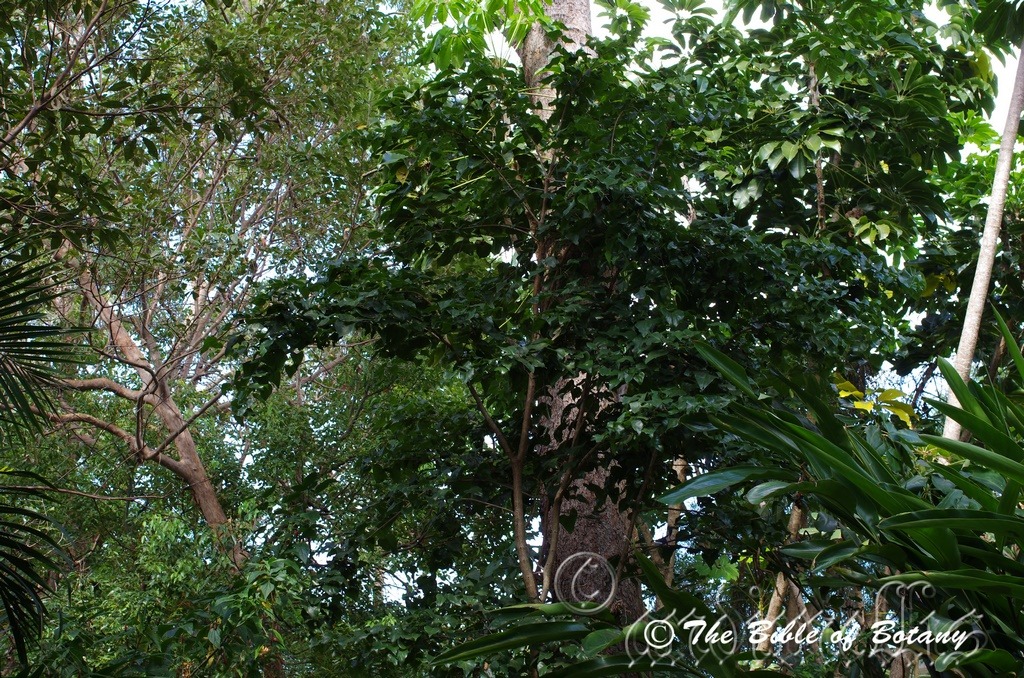
Grange Qld.
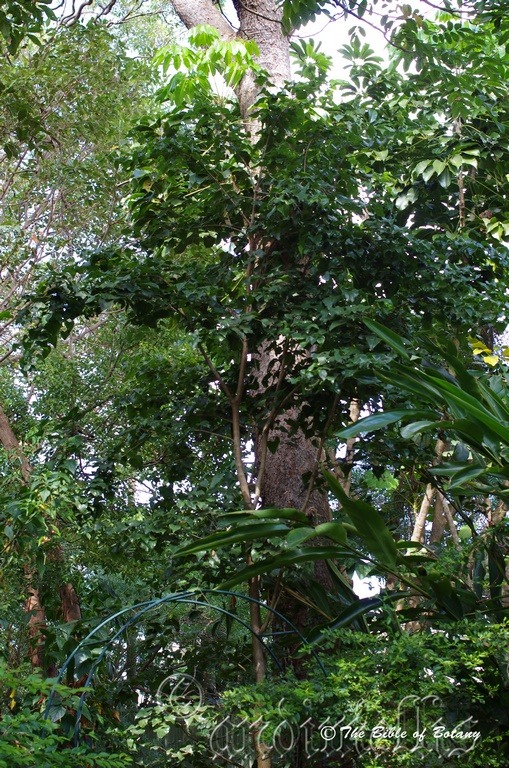
Grange Qld.

Grange Qld.
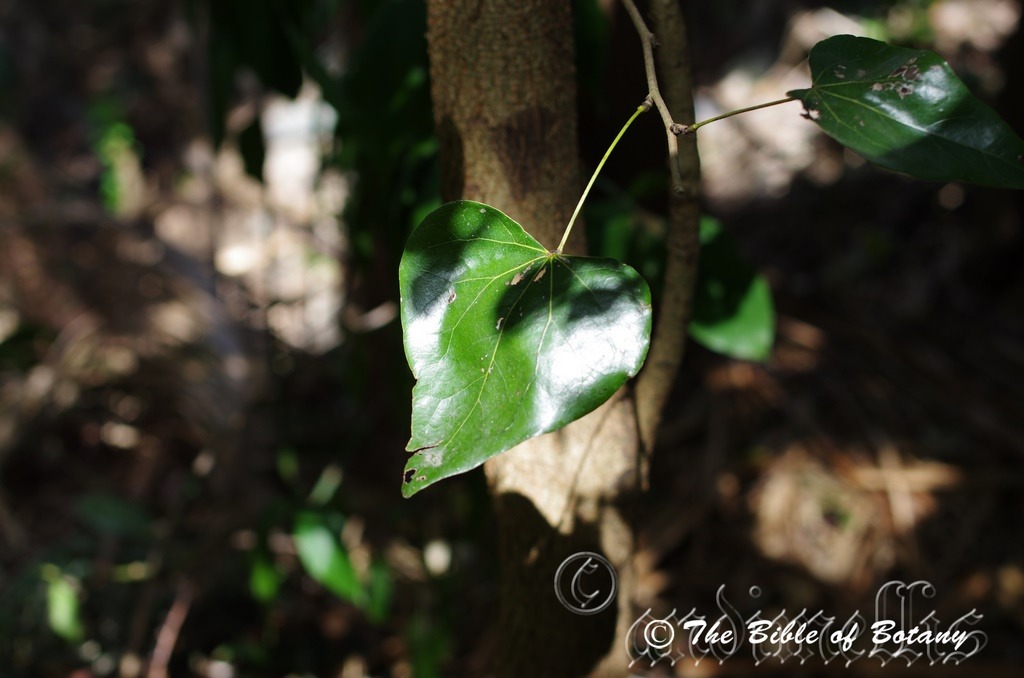
Grange Qld.
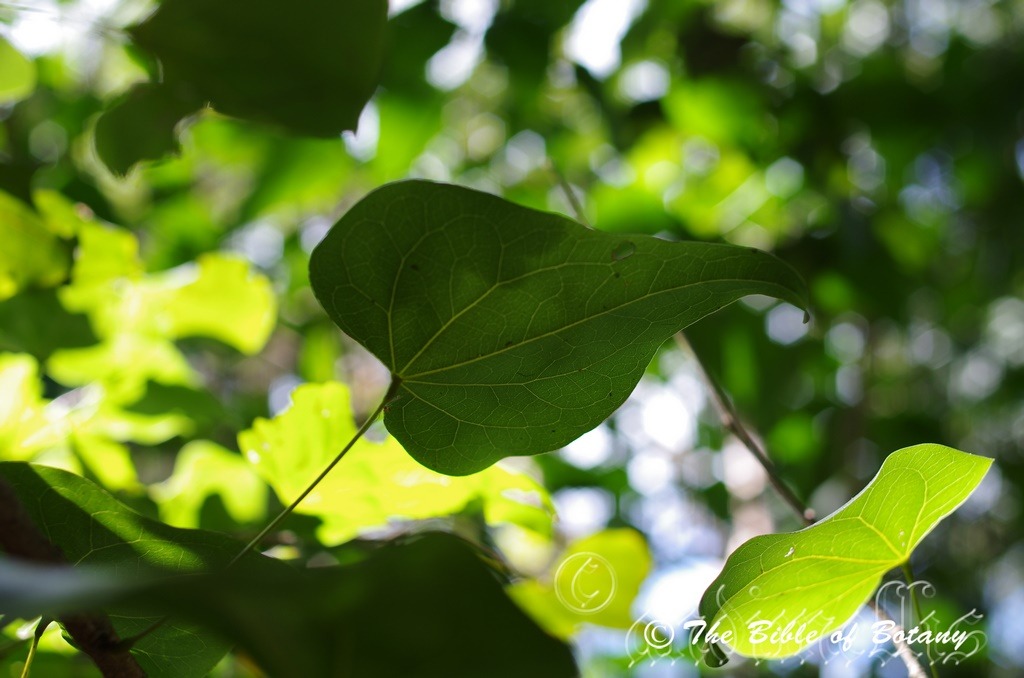
Grange Qld.
Bauhinia syringifolia
Classification:
Phylum: Eudicots
Class: Rosids
Order: Fabales
Family: Fabaceae
Subfamily: Caesalpinioideae
Tribe: Cericdeae
Genus: Is named in honour of brothers Gaspard Bauhin or Caspar Bauhin; 1560–1624), who was a Swiss botanist whose Phytopinax in 1596 described thousands of plants and classified them in a manner that draws similarities to the binomial nomenclature developed of Linnaeus and Johann/Jean Caspar Bauhin; 1541–1613, who was a Swiss botanist.
Specie: From Sy?ring, which is Ancient Greek for the ancient name of the Mock Orange and Folium, which is Latin for foliage. It refers to plants, which belong to the ancient Syringa genus that typically had hollow stems.
Sub specie:
Common Name: Leather Jacket.
Distribution:
Bauhinia syringifolia is found south from Rockhampton to near the Queensland, New South Wales border. Bauhinia syringifolia could be more widespread than any of the maps indicates as few specimens have been recorded or photographed to map it accurately.
https://avh.ala.org.au/occurrences/search?taxa=Bauhinia+syringifolia+#tab_mapView
Habitat Aspect Climate:
Bauhinia syringifolia prefer full sun to dappled shade. It grows in open woodlands to dry Eucalypt forests, moist Eucalypt forests or in dry rainforests. The altitude ranges from 5 meters ASL to 450 meters ASL.
The temperatures range from minus 2 degrees in July to 36 degrees in January.
The rainfall ranges from lows of 800mm to 1200mm average per annum.
Soil Requirements:
Bauhinia syringifolia prefers better quality deep, gravely loams, light stony fatty clays to medium gravely clays. The soils are usually derived from decomposed sandstones, granites, brown basalts, black basalts, shales, metamorphic rocks, alluvial deposits or at times heavier accumulated peaty beach sands. The soil’s pH ranges from 5pH to 7pH. It does not tolerate water logged soils. None saline soils to moderately saline soils are tolerated.
Height & Spread:
Wild Plants:12m to 18m by 10m to 15m
Characteristics:
Bauhinia syringifolia grows as a multi trunk small tree or as a large multi stemmed shrub. The boles are about a half of the height of the tree and measure 250mm to 400mm in diameter. The trunk is grey rough and scabrous flaking off in 10mm to 30mm tessellated patches to the medium size branches. Branches are thin pale grey and glabrous to slightly scabrous. The juvenile branchlets and small branchlets where the leaves are pale grass green, semi glossy to glossy and have a slight zig zag as they approach the apex. Leaf scars remain after the leaves have been discarded
Bauhinia syringifolia’s alternate, bi-compound leaflets are cordate to strongly heart shape and measure 30mm to 90mm in length by 30mm to 90mm in width. The base is strongly emarginate with each side being obtuse while the apex is broadly and shortly rounded or rarely acuminate. The discolourous laminas are mid green to mid-grass green and semi glossy to glossy on the upper laminas while the lower laminas are slightly paler and covered in short golden, caduceus, hirtellous hairs. The leaf margins are entire. There are 7 slightly prominent longitudinal veins radiating from the base on the lower lamina. They are barely visible on the upper lamina. The petioles measure 20mm to 75mm in length. The ovate to rounded stipules measure 1mm to 1.5 mm in length. The juvenile foliage is glossy and bronze.
Inflorescences of Bauhinia syringifolia are born in short compact racemes which are born from the branchlet terminals and leaf axis. The rachis measure 50mm to 150mm in length. The caduceus calyx bracts are ovate to lanceolate and measure 1.5mm to 2mm in length. The calyx tube is pale yellow-green to pale orange-green, glabrous and measures 1.5mm to 3.5mm in length. The 3 short glabrous obtuse lobes measure less than 0.5mm in length. The 5 bright yellow to bright yellow-orange petals turn deep orange as they mature are obovate and measure 2mm to 4mm in length by 2mm to 4mm in width with a 2mm to 4mm claw.
The 10 yellow-orange stamens measure 4mm to 8mm in length. The yellow-orange anthers measure 1.5mm to 2mm in length.
The yellow-orange style measures 8mm to 9mm in length before fertilization. Once fertilized the ovary which is about mid-way along the length of the style swells outside the perianth tube. The style and stigma are bright yellow while the stigma is narrow blunt. The peduncles measure 1.5mm to 3mm in length.
Flowers appear from late October to early January.
The fruits of Bauhinia syringifolia are oblong, flat, falcate pods which ripen from late February to early May. The green pods turn a rusty red-brown, are semi glossy and are covered in fine reticulated veins. They are slightly restricted between the seeds and measure 30mm to 45mm in length by 10mm to 15mm width and 2mm to 3mm in thickness. The pods have a round base with a broad round apex with a mucronate tip. The margins are entire. The style is persistent on the green pods. There are 1 or 2 rarely 3 brown-black seeds in each pod. The ovoid seeds measure 3mm to 5mm in length by 2.5mm to 4mm in width. The peduncle measure 30mm to 60mm in length.
Wildlife:
Bauhinia syringifolia is host to a myriad of small butterflies, native pollen flies, stingless wasps and native bees when in flower.
Cultivation:
Bauhinia syringifolia is a beautiful small tree that would be very suitable for growing in every native or exotic garden looking for a deep yellow-orange flowering small tree. It is ideal in almost every setting at the edge of a rain forest, for developing a dry rain forest or in sunny court yards. Under cultivation the trees will grow from 10 meters to 14 meters in height by 5 meters to 8 meters in diameter in a rainforest situation or 6 meters to 8 meters tall by 6 meters to 8 meters in diameter in an open situation. It is a very densely foliaged small tree.
Its versatility doesn’t stop with accepting all types of soils but they can cope with temperatures as low as minus 6 degree though some burning and set back will occur. Temperatures exceeding 40 degrees are also accepted by the plants. They are drought resistant and can cope with the occasional immersion where periodic down pours may flood the land.
Add to the above, if it is given adequate moisture, plenty of mulch for moisture retention and an even soil temperature, applying native fertilizers on a regular basis the plants will respond with fantastic flowering displays over a long period. I have always been amazed that Bauhinia syringifolia is still not widely accepted in Australia as it is a spectacular small flowering tree with magnificent glossy foliage. I believe it could be grown as far south as Adelaide and on the west coast as far south as Perth and into better semi-arid zones around homesteads.
It is best used as a small park tree, placed in the background or planted centrally as a small feature tree in smaller gardens. Placed at the rear of a bush garden; with all shrubs, their striking display of flowers will draw your attention so that you will want to investigate further. Plants with small pink, red or lavender flowering plants with small to fine grey-green, glaucous or silvery foliage can be used in the midground while small white, pink or mauve flowering prostrate shrubs are best in the front. Avoid yellows, oranges and reds which flower at the same time. Whether they are in flower or not these trees will catch your attention because of the beautiful and interesting glossy heart shaped leaves.
If It is surrounded by shorter plants with fine foliage and pink, red or lavender flowers they will dominate at the center giving height and strength to the bed especially when they are in flower. Do not use plants with large glossy green leaves as these will be too overpowering and they will blend into each other despite Bauhinia syringifolia having heart shaped leaves. Planted with a mass of smaller plants and ground covers with mixed coloured flowers and green foliage will ensure a great display during the spring and early summer months and for the rest of the year. This would be particularly strong, if a mixture of different finer foliage of different colours and textures are incorporated together. This will give a strong uplifting of central height. Be sure to plant any plant exactly in the center for a formal look or well off to one side for an informal look. 2 or 3 taller shrubs close together to one side of center look even more spectacular when just a single plant is placed on the other side to give balance to the picture.
Mass plant below so the whole bed is covered for a woodland scene or sparsely plant for an arid scene. Mass planting compliments the broad spread of this tree’s habit. Two plants can achieve the same scenario if planted in close proximity and still achieve the sparseness and harshness of the arid picture if the other side is left fairly barren or the shrubs taper off in height to being procumbent at the far edge. Here a few annuals strategically scattered around would complete the picture. The plants planted out below should have a mixture of pastel colours radiating out from the base of the trees so use pinks and mauves in abundance below with reds, yellows and oranges when the trees are not in flower. Avoid reds, yellows and oranges as they will clash and look sickly with this tree.
The only drawback to this magnificent tree is the time it takes to flower. From seed you may have to wait for 10 or 12 years as we had to at Nana Glen and my daughter is still waiting for her first flowering after 14 years but the wait was definitely worth it.
Propagation:
Seeds:
Bauhinia syringifolia seeds do not require treatment before sowing. Sow fresh seeds directly into a seed raising mix and cover with 5mm of the mix. When the seedlings are 25 to 50 mm tall, prick them out and plant them into 50mm native tubes using a seed raising mix.
Once the seedlings reach 150 to 200mm in height plant them out into their permanent position. Mass plantings can be achieved with spacing of 2 meters. When planting for the fruit in an orchard, plant the seedlings at 3 meter spacings so easy pruning and harvesting can take place.
Cuttings: Use 150mm to 270mm long hardwood cuttings that are taken from dormant, mature stems in late autumn, winter, or early spring. Plants generally are fully dormant with no obvious signs of active growth. The wood is firm and does not bend easily. Hardwood cuttings are used most often when the plants are in a deciduous state of dormancy but can be used when the trees have no signs of any activity.
1 Prepare the cutting mix by adding one third sharp clean river sand, one third peat and one third perlite. These ingredients are sterile,
2 Select good material from non diseased plants,
3 Select previous season stems for cuttings in late winter or early spring as the apical buds begin to swell. Look for stems with three or four nodes,
4 Place the cutting on a flat, hard surface, and make a clean slice through the middle of the lower node on an angle towards the base, with a sterilized sharp knife or razor blade. – This scarification of the node will increase the chances of roots emerging from this spot. Now remove all but one or two the leaves, leaving the apex leaves in tact. If the leaves are very large in proportion to the stem, cut off the apical halves.
5 Some plants root easily, but a rooting hormone can help others by stimulating the cutting into sending out new roots. Fill a saucer with water, and place some rooting hormone into another container like a bottle top. Dip the node end of the cutting into the water and then into the rooting hormone. Tap off any excess hormone,
6 Use a small dipple stick or old pencil to poke a hole into the soilless potting mix. Ensure the hole is slightly larger than the stem diameter and be careful not to wipe the rooting hormone off the cuttings base, place the cuttings in a pattern ensuring the cuttings are not touching each other,
7 I like to place the pots in Plastic bags to help maintain temperature and moisture. Place in a semi shaded place like under 50mm shade cloth.
8 When the cuttings have struck, open the bag to allow air circulation for a few days to a week,
9 Once hardened off remove the cuttings from the bag and allow to further hardening for a few more days,
10 Transplant into a good potting mix to grow on.
Fertilize using Seaweed, fish emulsion or organic chicken pellets soaked in water on an alternate basis. Fertilize every two months until the plants are established then twice annually in early September or March to maintain better health, vitality and flowering.
Further Comments from Readers:
“Hi reader, it seems you use The Bible of Botany a lot. That’s great as we have great pleasure in bringing it to you! It’s a little awkward for us to ask, but our first aim is to purchase land approximately 1,600 hectares to link several parcels of N.P. into one at The Pinnacles NSW Australia, but we need your help. We’re not salespeople. We’re amateur botanists who have dedicated over 30 years to saving the environment in a practical way. We depend on donations to reach our goal. If you donate just $5, the price of your coffee this Sunday, We can help to keep the planet alive in a real way and continue to bring you regular updates and features on Australian plants all in one Botanical Bible. Any support is greatly appreciated. Thank you.”
In the spirit of reconciliation we acknowledge the Bundjalung, Gumbaynggirr and Yaegl and all aboriginal nations throughout Australia and their connections to land, sea and community. We pay our respect to their Elders past, present and future for the pleasures we have gained.